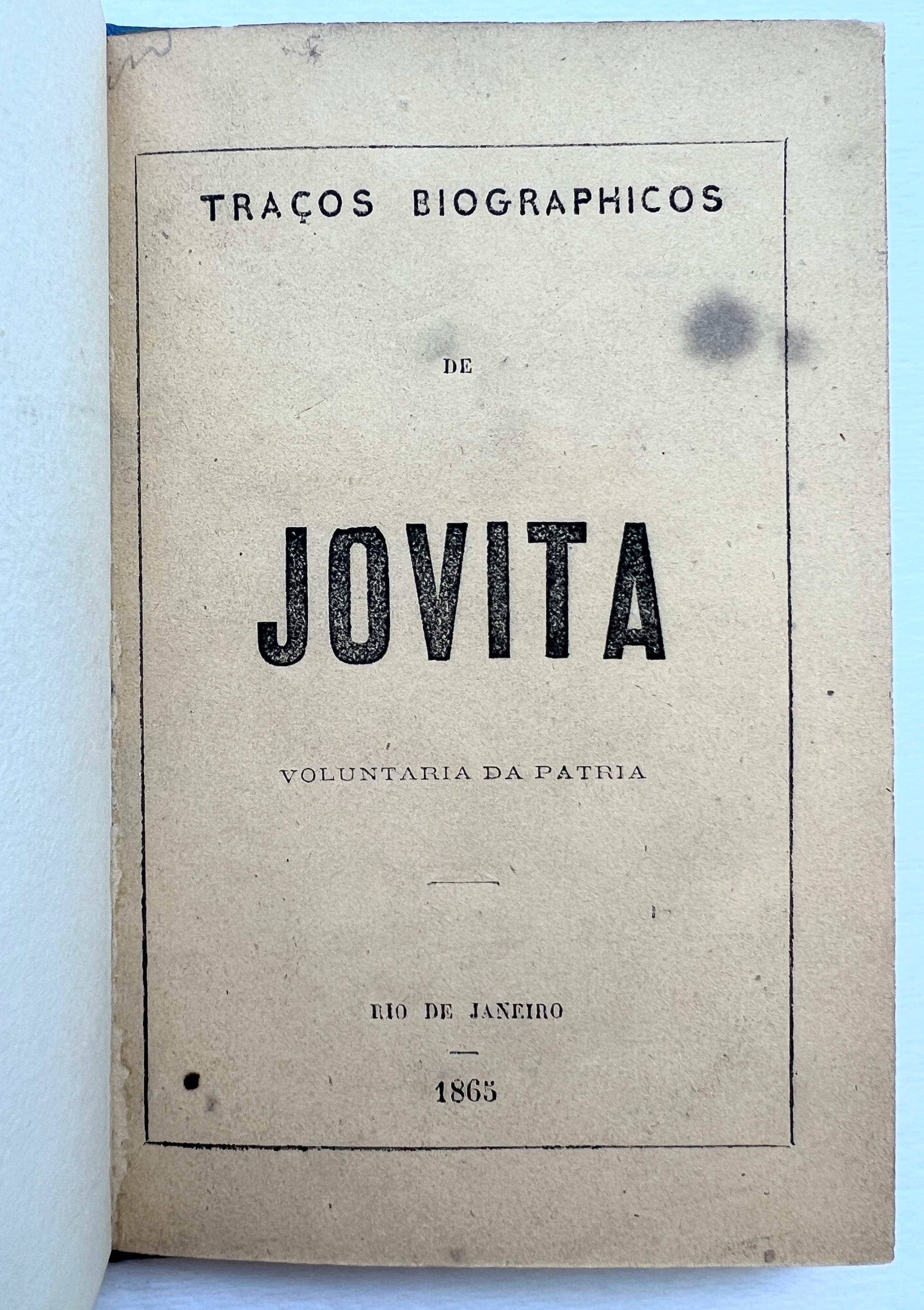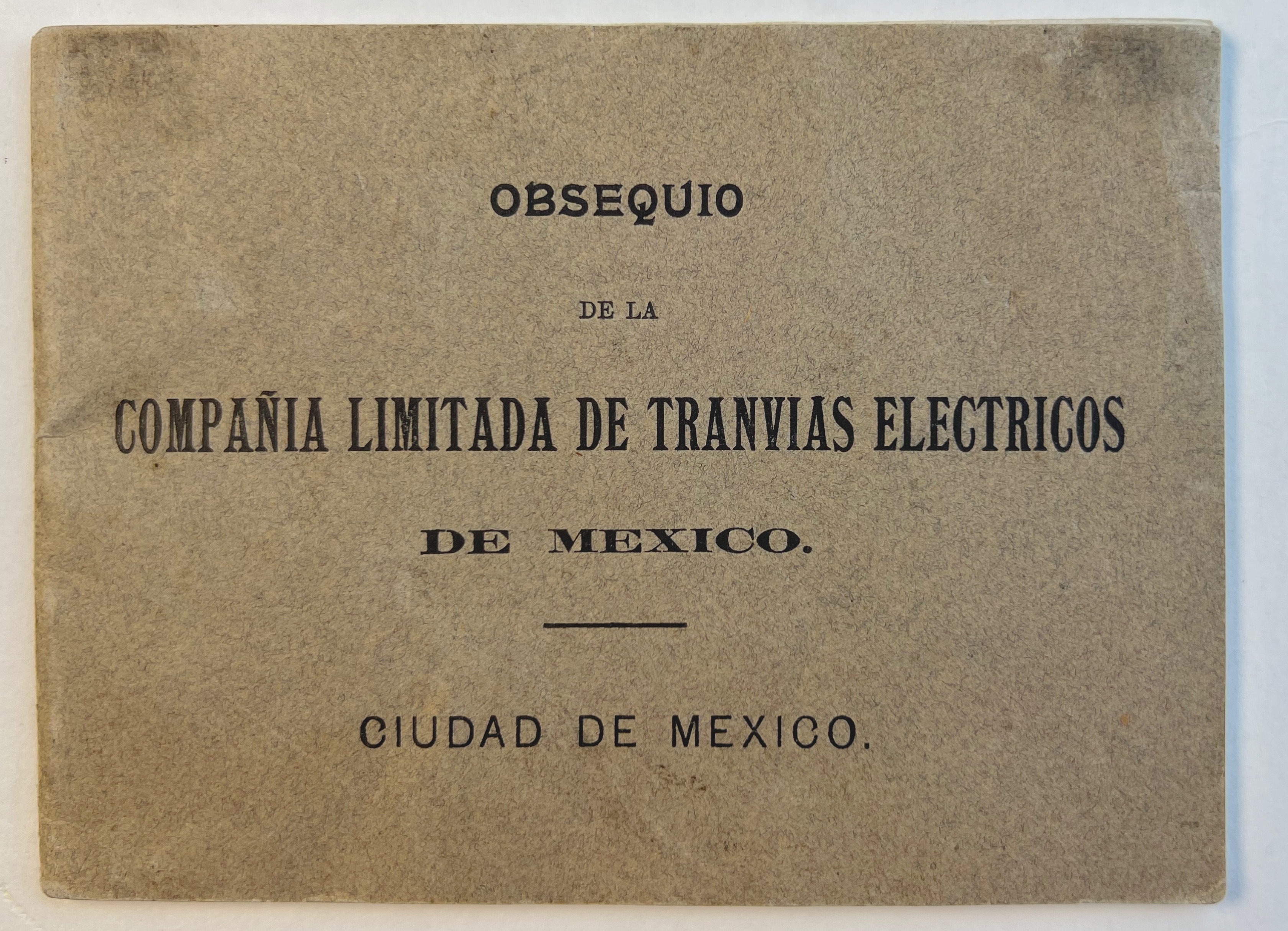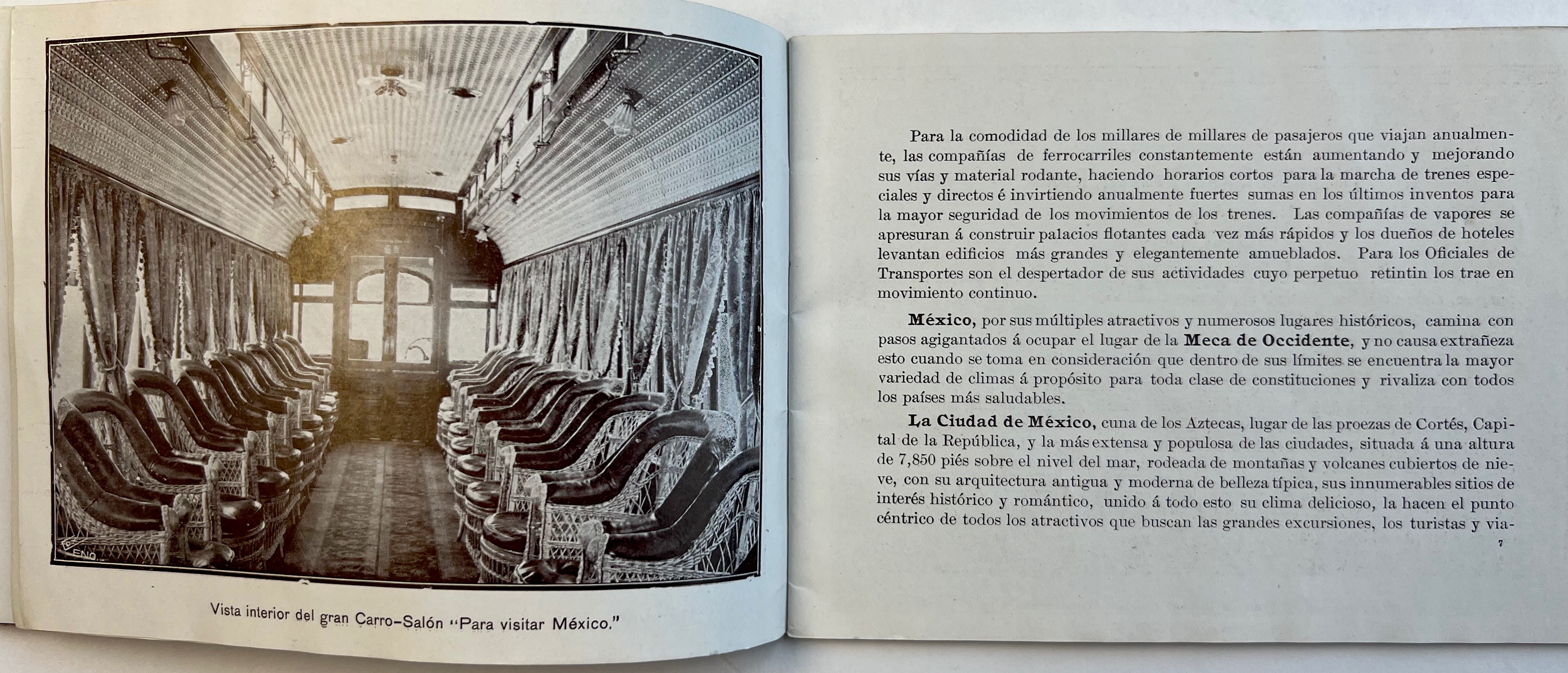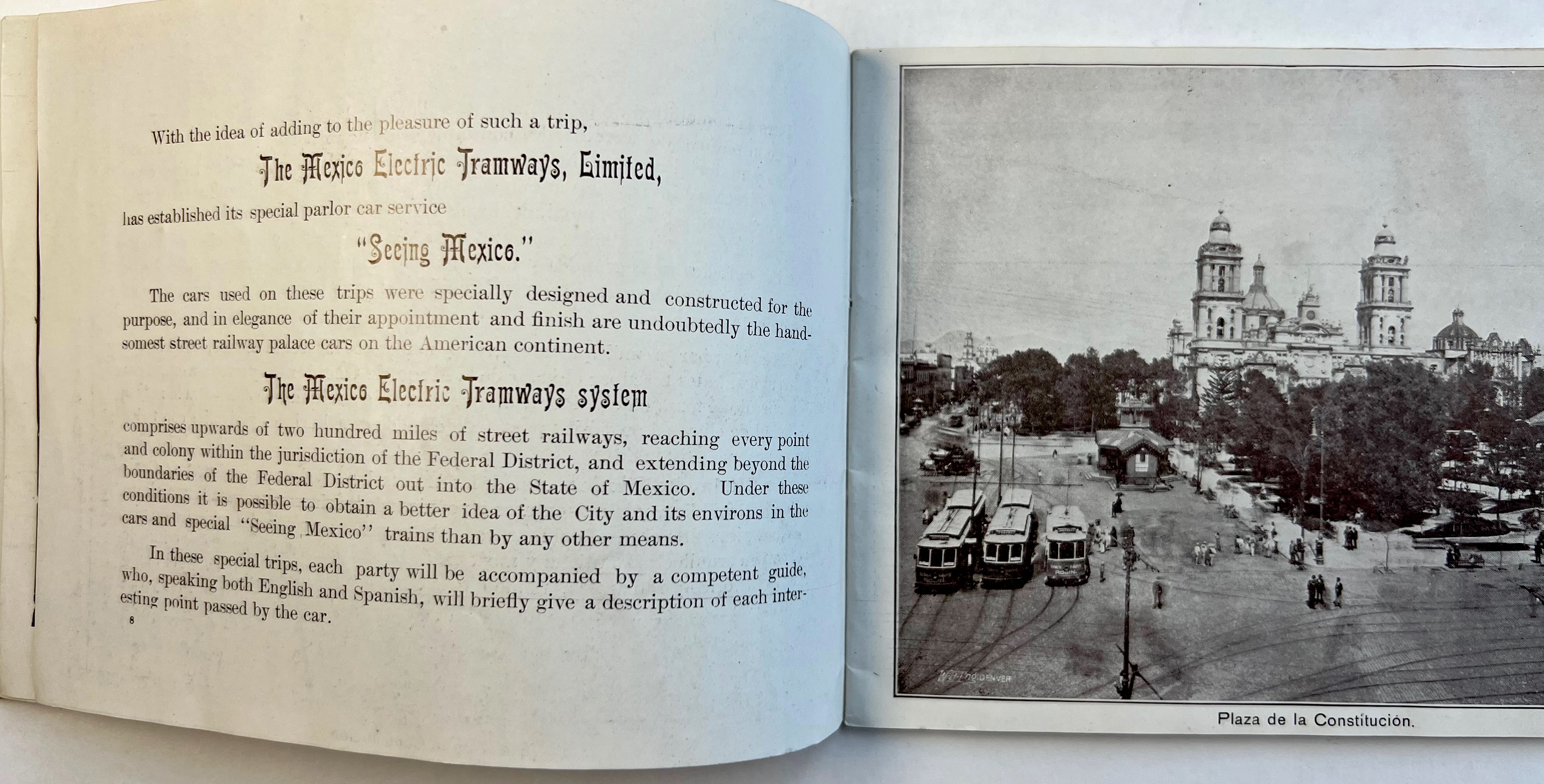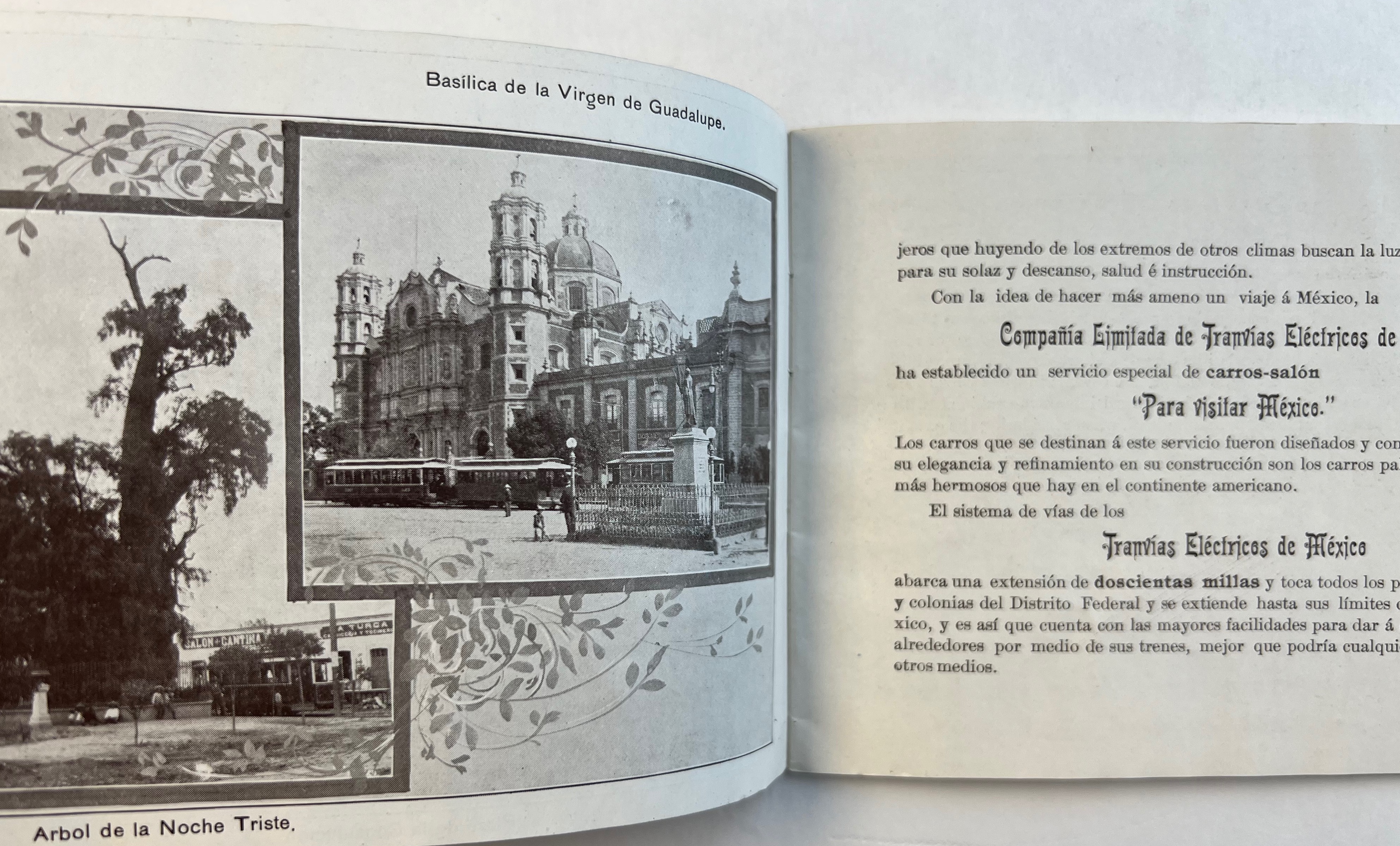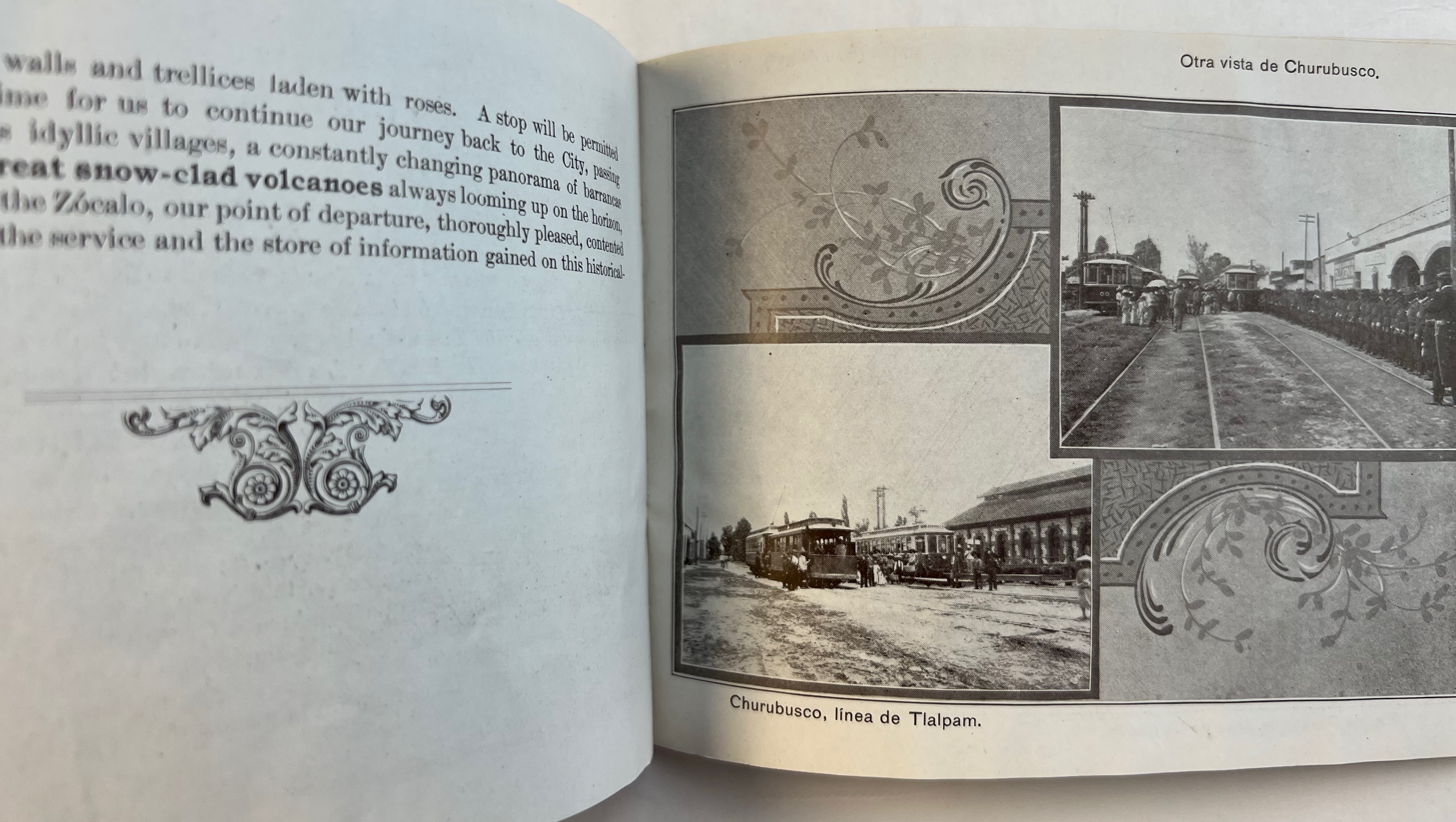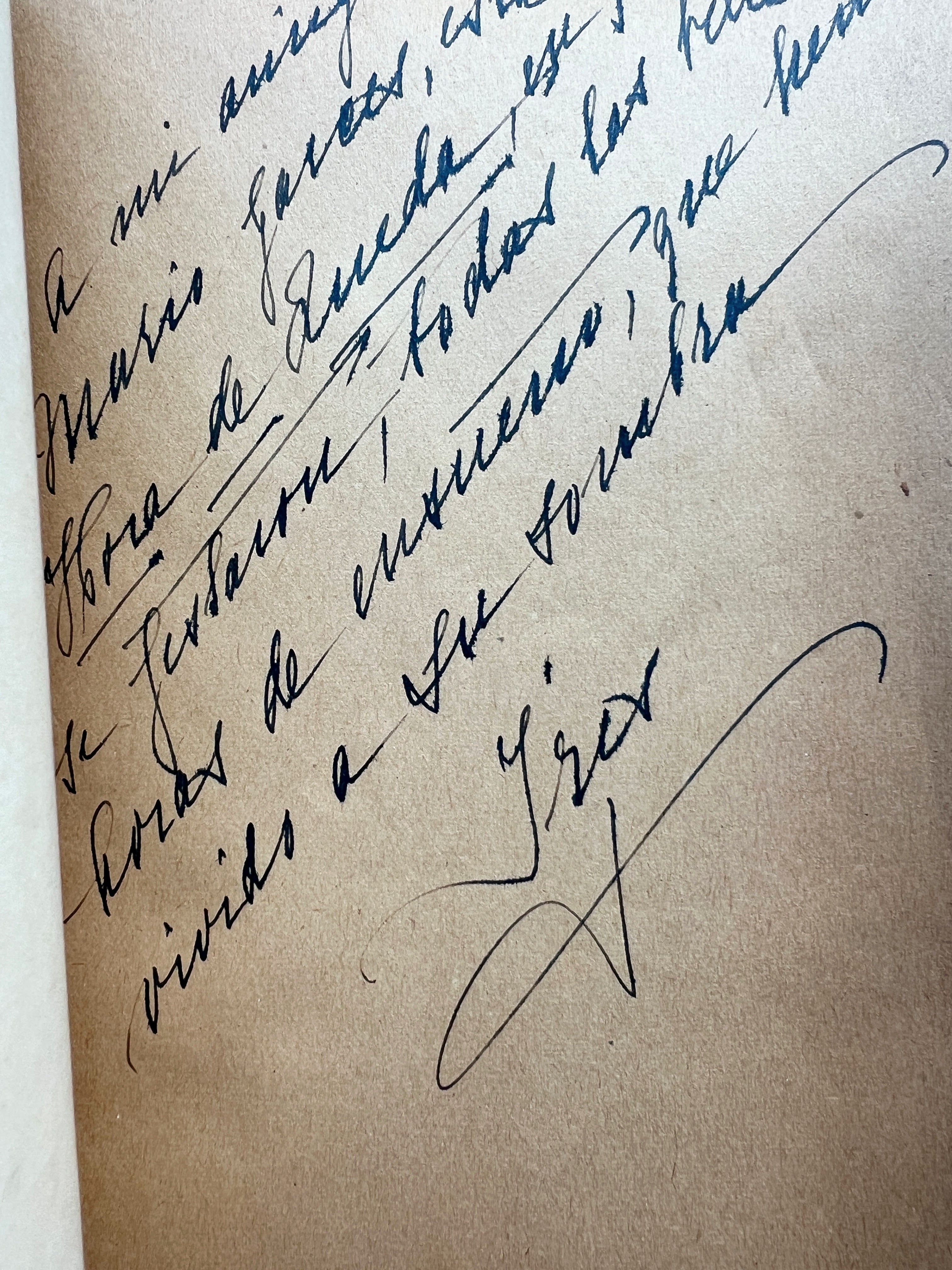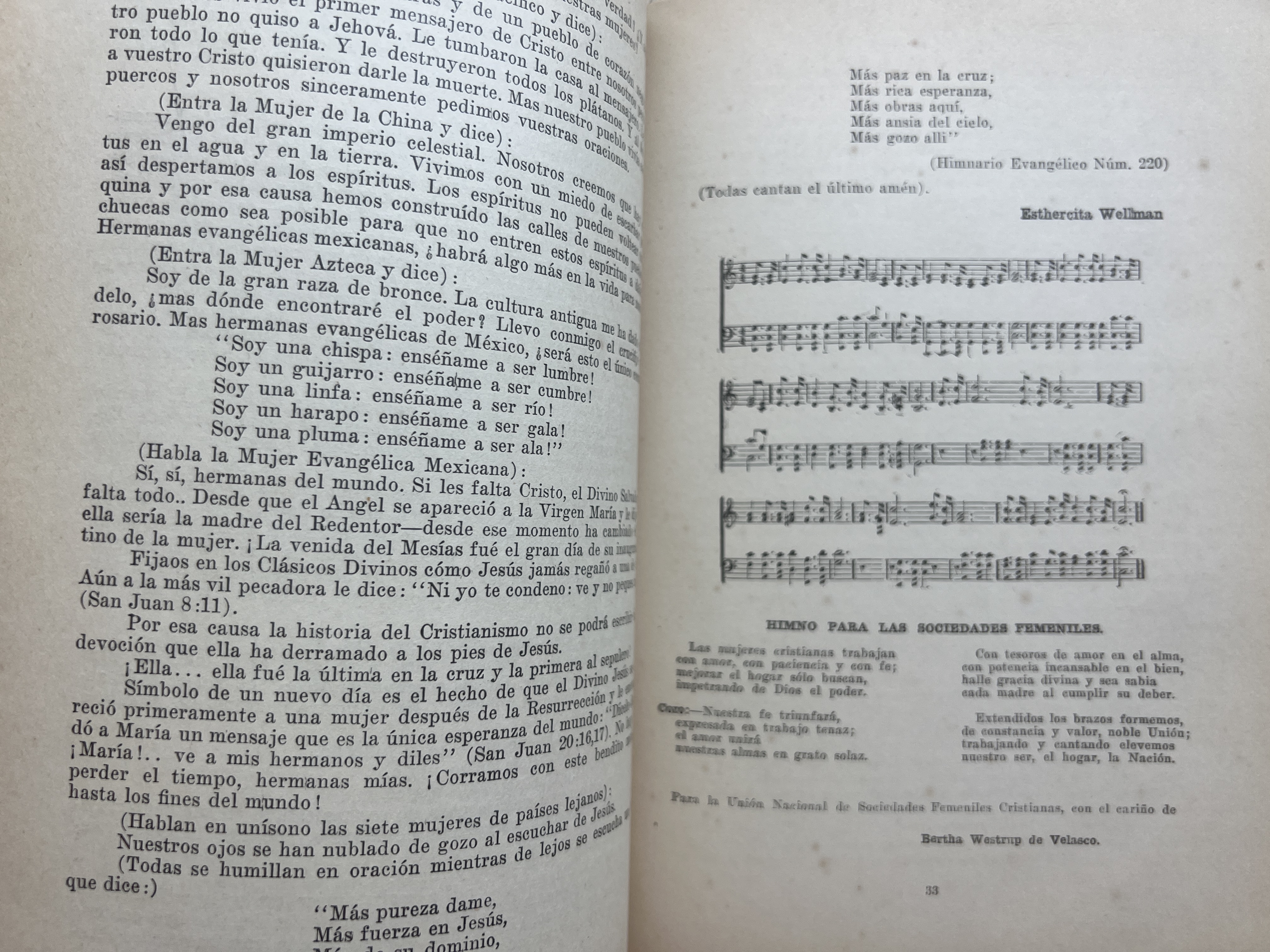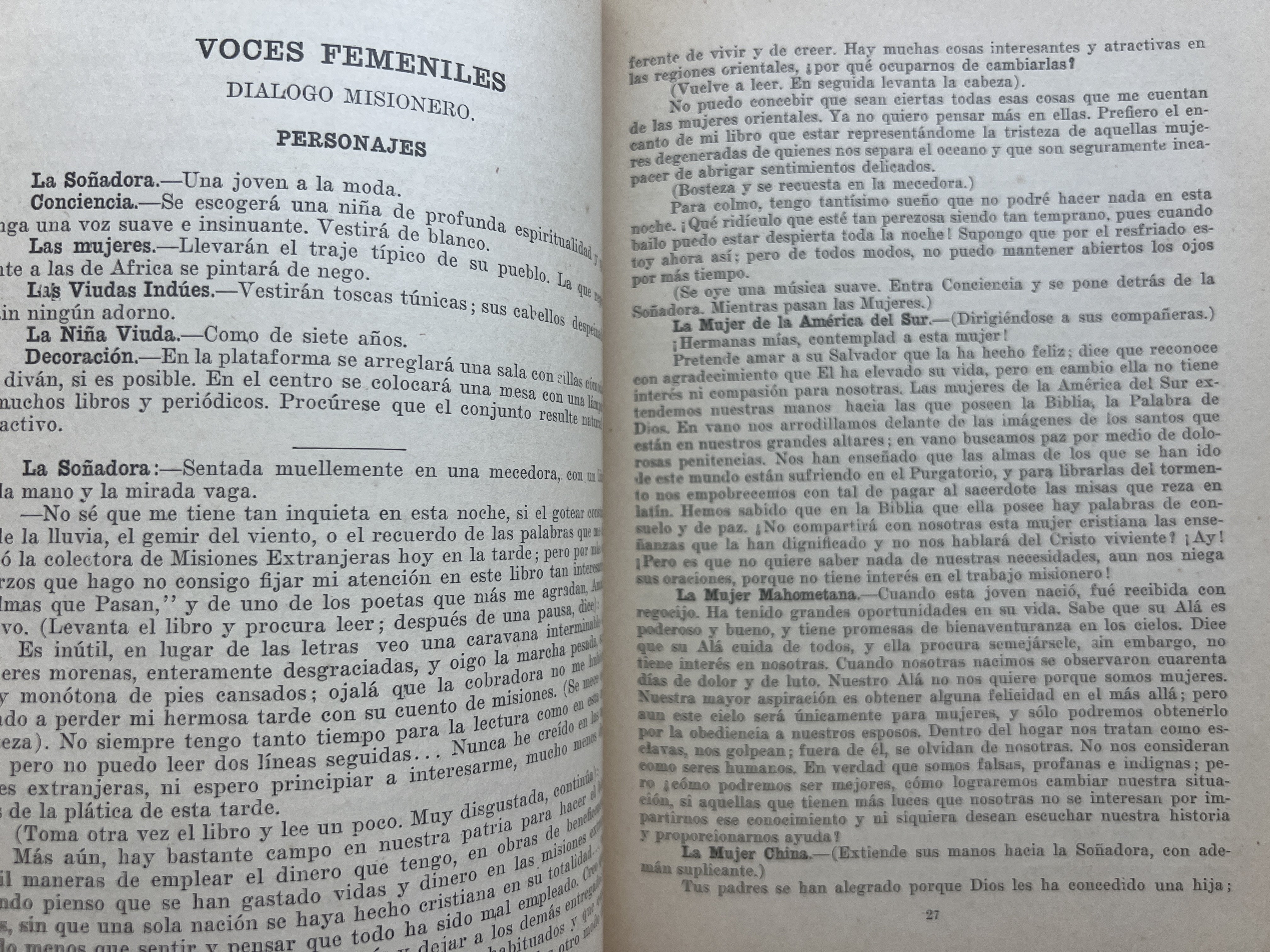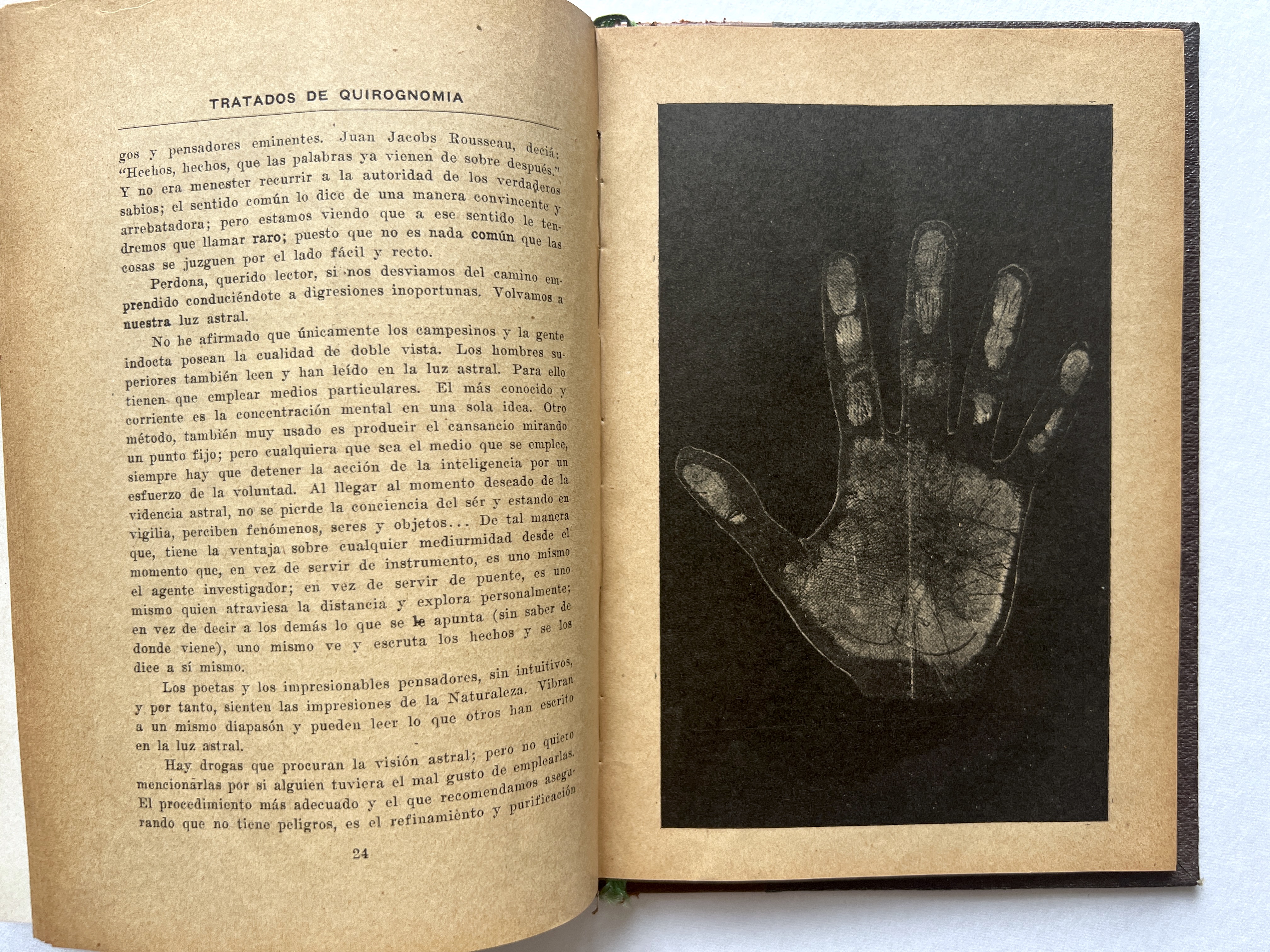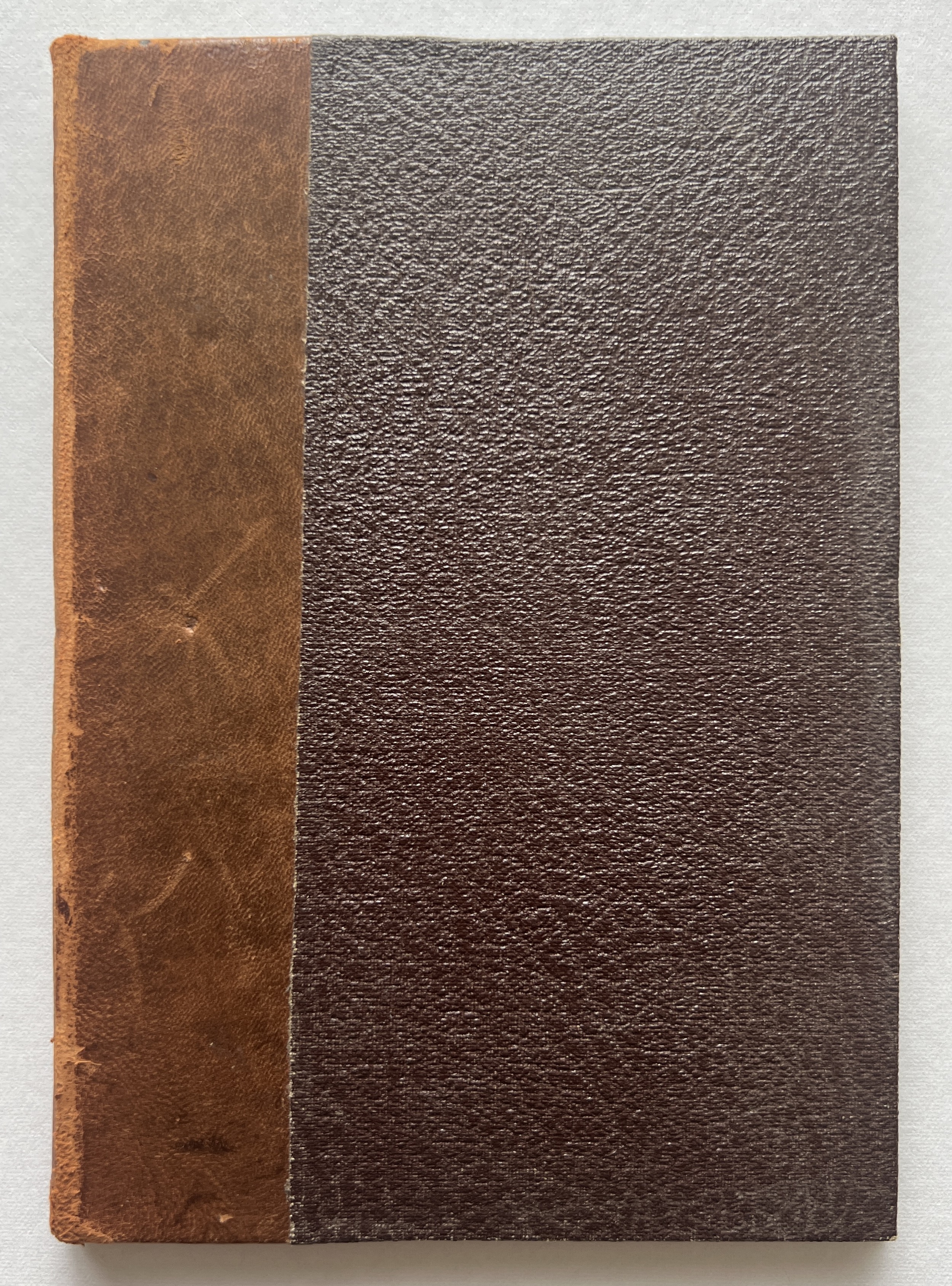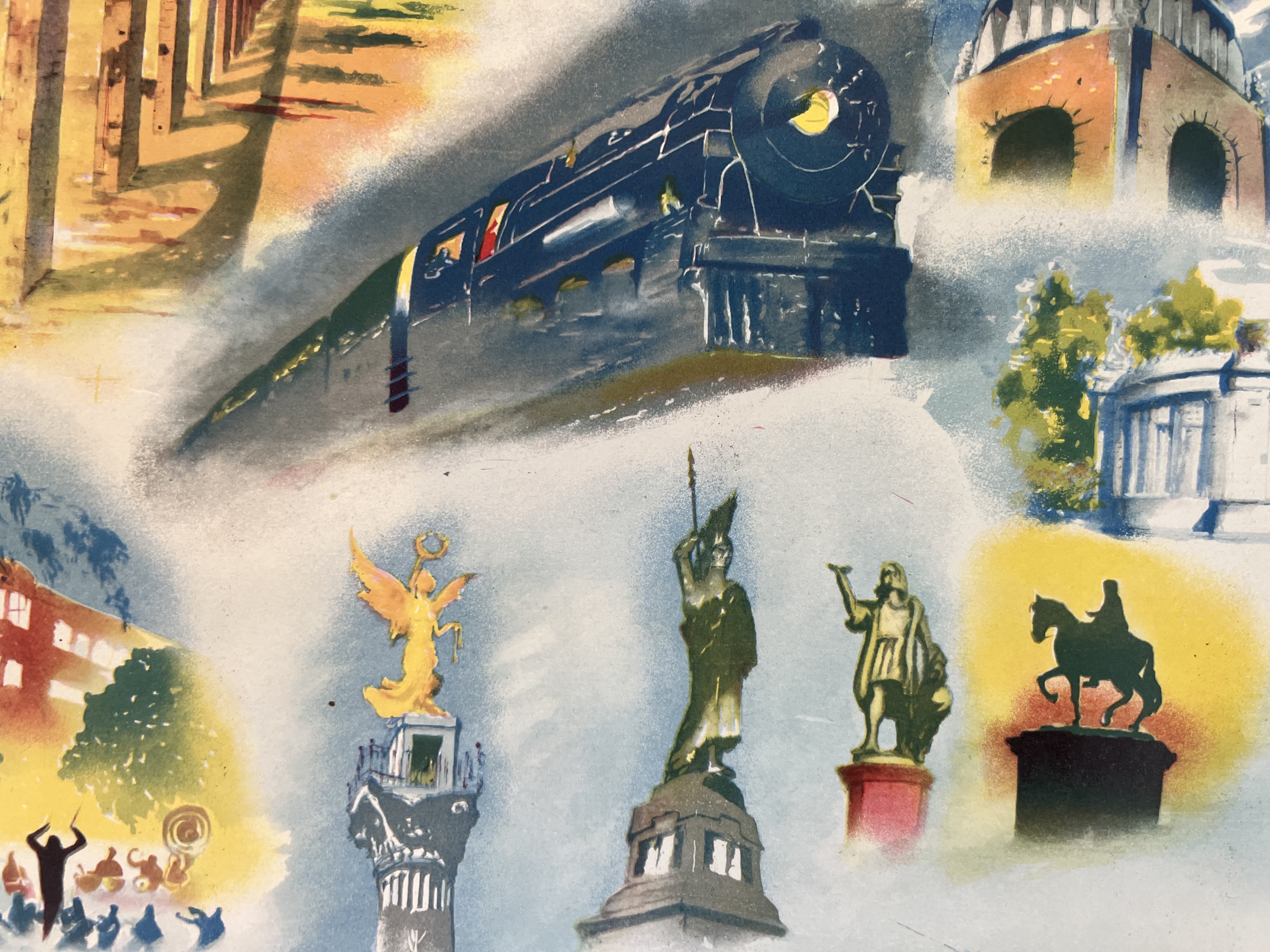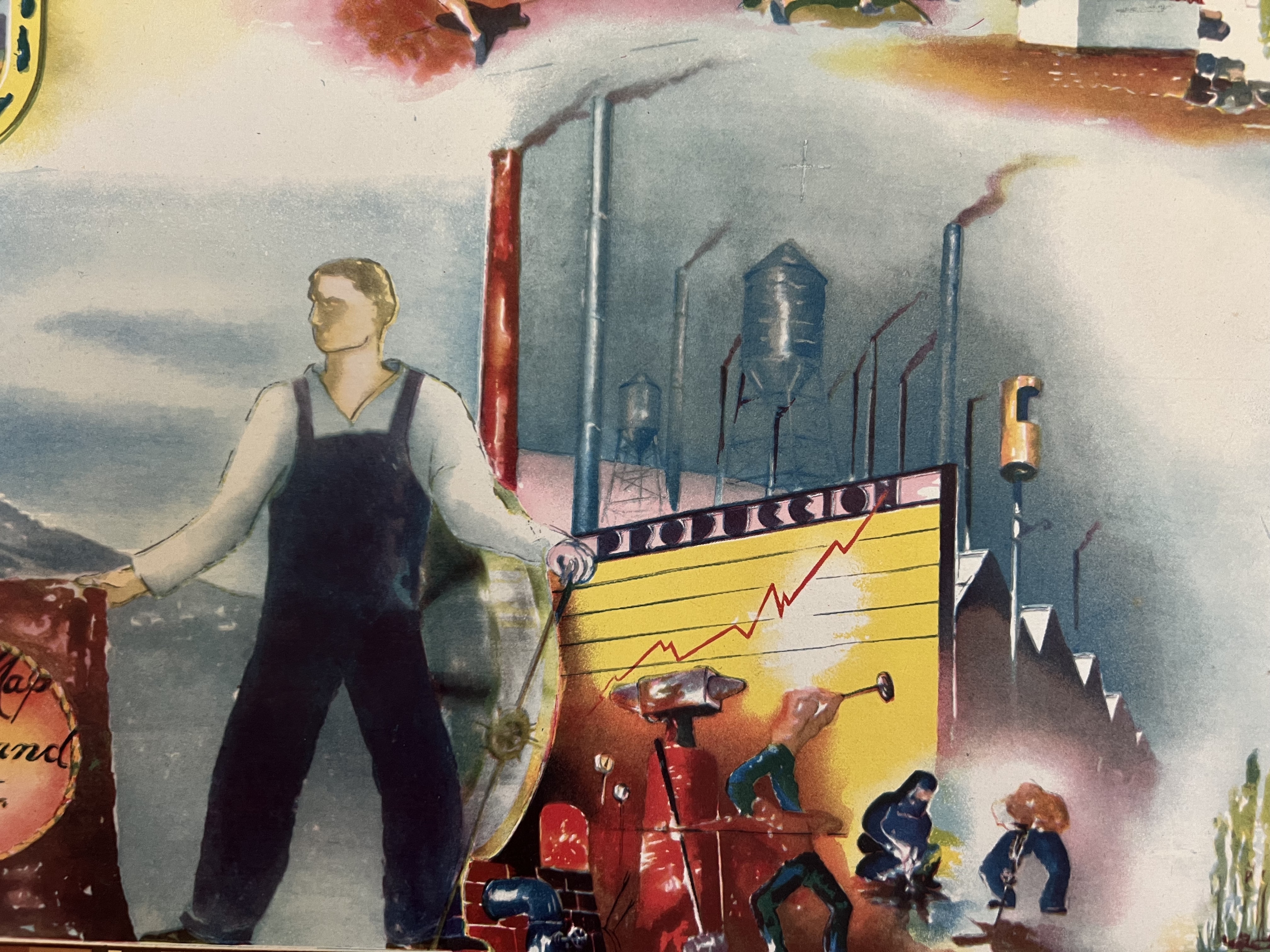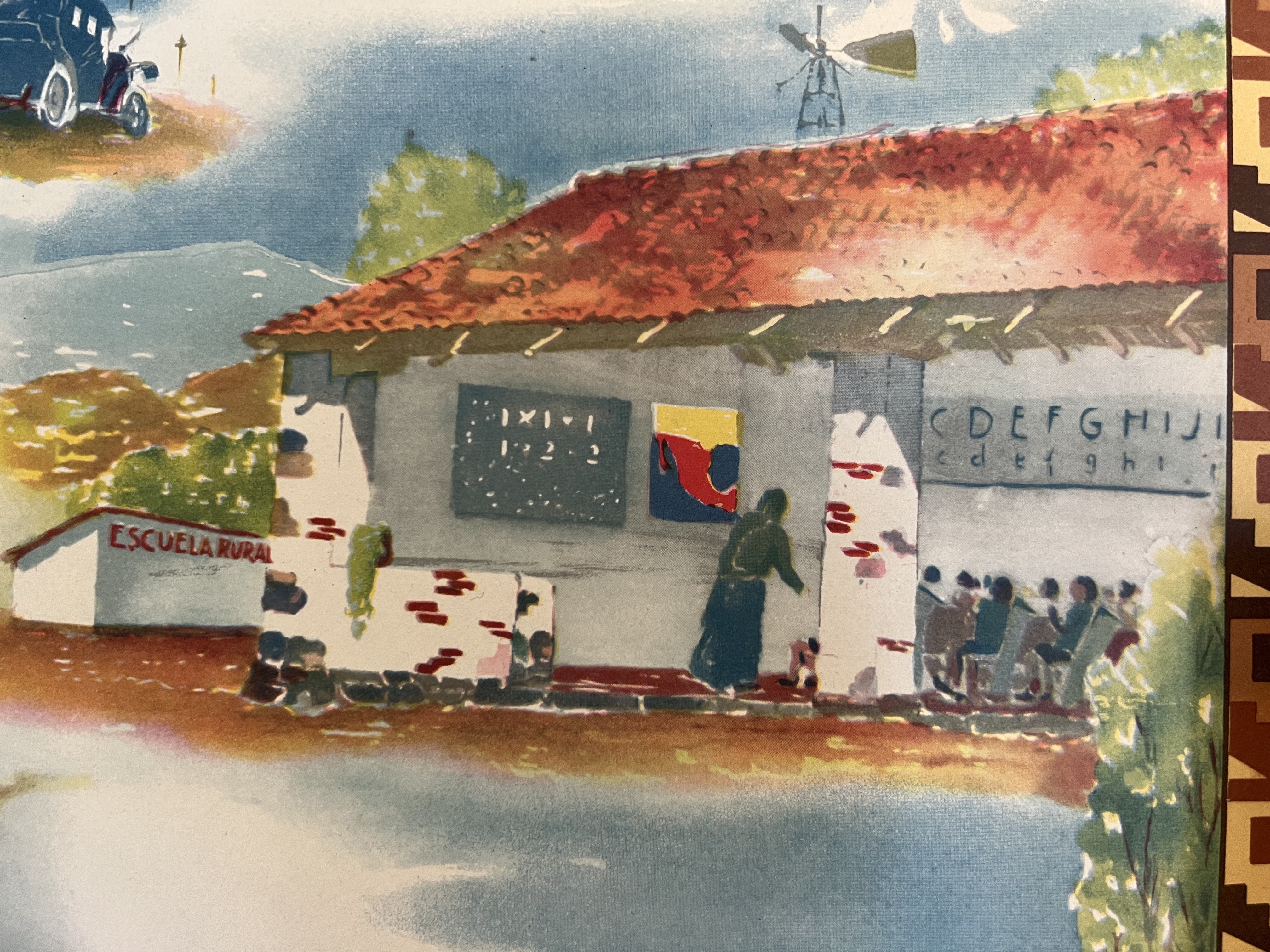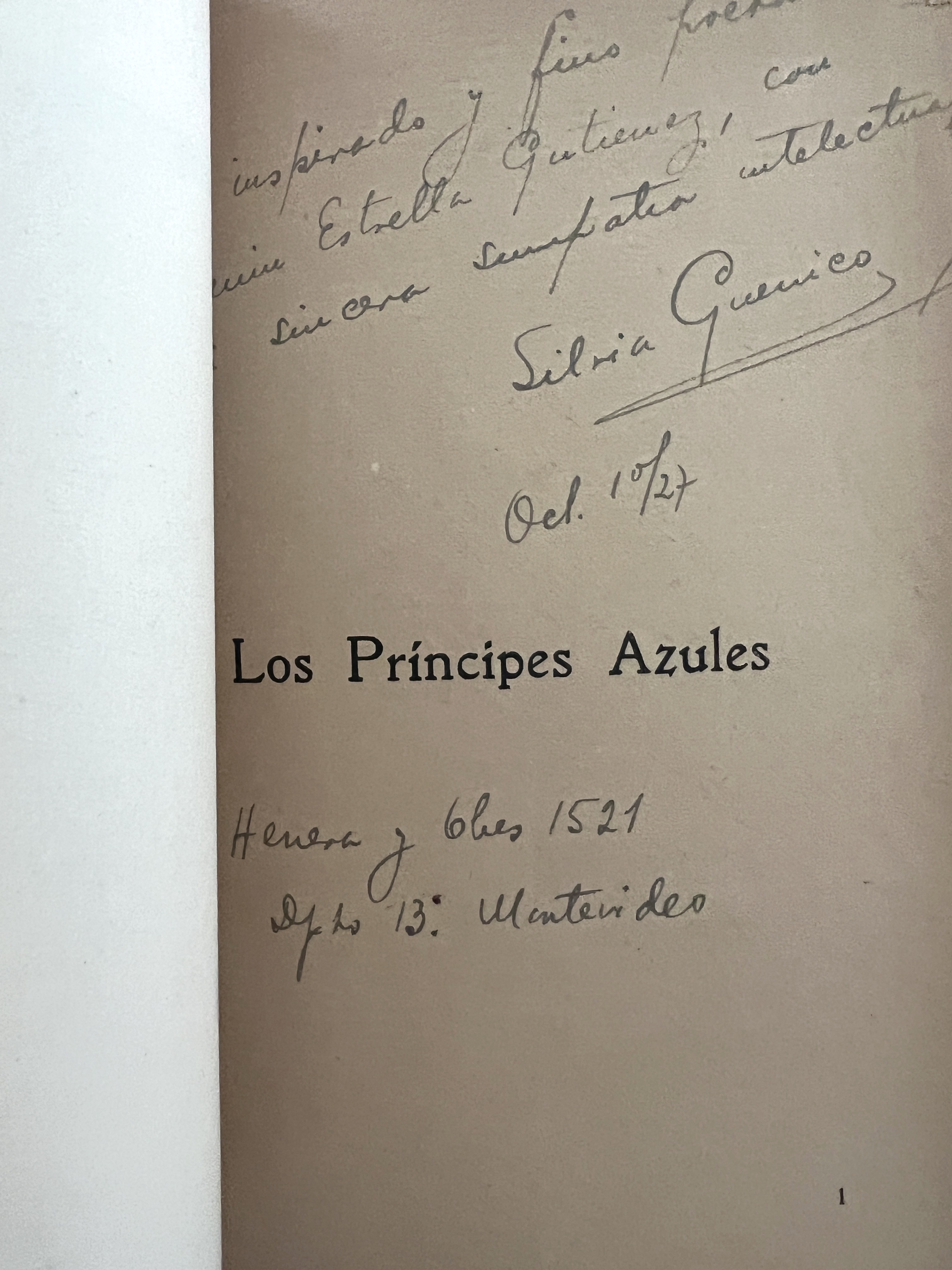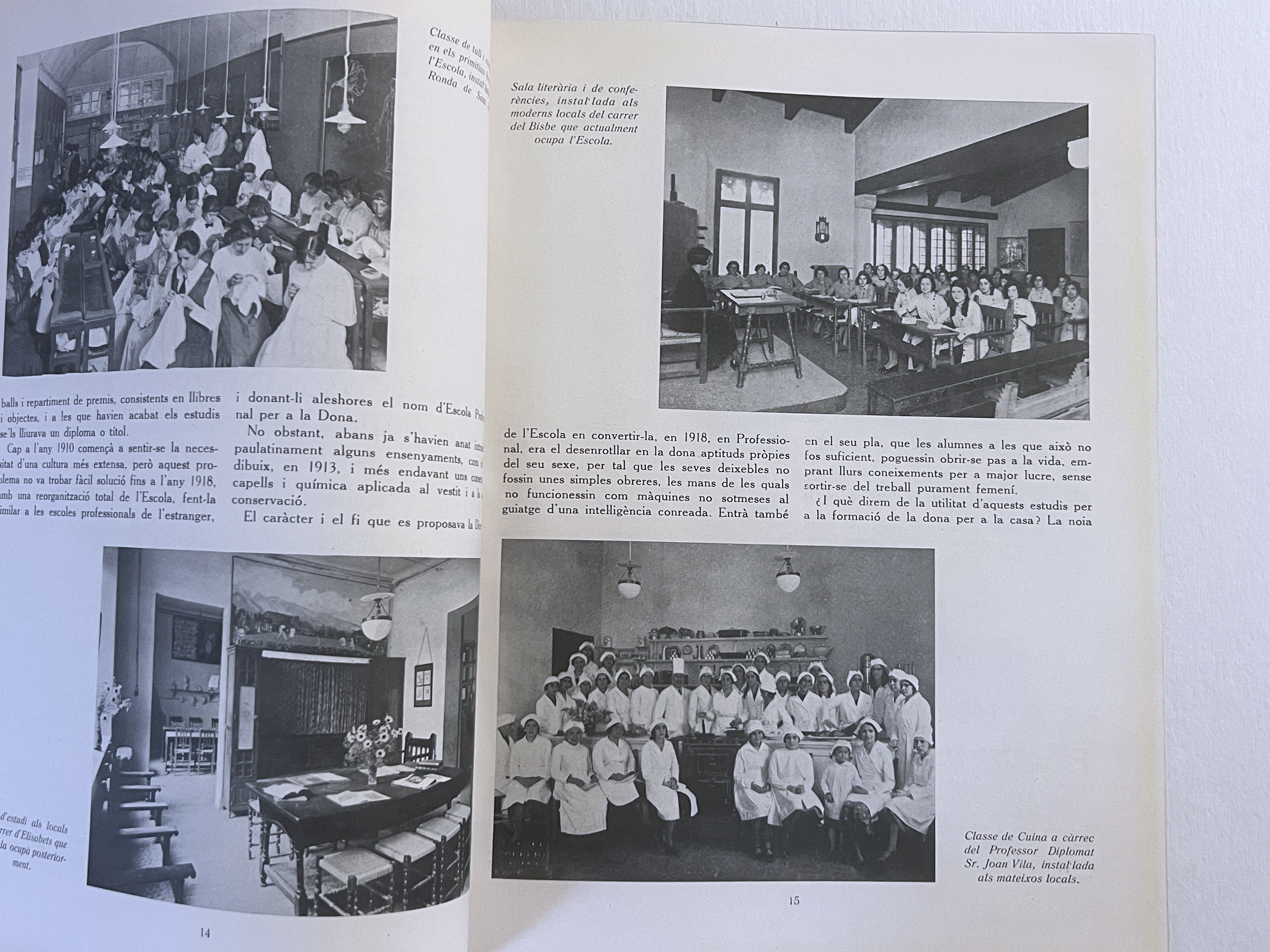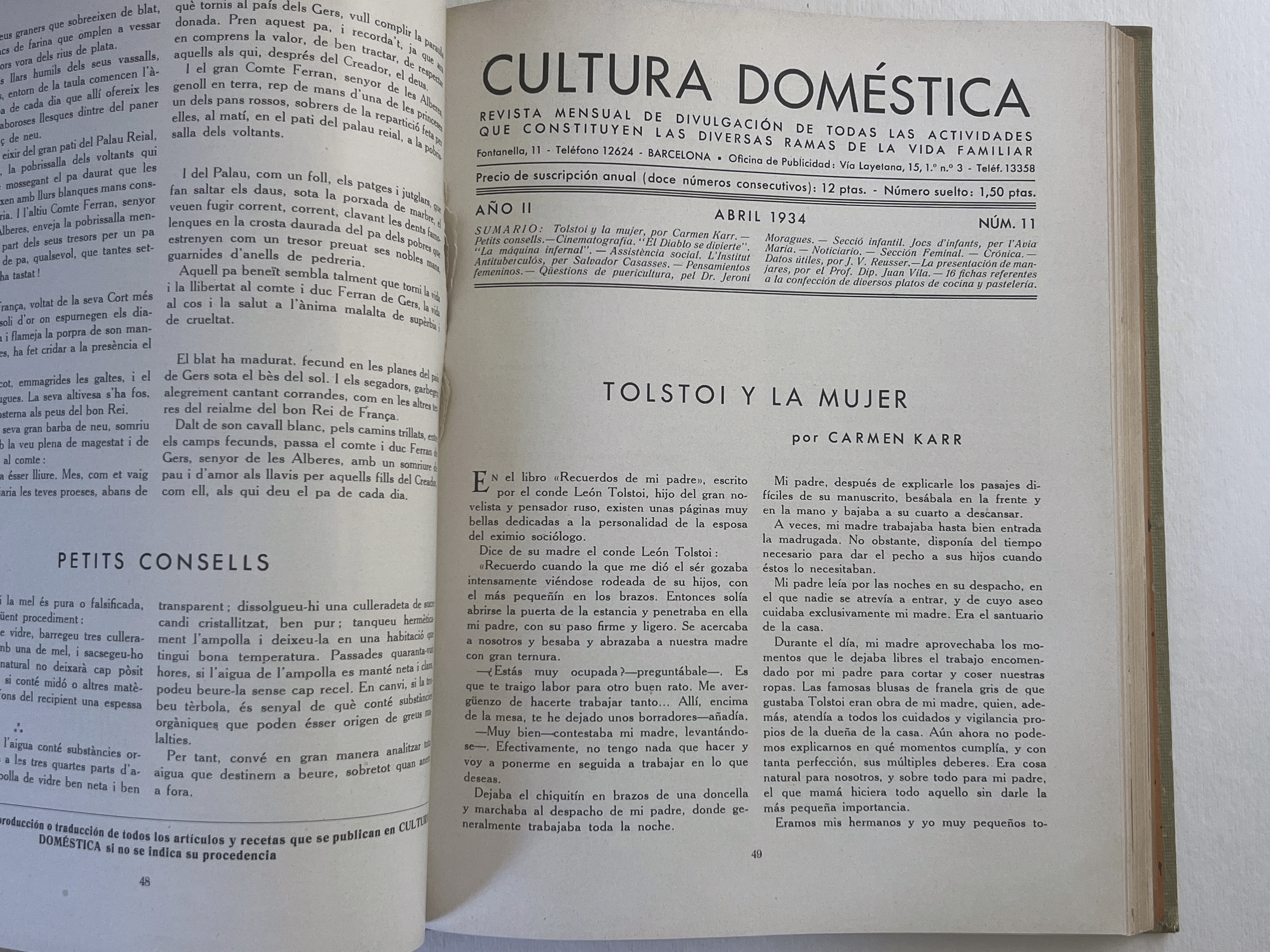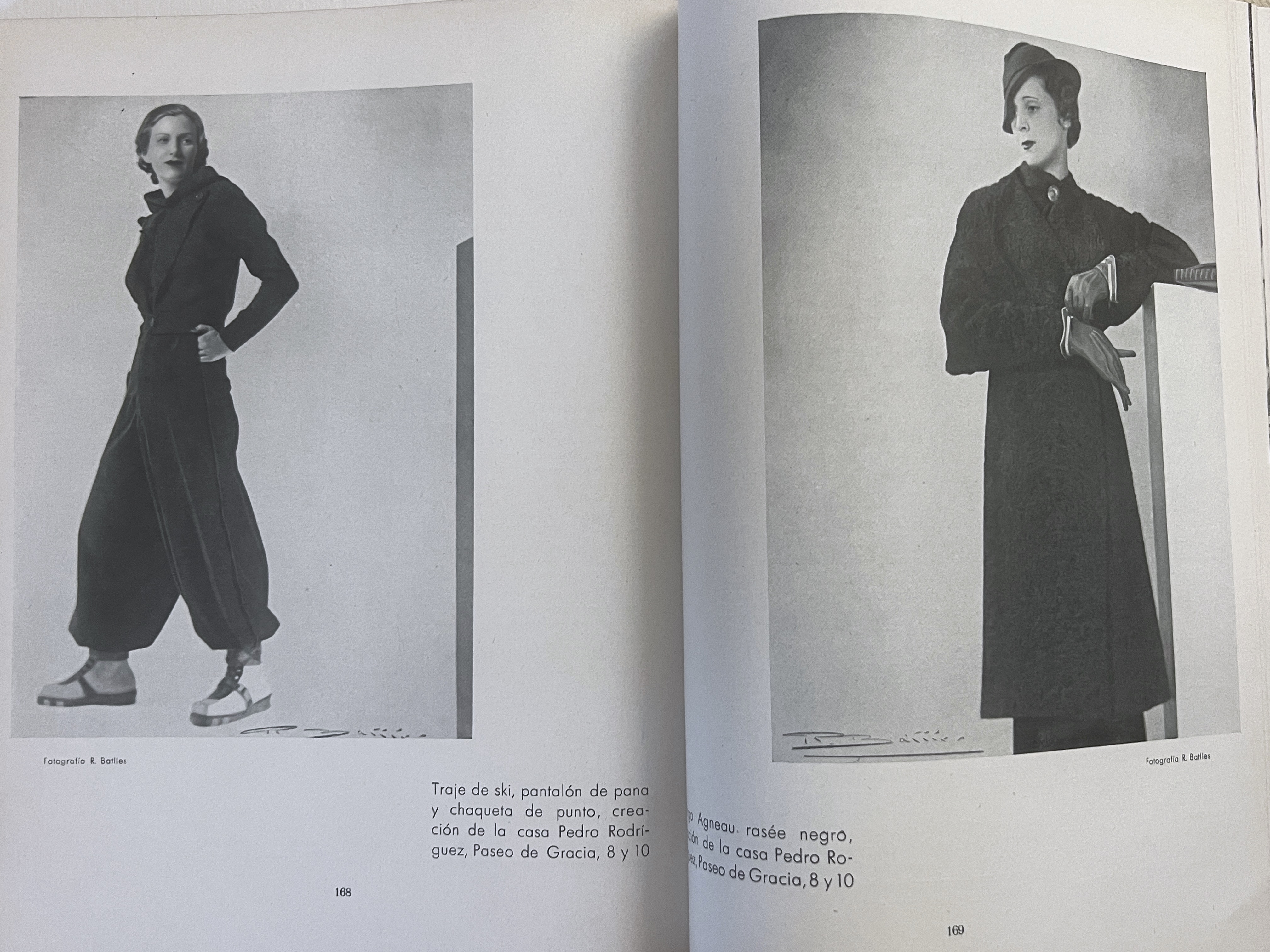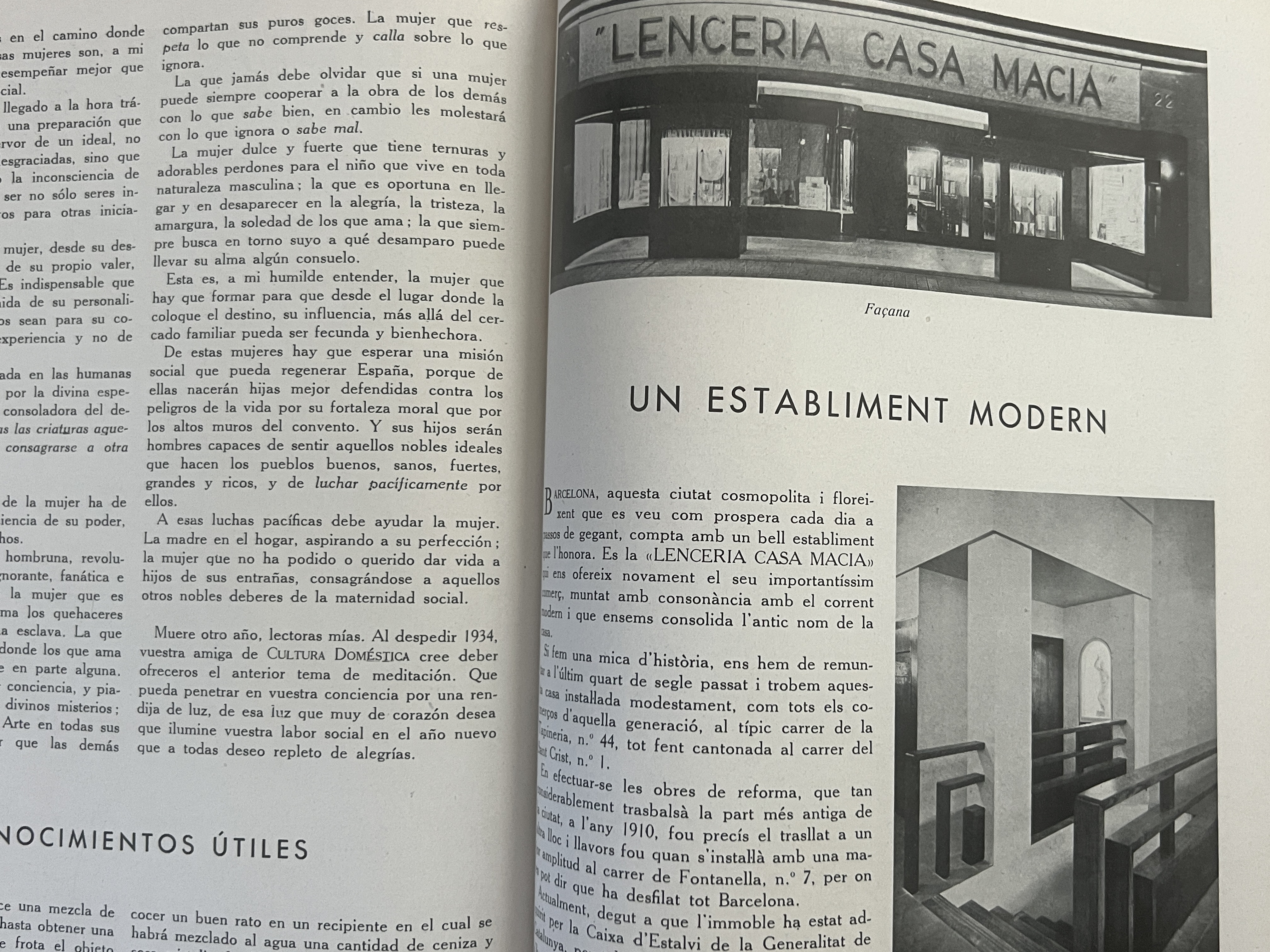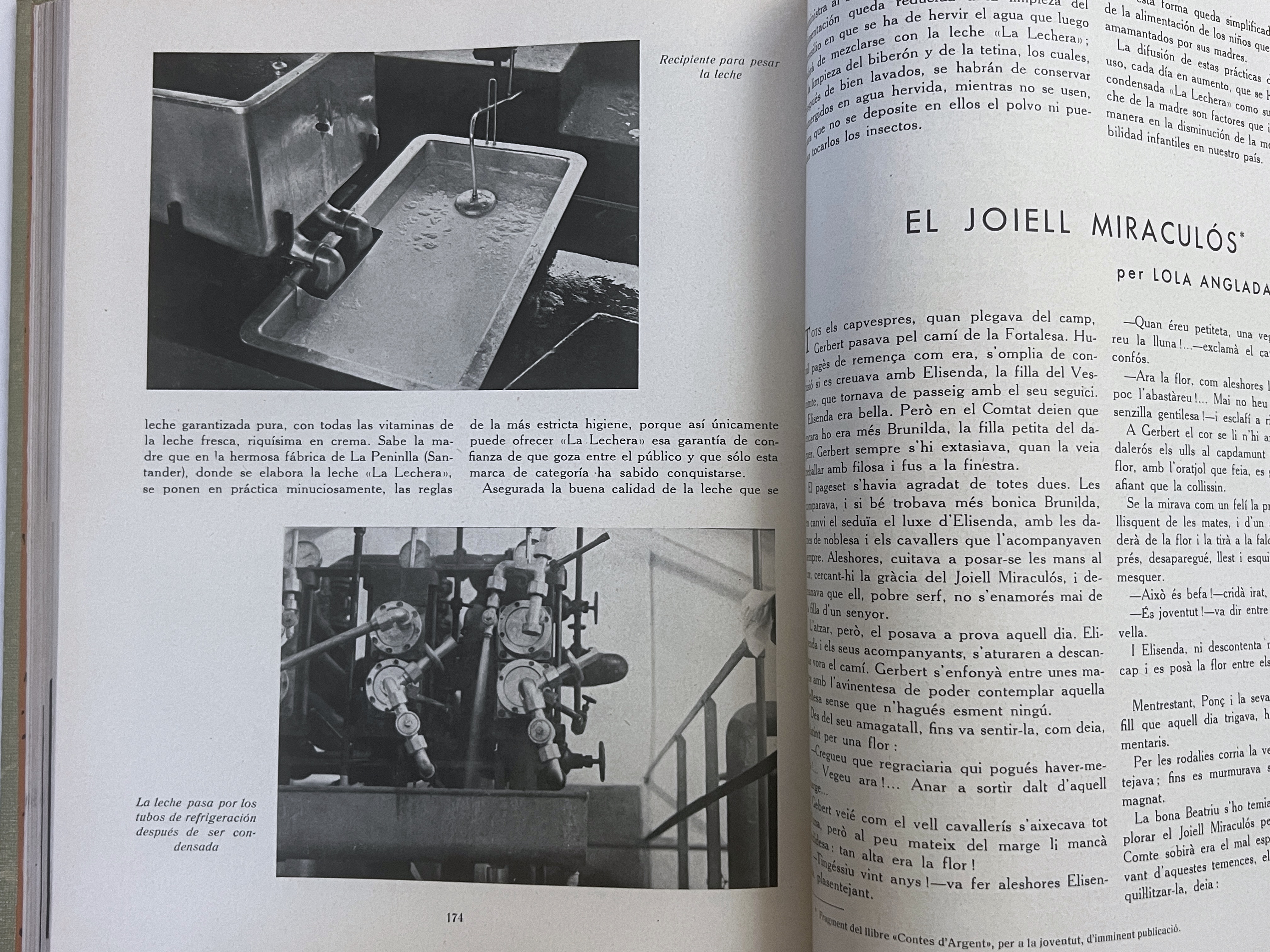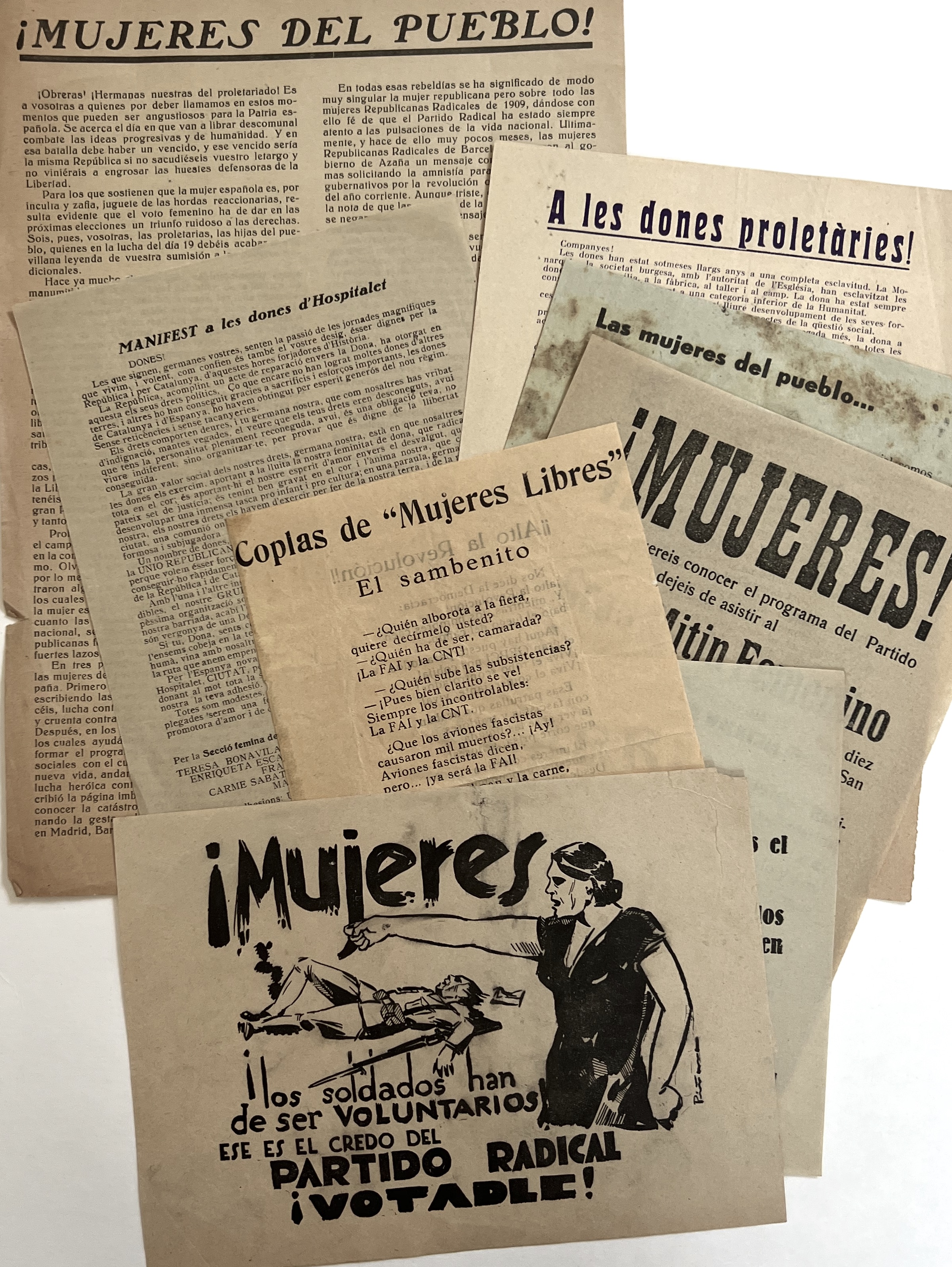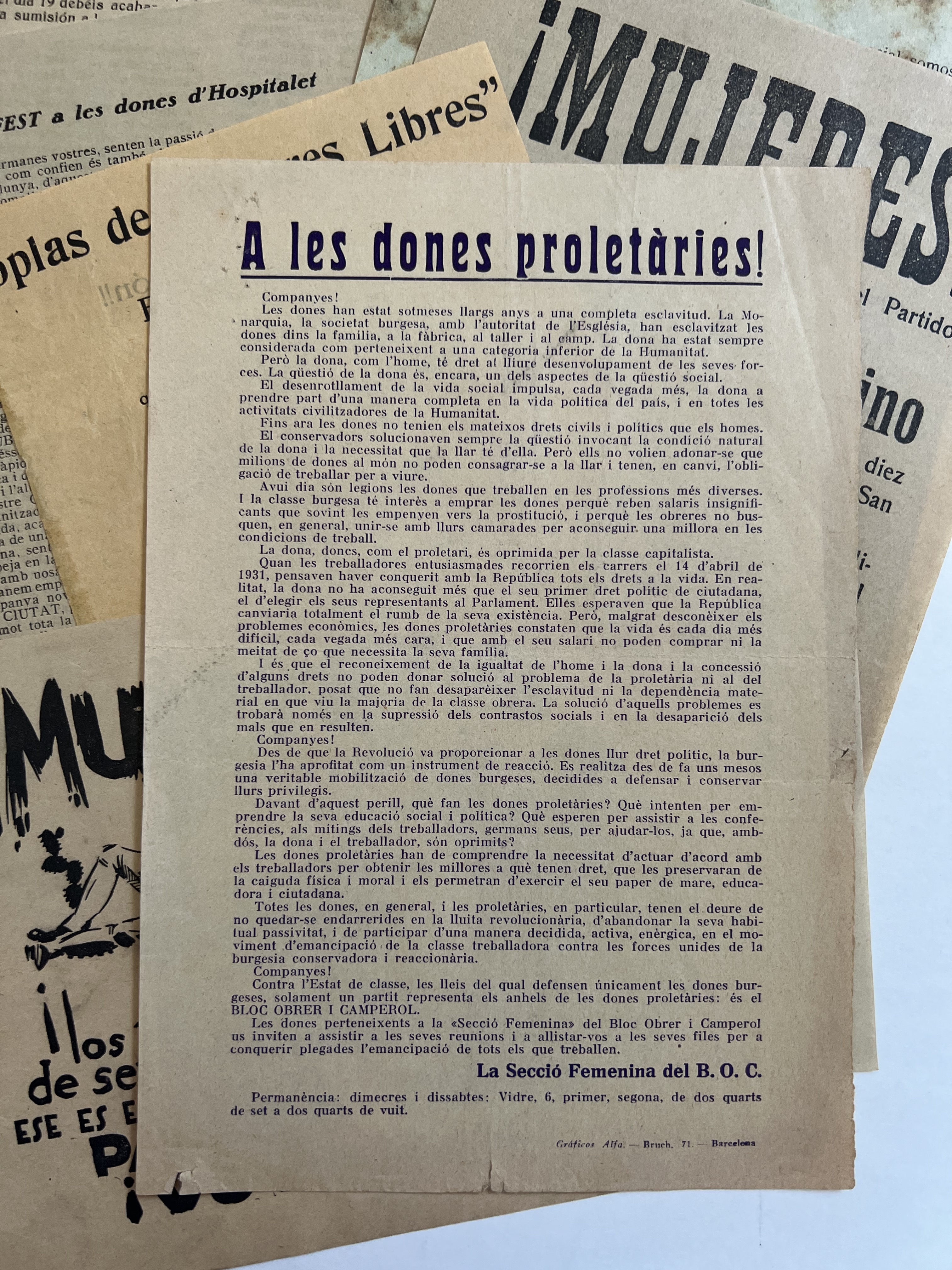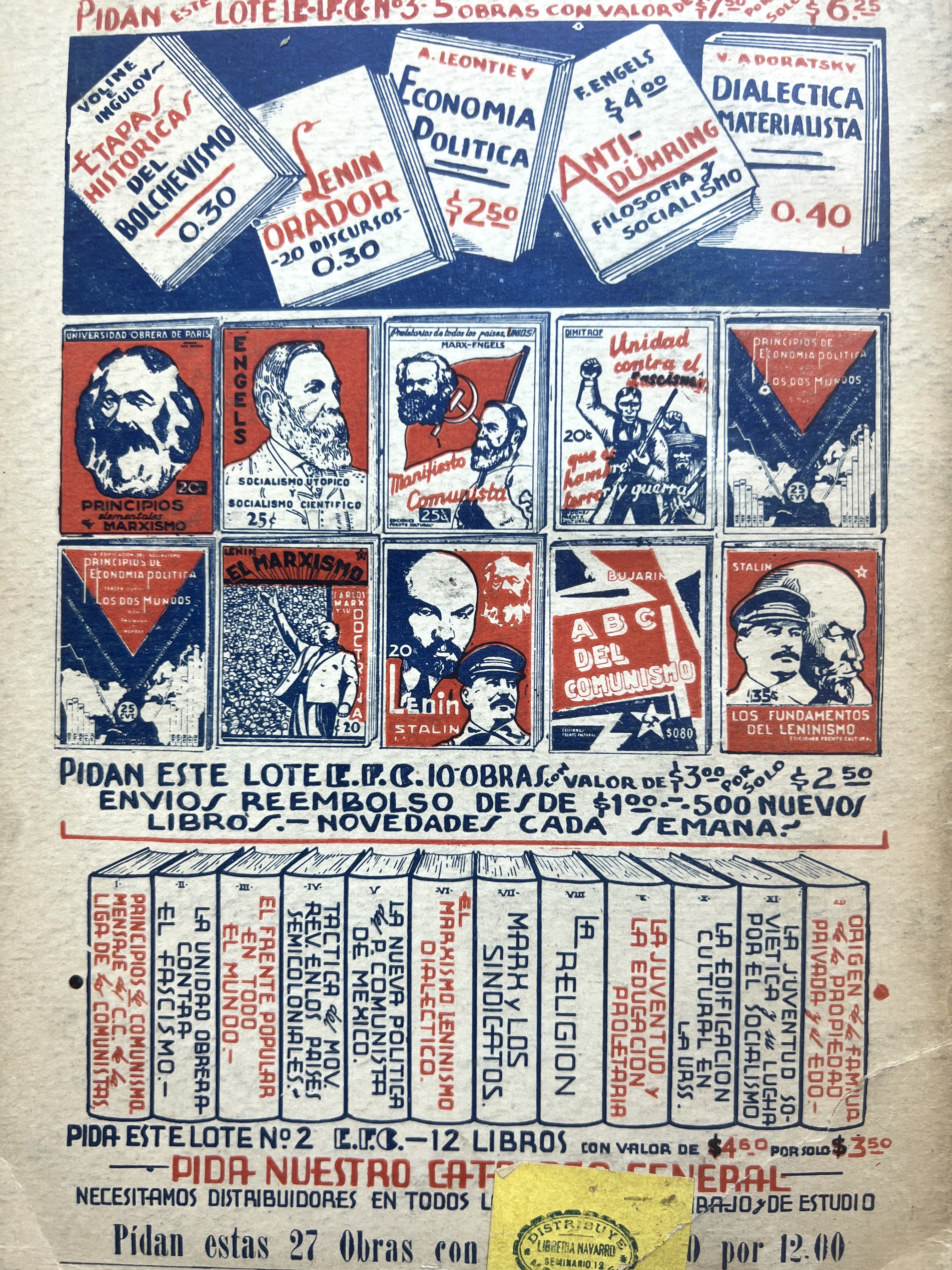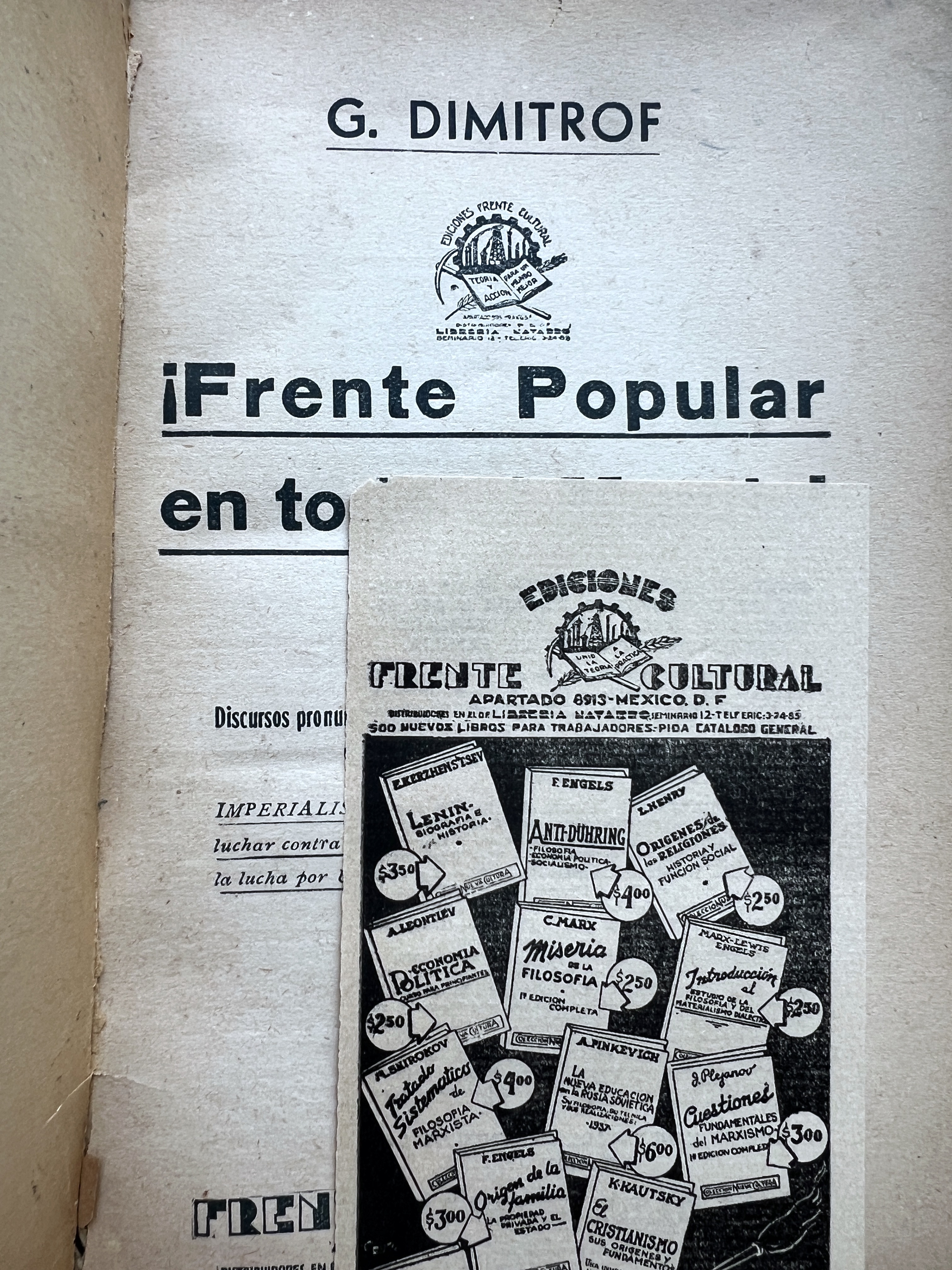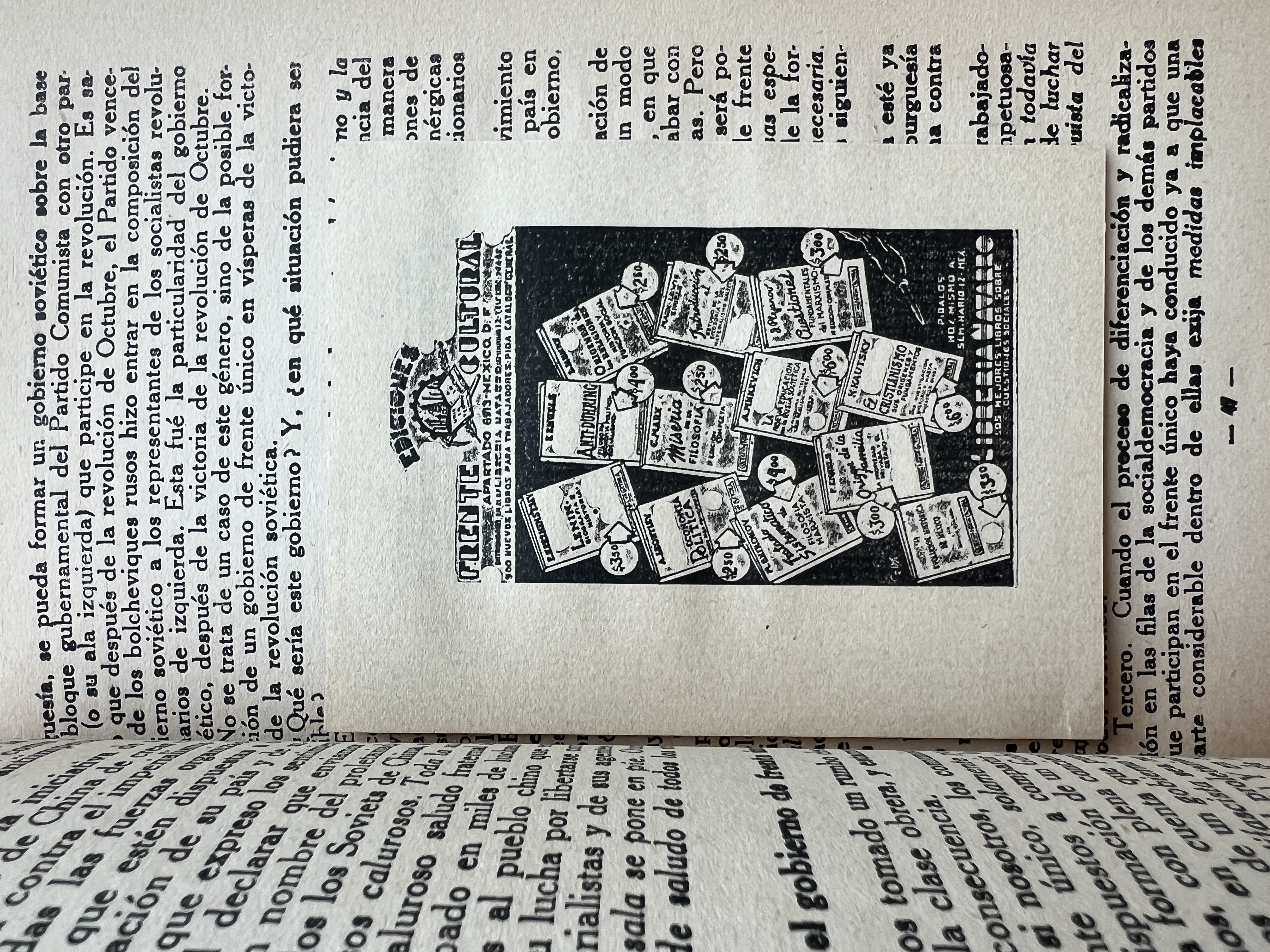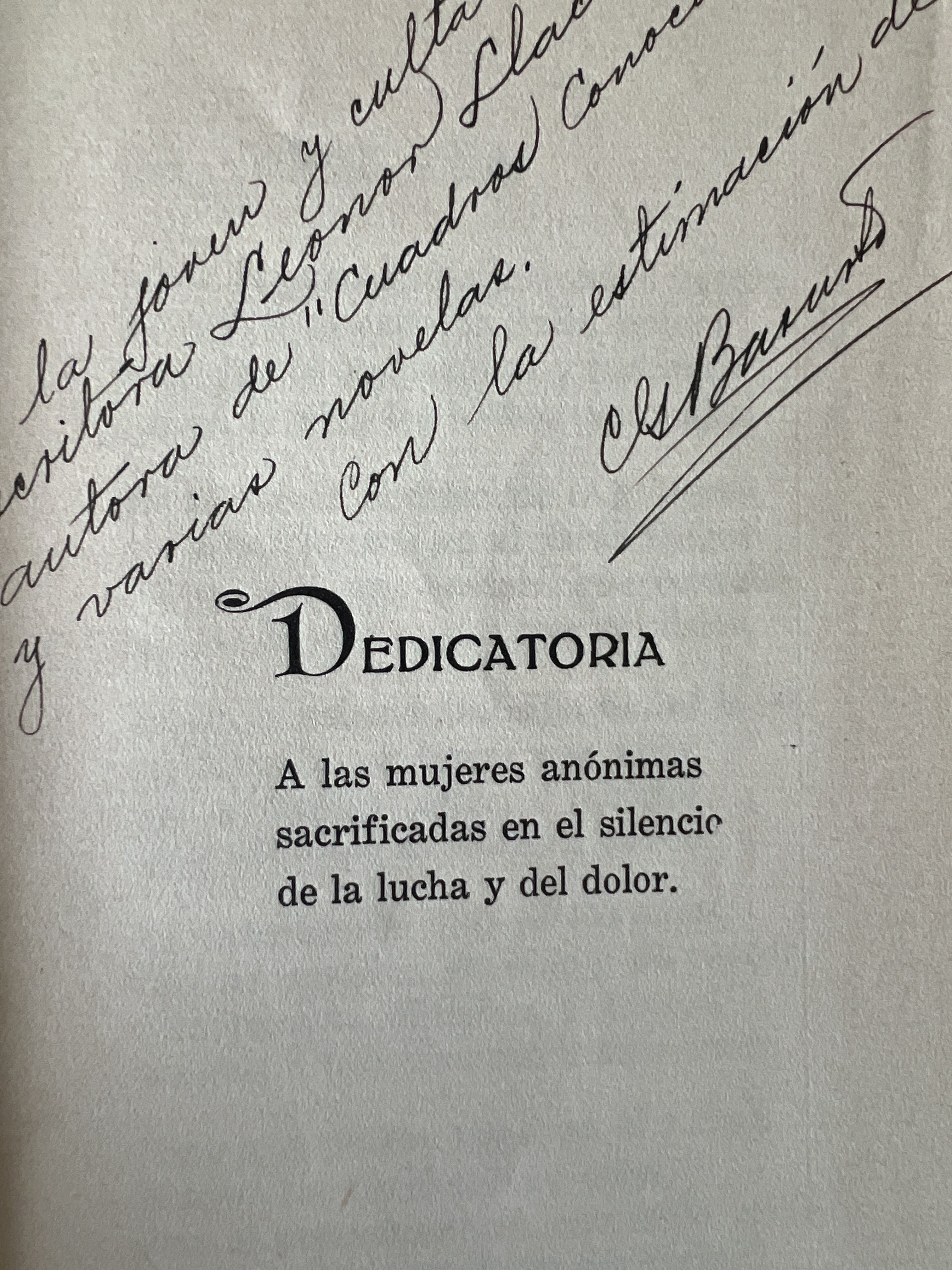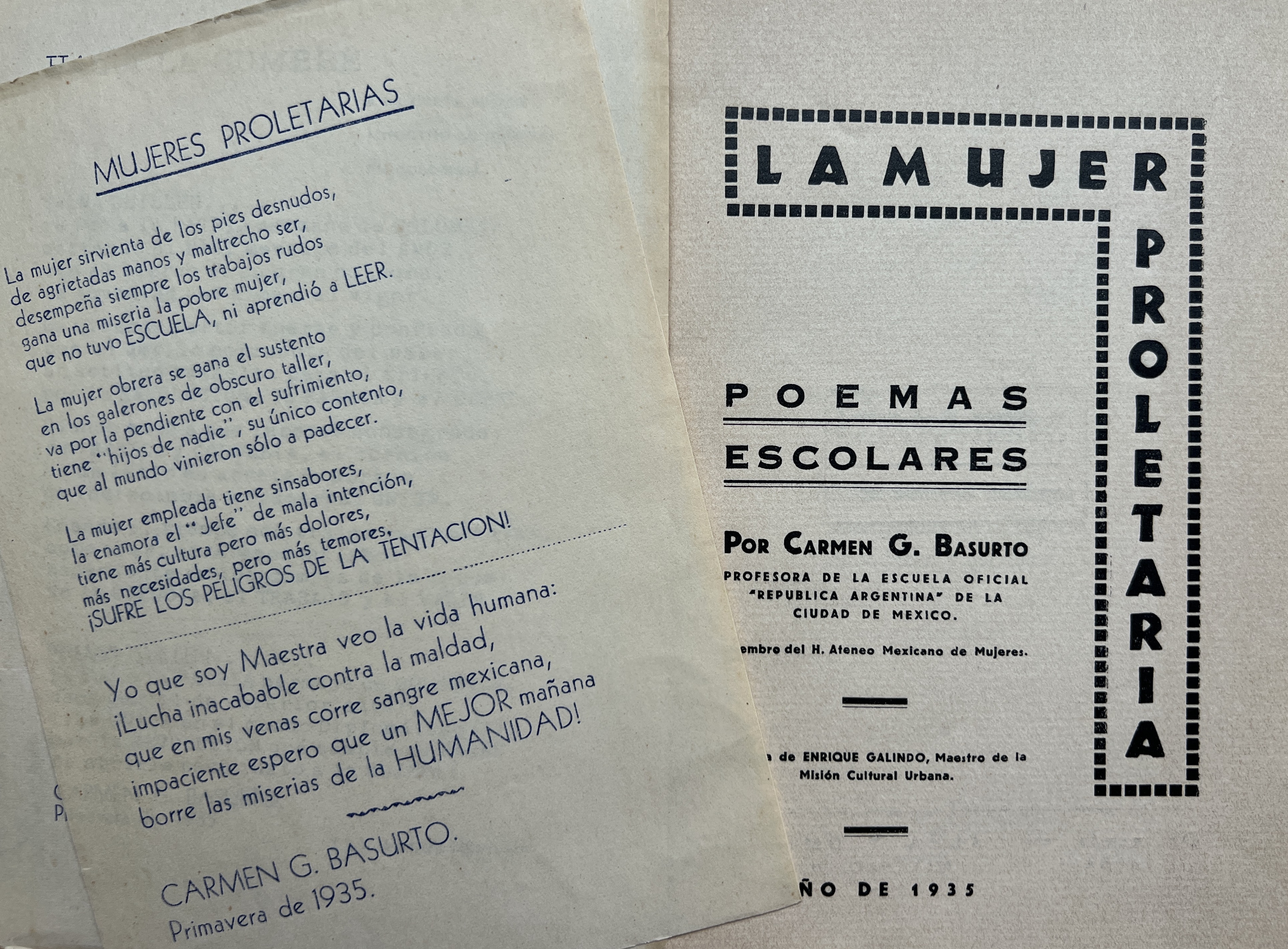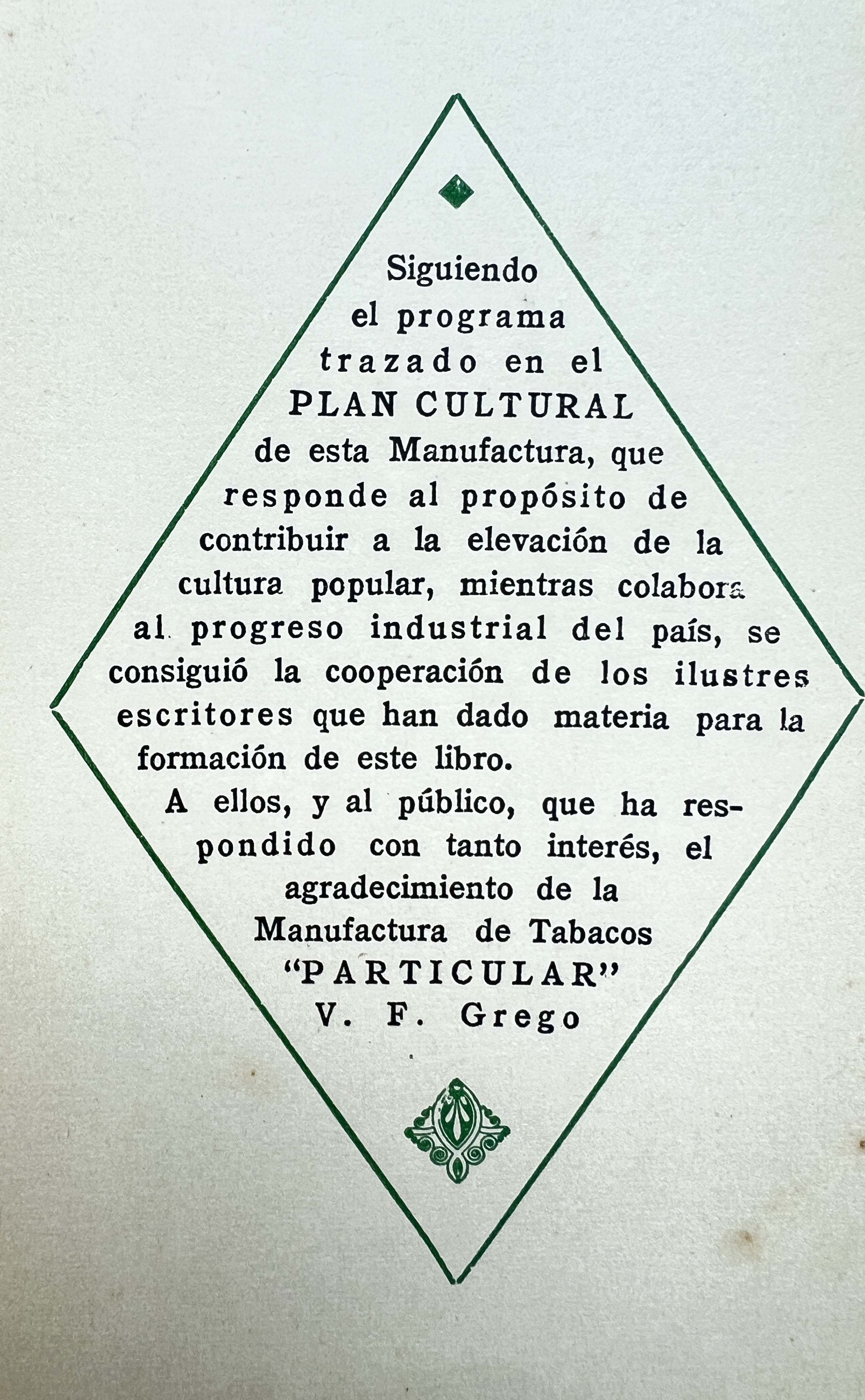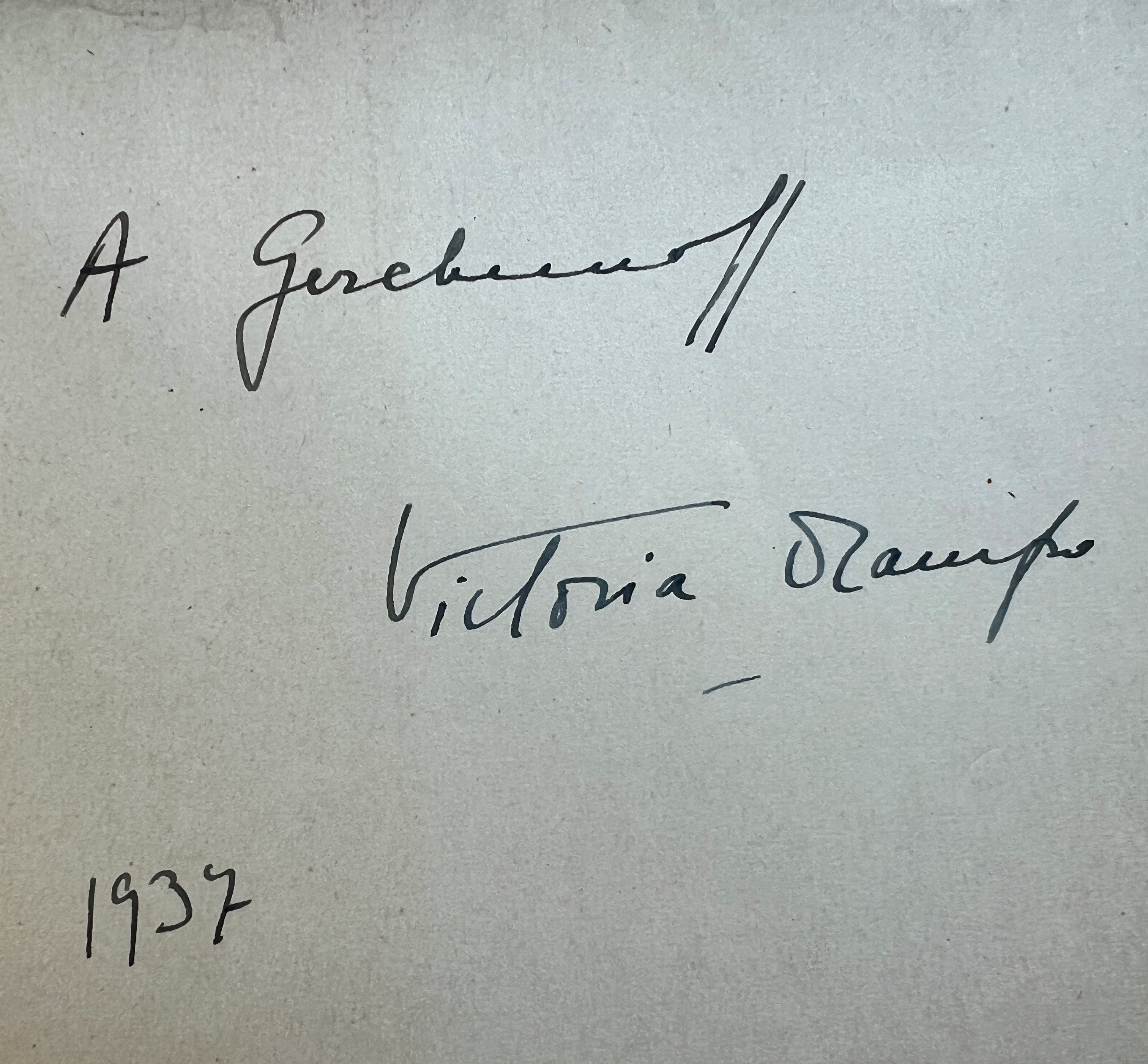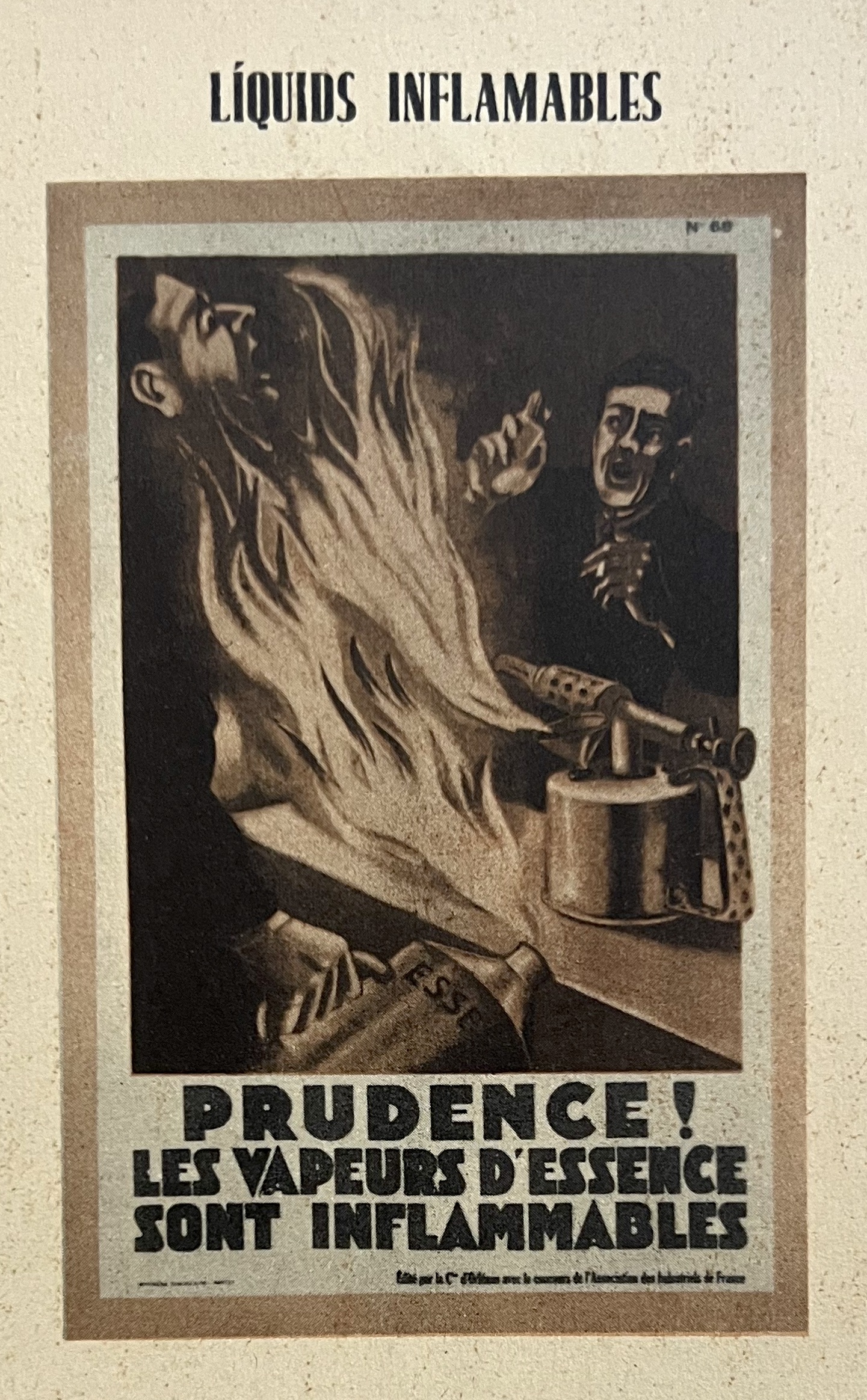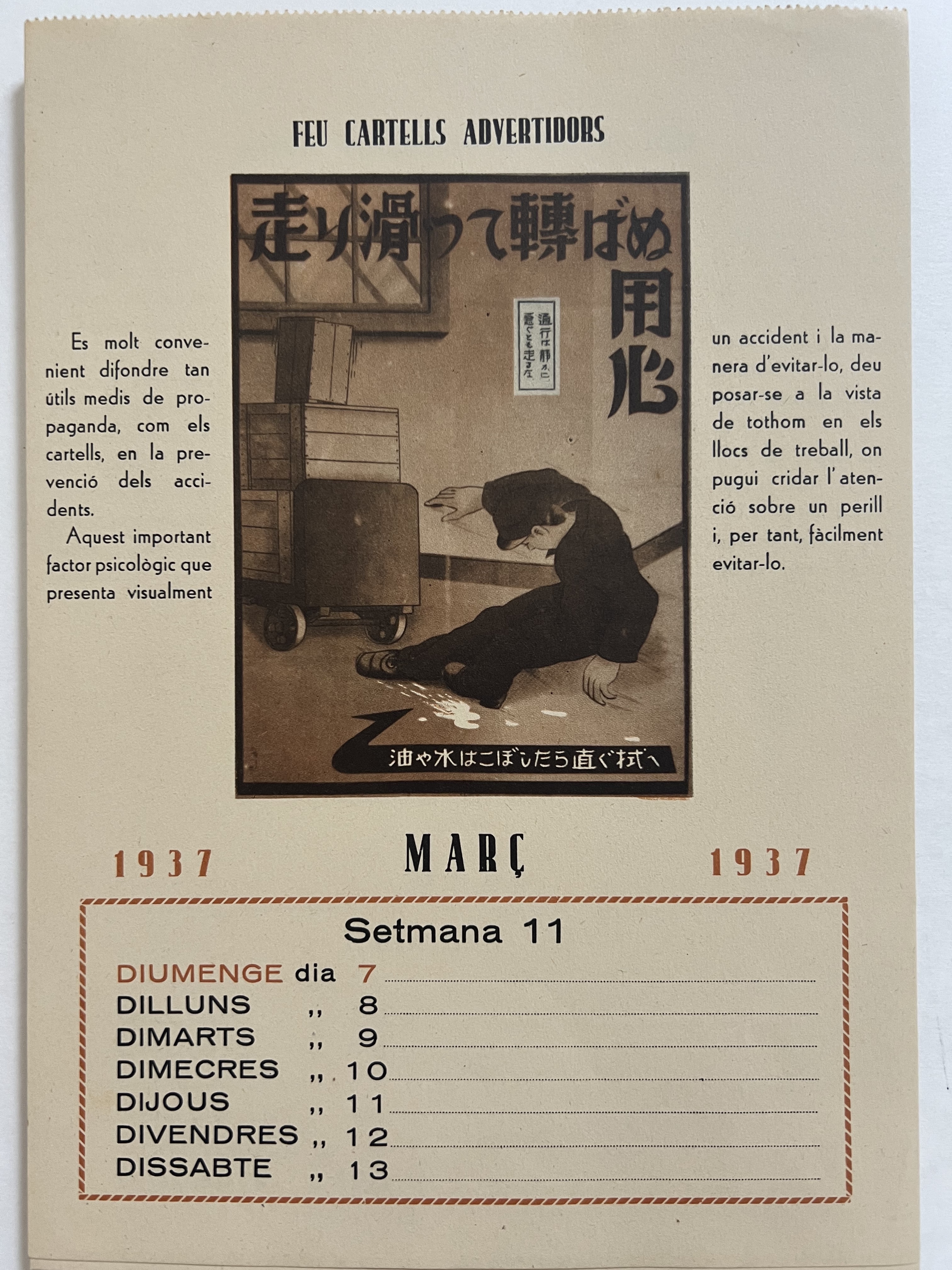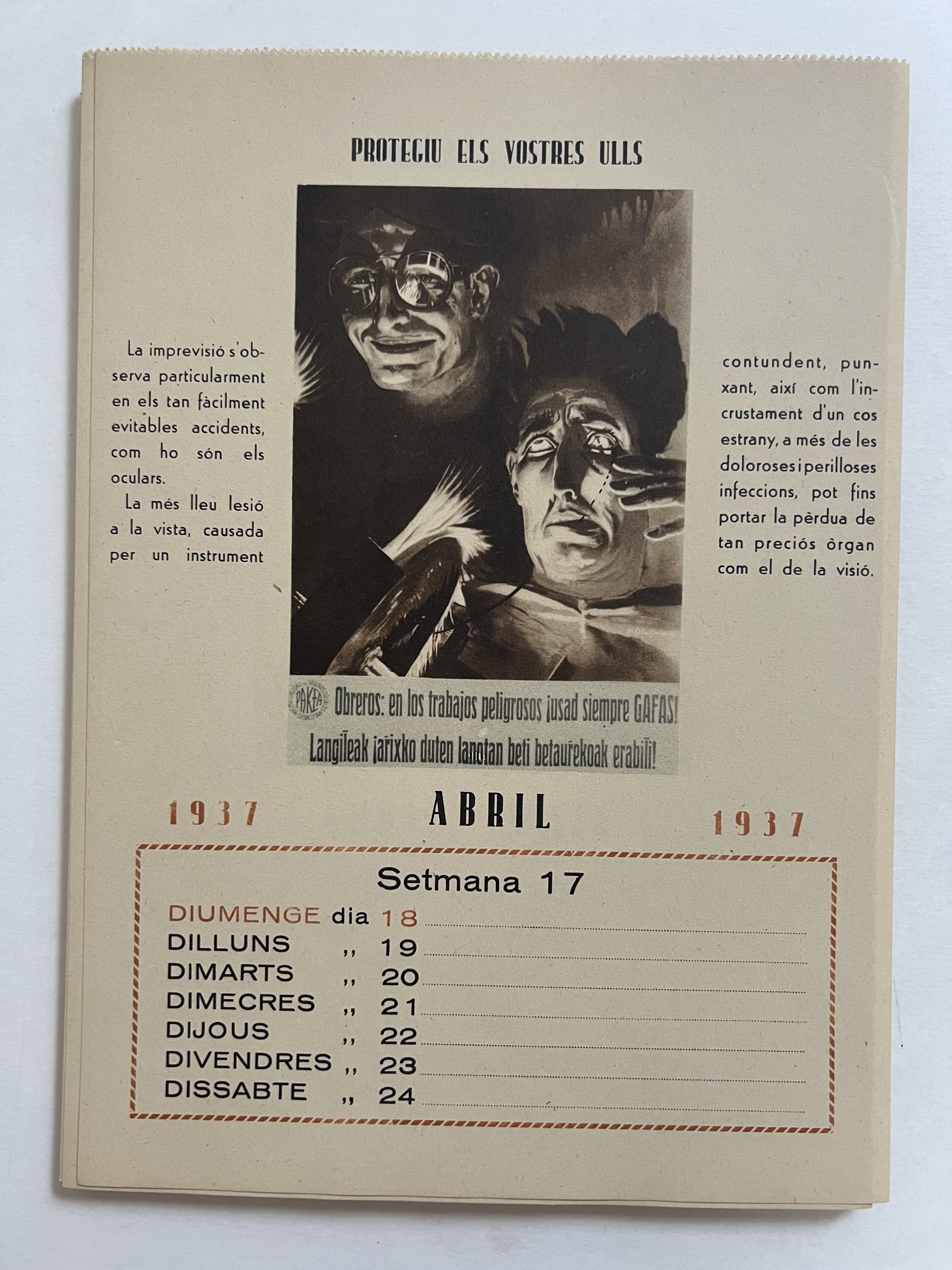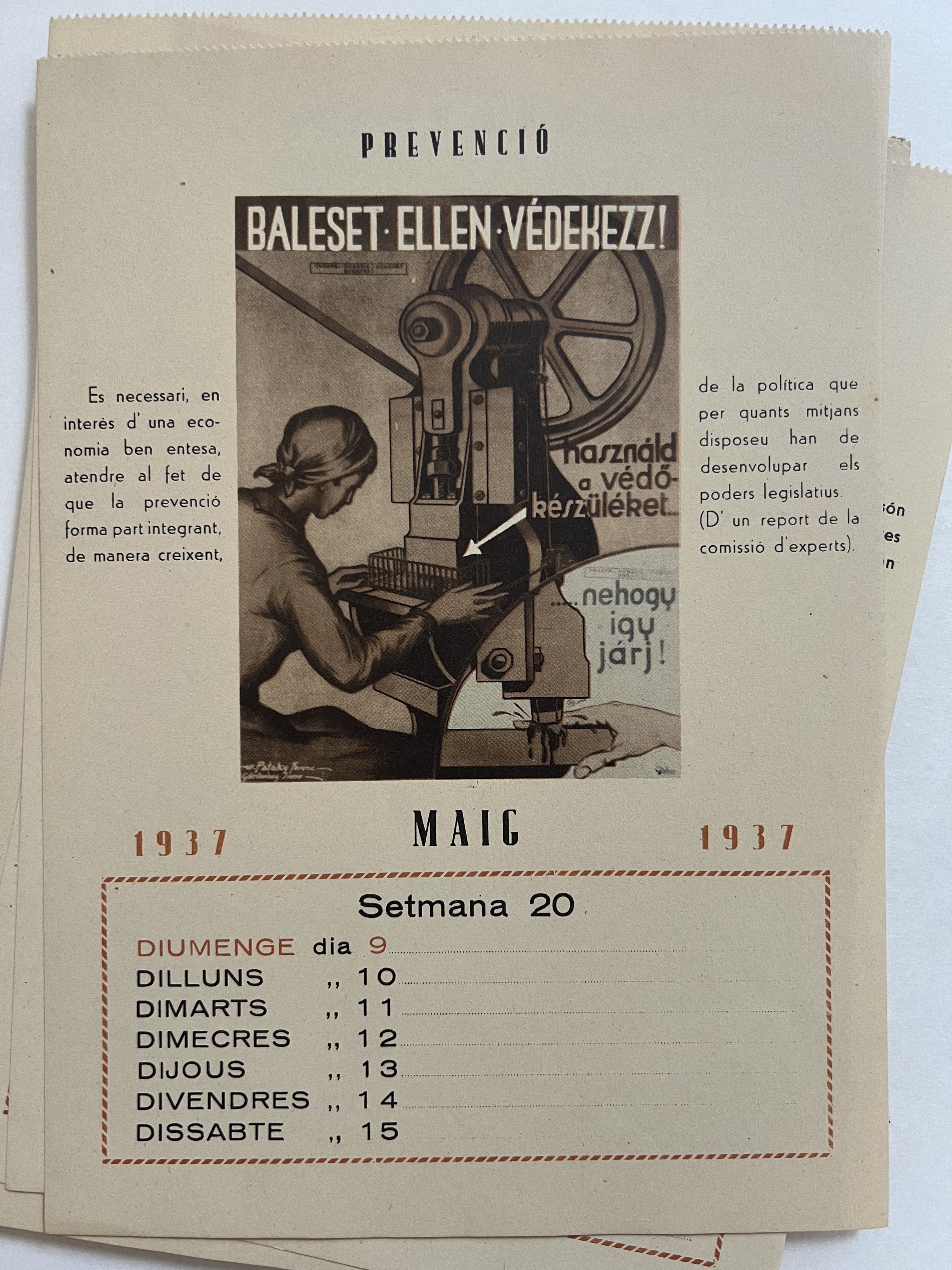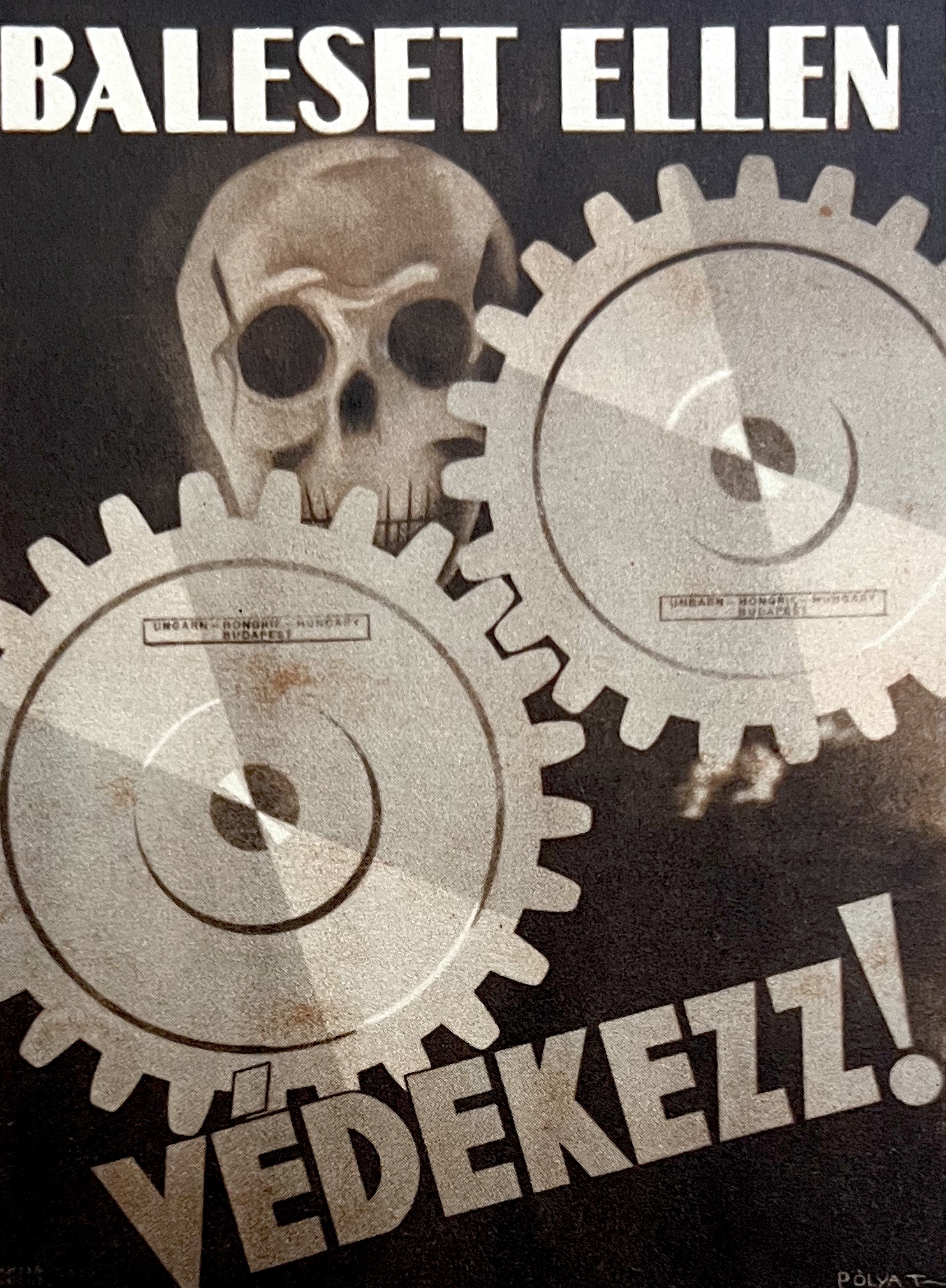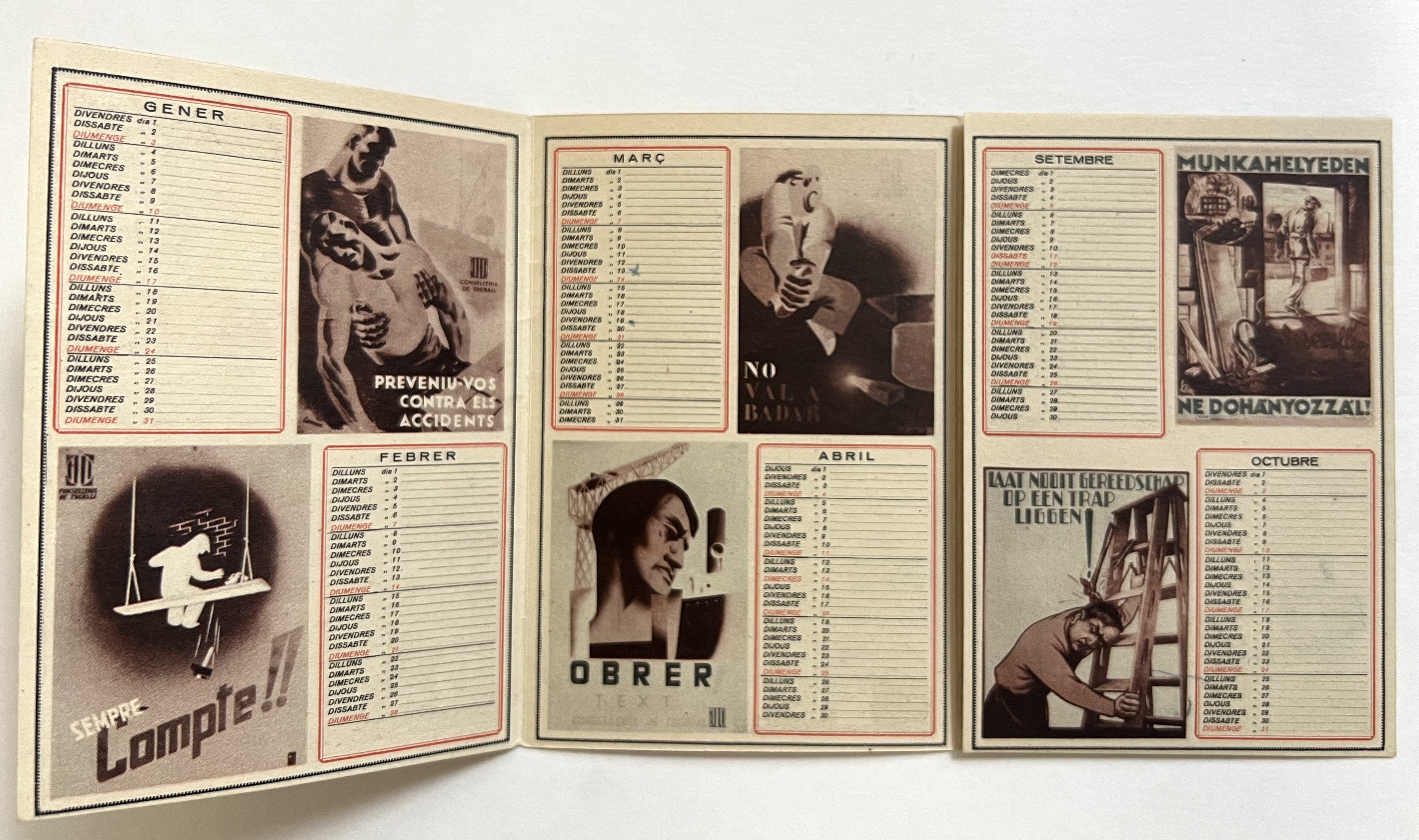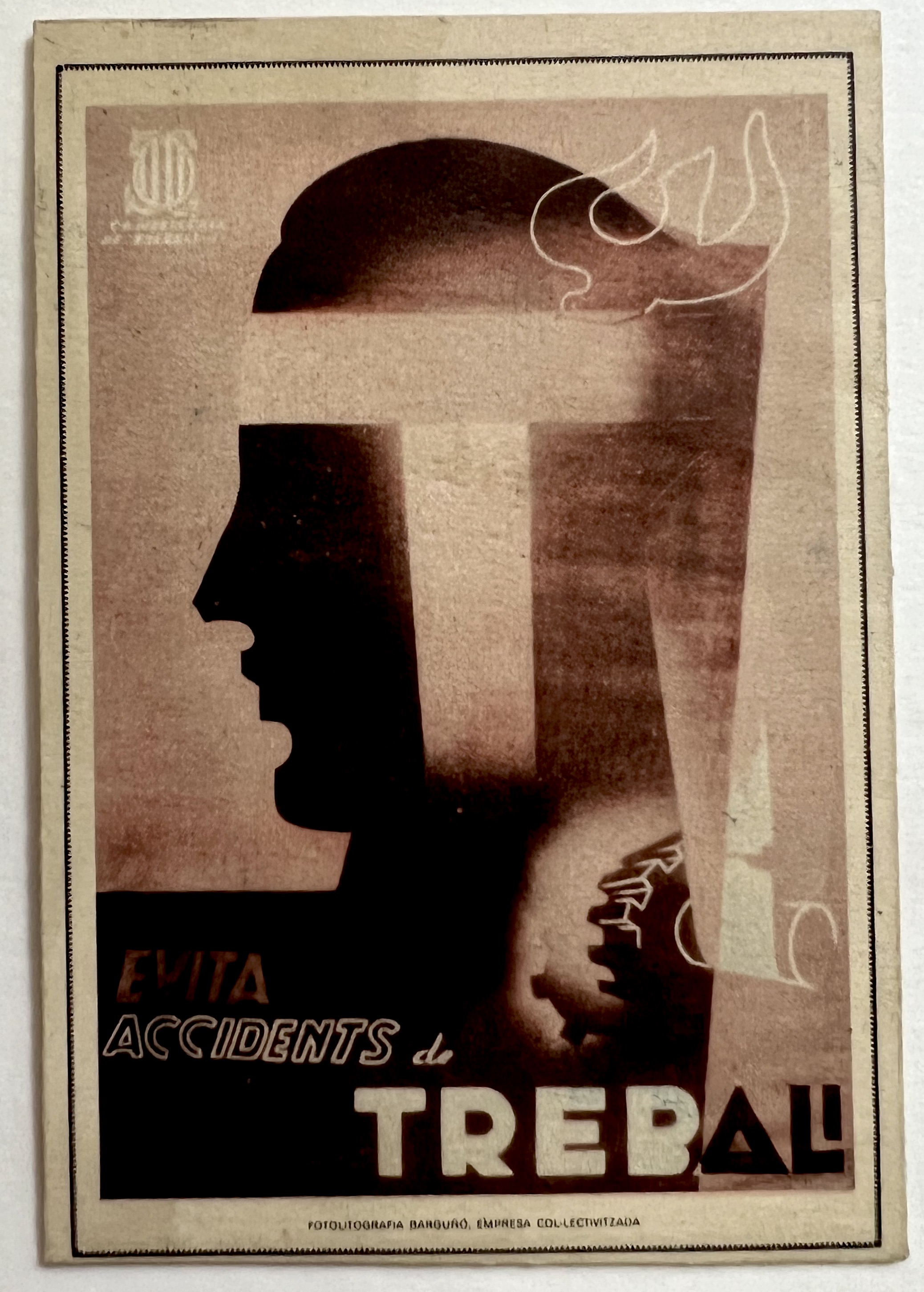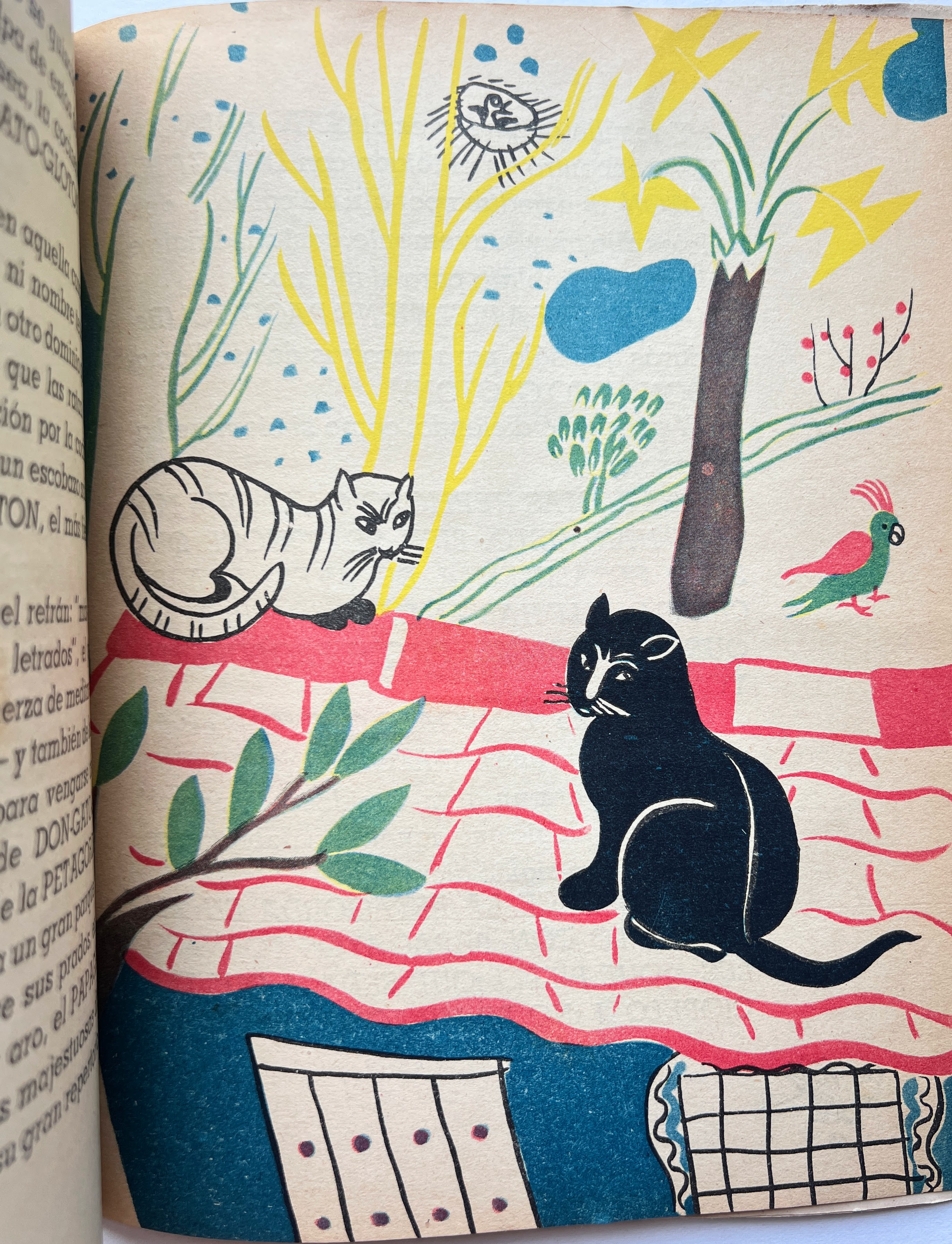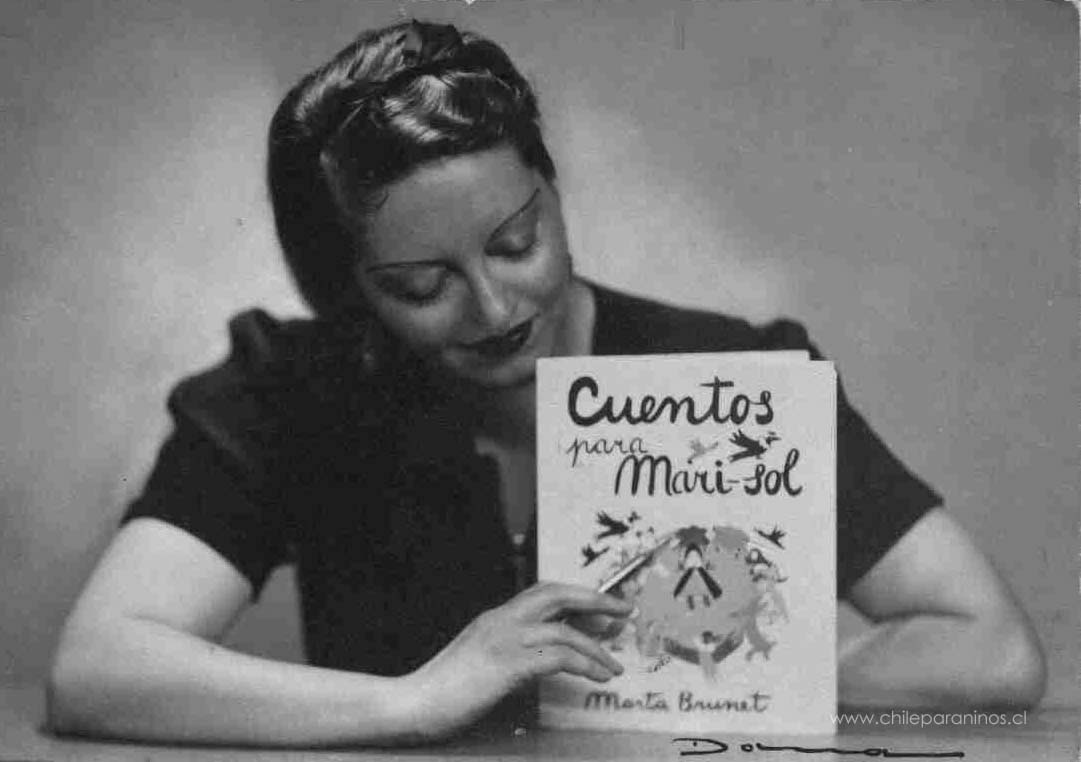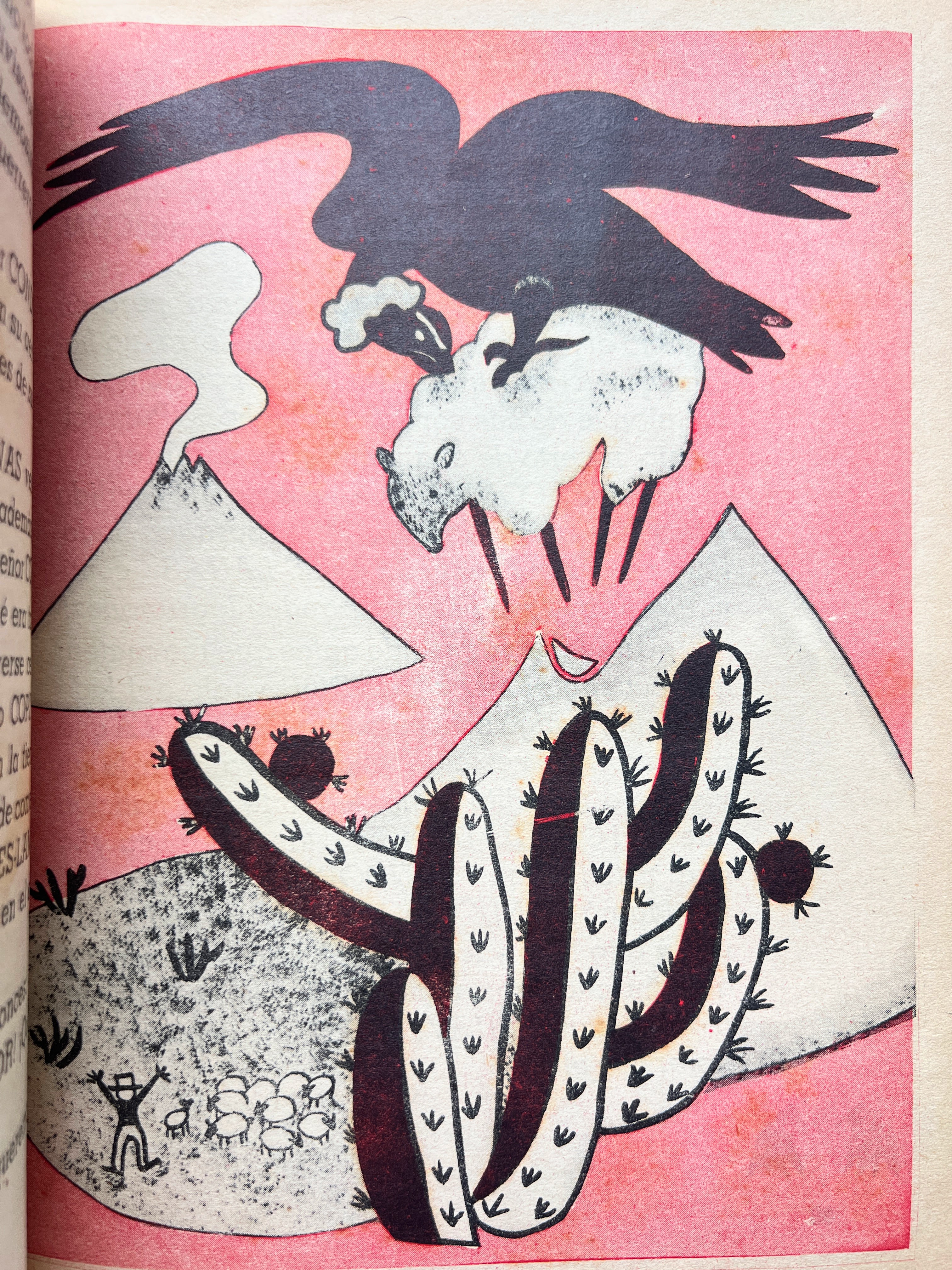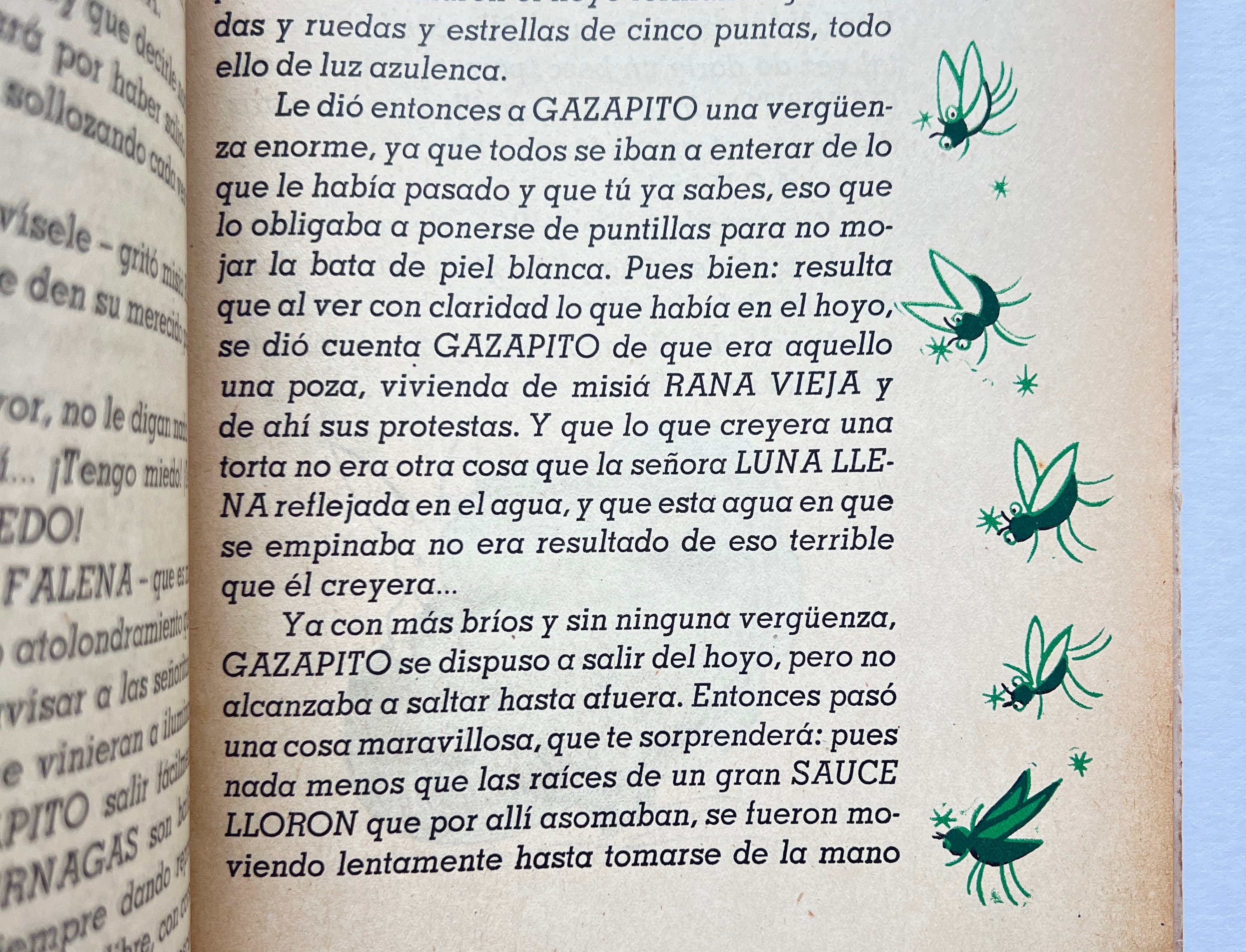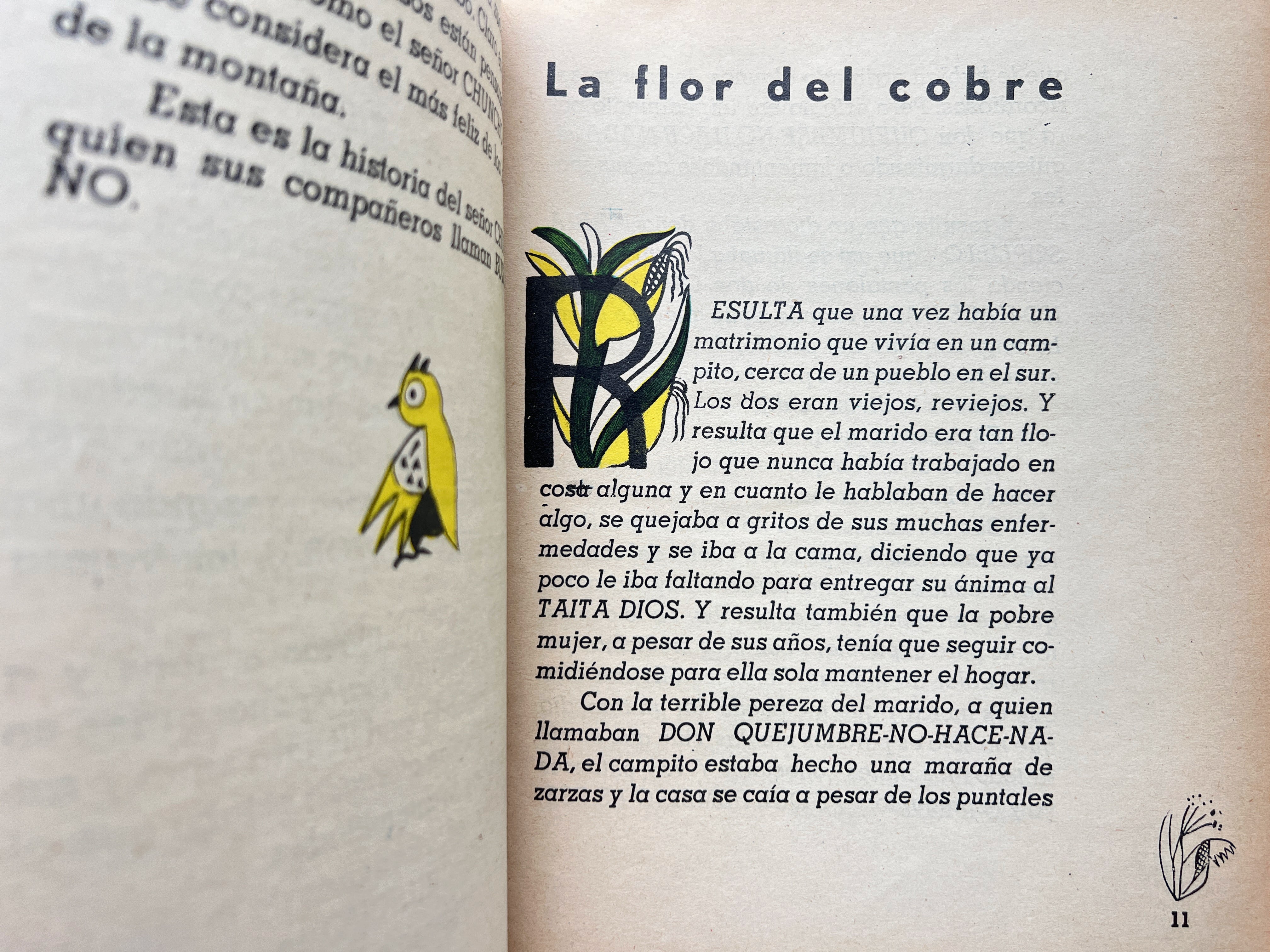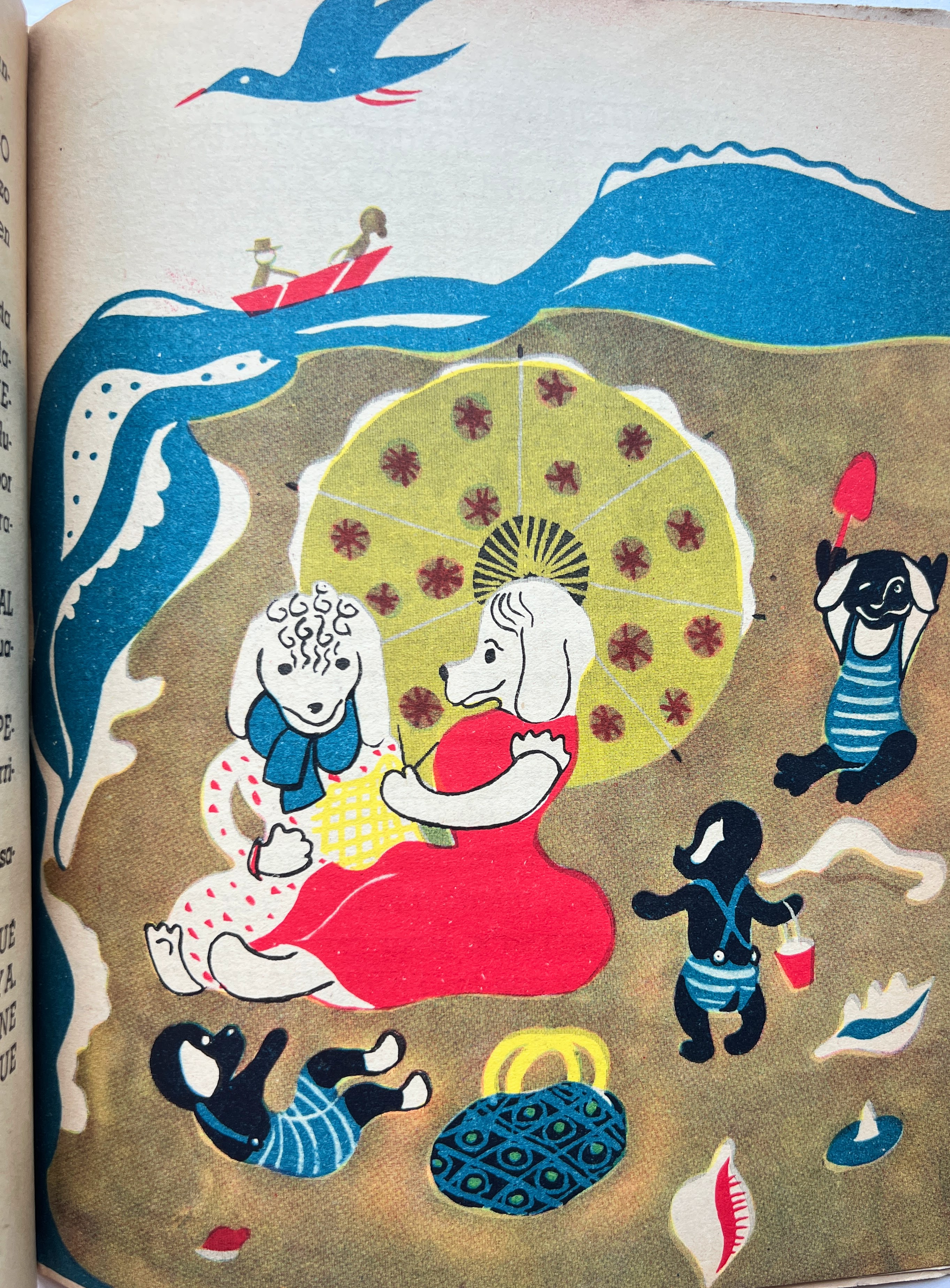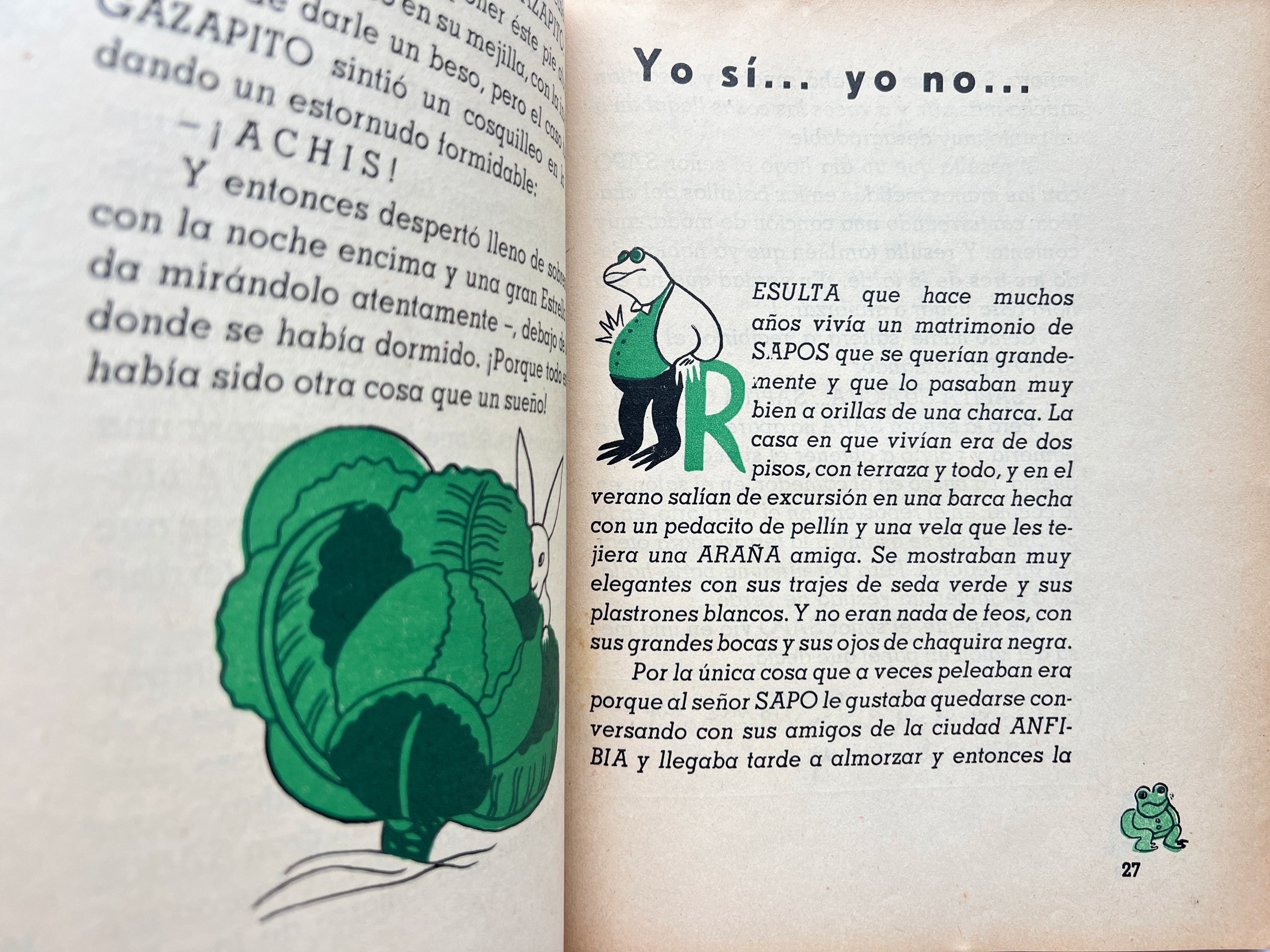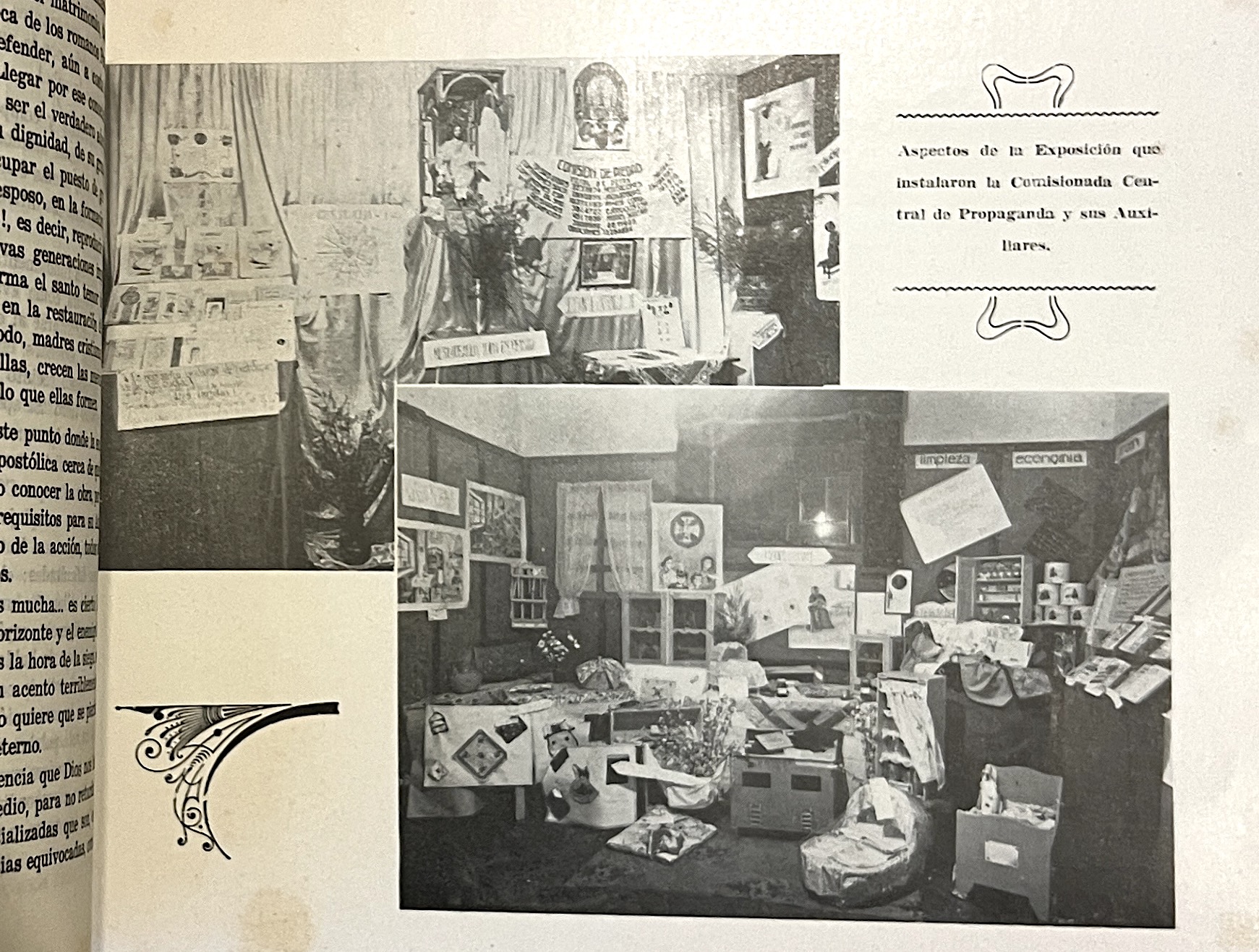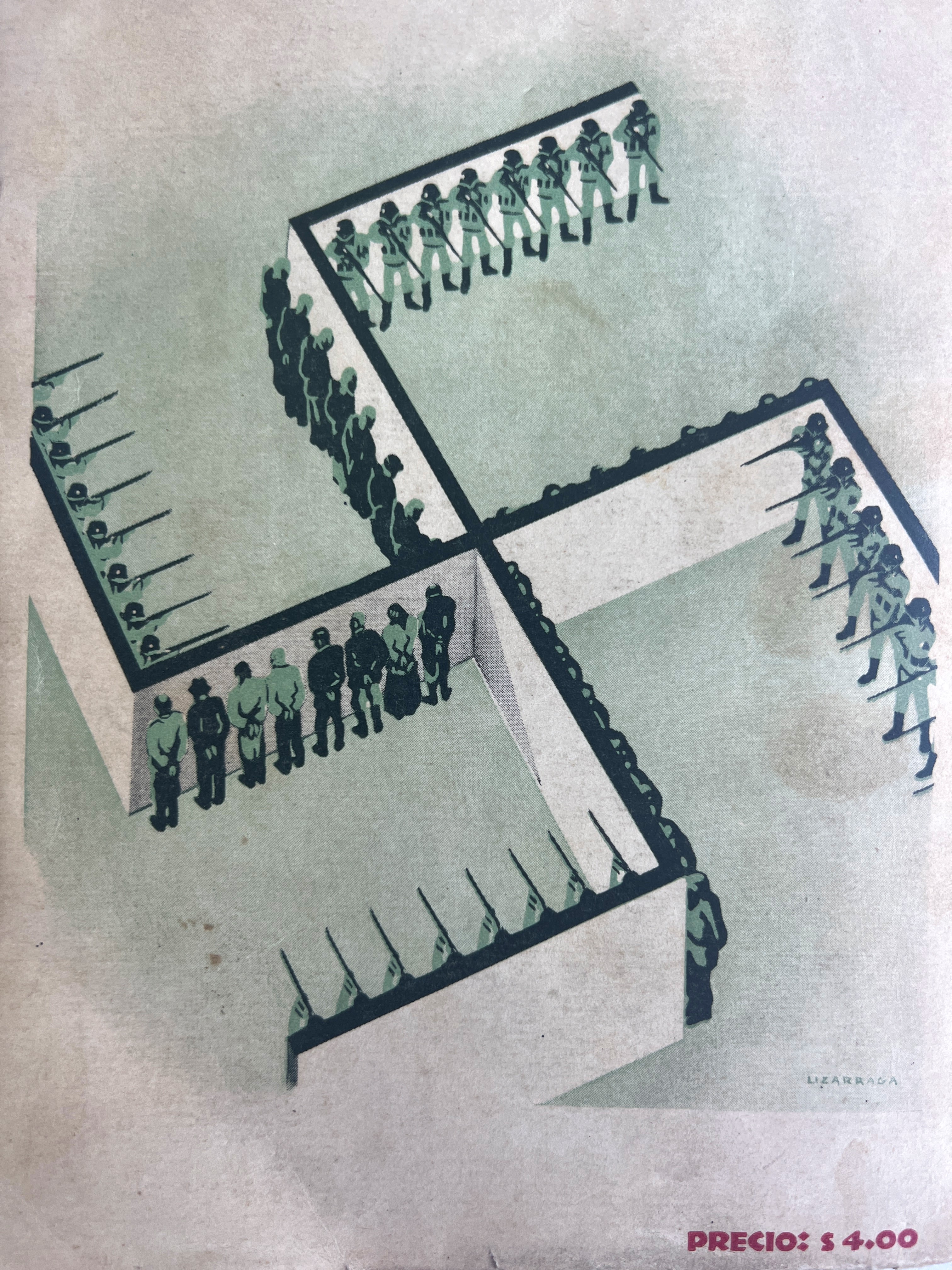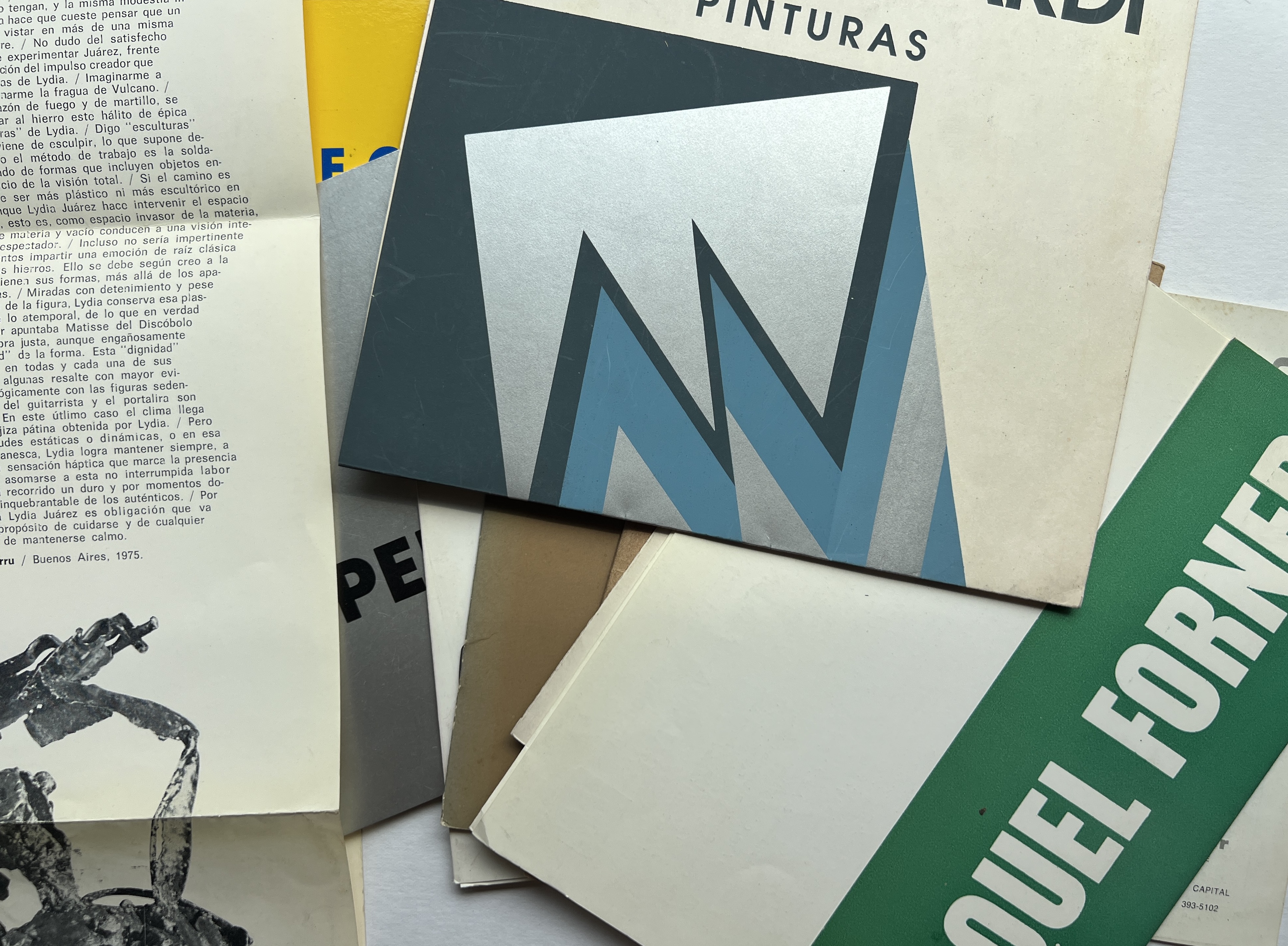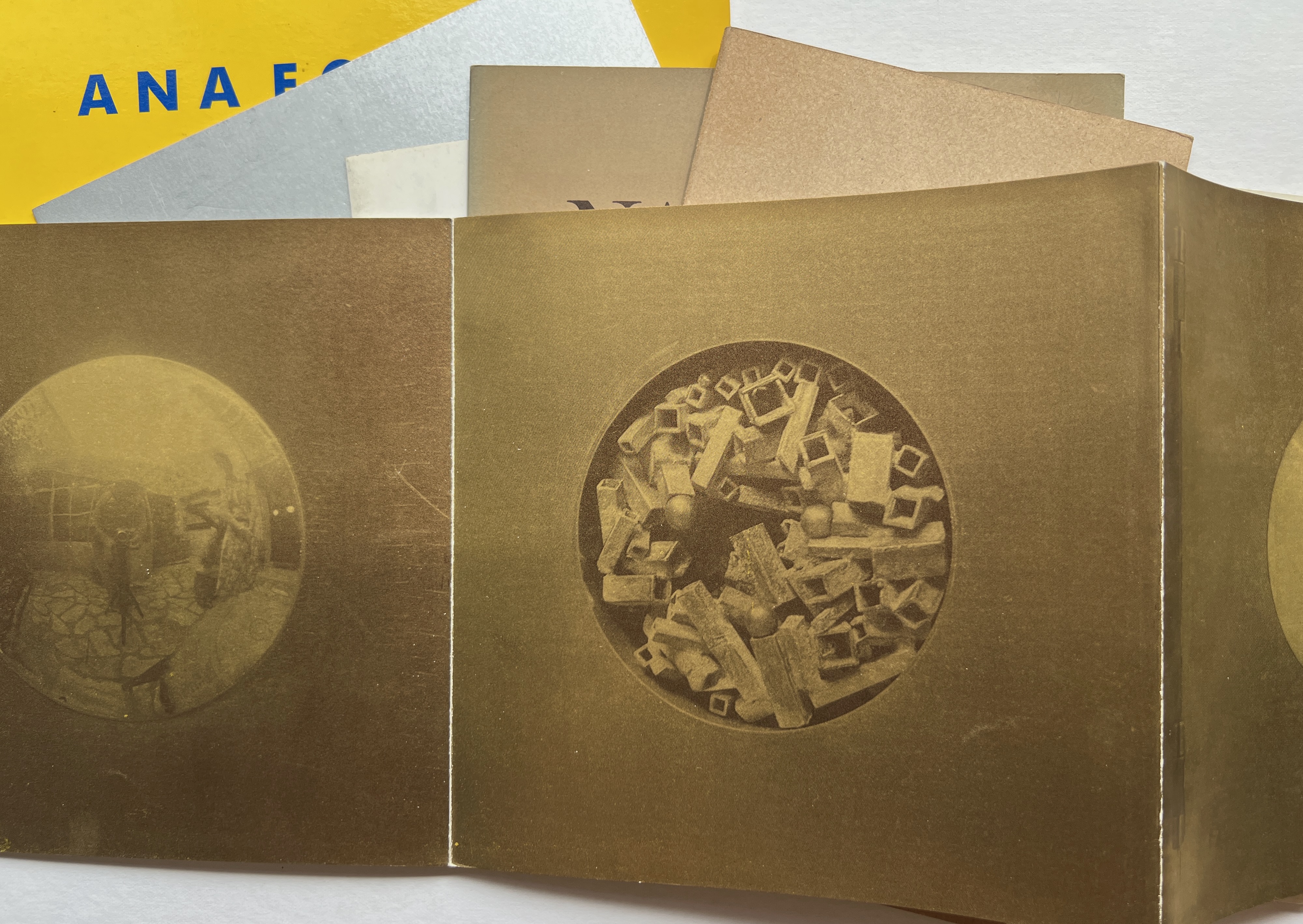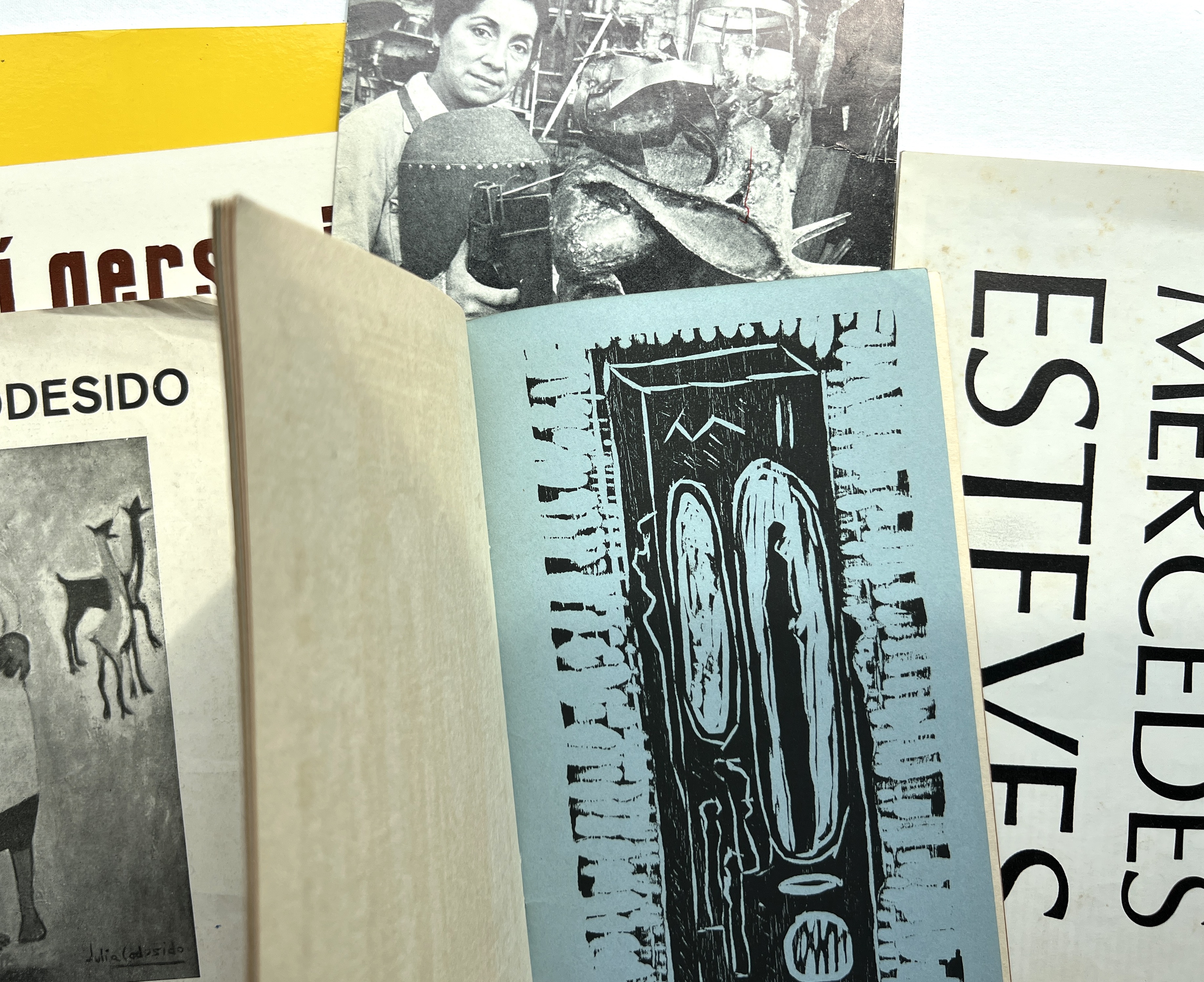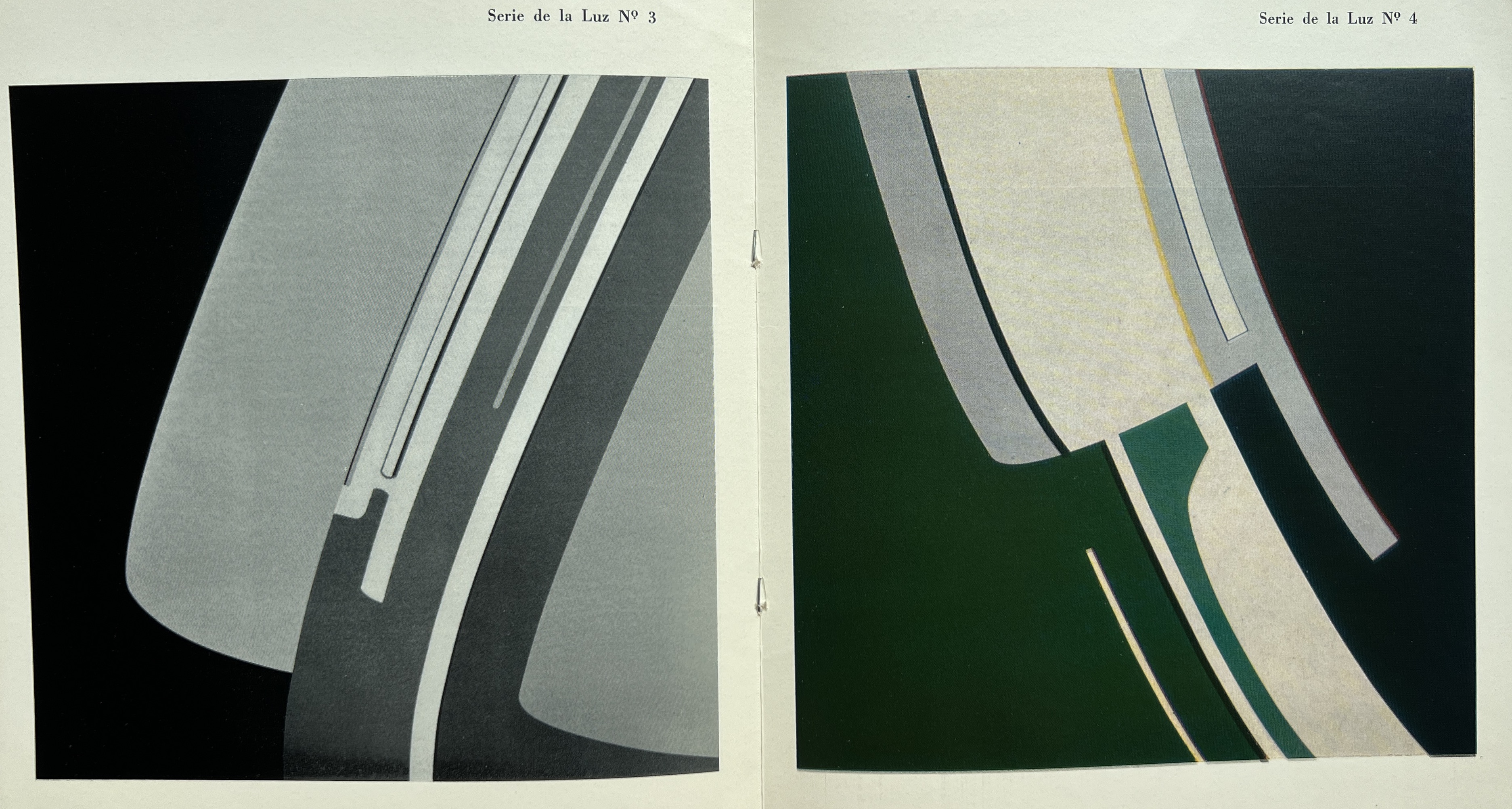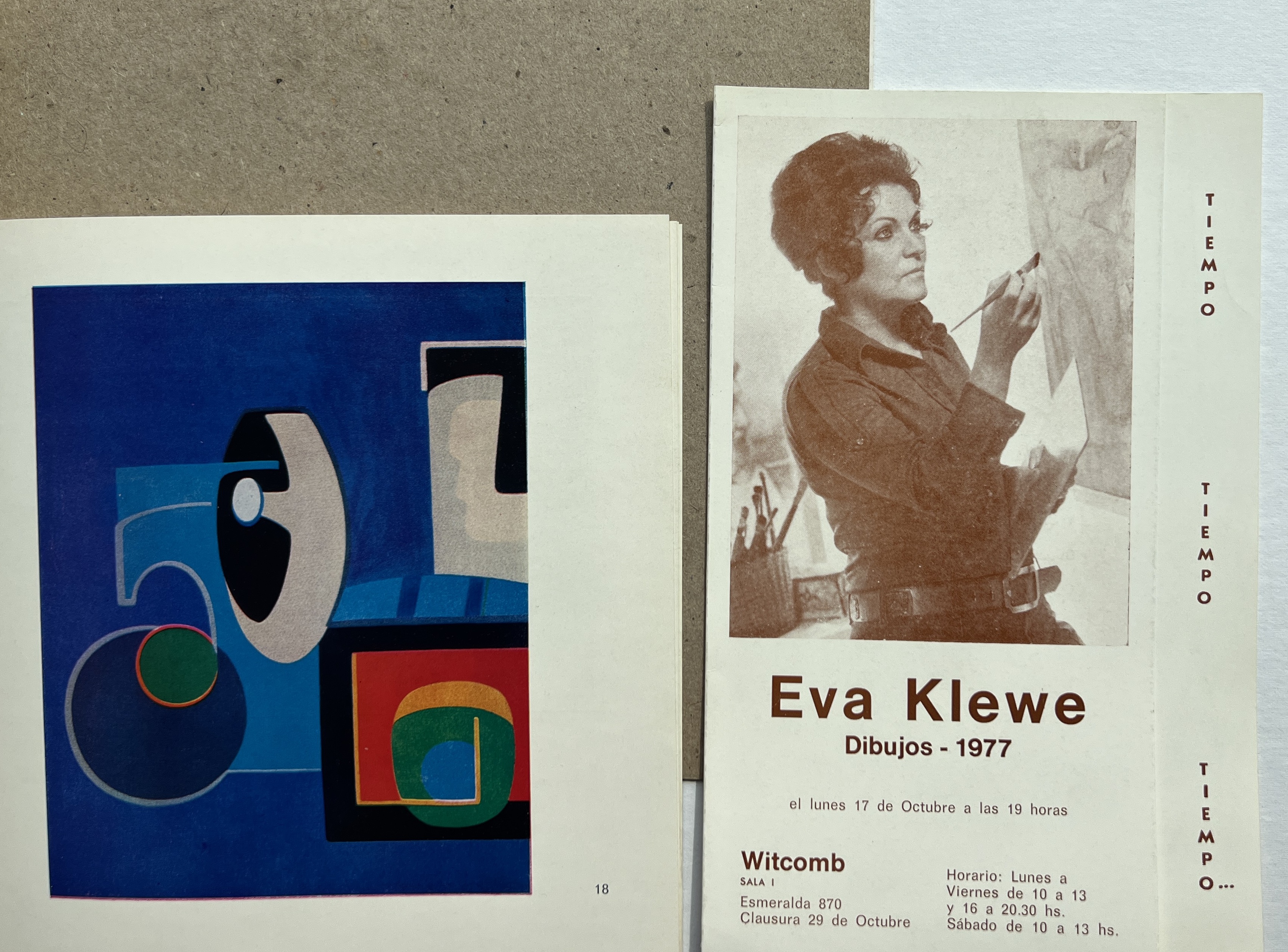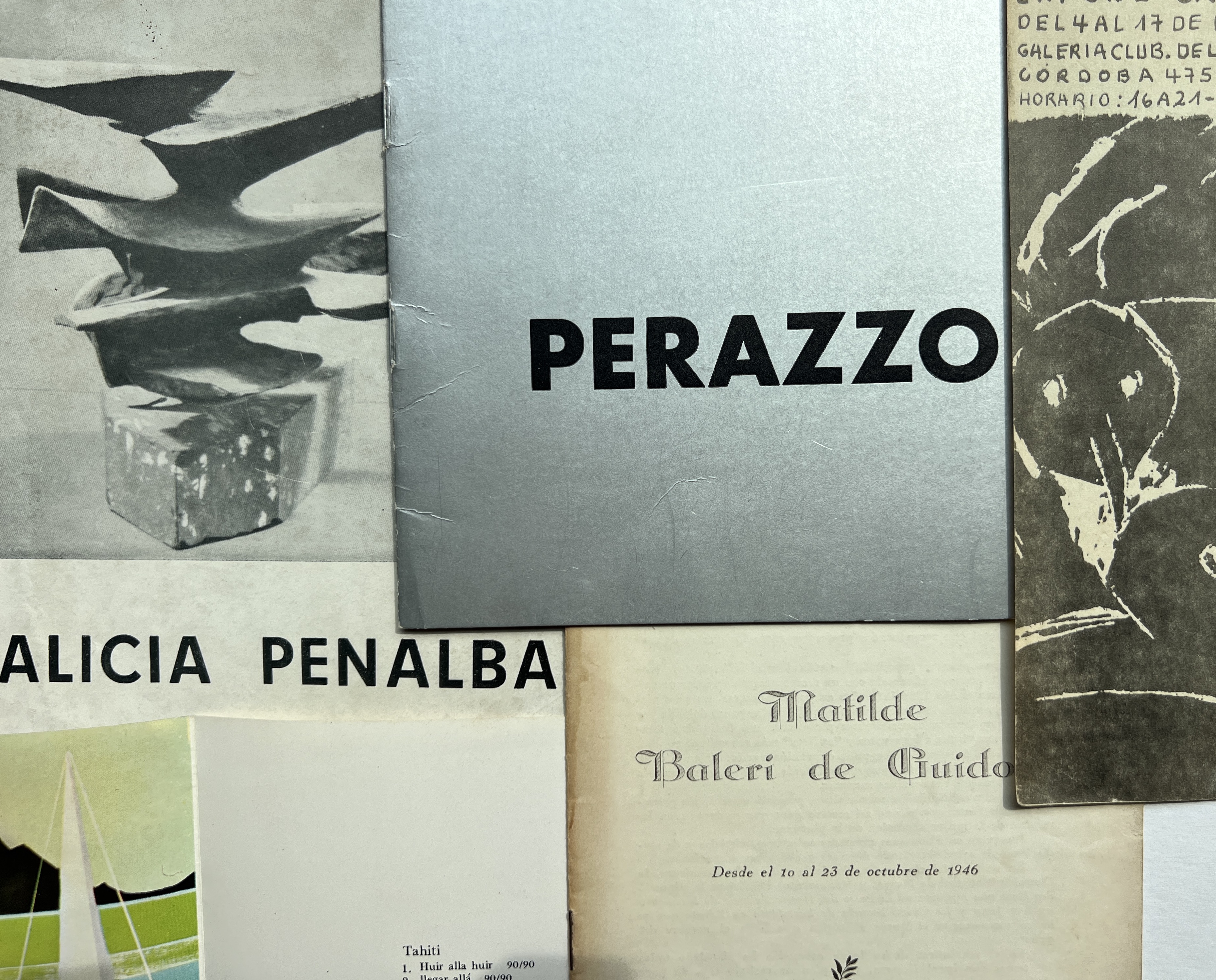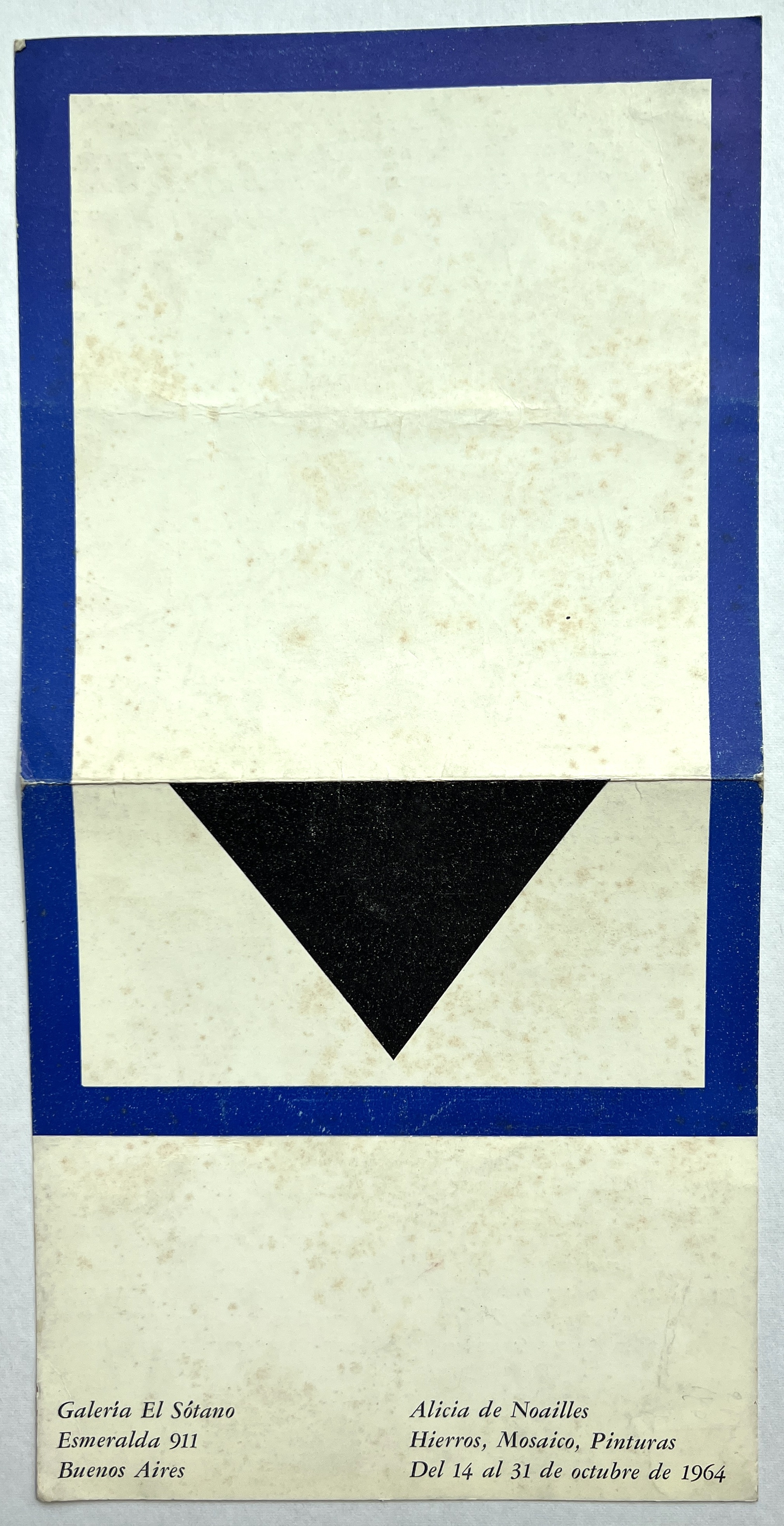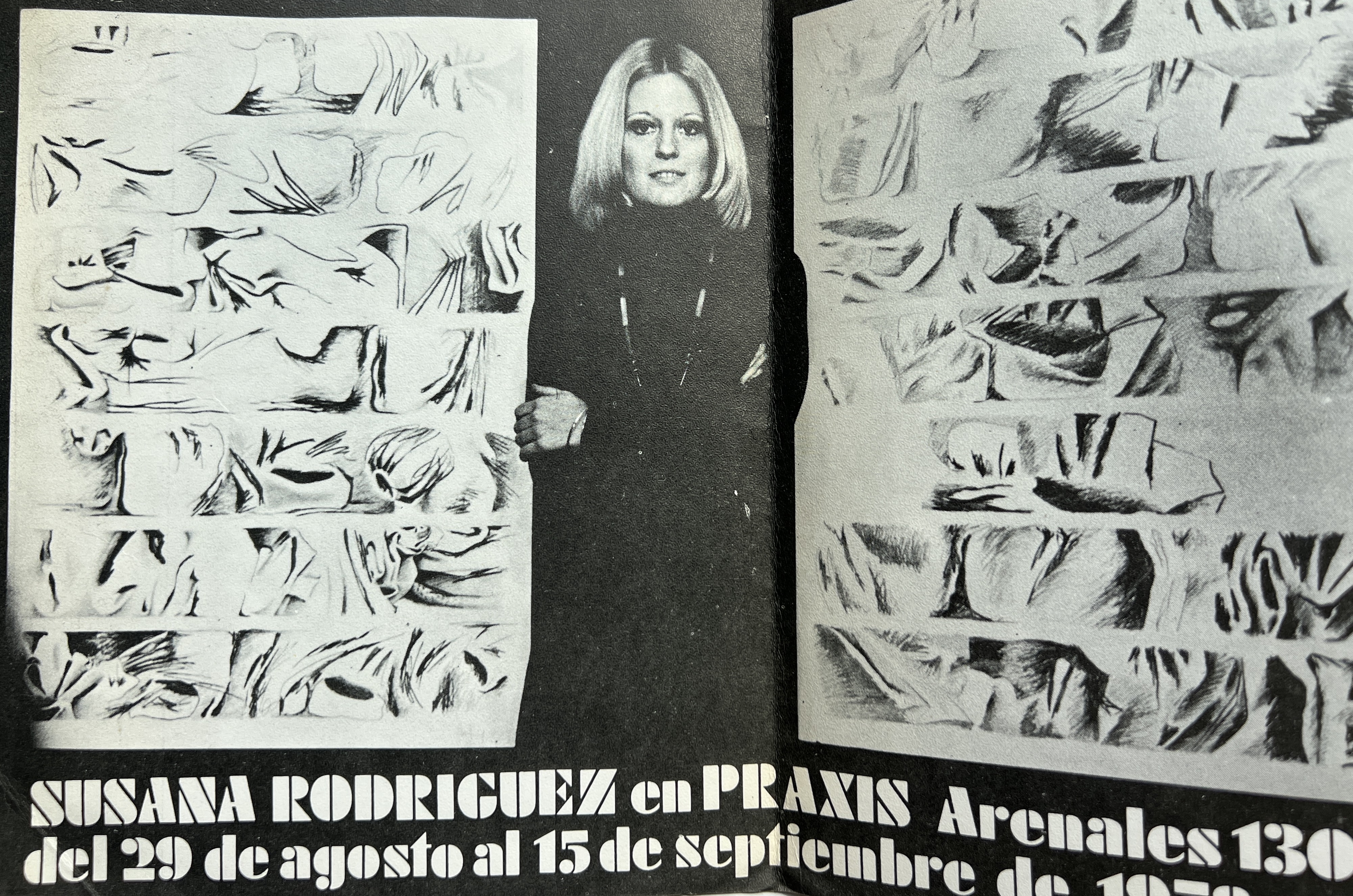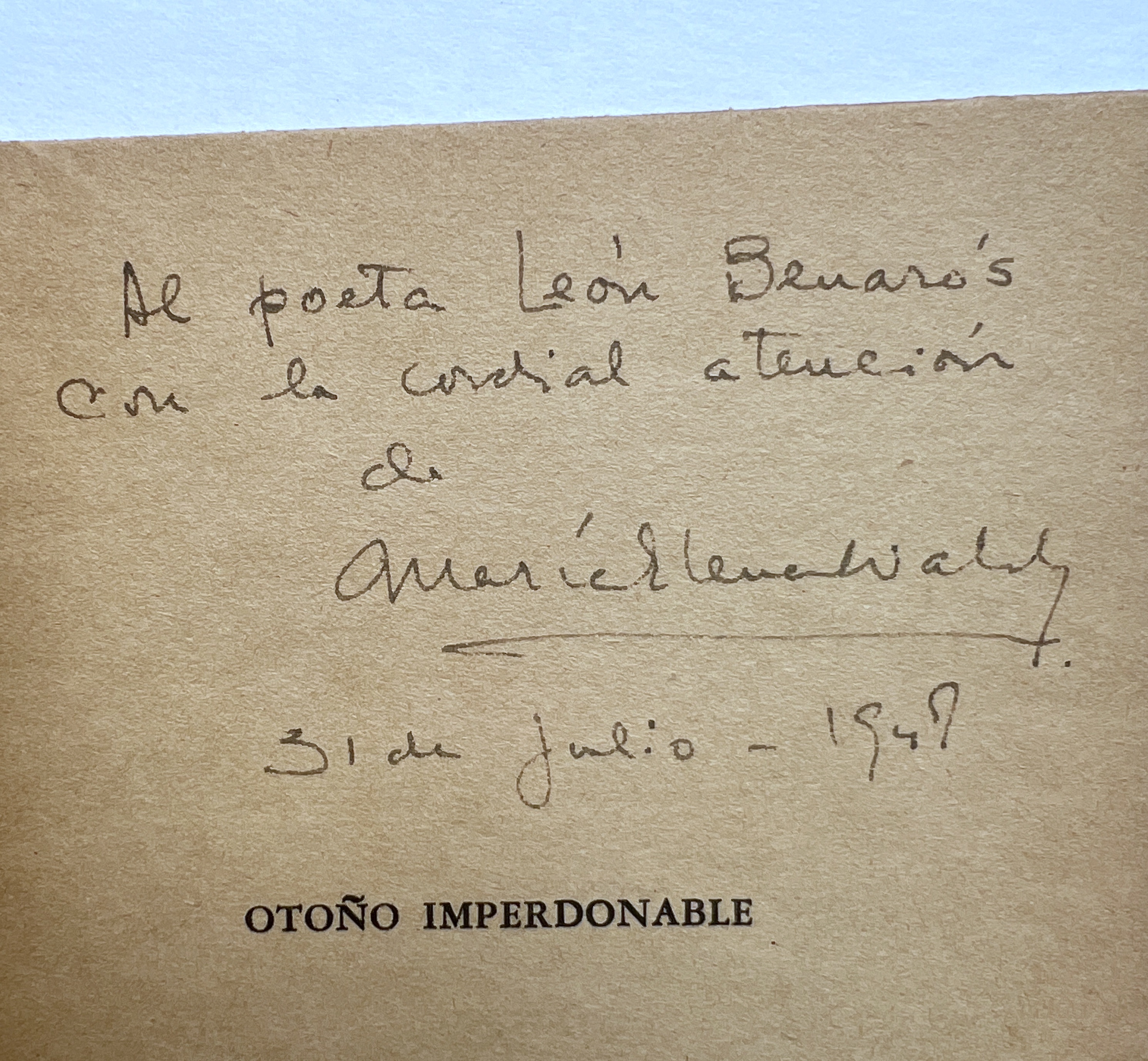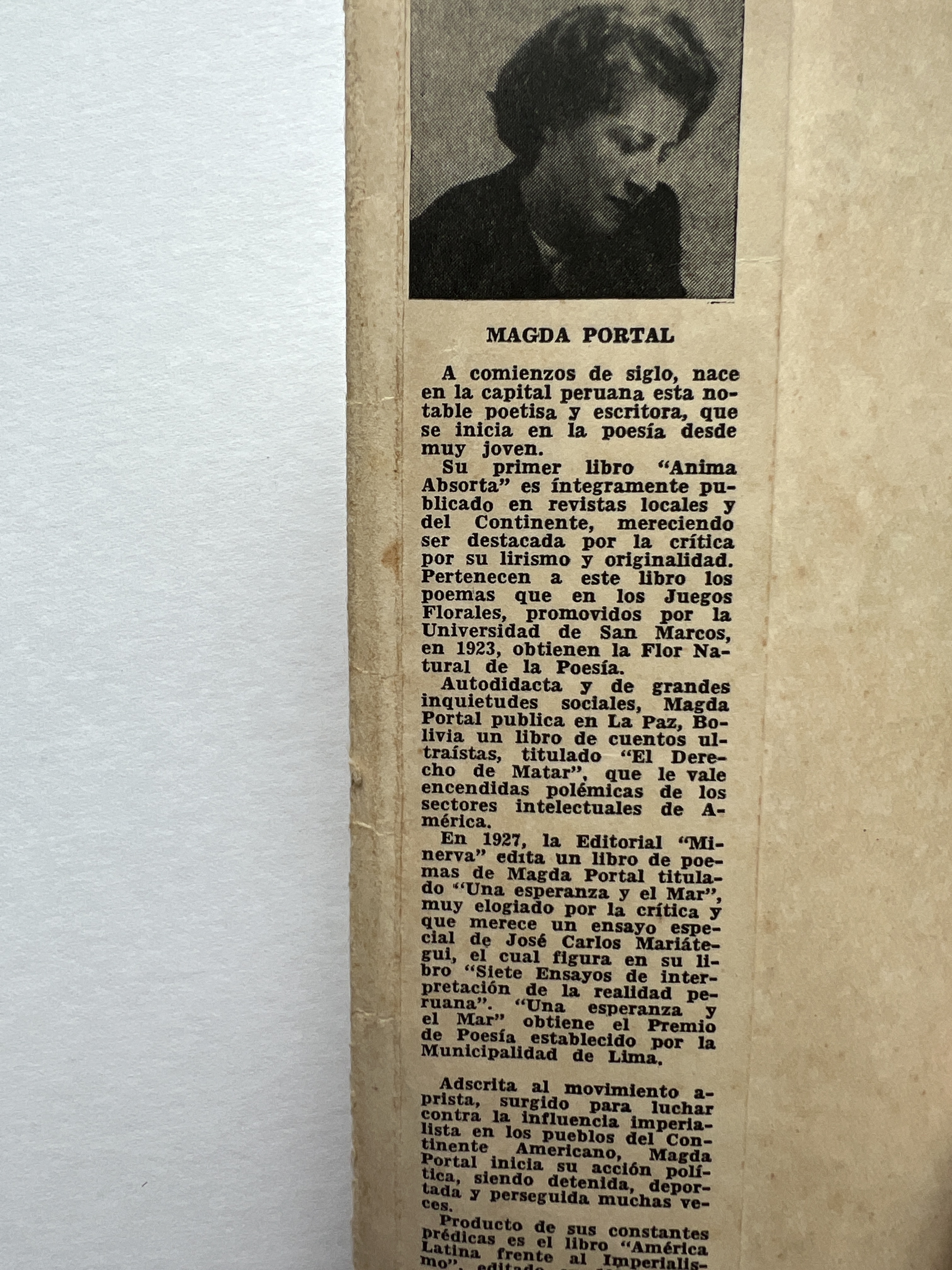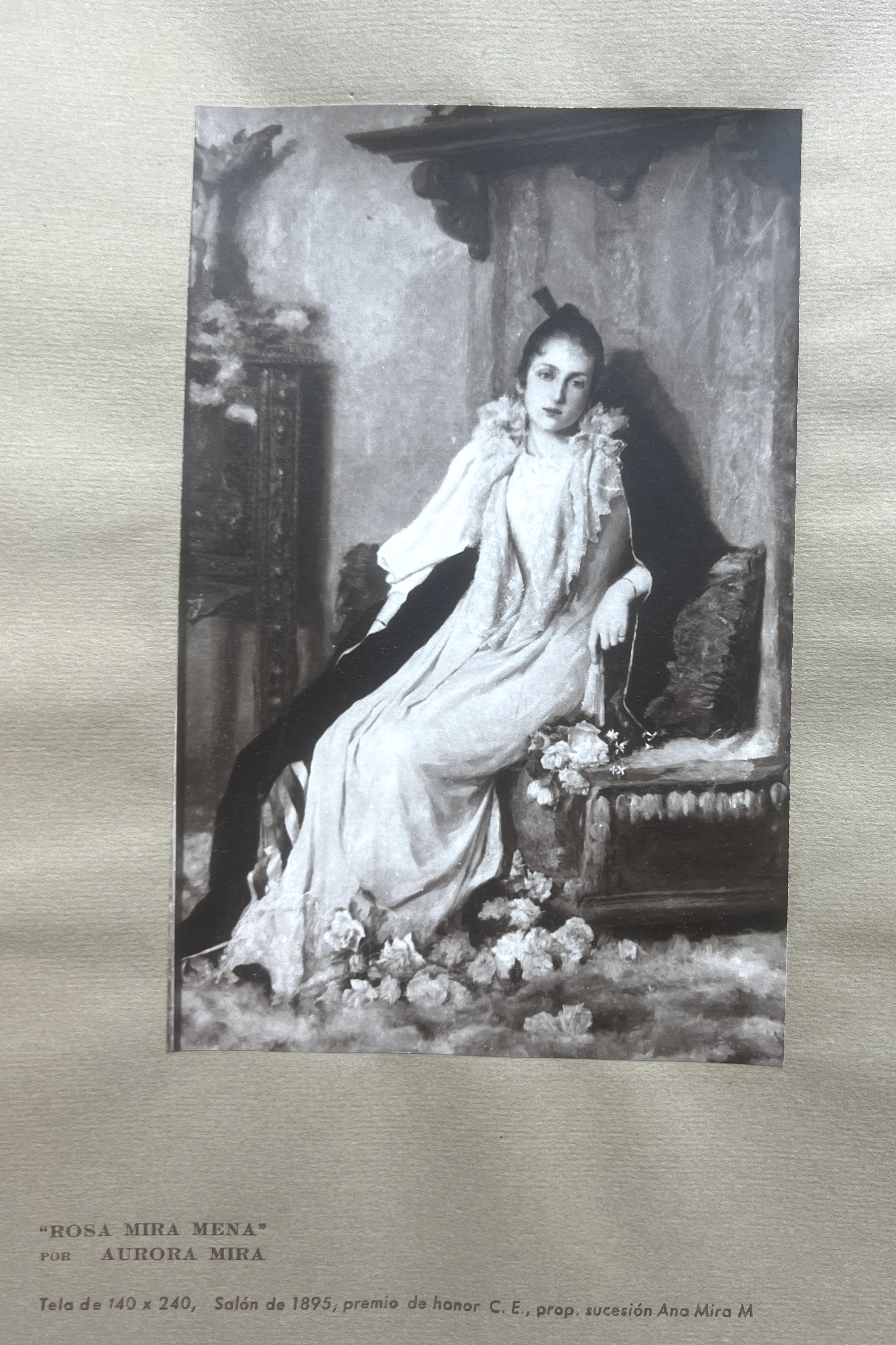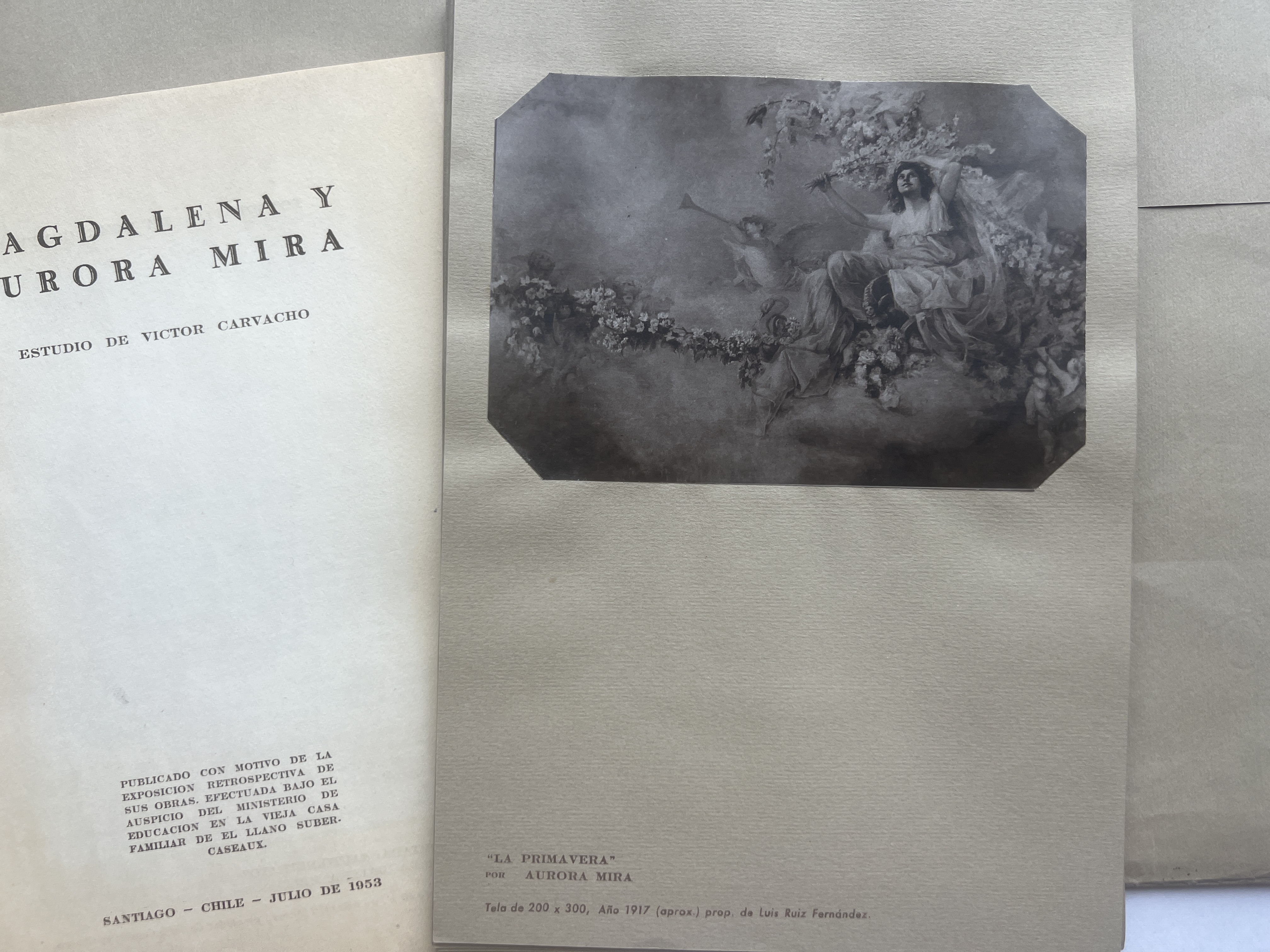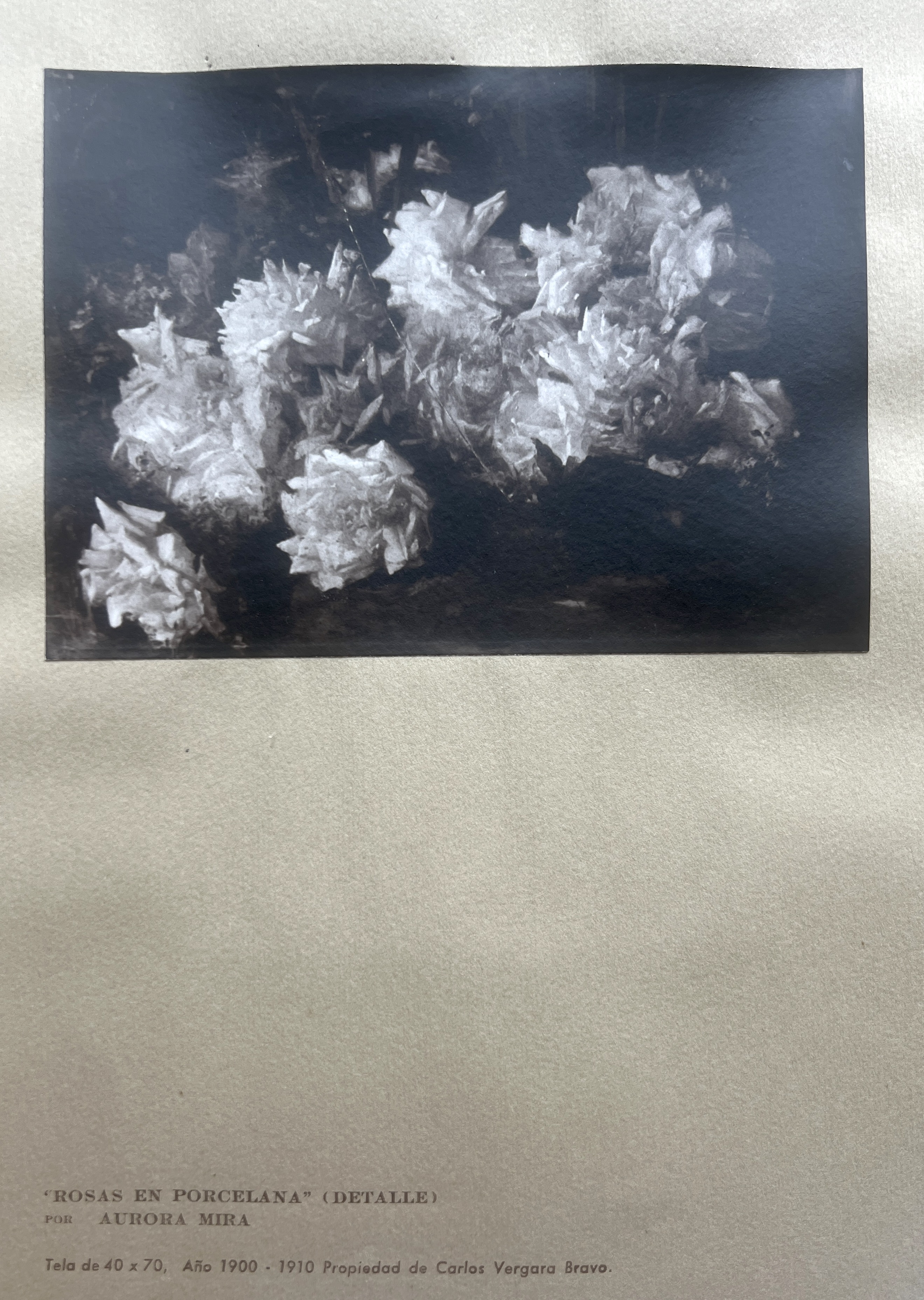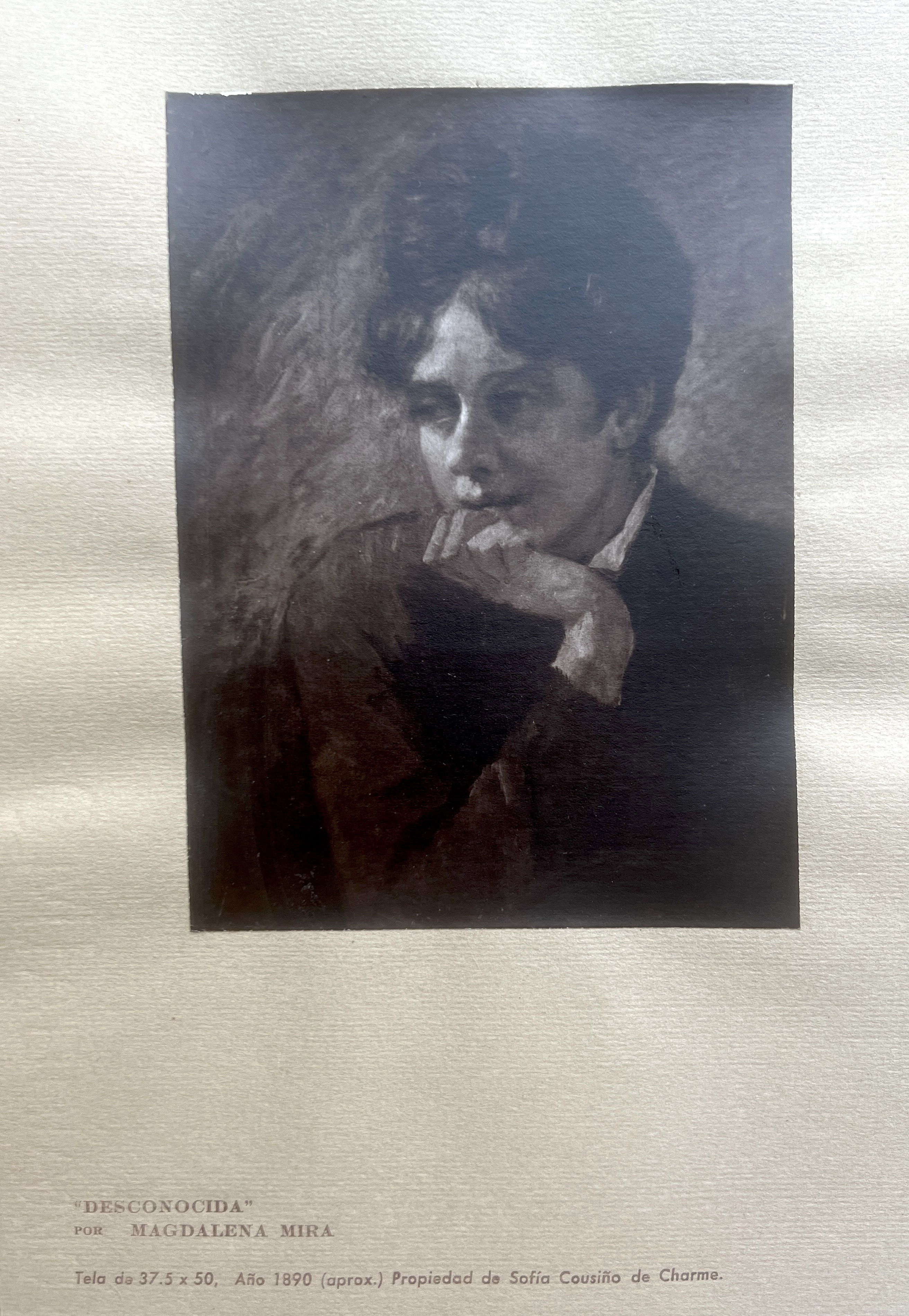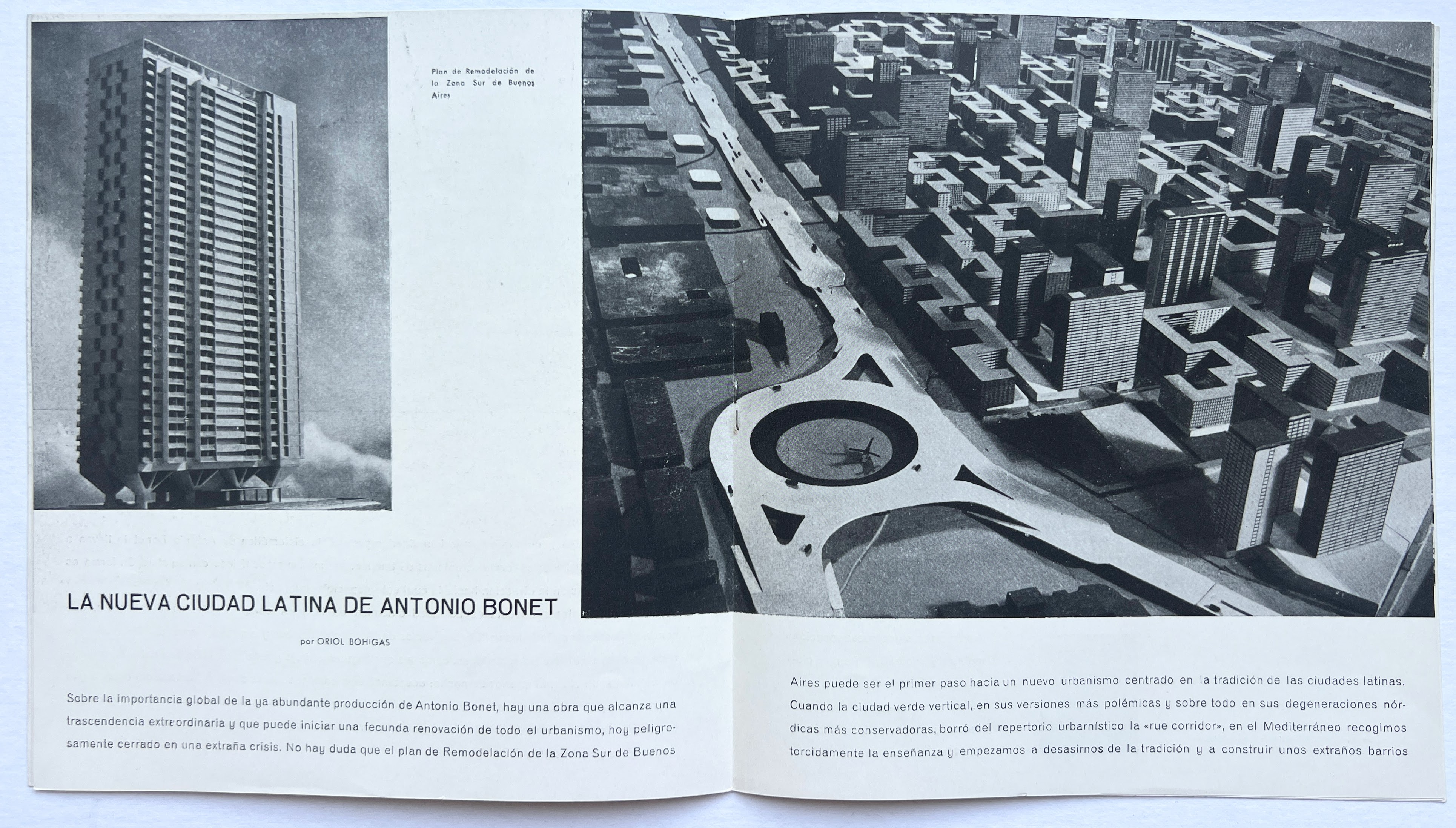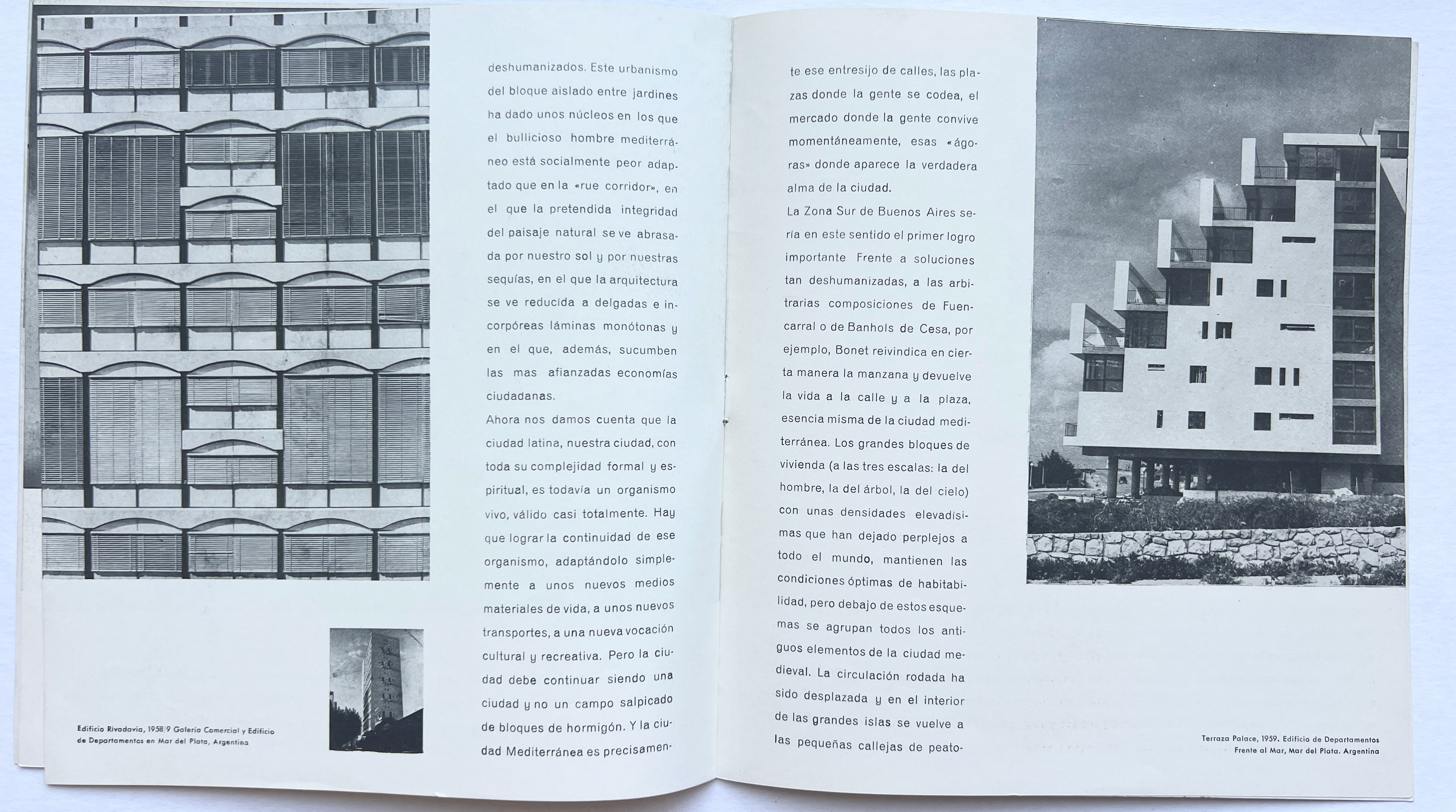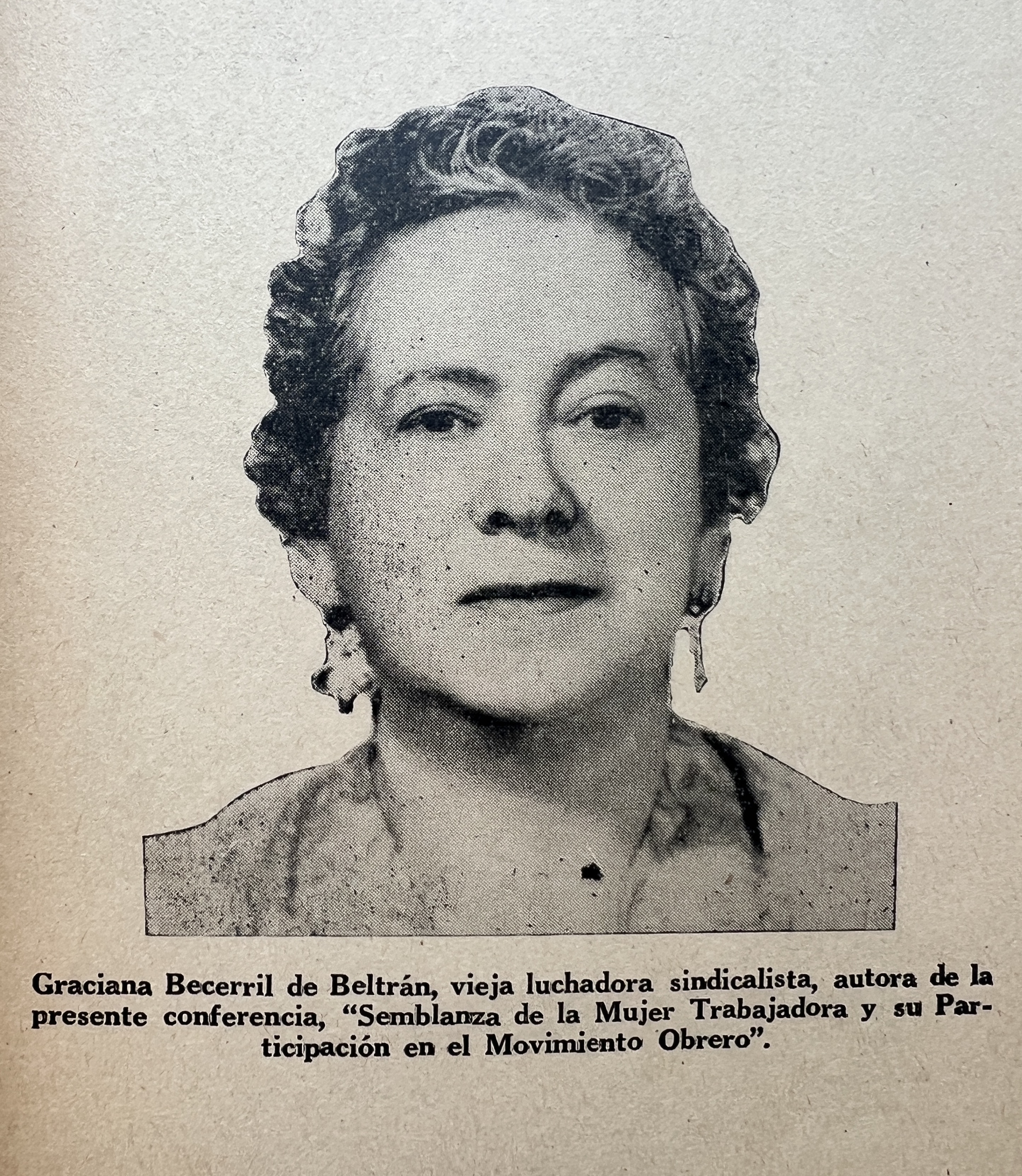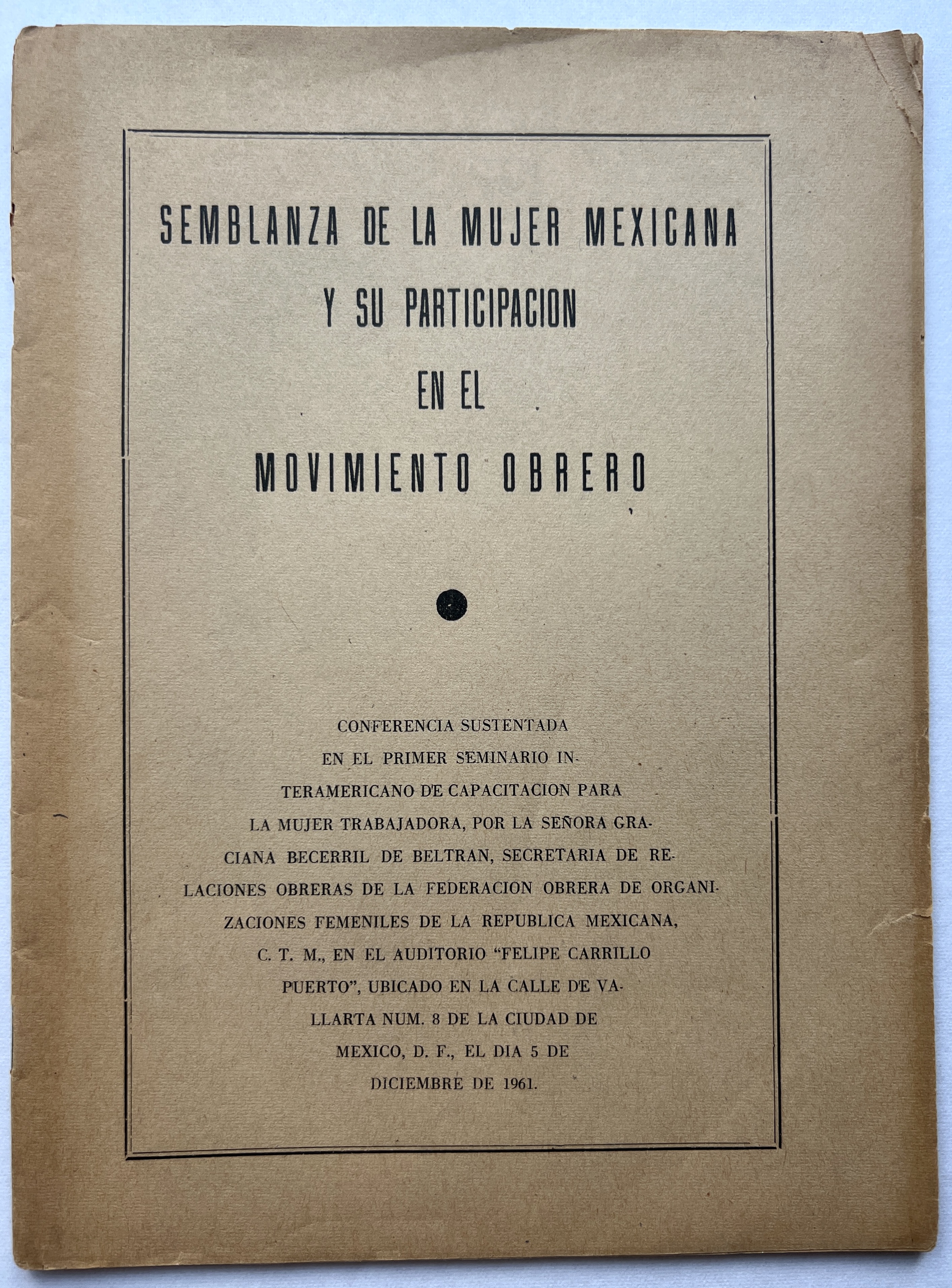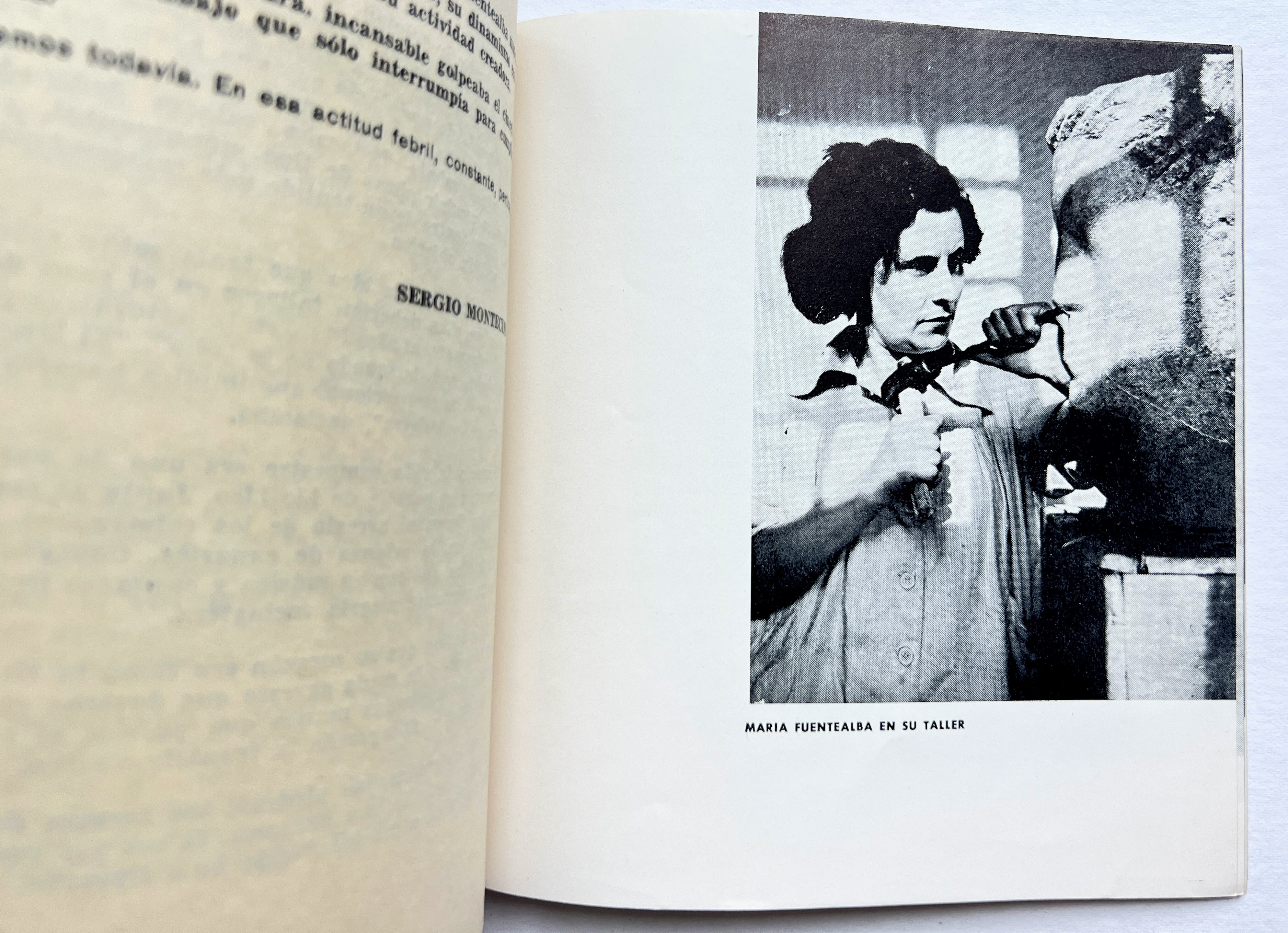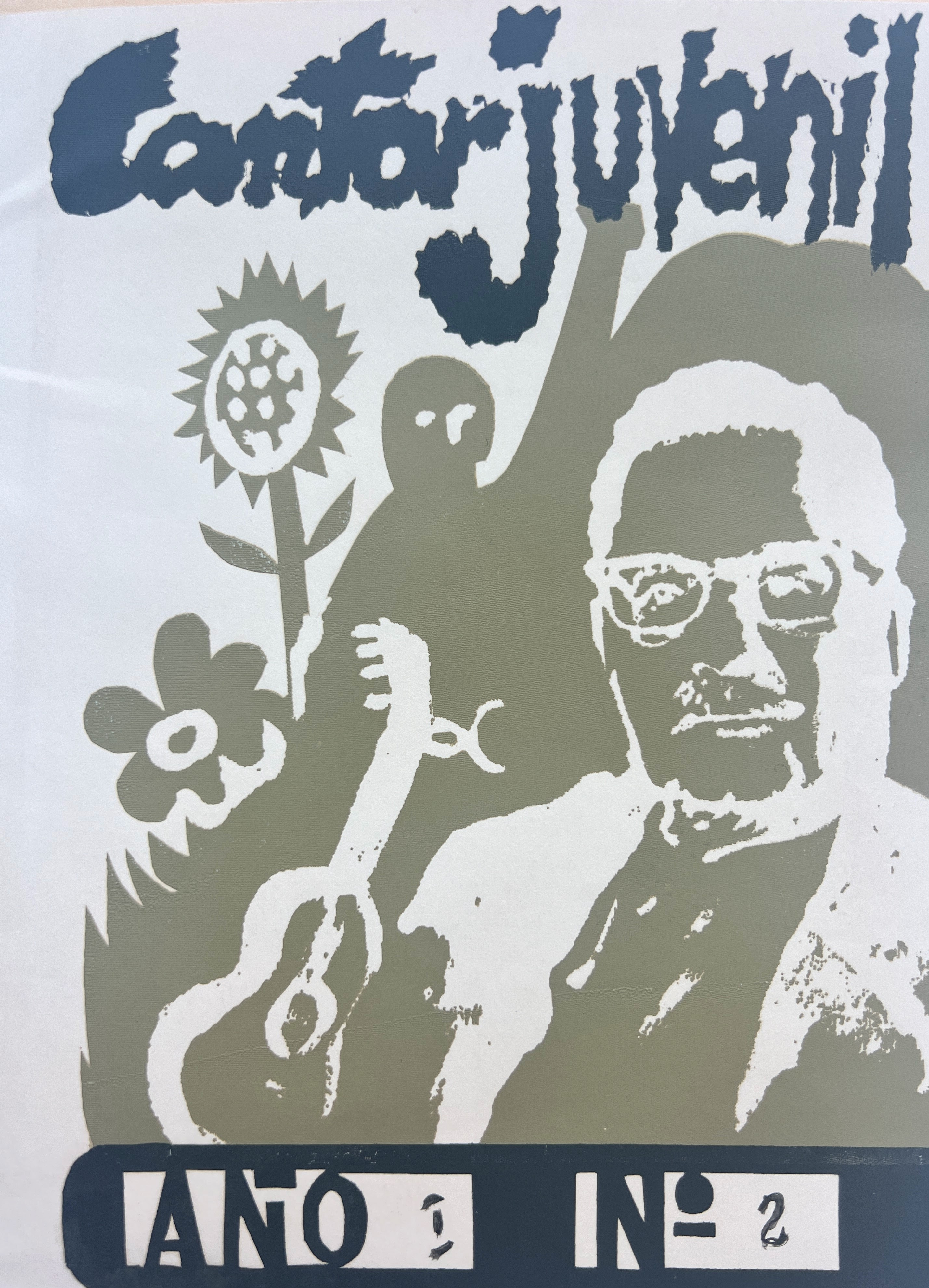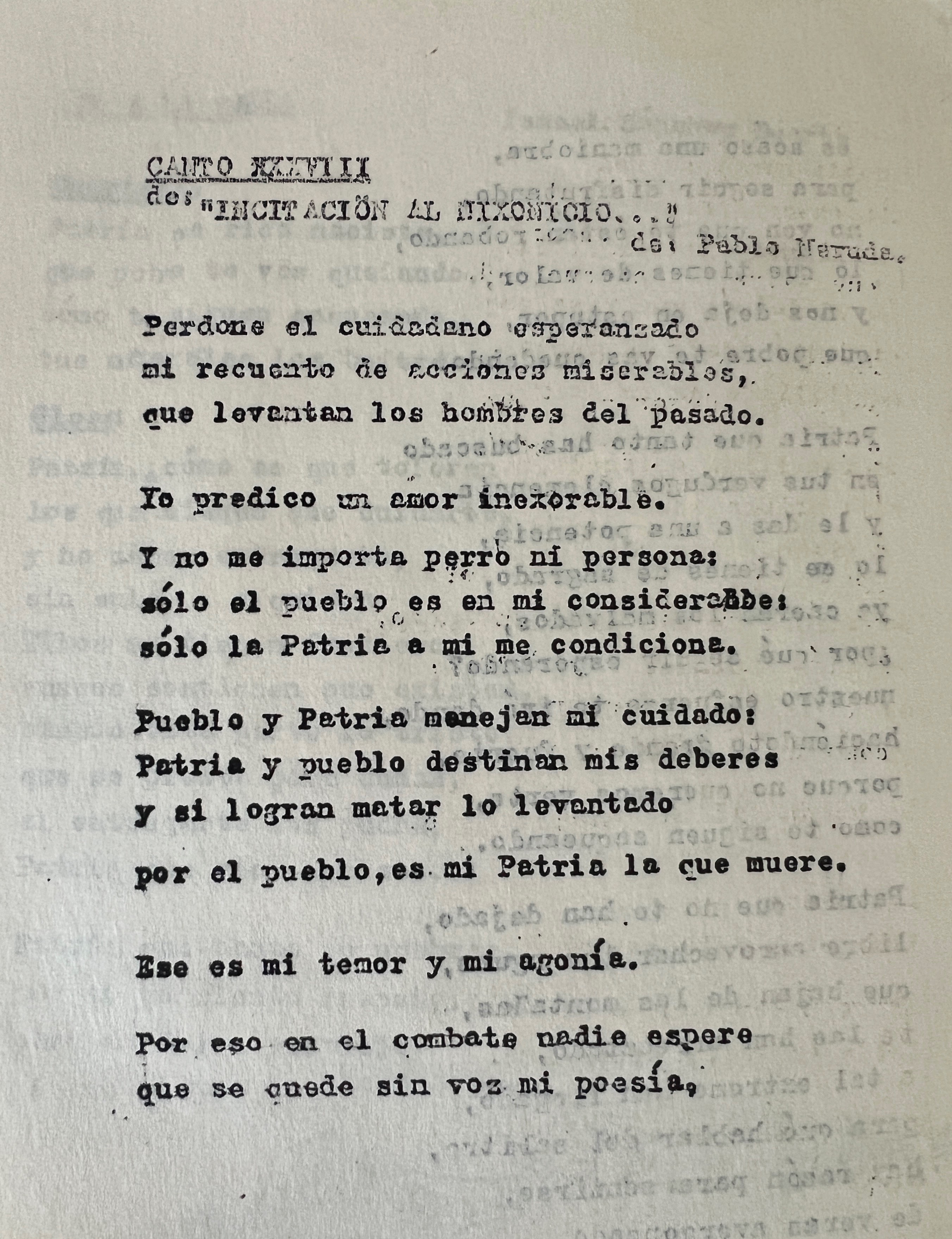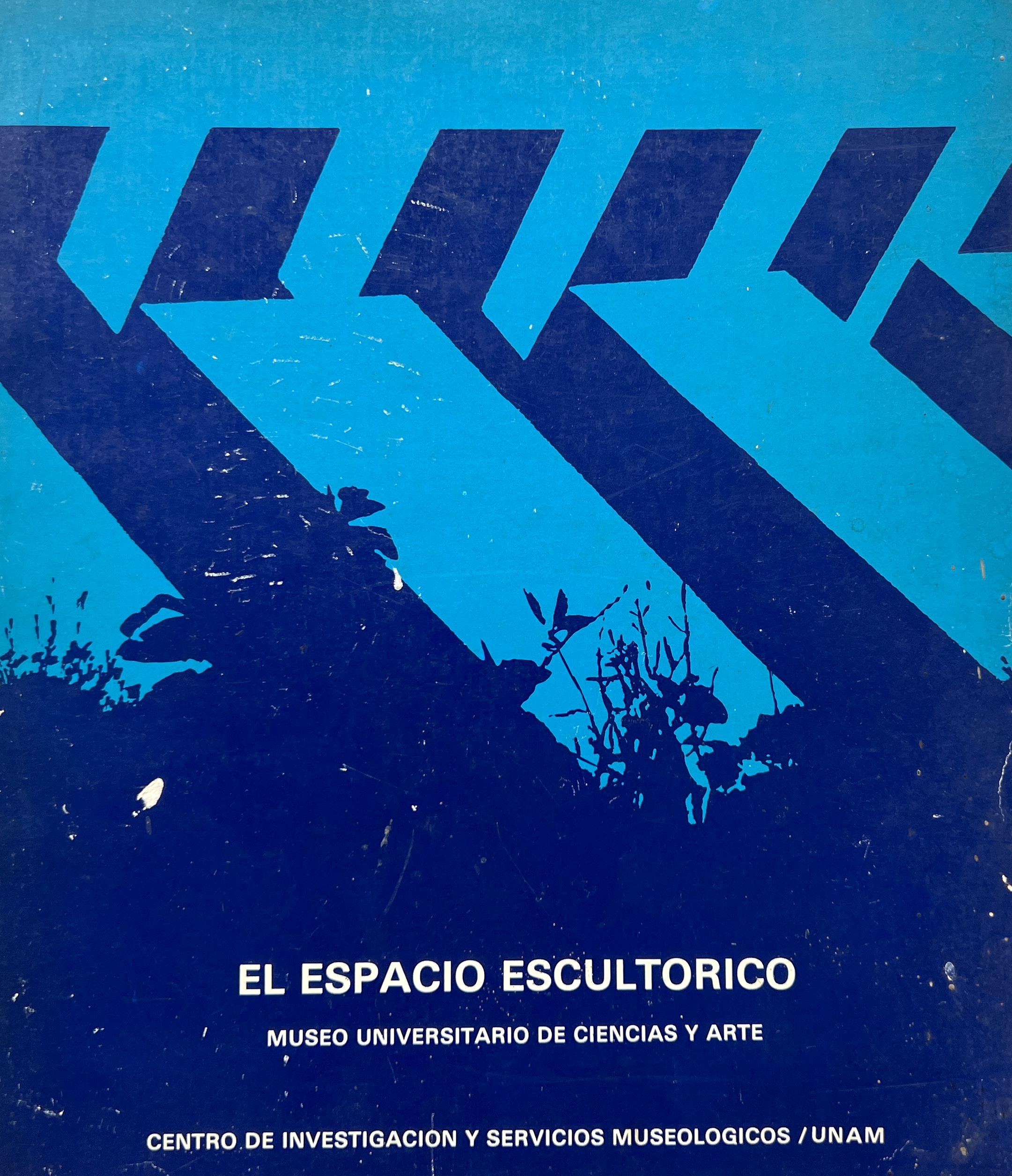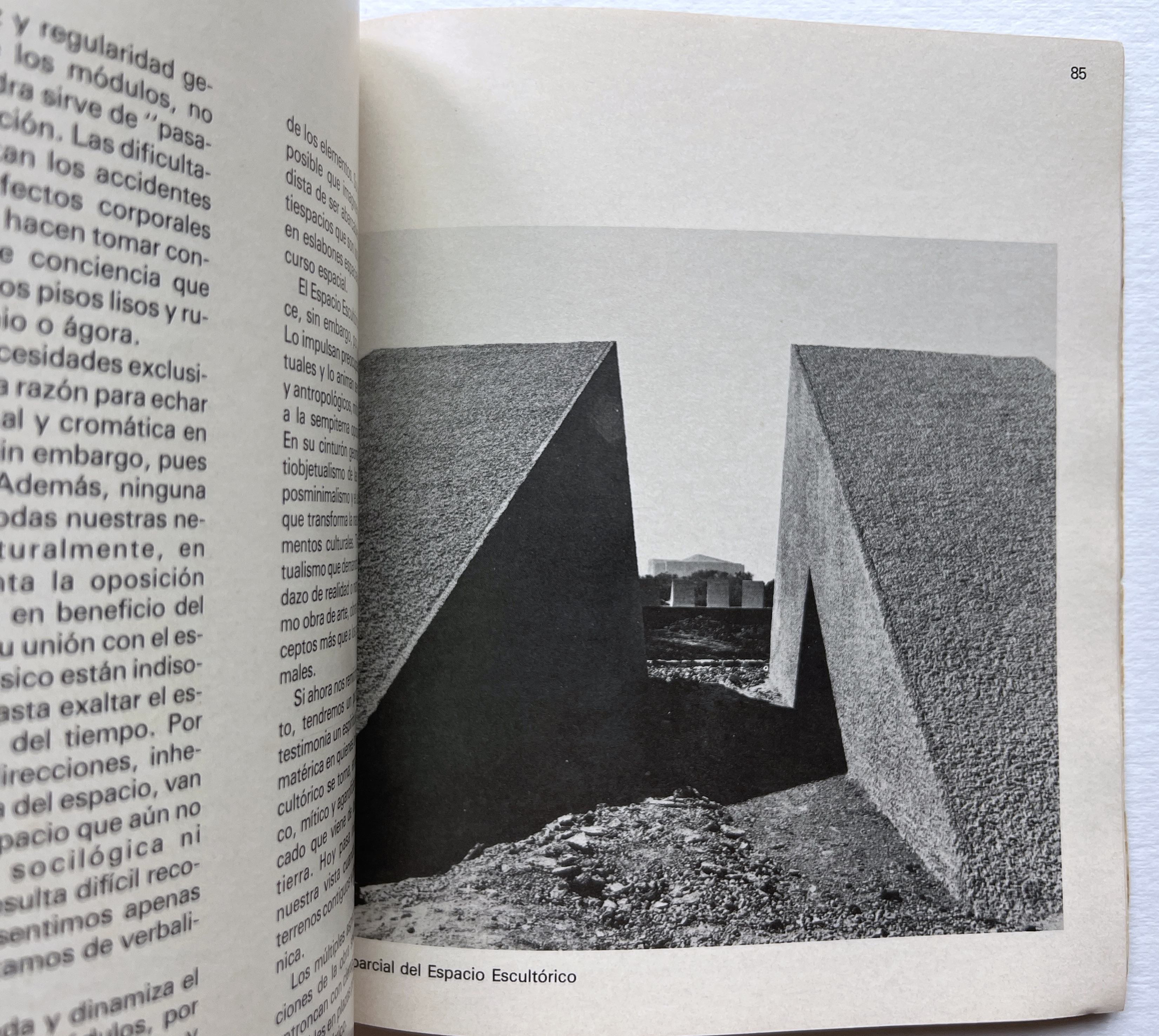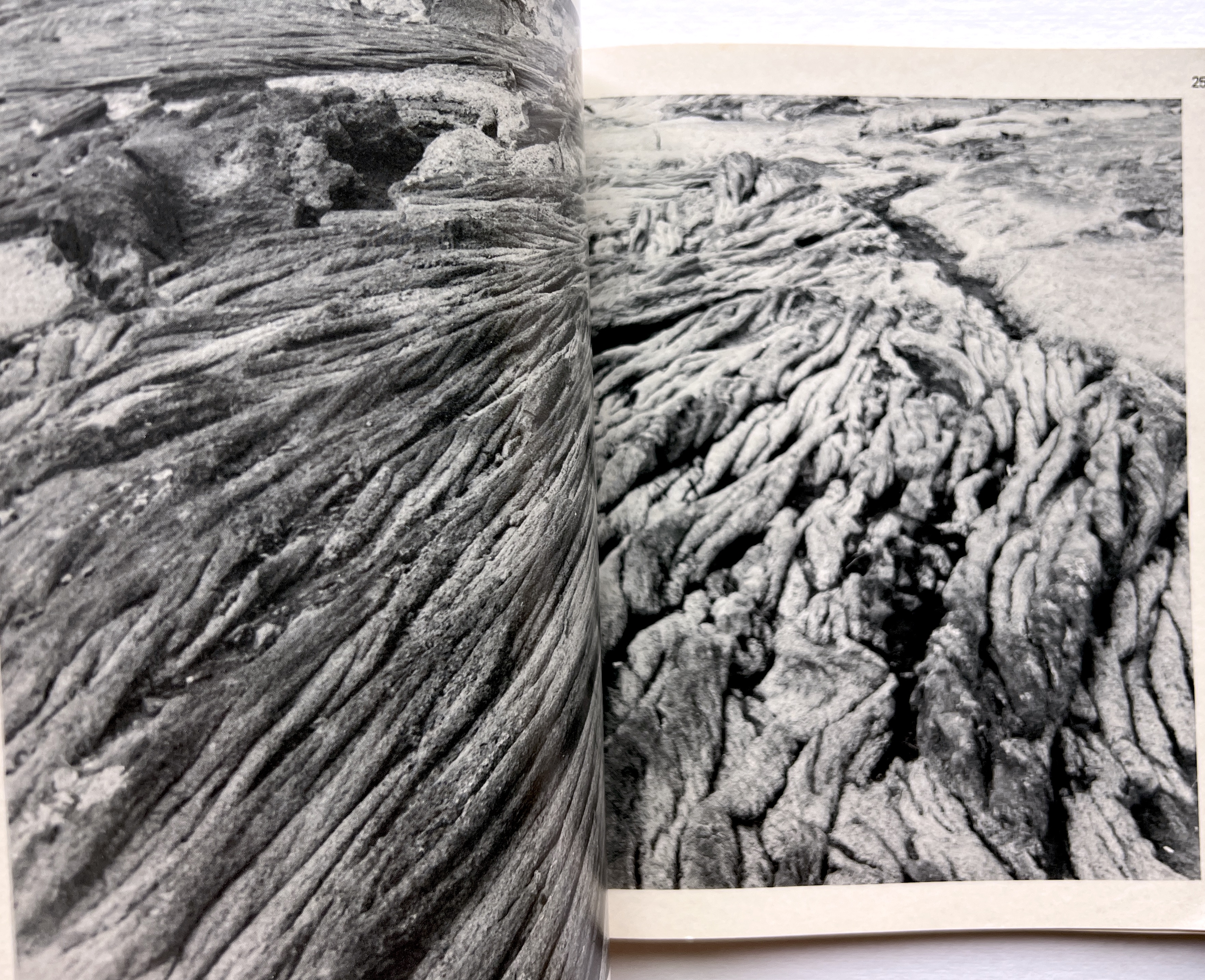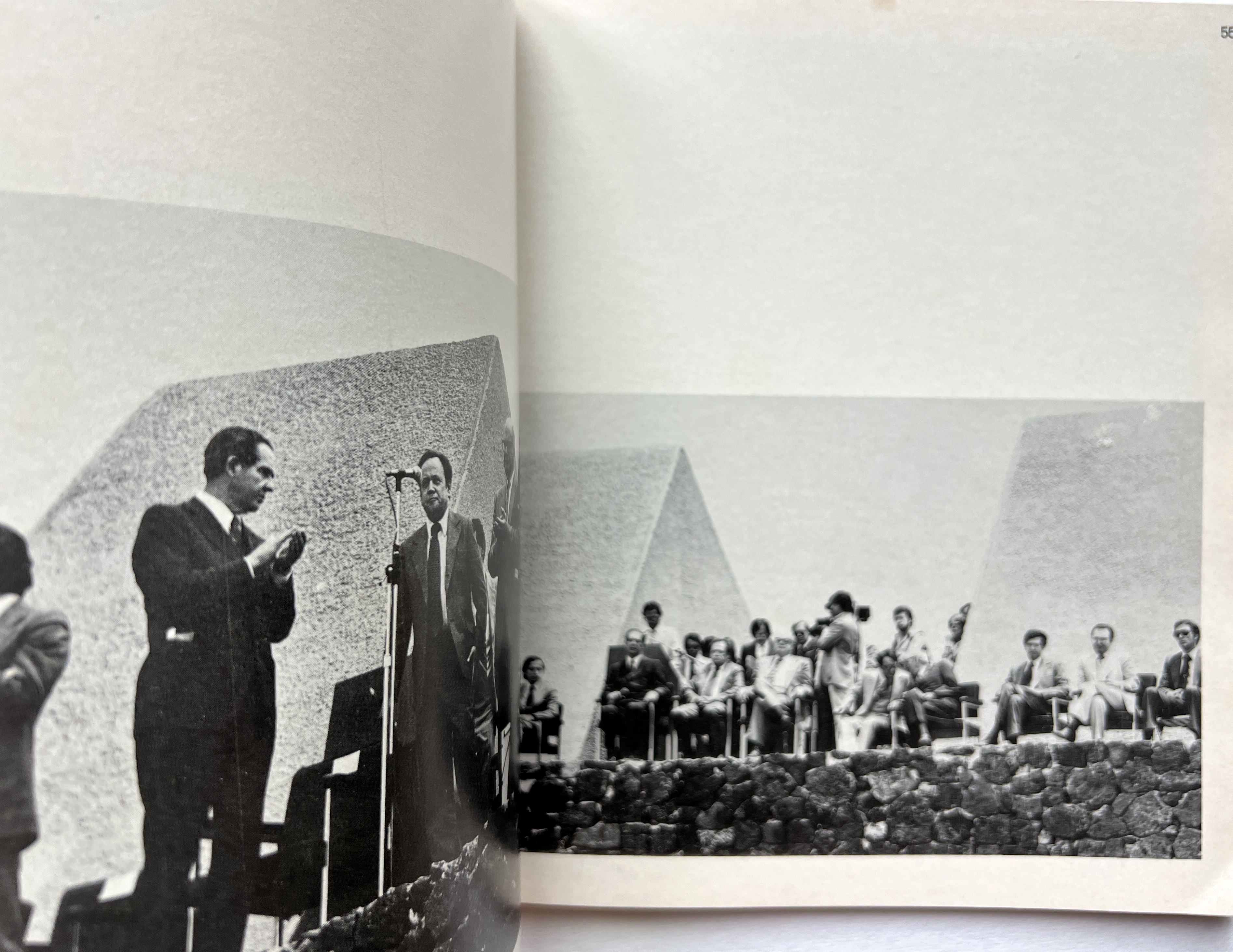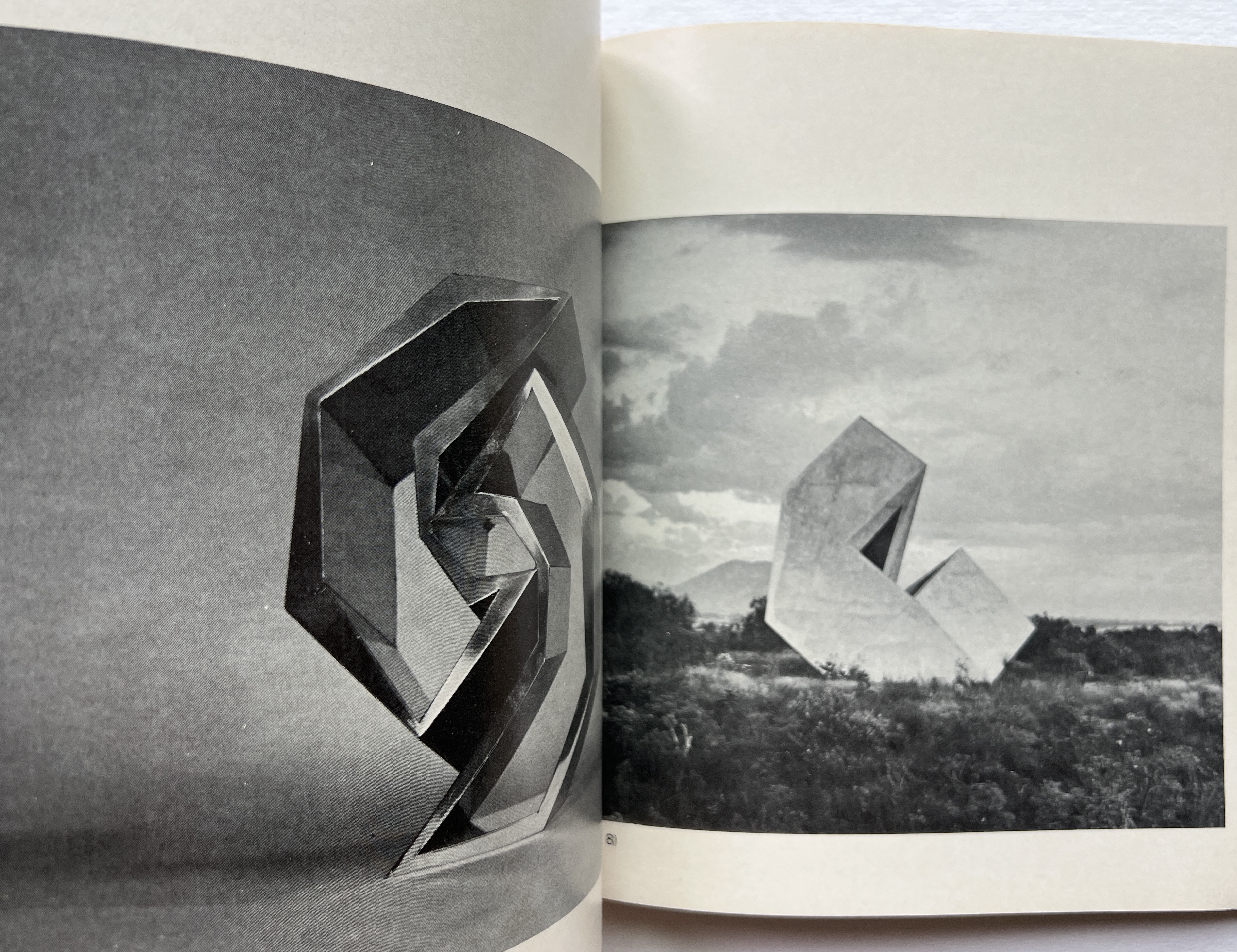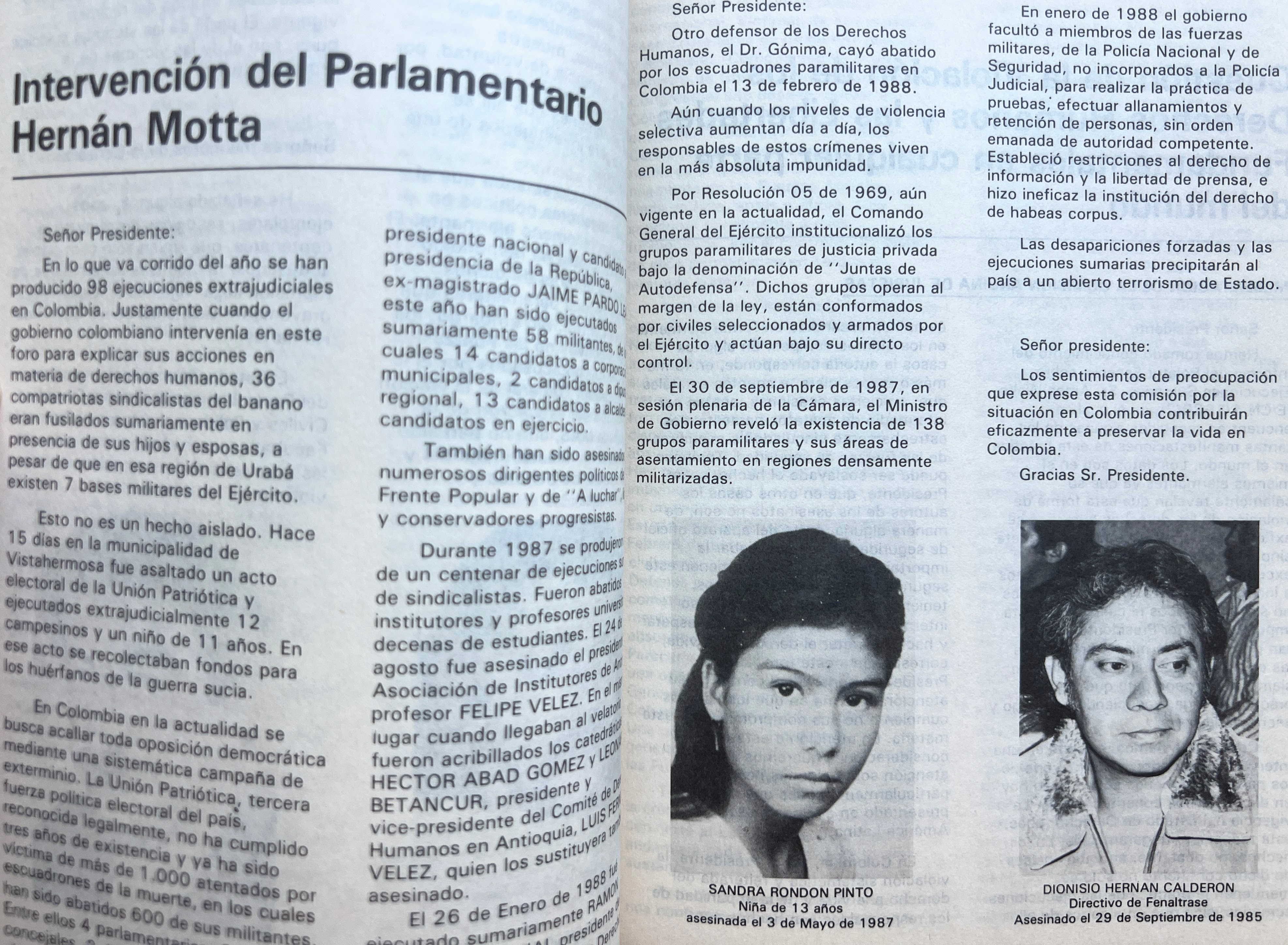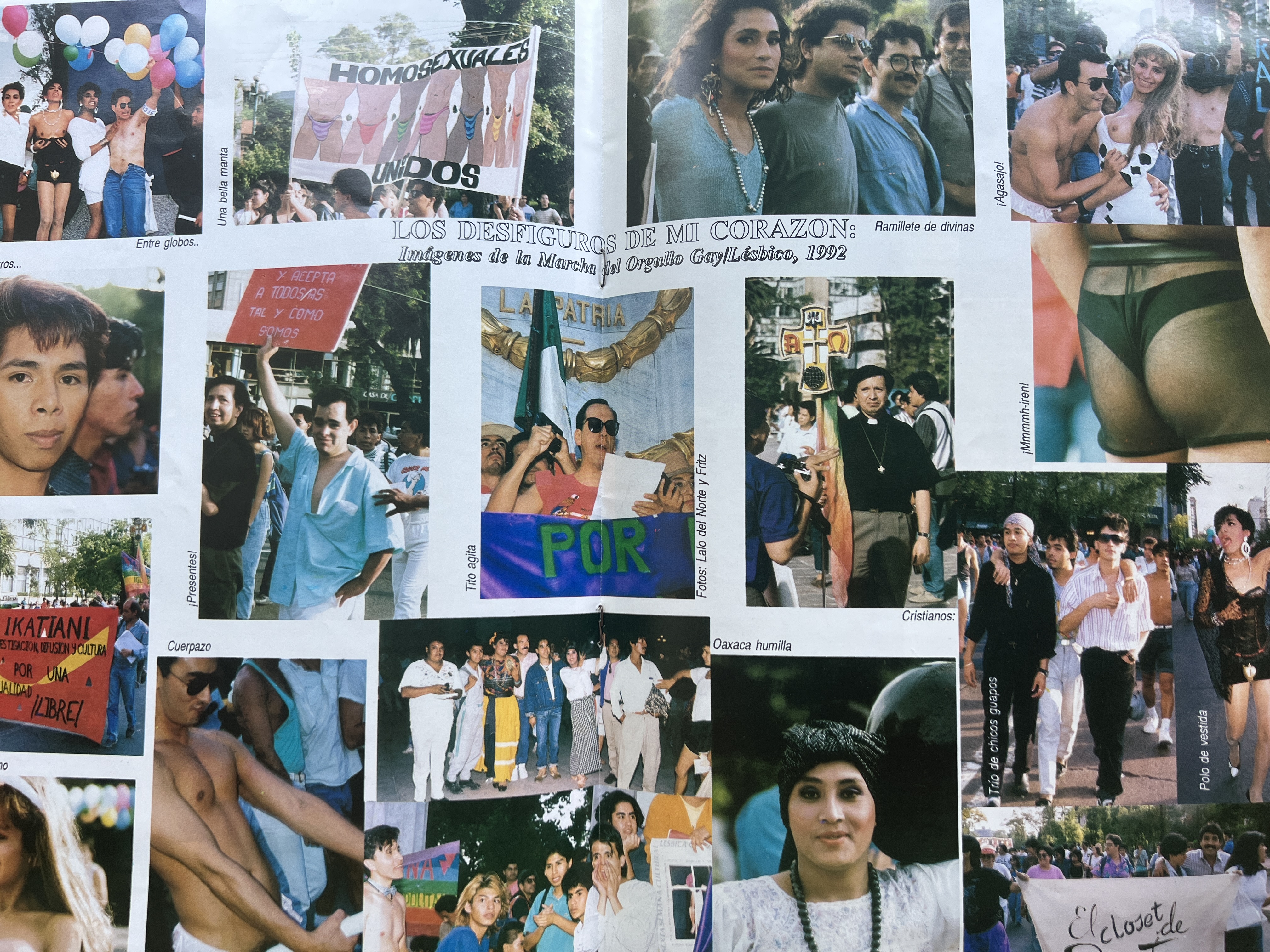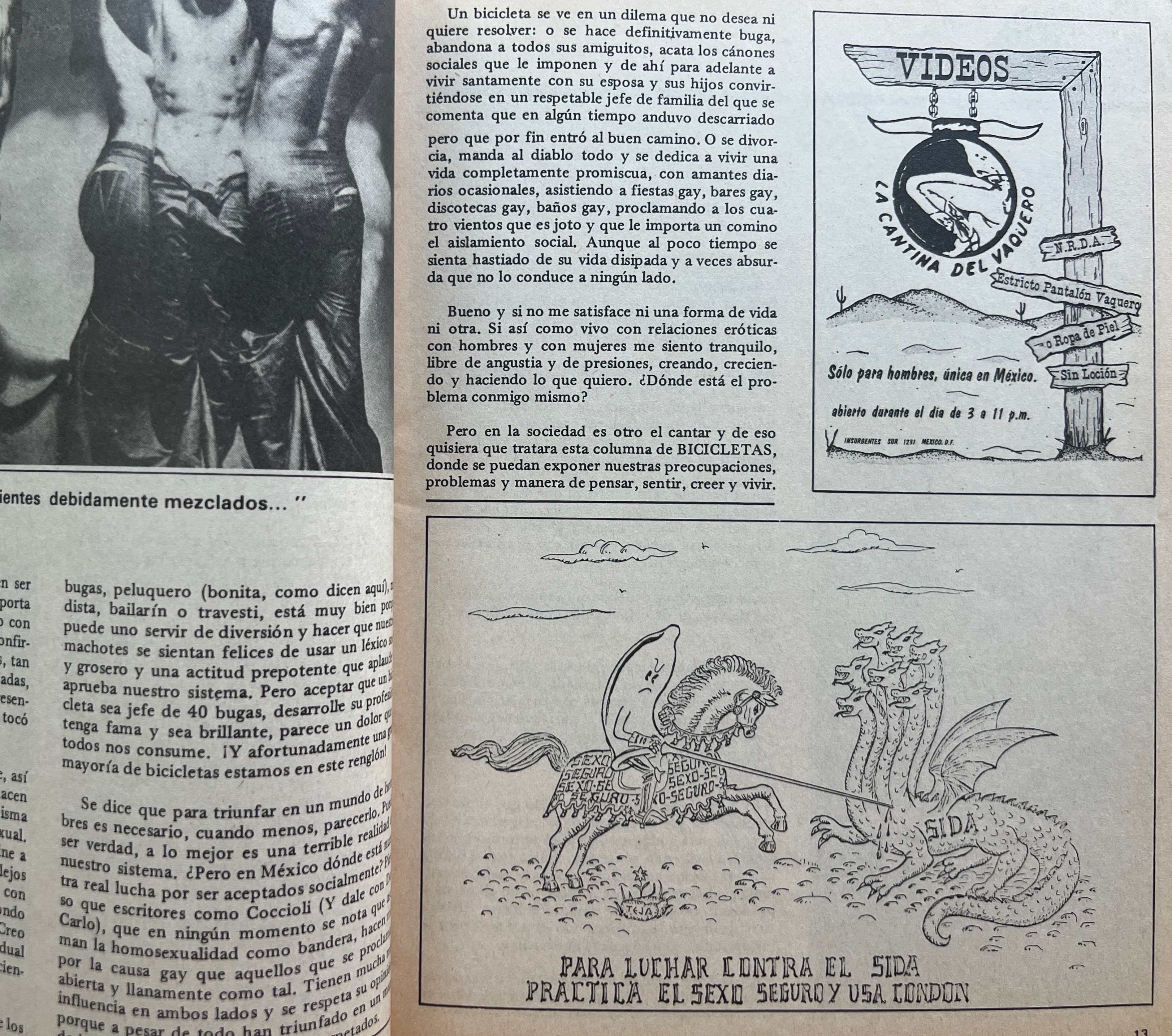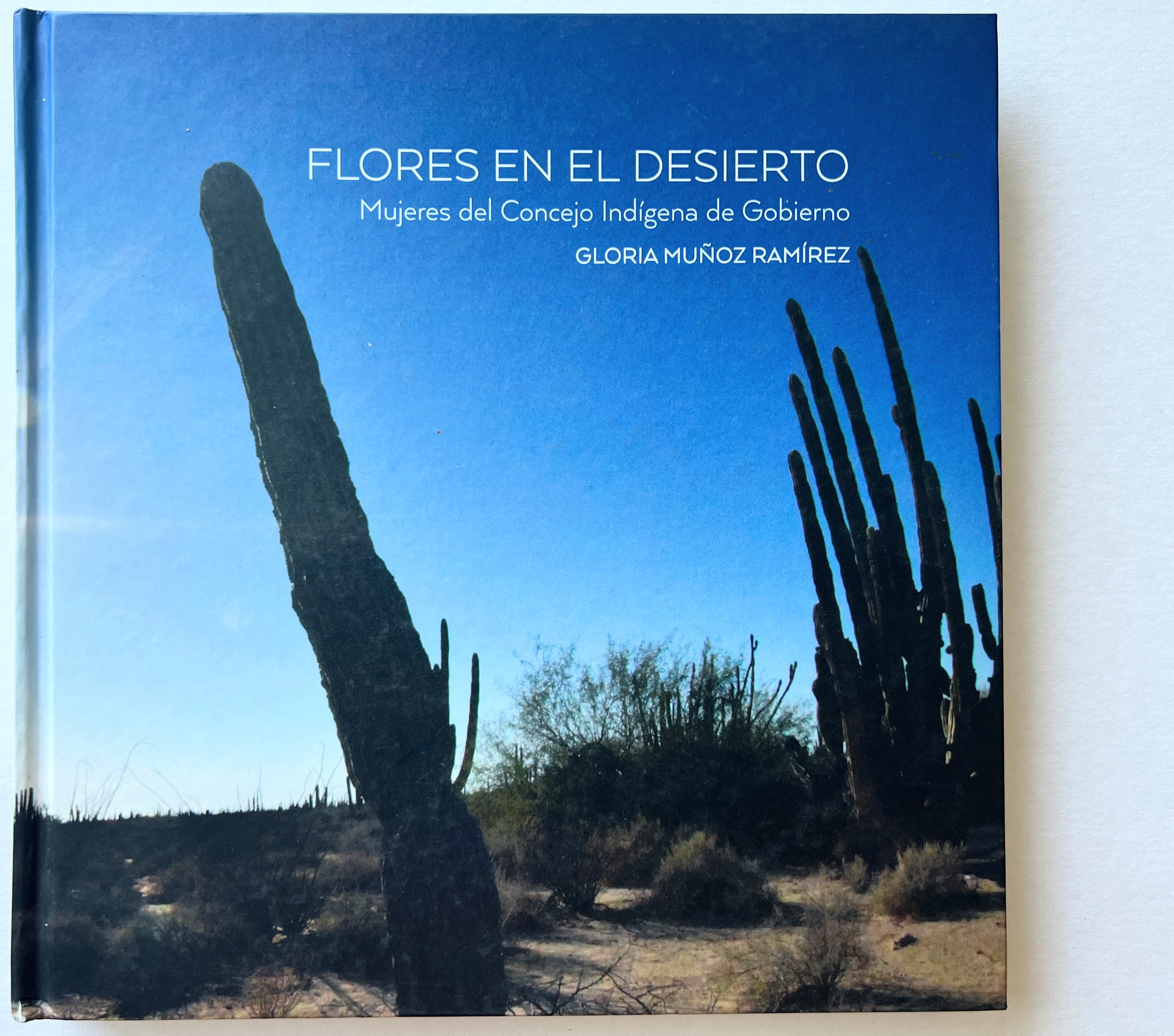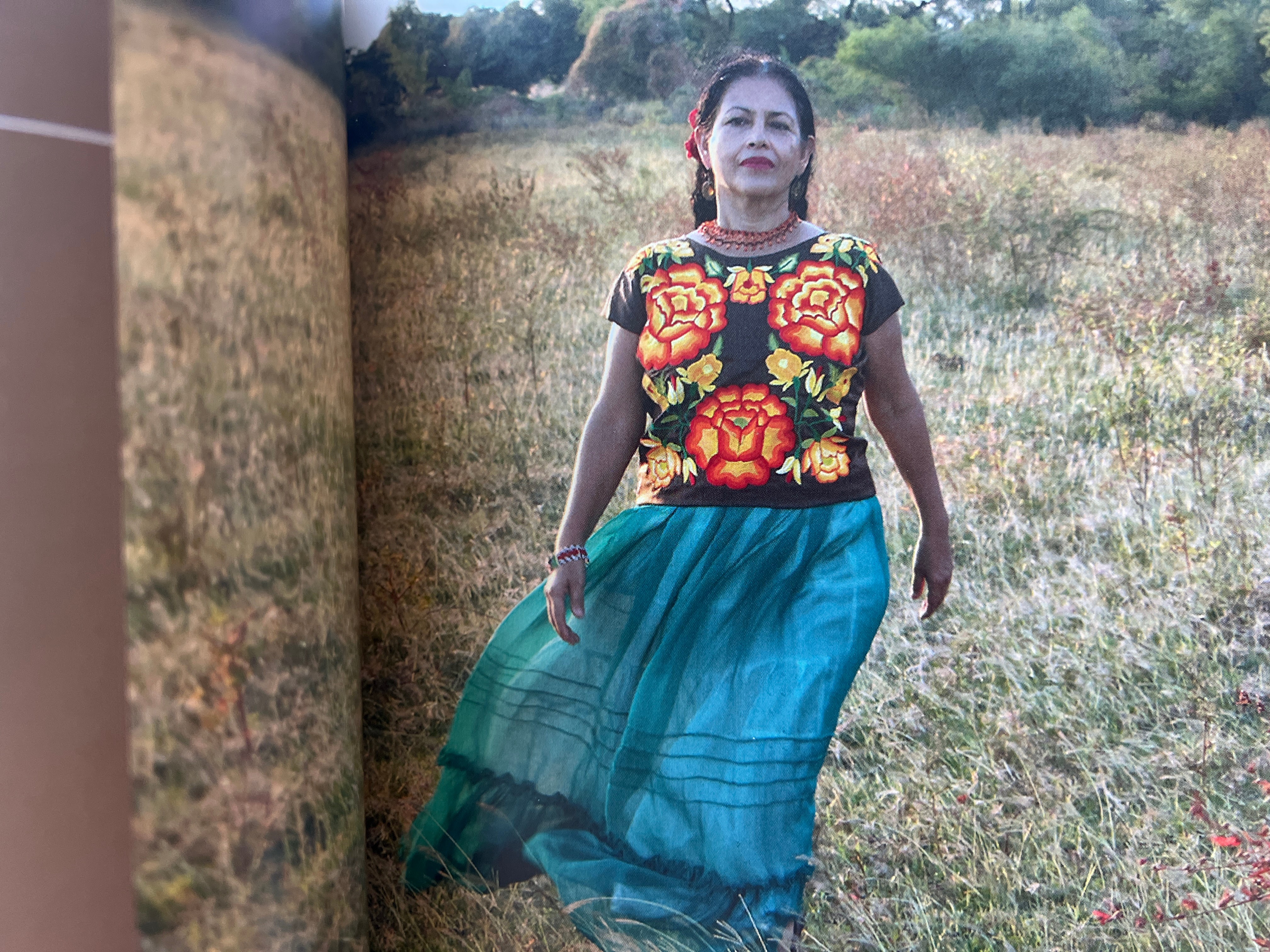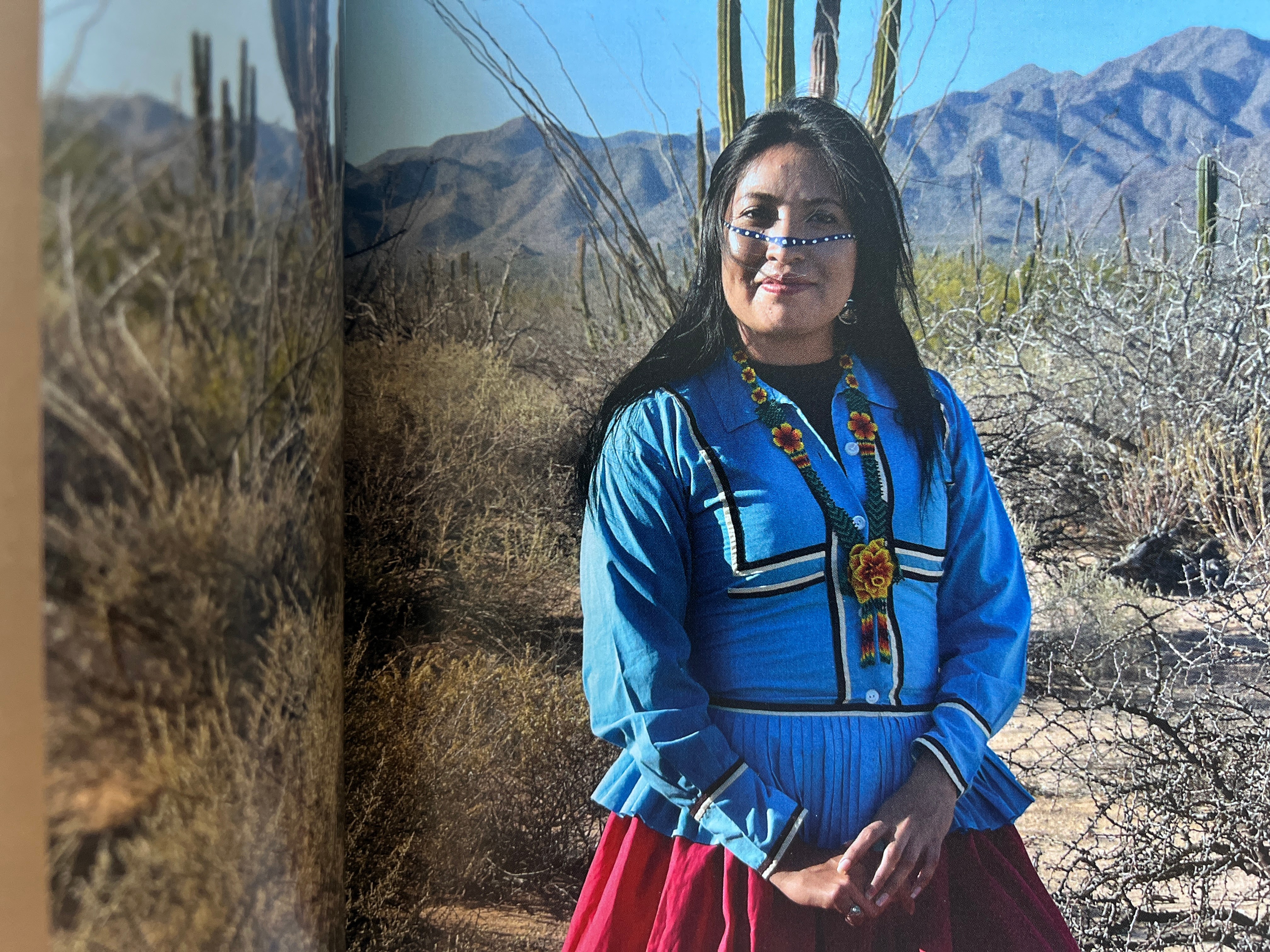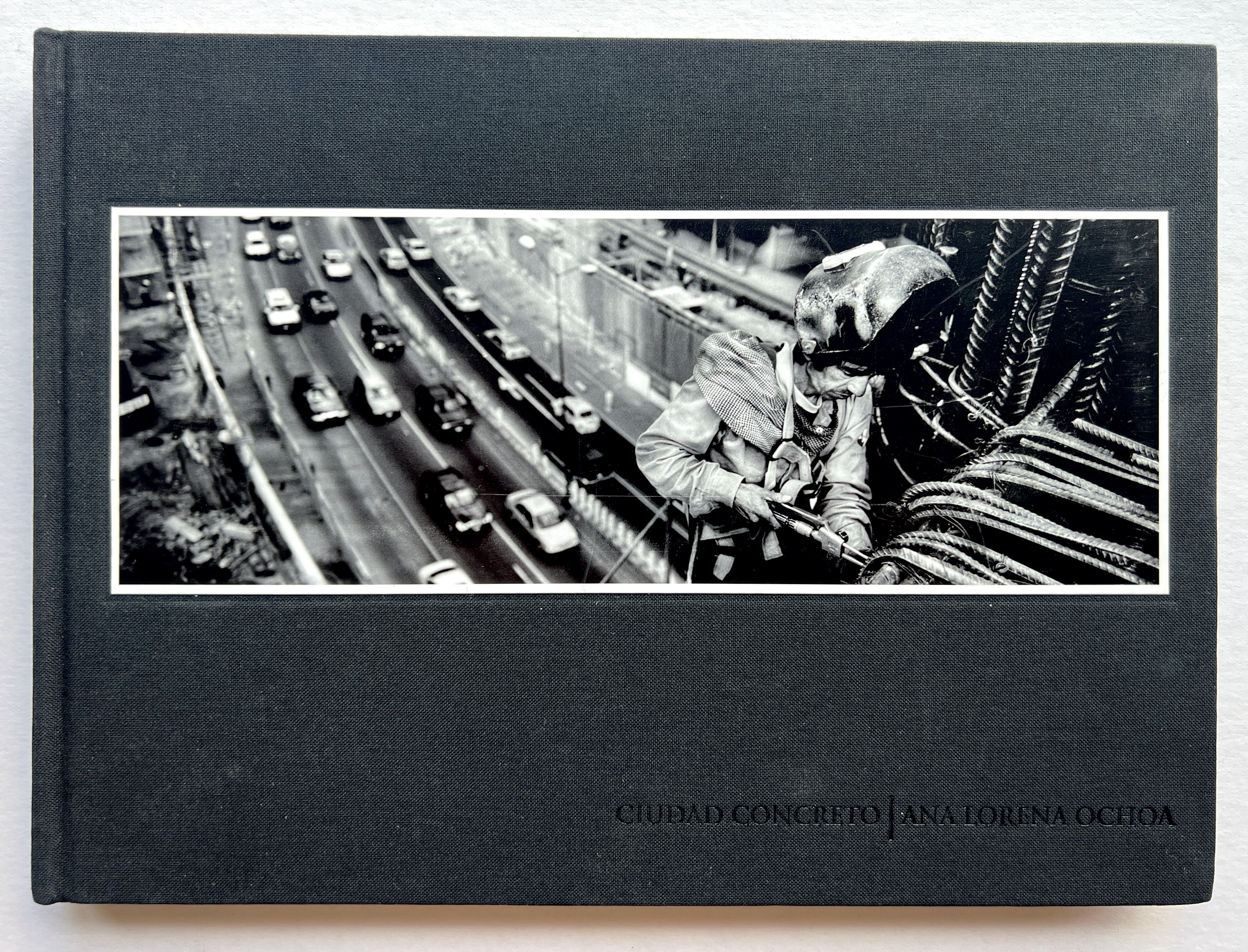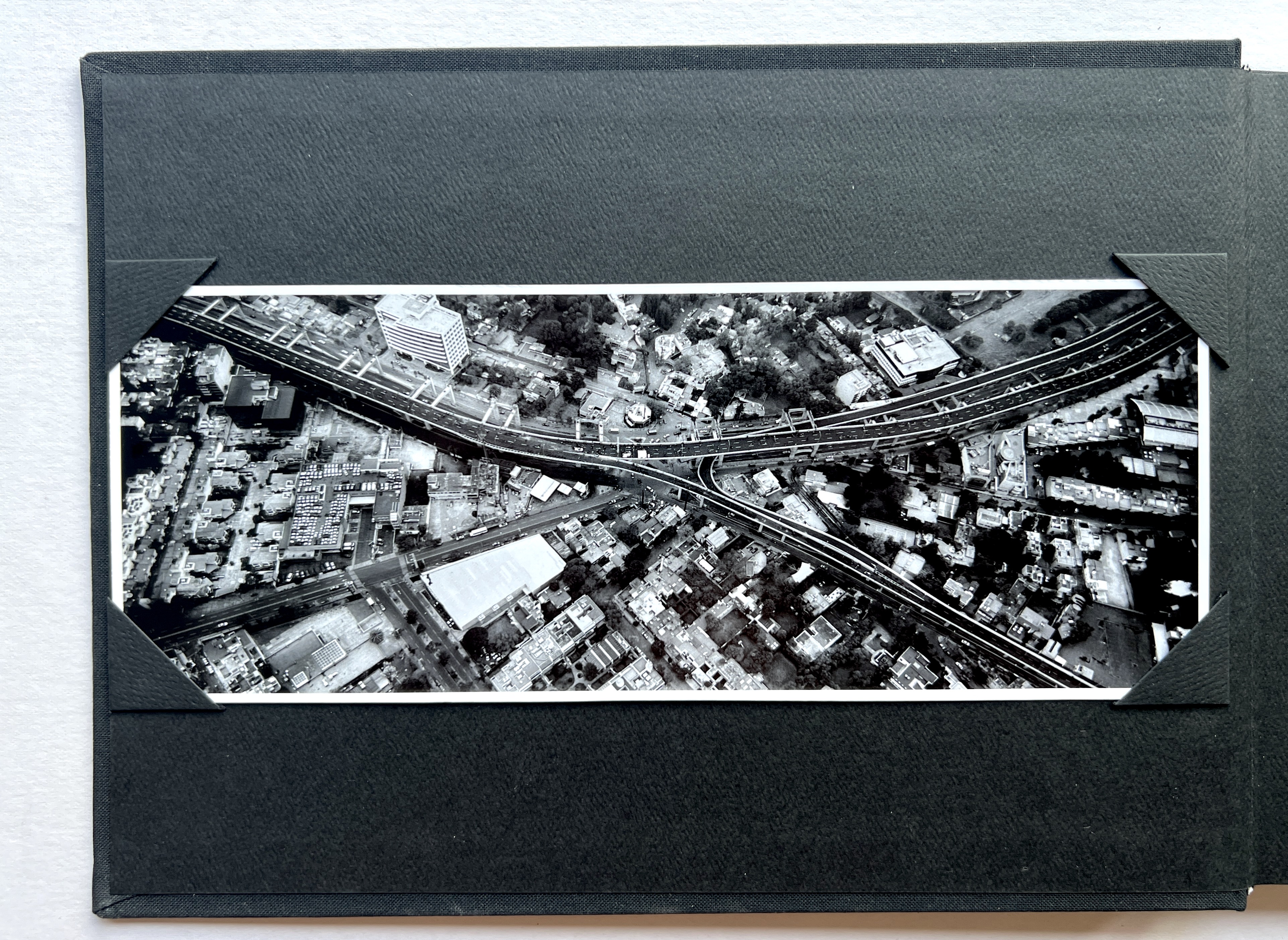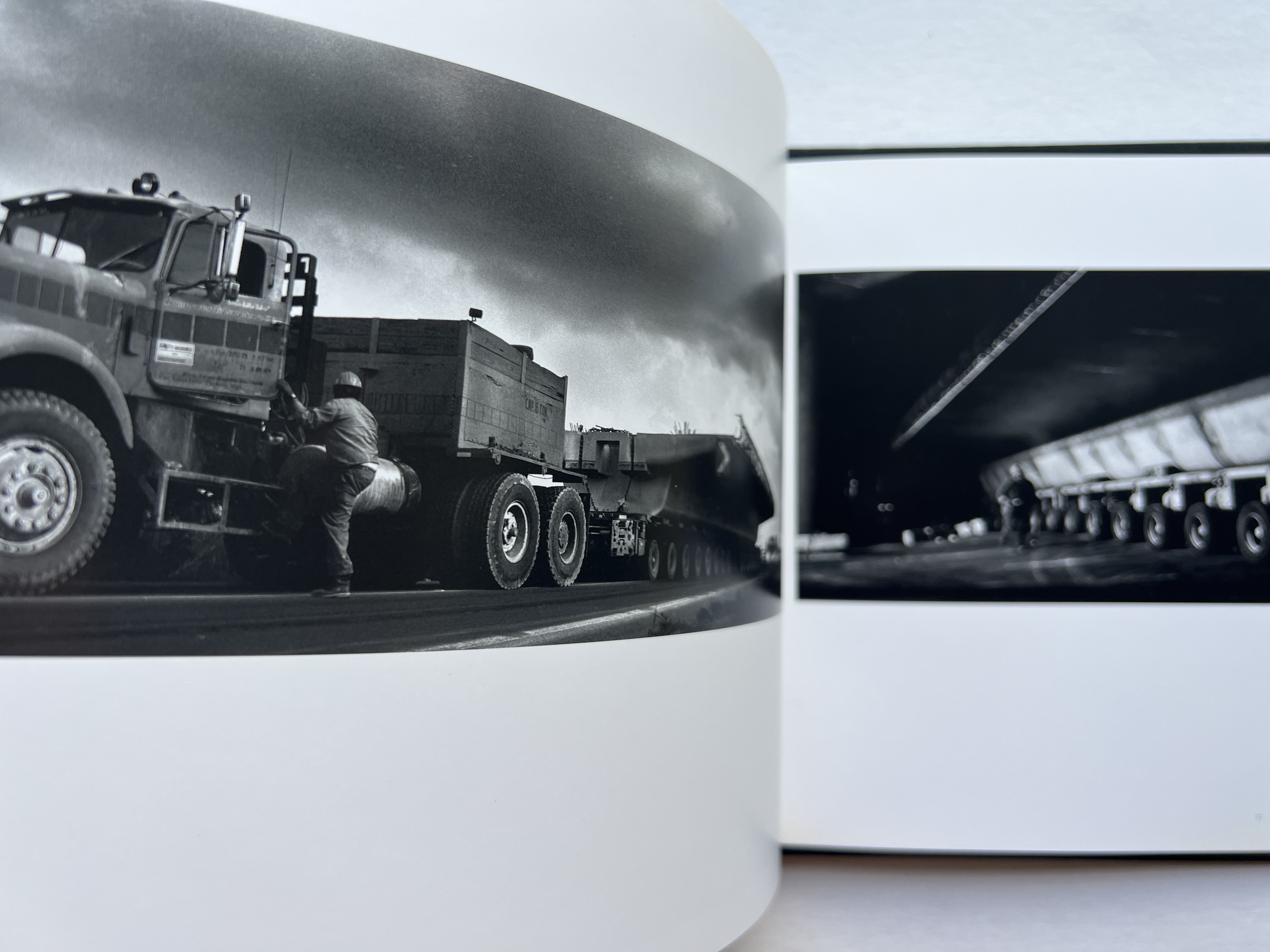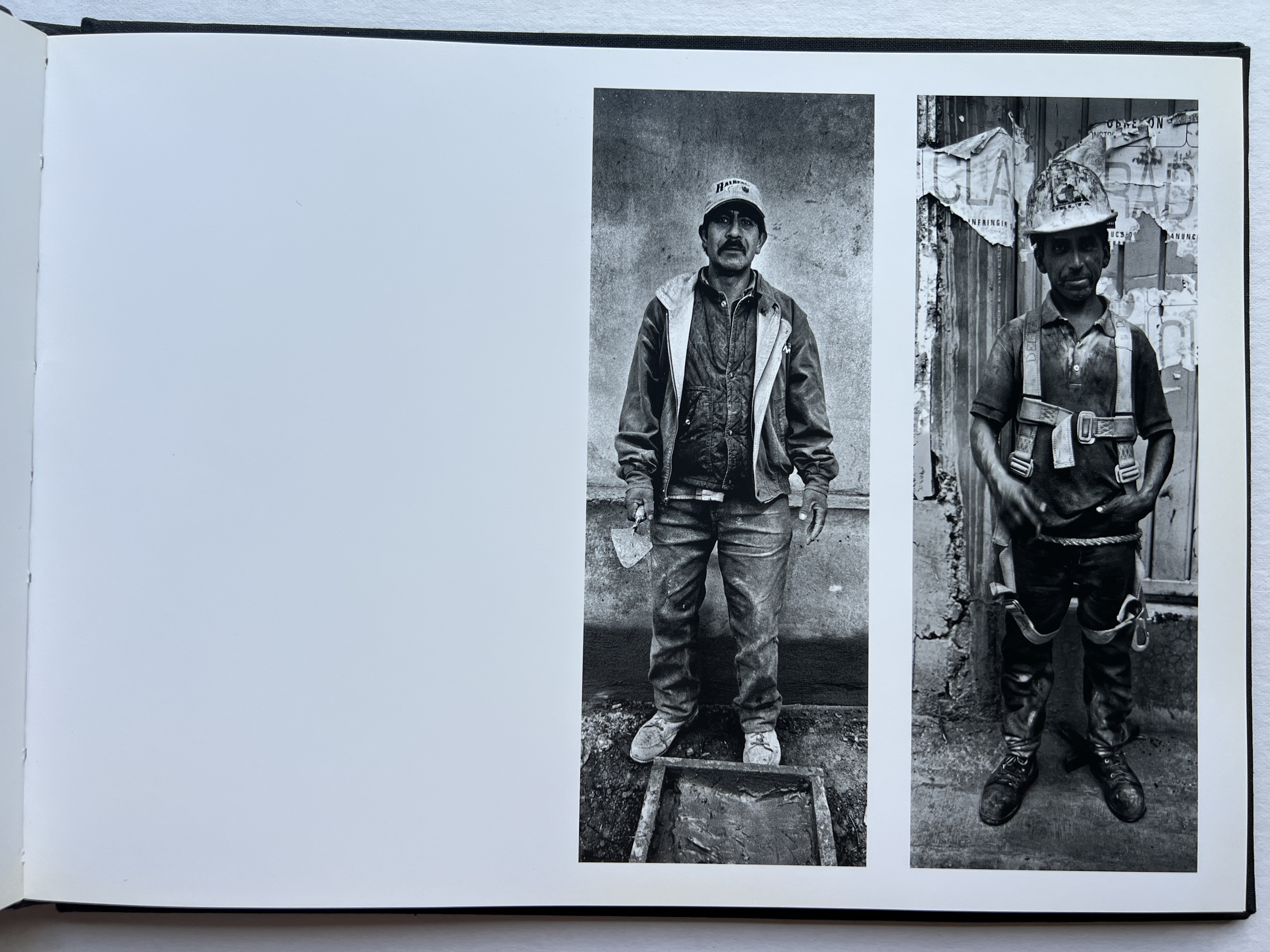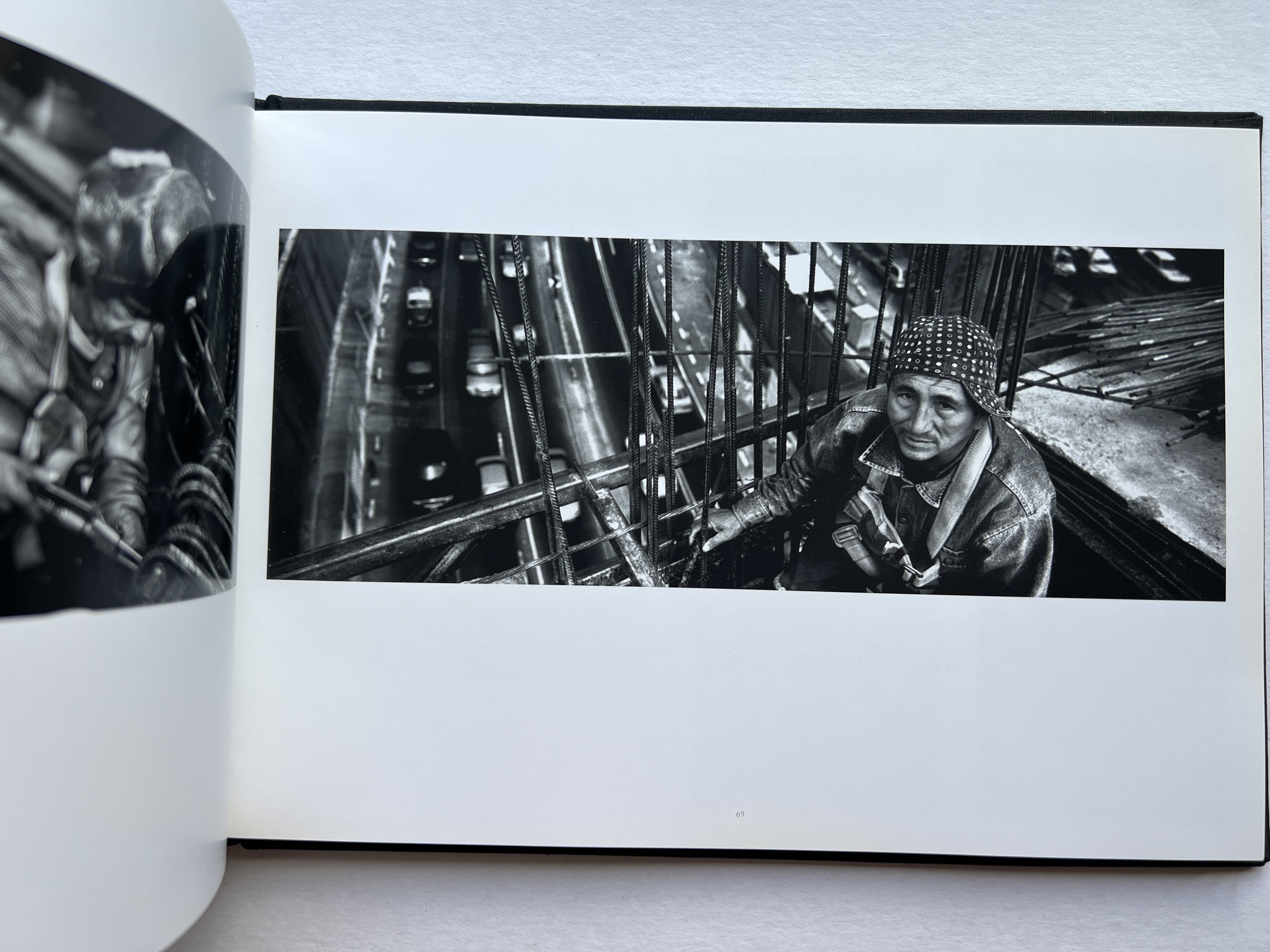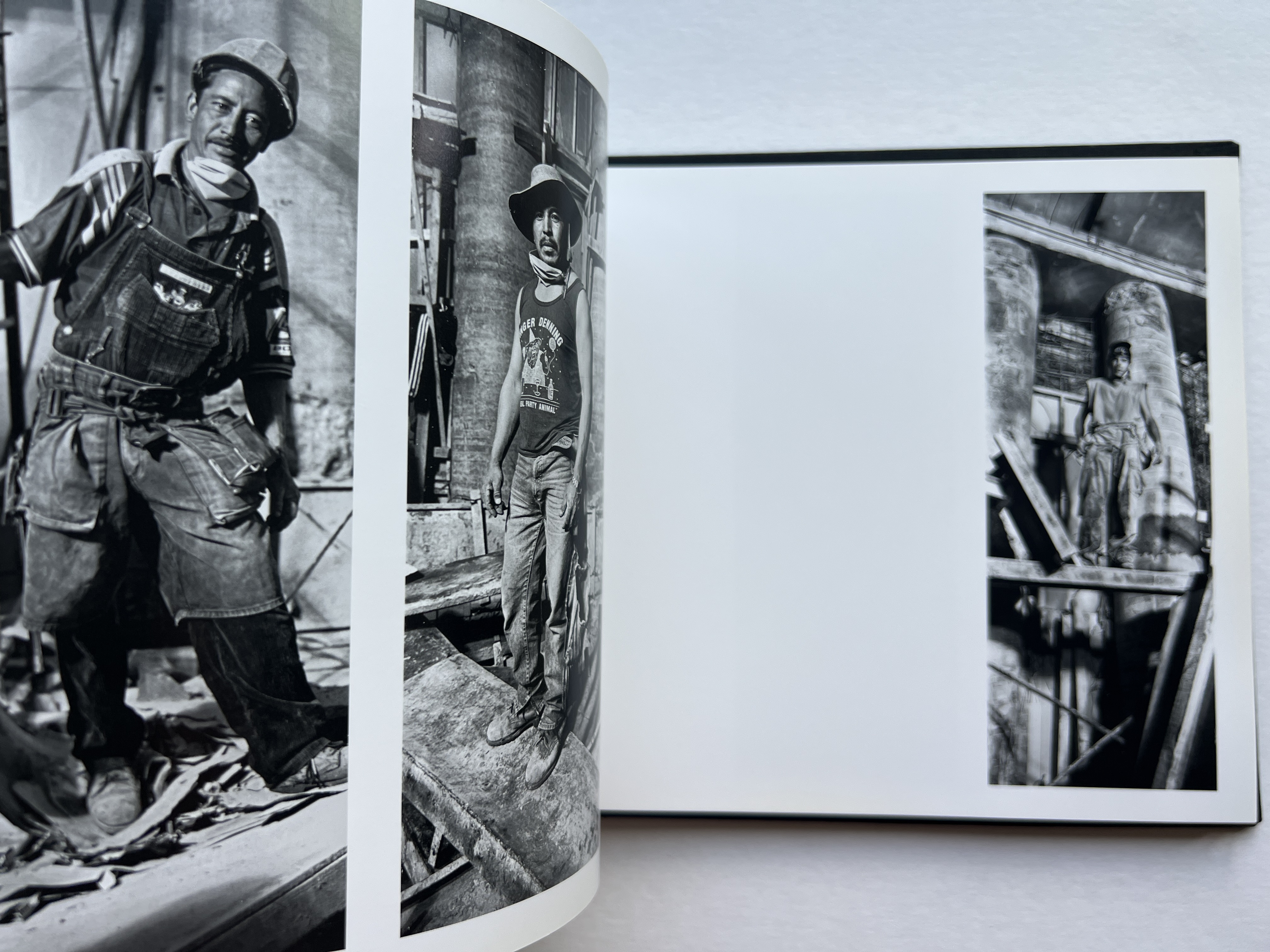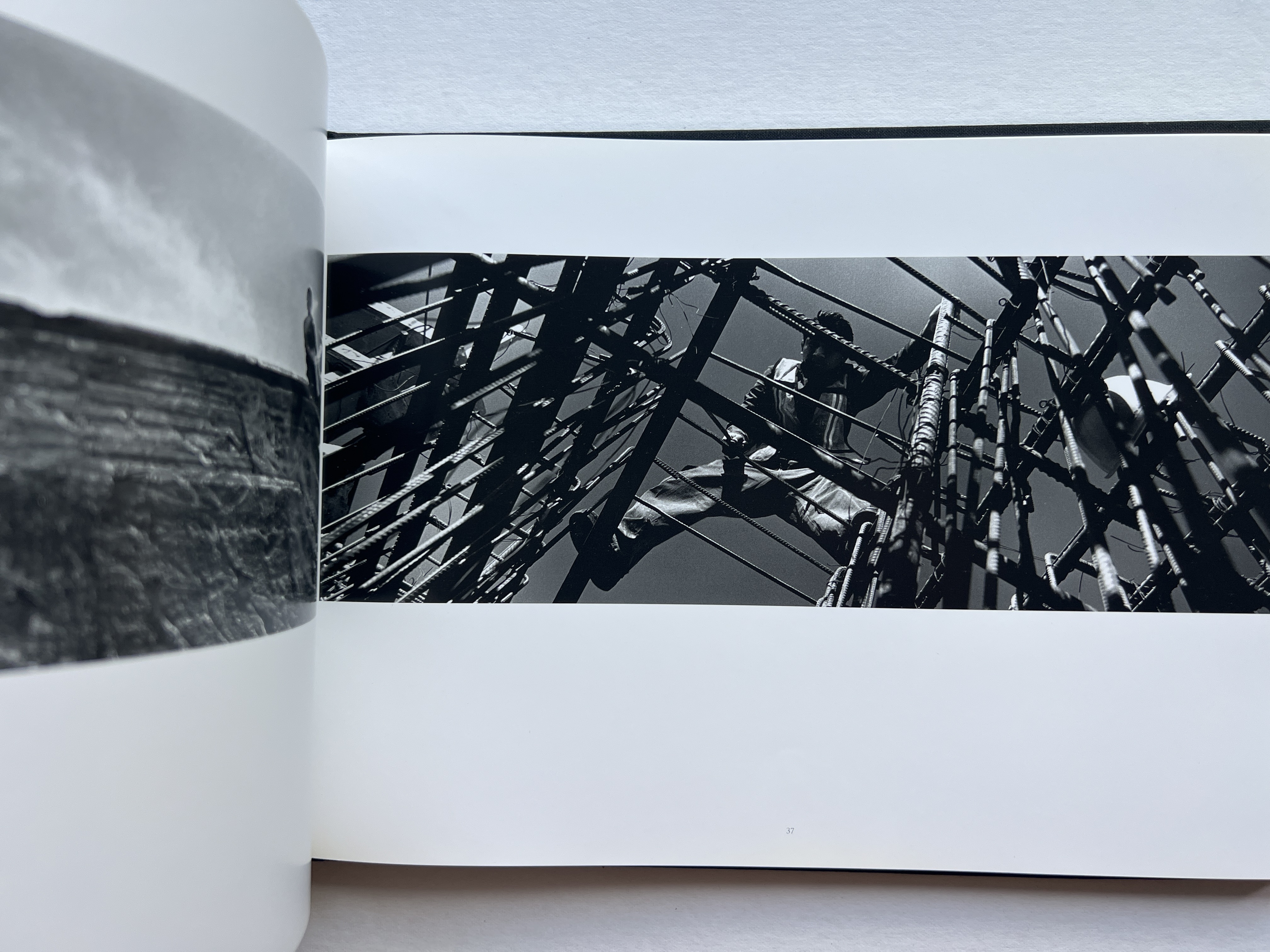GRAPH BOOKS: PRINTED MATTER FROM RADICAL ART AND SOCIAL MOVEMENTS.
FEMINIST HISTORIANS OF MATERIAL CULTURE.
LISTED CHRONOLOGICALLY
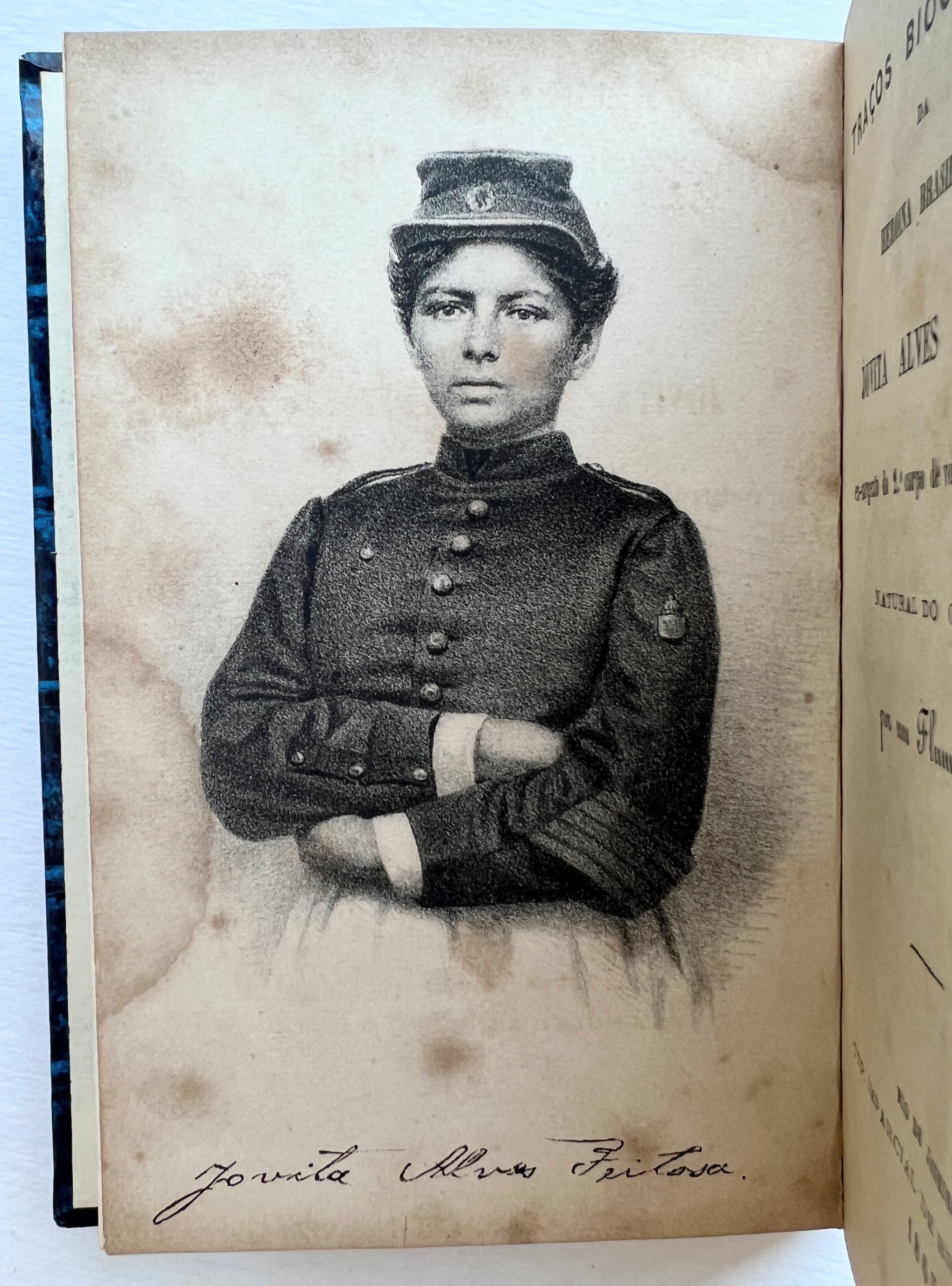
[Feitosa, Jovita Alves] 1865
(Women Soldiers) (War Propaganda) (Brazil) Scarce contemporary bio of a celebrated national heroine of the Paraguayan War.
(Women Soldiers) (War Propaganda) (Brazil) Scarce contemporary bio of a celebrated national heroine of the Paraguayan War.
Traços biographicos da heroína brasileira Jovita Alves Feitosa ...
[Feitosa, Jovita Alves]. Traços biographicos da heroína brasileira Jovita Alves Feitosa, ex-sargento do 20 corpo de voluntários do Piauhy, natural do Ceará, por um Fluminense. Rio de Janeiro: Typ. Imparcial de Brito & Irmão, 1865. 14.6 cm, 44 pp.; litho frontispiece portrait of Feitosa, with foxing to same and title page, rest lightly toned; later cloth over decorated boards, spine worn at foot, orig. front wrapper bound in.
At 17, Jovita Alves Feitosa disguised herself as a man and enlisted in the Brazilian army to fight in the Paraguayan War. She cut her hair and bound her breasts, but was discovered before being deployed. The patriotism of her efforts was acknowledged by provincial authorities who allowed her to continue in the army as a uniformed second sergeant. When her volunteer corps reached Rio de Janeiro, her story became a sensation and was seized upon by propagandists to increase recruitment for the war. Despite this acclaim, the Minister of War refused her petition to proceed to the battlefront. Denied her goal, Jovita remained in Rio where she continued to be used as a symbol of Brazilian bravery until her sudden death in 1867, aged 19. Contemporary newspapers described it as a suicide.
This volume was published shortly after her arrival to Rio in September 1865 and includes a long poem celebrating her honor and bravery. It is the first biography of the national war heroine known today as simply “Jovita.”
Two North American holdings recorded in OCLC: Stony Brook and UCLA.
SOLD
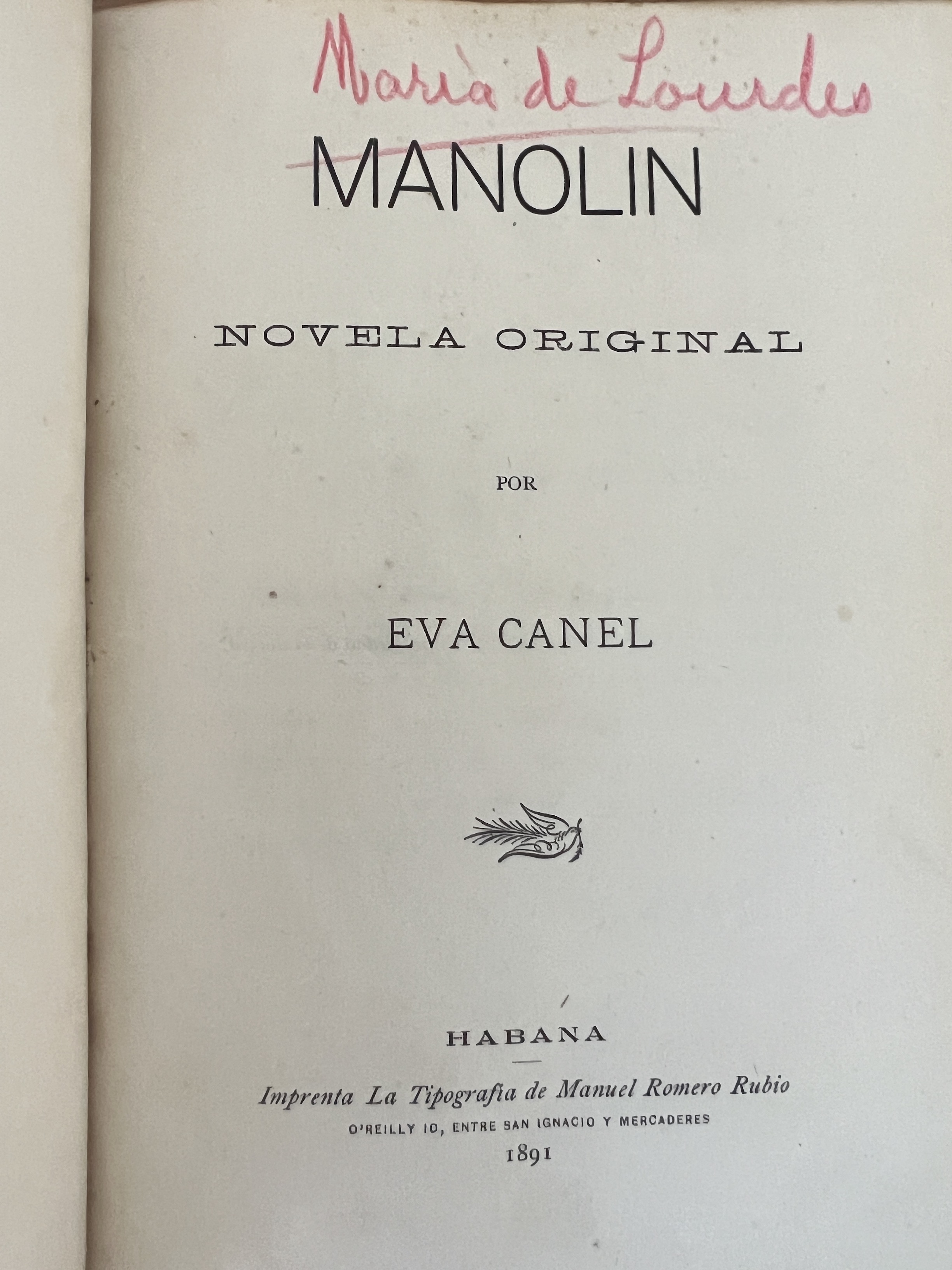
Eva Canel 1891
(Cuban Book History) (Romance) (Women's Readership) First edition of the romance novel by the prolific journalist Eva Canel.
(Cuban Book History) (Romance) (Women's Readership) First edition of the romance novel by the prolific journalist Eva Canel.
Manolin: Novela Original
Canel, Eva. Manolin: Novela Original. Habana: Romero Rubio, 1891. First Edition. 19 cm,. 215 pp.; ownership inscription on half-title “Maria de Lourdes,”; in contemporary three-quarter calf, spine with five compartments and gilt title, rubbed, esp. at head of spine and rear corners, marbled boards scratched.
Romantic novel by the prolific Spanish journalist Eva Canel (1857-1932) who, in addition to writing seven novels and four plays, published a satirical newspaper in Havana, reported on the World’s Columbian Exposition (1893) for papers across Latin America, lived in Argentina, Bolivia, and Cuba, where she founded her own press, and in the ultimate paradox, was a friend to both Jose Martí and Valeriano Weyler.
Despite the unusual scope of her activities, Canel was not a feminist. During her coverage of the Columbian Exposition she wrote a confusing defense of traditional Spanish womanhood. “In Spain we know nothing of women’s congresses, because the women who struggle and who study, and who enter the literary, scientific, artistic, or journalistic arena, do so on the same footing as men, the culture of both sexes being thus measured by the same standard … what does it matter if Spanish girls are not allowed the liberty of traveling and going out unaccompanied…?” (A perfectly hilarious question for a woman who wrote a travelogue about Tierra del Fuego.)
But Canel thought nothing of writing and reading about scandalous affairs and female sexuality of the kind encountered in this book and the 19th-century romance genre more generally.
The novel was included in an exhibition of rare Cuban books at the University of Miami, though oddly their copy is a second edition published in Madrid. WorldCat identifies approximately four other institutional holdings in the US.
SOLD
Cited:
Canel, Eva. “The Spanish Woman.” The North American Review 157, no. 444 (1893): 566–70.
Zequeira, María. “Eva Canel, Una Mujer De Paradojas.” Anuario De Estudios Americanos, 2001.
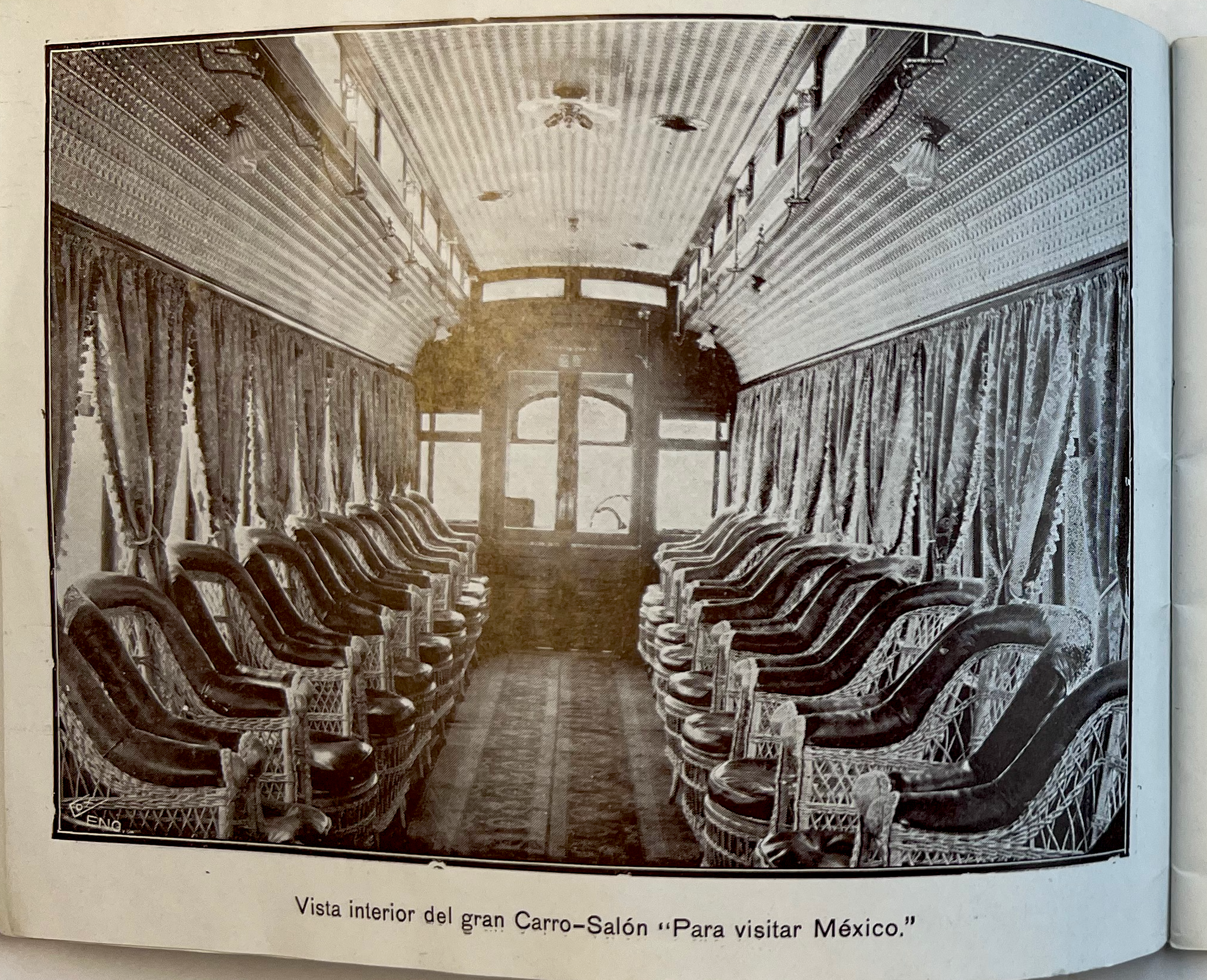
1907
(Tourism) (Railways) Promoting special guided parlor car service on Mexico City's new electric tramway.
(Tourism) (Railways) Promoting special guided parlor car service on Mexico City's new electric tramway.
Alrededor de México: Vista en los carros especiales de La Compañía Limitada de Tranvías Eléctricos
(Mexico) (Tourism) (Railways) Compañía Limitada de Tranvías Eléctricos de Mexico. Alrededor de México: Vista en los carros especiales de La Compañía Limitada de Tranvías Eléctricos de México. Mexico, D.F.: La Compañía, 1907. Oblong 14.7cm, 37, [2], pp.; 13 b/w pls. with captions; stapled brown paper wrappers, a bit thumbed, printed with “Obsequio La Compañía Limitada de Tranvías Eléctricos de Mexico” recto, “Compliments of…” [same] verso. Very Good.
Bilingual, early guide to exploring Mexico City by rail on the special parlor car service of the Mexico Electric Tramway system. These special cars make two trips daily and will be accompanied by “competent” guides to describe the sights. “Every foot of ground covered in these trips is replete with a constantly changing panorama of historical interest, combined with pleasure and romance.” Detailed trip itineraries are listed with schedules. Special cars can also be chartered! Other electric and animal-driven tram lines listed with points of interest for the tourist.
Rare, a single holding listed in OCLC: UC-Berkeley.
$450
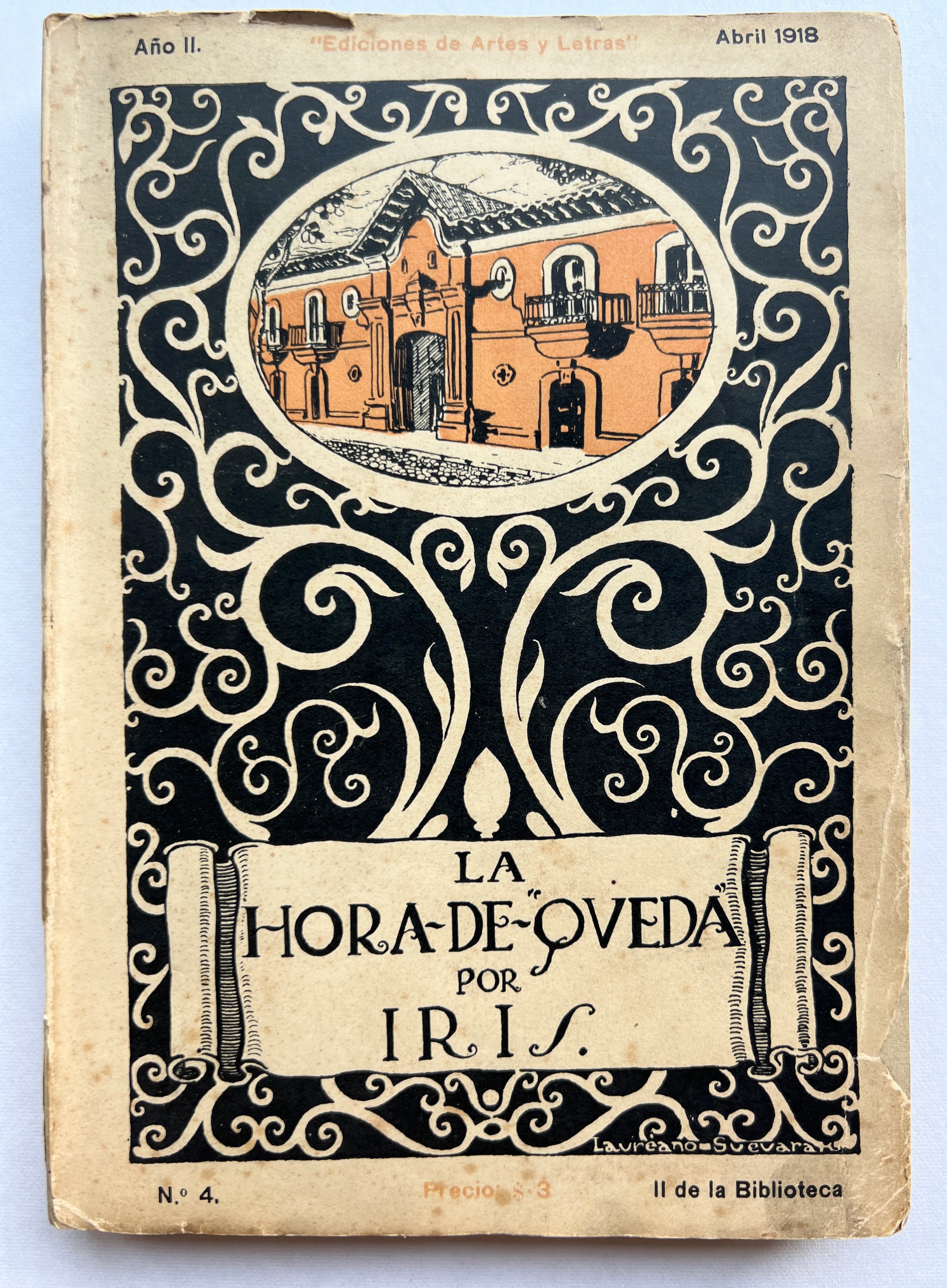
Inés Echeverría Bello 1918
Signed first edition of one of Chile's early proto-feminist novels.
Signed first edition of one of Chile's early proto-feminist novels.
La Hora de Queda: Novelas Cortas
[Echeverría Bello, Inés]. Iris. La Hora de Queda: Novelas Cortas. Santiago: Imprenta Universitaria, 1918. First edition. 19 cm, 223 pp.; signed manuscript dedication from the author to “mi amigo Mario …” on ffep, brittle paper chipped and toned, in pictorial wrapper with nouveau cover design by Laureano Guevara Romero, soiled, with small water stain verso, spine repaired with losses.
Inés Echeverría Bello (1868-1949) was a Chilean author who published under the pseudonym “Iris”. This collection of six short stories was her fifth book. Literary critic Elvira Santa Cruz Ossa (1886-1960) reviewed La Hora de Queda psuedoymously in Zig Zag. She praised the stories, deeply influenced by the spiritualist movement, for their description of the “repetitive and confined” life of the upper class woman, in which “neither ‘freedom of thought’ nor the ‘right to reason for themselves’ were present.” Santa Cruz Ossa also wrote that this monotony revealed the urgency of progressive (feminist) ideas: “[existía un] abismo entre aquel ambiente femenino de la ‘Hora de queda’ y el de la hora presente”, “abismo que comienza a llenarse con el sacrificio de algunas, con la valentía de muchas, con la rebelión callada y vibrante de todas… Abismo que va llenándole el heroísmo de las que enarbolan el estandarte de ideas progresistas en medio del escarnio de timoratos y retrógrados.”
Echeverría Bello is generally acknowledged as one of Chile’s early feminists, for her work founding the women’s intellectual salons, The Reading Club and The Ladies Club, and for her passionate advocacy against domestic violence following the murder of her daughter Rebeca by Rebeca’s husband, Roberto Barceló (1934).
Cited: [Santa Cruz Ossa, Elvira]. Roxane. “Al margen de la hora de queda”. Zig-Zag. Número 699, Santiago, 13 de julio de 1918.
$275
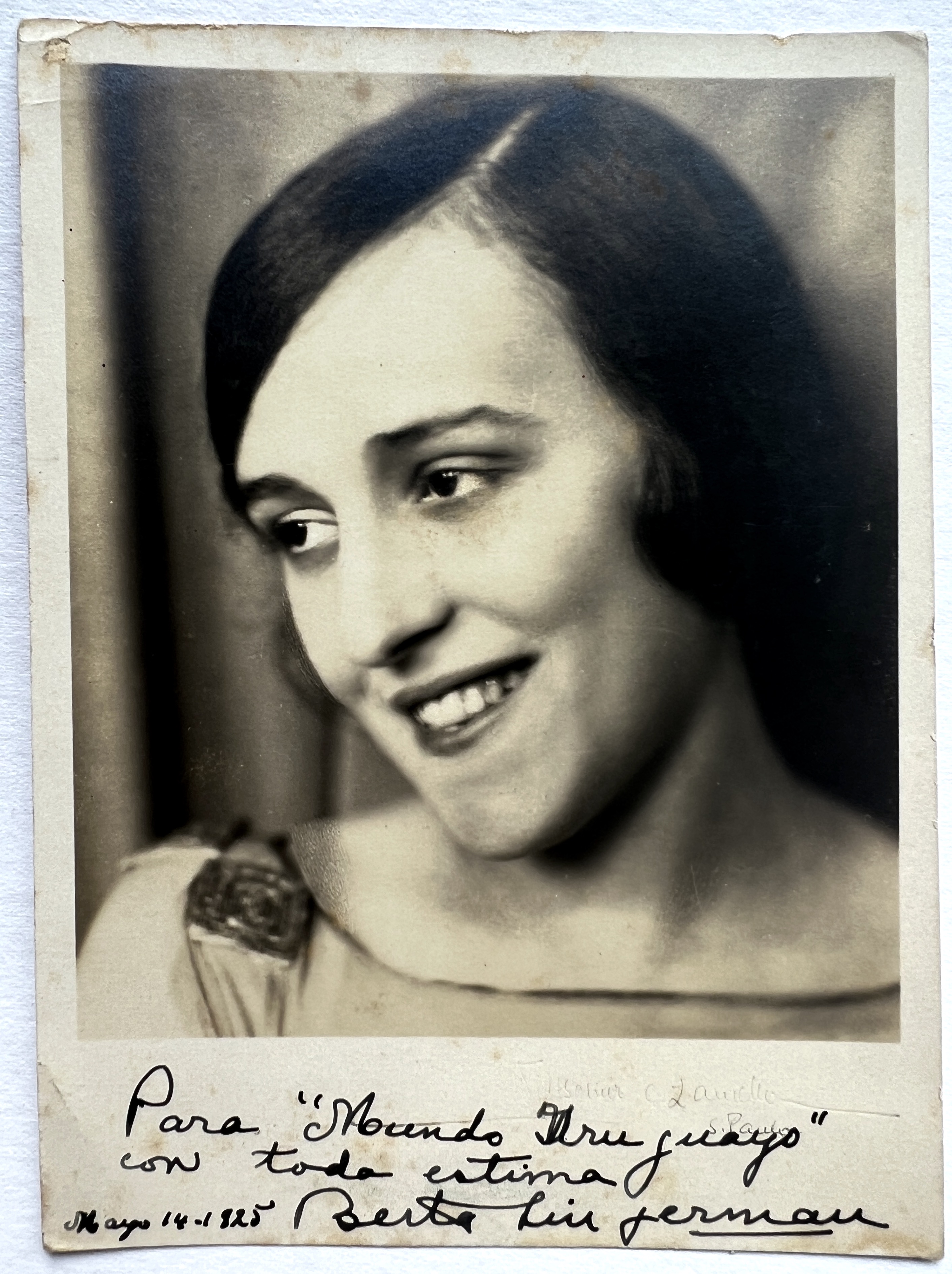
1925
Early signed publicity photograph of the Jewish Argentinian actress and singer.
Early signed publicity photograph of the Jewish Argentinian actress and singer.
Berta Singerman
Wiltschur & Zanella Foto-Studio. Berta Singerman. Gelatin silver print. São Paulo, 1925. 16 x 12 cm. Surface lightly soiled, a few nicks at edges. Signed and dated recto by Berta Singerman to “Mundo Uruguays” [Mundo Uruguay]. Studio stamp verso and pencil annotation “recitadora argentina”.
Rare early signed publicity photograph of the Argentinian actress and singer Berta Singerman (1901-1998), whose Jewish family emigrated to South America from Russia in her early childhood. Her father founded the first Yiddish theater company in Buenos Aires and she joined the troop by age 10. In the 1920s she developed close friendships within the Argentinian avantgarde and moved in the circles of Storni, Mistral, and Quiroga. In addition to theater and movie roles, she was known for her poetry recitals.
Signed dedication to editors at the Uruguayan cultural magazine, Mundo Uruguay.
$125
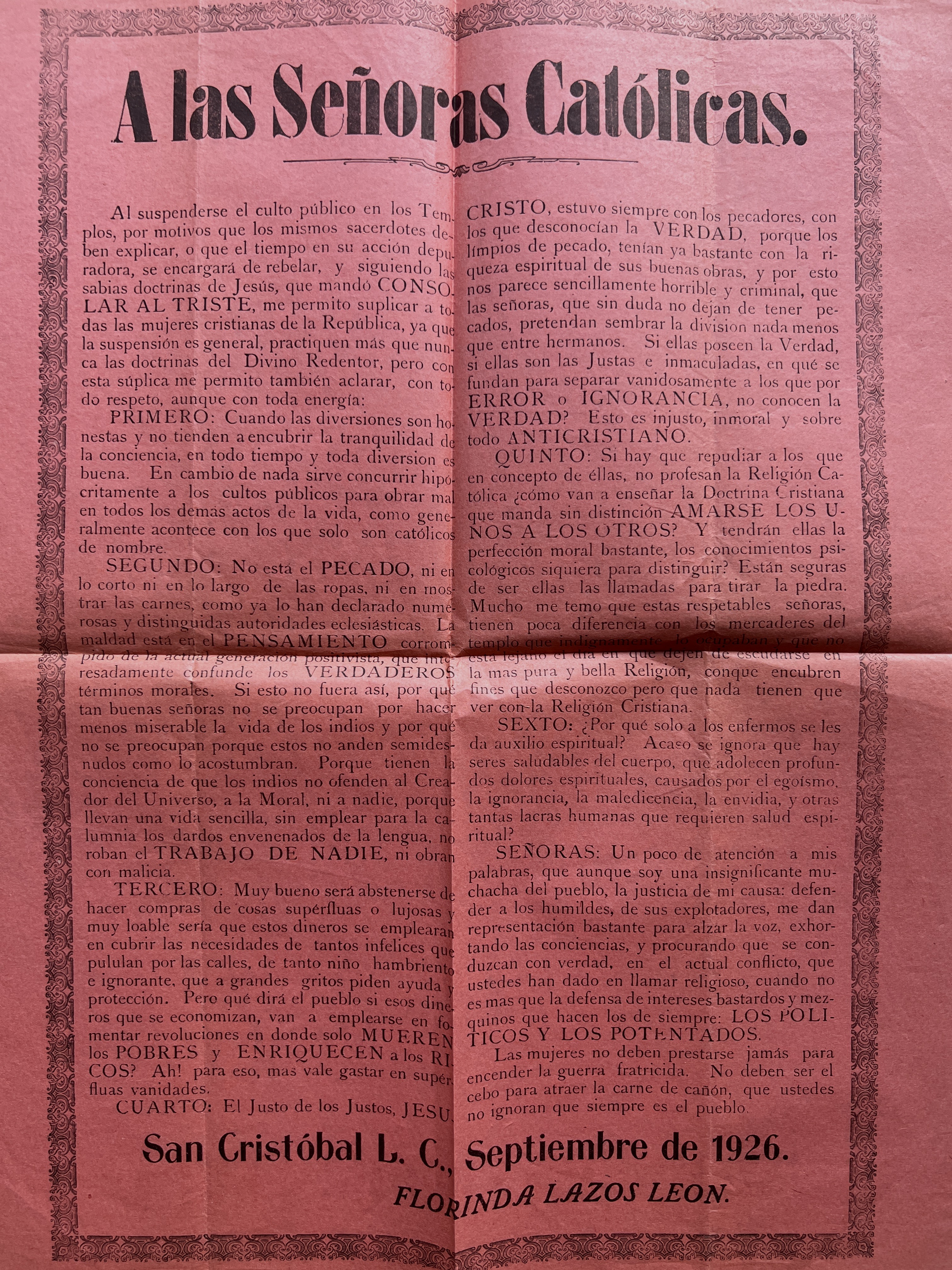
Florinda Lazos León 1926
Broadside by soldadera, suffragist, and labor organizer Lazos León: the first woman to serve in state-level elected office in Mexico.
Broadside by soldadera, suffragist, and labor organizer Lazos León: the first woman to serve in state-level elected office in Mexico.
Á las Señoras Católicas
[Lazos León, Florinda]. Á las Señoras Católicas. San Cristóbal [de las Casas], Mexico: np, 1926. Broadside. 46.5 x 33 cm. Thin colored paper, creased where folded, a few v minor defects at edges, otherwise very good condition.
Revolutionary soldadera, suffragist, journalist, and labor organizer, Florinda Lazos León (1898-1973) advanced feminist and labor causes throughout Mexico, but particularly in her home state of Chiapas. During the Revolution she was a nurse in the Carrancista Liberating Army of the South and participated in organizing both the first Congress of Women Workers and Peasants of Chiapas (1919) and the first National Congress of Women Workers and Peasants (1931).
Scholarship on Mexican suffrage often omits the fact that Chiapas was the first Mexican state to grant women full rights of citizenship (“just” the fourth to give them the right to vote). In 1926, Lazos León became the first woman elected to the Chiapas legislature, more than a quarter century before women won the right to vote nationally. Though a few women had been elected in the Yucatan in 1924, they were not allowed to serve, making Lazos León the first woman ever to serve in a state-level elected office in Mexico.
This broadside was published after Lazos León announced her candidacy in a July issue of the worker’s party newspaper that she edited, La Gleba, and shortly before her November election. It is addressed to the women of her hometown, San Cristóbal de las Casas. The text is a finessed position on the Cristeros Rebellion–a violent conflict between the Mexican state and the Catholic Church in the 1920s. The seeds of the rebellion began with the 1917 Mexican Constitution. It restricted the political and economic power of the Church through several measures: requiring primary schools to be secular, nationalizing their property, and banning public ceremonies; the Church’s power was further reduced by additional statues and enforcement beginning in 1924 during the Calles presidency. Following increased anticlerical persecution, the Catholic hierarchy refused to conduct public mass and closed their churches in 1926. This led to an unusual role for women, who became the leading lay ministers of their communities.
In the present document, Lazos Leon implores women not to be drawn into the conflict, or as she wrote, used as “cannon fodder” by powerful government and religious interests. Instead, she asks that they stay true to the roots of their Christianity and protect poor and working people (including the rights of indigenous peoples).
Truly a rare surviving primary document authored by Lazos León who has no author record in WorldCat.
SOLD
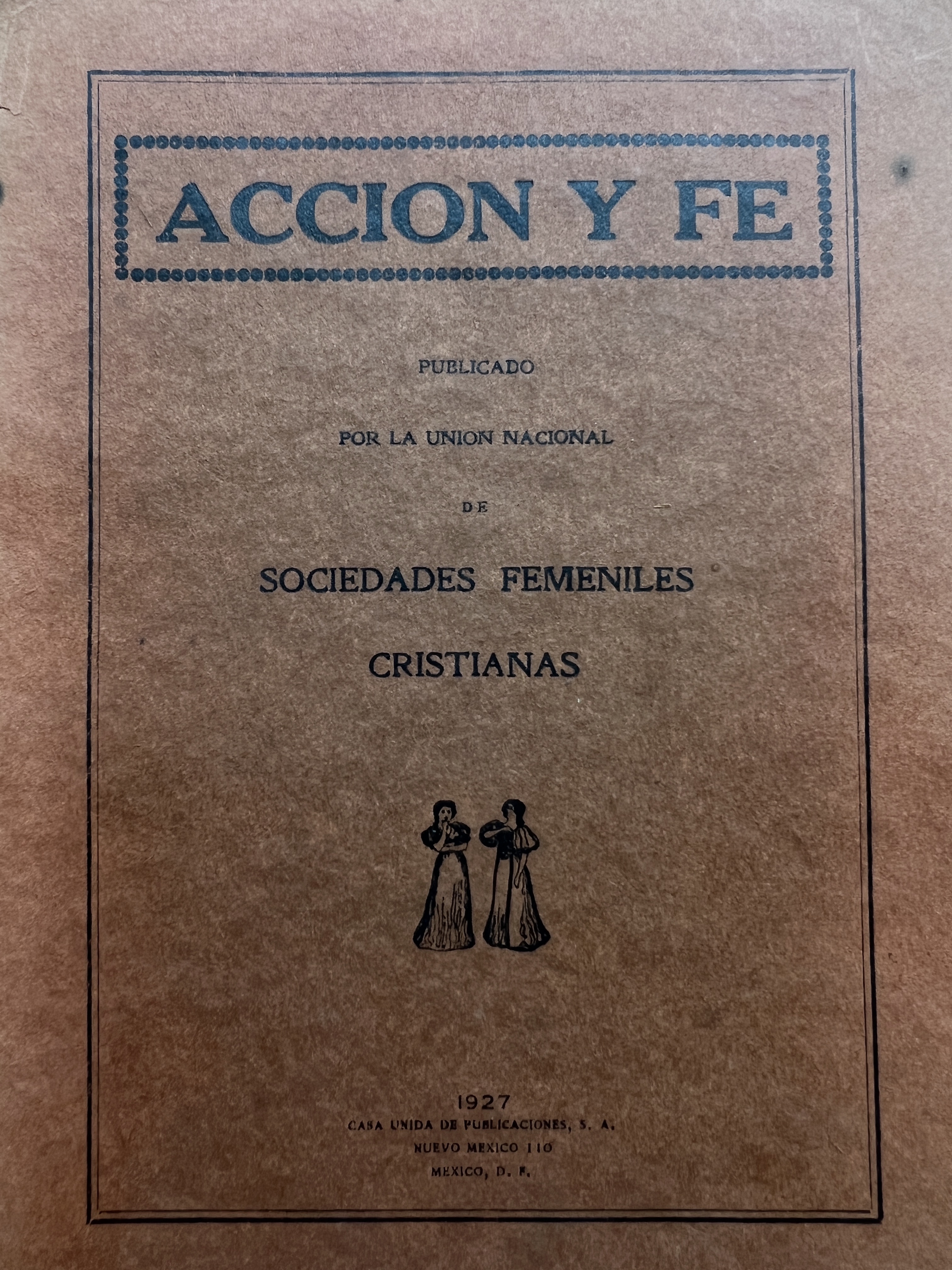
La Unión Nacional de Sociedades Femeniles Cristianas 1927
(Evangelicalism) (Women Missionaries) Unrecorded? collection of plays, music, and stories to be used domestically and in the field.
(Evangelicalism) (Women Missionaries) Unrecorded? collection of plays, music, and stories to be used domestically and in the field.
Acción Y Fe
La Unión Nacional de Sociedades Femeniles Cristianas. Acción Y Fe. Mexico, D.F.: Casa Unida, 1927. 22.5 cm, 79 pp/; color stapled wrappers with losses at spine and rear.
Collection of stories, plays, poems, and music for use by Protestant women in evangelical educational contexts: seemingly both in the home and in missionary work. A number of “dramas” present conversations between criollo/mestizo women and indigenous women and girls (Voces Feminines, Diaologos Misioneros). Another dialogue entitled “Cristo y las mujeres del mundo” describes the women of Japan, Africa, Turkey, India, etc.
Fascinating artifact of women’s evangelicalism in Mexico during the national indigenismo movement.
Not found in OCLC.
SOLD
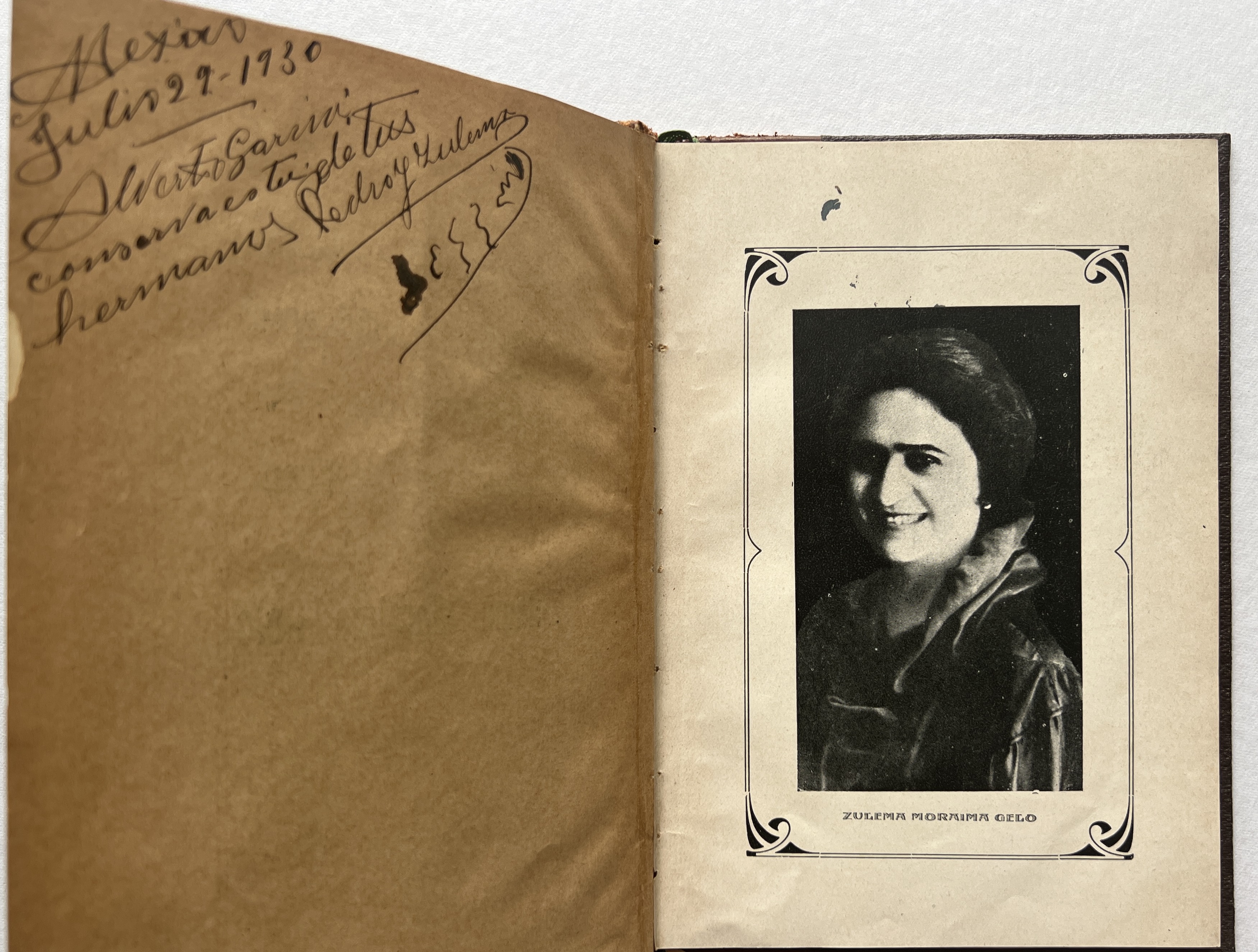
Zulema Moraima Gelo 1929
(Occult) (Fortune Telling) Signed copy of a rare Mexican chirology guide.
(Occult) (Fortune Telling) Signed copy of a rare Mexican chirology guide.
Los misterios desvelados [sic]; tratados de quirognomia; el árbol del ocultismo [...]
Moraima Gelo, Zulema. Los misterios desvelados [sic]; tratados de quirognomia; el árbol del ocultismo; la luz en el sendero. Mexico, D.F.: np, 1929. 18.5 cm, 92 pp.; frontispiece portrait and 3 b/w pls., minor area of faded color pencil underlining on p. 34; in contemporary half calf, spine with gilt lettering, heavily rubbed, lacking orig. wrapper? Manuscript signature and dedication on verso of half-title by the author to Arthur Garcia (with his ex-libris stamp).
Zulema Moraima Gelo, born Maria Ciriaca Resendis, was a glamorous fortune teller and chirologist in Mexico City in the 1920s and 1930s. She claimed to be of “African Moorish” descent; her exoticized stage name, taken from a contemporary opera, reflects the popularity of Orientalism in literature and art of the period. Although divination and cartomancy would have been a common aspect of certain theatrical and public performances in Mexico in the 19th century, fortune tellers with fixed addresses and private rooms emerged only slowly in the early 20th. Initially they requested municipal authorization for their businesses, but by 1919, when Zulema applied for permission, Mexico City had turned against fortune telling and created a policy not only to refuse new licenses, but to withdraw those which had been granted, and to prosecute fortune tellers and cartomancers as frauds.
Zulema therefore moved her studio frequently, and circulated in sympathetic artistic and intellectual circles where spiritualism was admired (she was praised by the poet Jose Emilio Pacheco as “our maximal visionary”). Unfortunately today she is mostly remembered for a series of public scandals involving her romantic life and deceptive business practices.
The present volume appeared during the height of her fame, when she toured to Havana as an “Arab clairvoyant” and correctly predicted political and global events (the Spanish Flu, the death of a local politician). It offers personal interpretation and instruction on familiar conventions of palmistry and divination. Seemingly issued in very limited numbers, OCLC identifying only one copy, at the Biblioteca Nacional de México.
$450
See: Avilés, M. M. (2017). La suerte está echada. Clarividentes, adivinadoras, palmistas y cartomancianas. Alquimia 61.
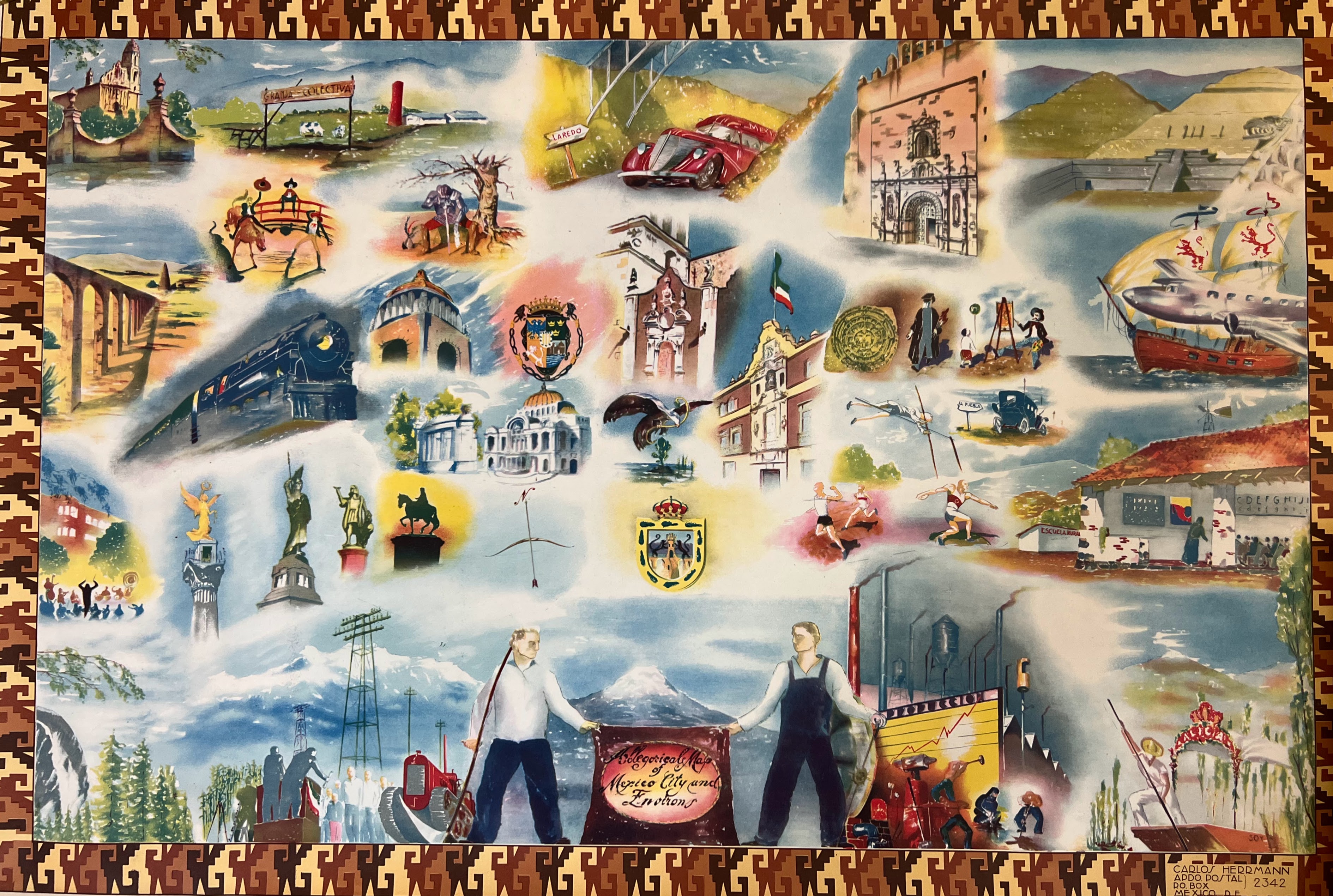
Carlos Herrmann ca. 1930-1935
Allegorical Map of Mexico City and Environs
(Pictorial Cartography) Herrmann, Carlos. Allegorical Map of Mexico City and Environs. Mexico, D.F.: n.d, ca. 1930-1935. 63.5 x 92.3 cm. Image very good, blind margins a bit worn, beginning to fray.
A pictorial map of Mexico City, representing the natural, industrial, architectural, and cultural landmarks of the city. The artist blends indigenous styles and historical references with colonial and postcolonial features, identifying the key features of Mexico’s emerging modern national identity.
Probably printed in the 1930s during the Maximato, when as Delia Cosentino has argued, “the production, circulation, and consumption of such imagery offered the opportunity to imagine a uniquely animated geography coming into its own … [C]artography, [was] an advantageous way to shape the view of Mexico as a cohesive entity with a rapidly developing infrastructure and an evolving relationship with its own Indigenous past and present. [...]. Through these images dating to the first half of the 1930s, an international cadre of artists, travelers, publishers, government officials, and other boosters disseminated an integrated vision of Mexican cultural space and thereby coproduced the territory itself.” (1)
Known from a single other example, in the David Rumsey Map Collection.
$950
Notes:
1. Delia Cosentino. “Unfolding Maps during the Maximato in Mexico,” Latin American and Latinx Visual Culture 1.1 (January 2019).

Silvia Guerrico 1932
(Radio) (Tango) (Women's Literature) (Association Copy) Signed first editions by the rioplatense radio star.
(Radio) (Tango) (Women's Literature) (Association Copy) Signed first editions by the rioplatense radio star.
Cocktail
Guerrico, Silvia. Cocktail (Para el atardecer de un sábado inglés): Cuentos Breves. Buenos Aires: Editorial Tor, 1932. First edition. 18.5 cm, 157 pp.; textblock toned with foxing, stories followed by five pages of publicity and press blurbs about Guerrico and an index. Color wrapper with illustration by Luis Macaya (1888-1953), older glue repairs to spine. With signed manuscript dedication from the author to Mané Bernardo on half-title, and a newspaper clipping with a photograph of the author, accompanied by a second handwritten note from Guerrico to Bernardo, both laid in. Note reads “A Mane Bernardo, amiga muy querida, en el atardecer de este sábado inglés en que la alegría de todas hizo editar un segundo cocktail. Cariñosamente. Silvia.” Together with a signed copy of: Guerrico, Silvia. Los príncipes azules. Montevideo: Rossi, 1927. First edition. 20 cm, 139, [5] pp.; in color illus. glued wrapper, illustration by Mario Castellanos. Losses to wrappers, spine, and interior chipped and toned. Reading copy only. Signed dedication by the author on half-title to the poet Fermín Estrella Gutiérrez.
Important association copies of early short stories by radio star Silvia Guerrico (Uruguay, 1905-1983), whose daily program in Buenos Aires became one of the most popular primetime shows in Rio Plata during the medium’s golden-age. Guerrico began her career as a theater critic in Montevideo, where she published Los príncipes azules (Prince charmings) when she was just 22. The collection was well-received by her contemporaries, including Juana de Ibarborou and Blanca Luz Brum. Brum wrote that “since she lives her life touching the painful and burning things, she could very well be a ‘little Russian’ in our literature [otherwise] prostituted by pornography and gauchismo.” (From publicity blurb in Cocktail, p. 157.)
Guerrico moved to Buenos Aires in 1928, where she shifted back and forth between print (incl. a regular newspaper column) and the radio, starting her own “magazine” program in late 1930. This quickly evolved into a daily broadcast called Cartel sonoro featuring many of her own poems and radio plays. Cartel sonoro was part of a wider effort to attract female audiences and consumers to variety shows and narrative programming. By the age of twenty-seven, Guerrico’s program had become a primetime success and an important platform for other women journalists and writers.
Despite her popularity, she was regularly criticized for the “vulgarity” and “femininity” of her on-air persona. Her rise corresponded to a new era of celebrity in Argentinian radio, and the government was just catching up to conservative concerns about the immorality of radio programming and modern music (particularly tango). It was during this period that she wrote the stories in Cocktail, which, like Los Principes Azules, depict modern women drinking and dancing and men who exploit and violate them. In Guerrico’s telling, the only exceptions to this dynamic are men and women of strong moral character brave enough to stand up for themselves. Guerrico’s playful dedication of Cocktail to her “dear friend” the lesbian puppeteer Mané Bernando conjures an intimate world of artist party-going on the “English Saturday”, i.e. the newly created legal right to a half-day off on Saturdays.
The cover illustration of Cocktail reflects the place tango had come to occupy in the Argentinian popular imagination. Associated in the 1930s with violence, the lower classes, and urban areas where prostitution was legal, the racist components of the image were part of the public association of tango with Afro-Argentinian traditions (“tango” and “tambo” were probably initially used to refer to musical gatherings of enslaved people in the Rio Plata).
Rare despite Guerrico’s fame: two copies listed by WorldCat for Cocktail; approx. 6 for Los príncipes. None in modern sales records.
SOLD
Further historical notes on Guerrico and censorship against women:
In 1933, shortly after Cocktail’s publication, Argentina passed laws to limit political speech on the radio and censor tango lyrics. In the spring of 1934, Guerrico interviewed Mexican film star Ramon Navarro for the evening news. Apologizing for recent poor reviews of his local performances, she offered him an impassioned defense that was the start of what became known as the “Guerrico affair”:
“I am going to say to you [...] what women would [say] if nobody was listening, if the mocking gaze of men did not weigh upon them, injuring and humiliating them. . . . Women love you, and there isn’t one who would not [like to say] thank you [...]. For an hour, from whatever movie screen in the world, you have …. erased all realities . . . there were no women who worked like dogs and had to marry some pimple-faced guy; there were no women who waited for the rough kiss of a dirty husband; there were no women overloaded with sadness and children. . . . Men have made life very difficult for women. And day-by-day, they make it uglier.”
Despite the seemingly low-stakes context of a radio interview, the speech’s implications about women’s desire, fantasy, and social silence surrounding their ordinary suffering was incendiary. The radio press called for government investigations. They questioned Guerrico’s qualifications, and women’s more generally, to speak. When she was not immediately fired they criticized her for having dared to “speak for Argentinian women” and described her as a “true threat to the tranquility of the radio listener.” One aggrieved reviewer wrote that Guerrico had proved “women and a microphone are incompatible.” Later that year, there was an executive degree with strict radio regulations to curb offensive content, a move that mirrored the new Hollywood industry guidelines known as the Hays Code. Eventually Guerrico was fired.
She found her way again with a more conservative radio program in the mid-1940s but went into exile after Perón’s election in 1946. After a number of years in Mexico, she eventually settled back in Uruguay.
Cited:
Ehrick, Christine. Radio and the Gendered Soundscape: Women and Broadcasting in Argentina and Uruguay, 1930-1950. United Kingdom: Cambridge University Press, 2015, pp. 33-69.
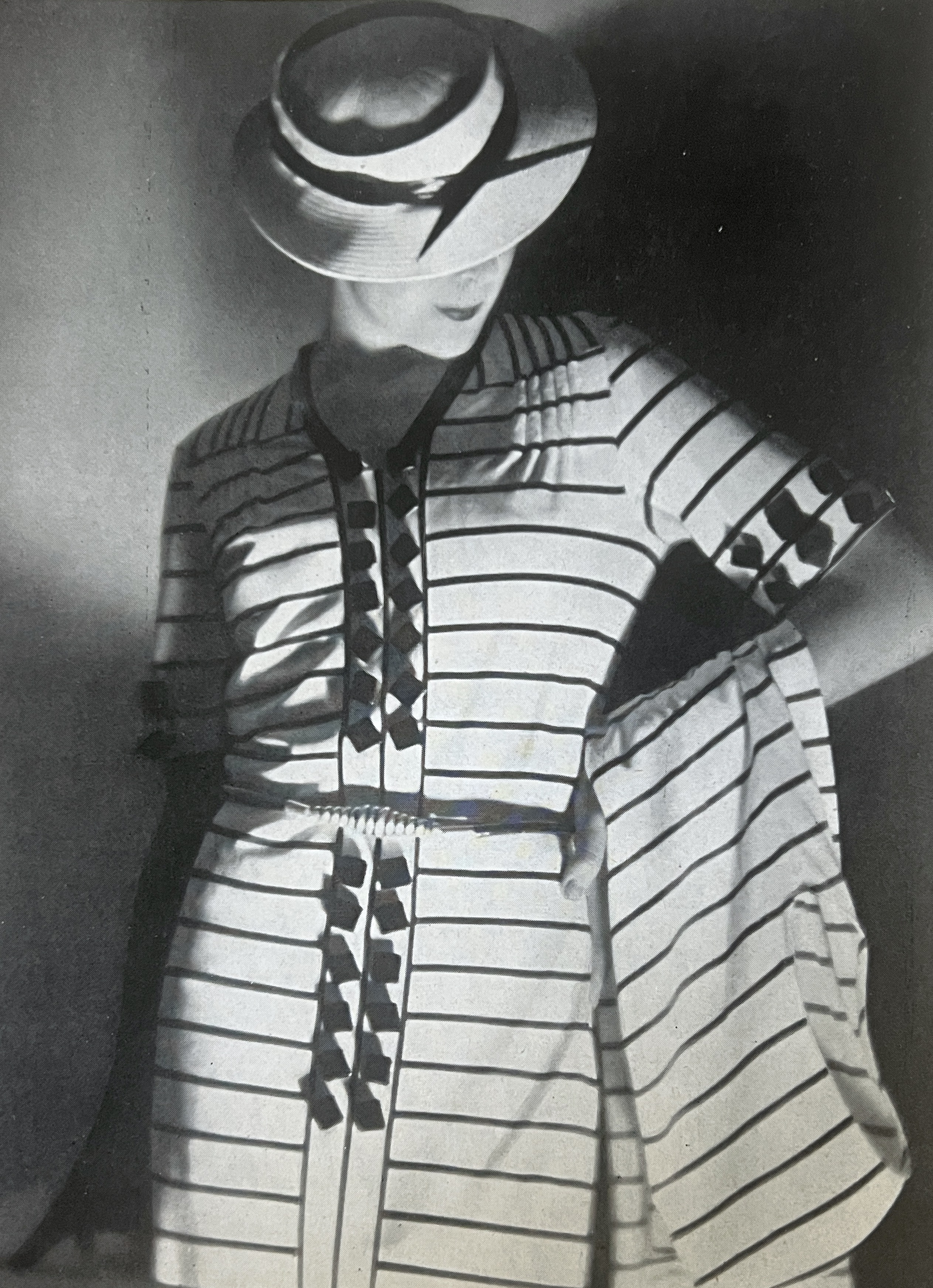
(Karr, Carme, aka Carmen Karr) 1933-1935
(Feminism) Complete run (24 issues) of an uncommon Spanish Republican women’s serial.
(Feminism) Complete run (24 issues) of an uncommon Spanish Republican women’s serial.
Cultura Doméstica; Cultura Femenina (all published)
(Feminism) [Karr, Carme, aka Carmen Karr] Cultura Doméstica: Revista Mensual de [...] las Diversas Ramas de la Vida Familiar. Año I, Núm 1-18; followed by Cultura Femenina: Revista Mensual Ilustrada de la Mujer y el Hogar. Año III, Núm 19-24 (all published). 26.8 cm, annual continuous pagination (122, 182, and 96 pp. respectively); illustrated women’s serial with texts in both Castilian and Catalan, bound in single cloth volume, lacking orig. wrappers. Barcelona: 1933-1935.
Uncommon Spanish Republican women’s serial directed by the Catalonian feminist and journalist, Carme Karr, who wrote for and edited some of Spain’s earliest feminist publications, including the magazines Feminal and Or y Grana. Women were granted suffrage in Spain in 1931 (and were elected to office that same year), but the could not actually participate in elections until November 1933, shortly after the origination Cultural Doméstica.
The serial documents the early days of this brief moment in Spanish women’s history (roughly 1931-1939), when new freedoms and roles were possible. This period lasted until the Republican defeat in the Civil War ushered in a new era of tradition and oppression. Along with monthly columns on women’s issues and news by Karr (e.g. “La mission social de la mujer en la vida moderna,” the magazine carried regular features on girl’s education, women at work and job training, medicine and family health, cooking, fashion, applied arts and interior design, all with an emphasis on modern styles, particularly German. Contributions by or articles on artists and authors including Elvira August Lewi, Margarita Sans Jordi, Margarita Xirgu, Anna Casanovas (book binder), Maria Teresa Vernet, Enriqueta Pascual Benigani, and the fashion houses Pedro Rodriguez and El Dique Flotante.
OCLC records one holding, in Barcelona.
$550
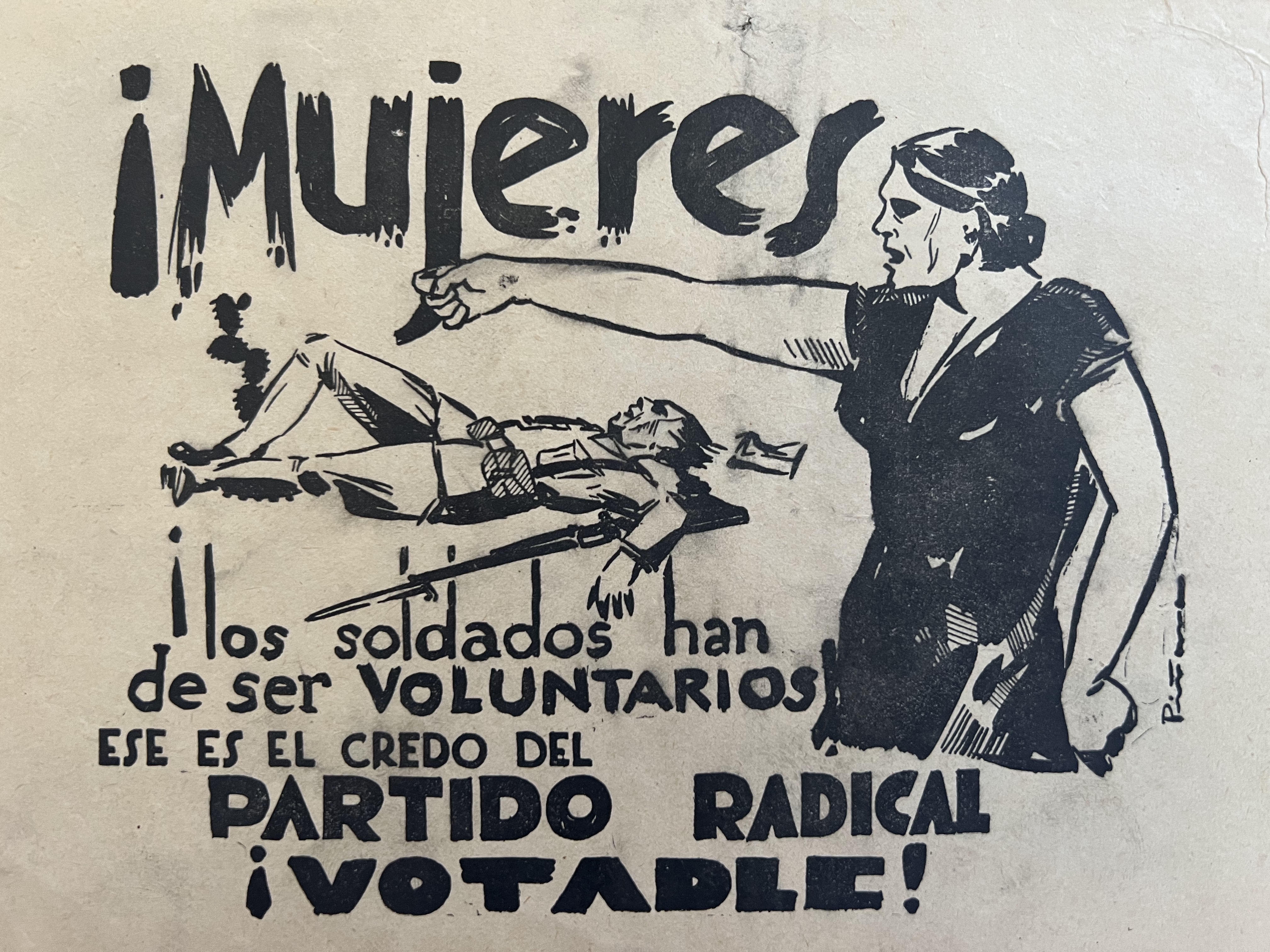
Agrupación Mujeres Libres; La Secció Femenina del Bloc Obrer i Camperol; Las Agrupaciones Femeninas del Partido Radical, et al. 1934-1938
(Suffrage) (Anarcho-Feminism) (Music) Unrecorded ephemera from Republican women's political organizations.
(Suffrage) (Anarcho-Feminism) (Music) Unrecorded ephemera from Republican women's political organizations.
Eight Spanish Republican Women’s Groups’ Handbills and Flyers
(Anarcho-Feminism) (Guerra Civil) (Suffrage) (Songs) [Agrupación Mujeres Libres; La Secció Femenina del Bloc Obrer i Camperol; Las Agrupaciones Femeninas del Partido Radical, et al.]. Eight Republican Women’s Groups Handbills and Flyers, ca. 1934-1938. Np, nd. [Barcelona, Madrid, et al.]. Various sizes ranging from 31.5 x 22 to 16.5 x 16.5 cm; all but one printed recto only, fragile papers with minor fraying and small closed tears or nicks throughout. One green paper foxed. One illustrated, linocut?
Rare ephemera from various Republican women’s political organizations during the Spanish Second Republic and the Civil War, these handbills express outrage with the failures of certain political leaders and parties, and appeal to women to vote (as proletariat workers; domestic laborers, and mothers). Women’s suffrage was established in 1933; these examples attempt to enlist their support for the FAI and CNT, Catalonian Independence, and voluntary military service, among other issues.
One important sheet contains two coplas (folk songs) first published in the anarcho-feminist “Mujeres Libres” magazine: “El sambenito” and “Alto la Revolución.” These represent the complexity and despair of the counter-revolutionary movements building at the end of the Civil War.
None of the present examples are recorded in OCLC collections.
SOLD
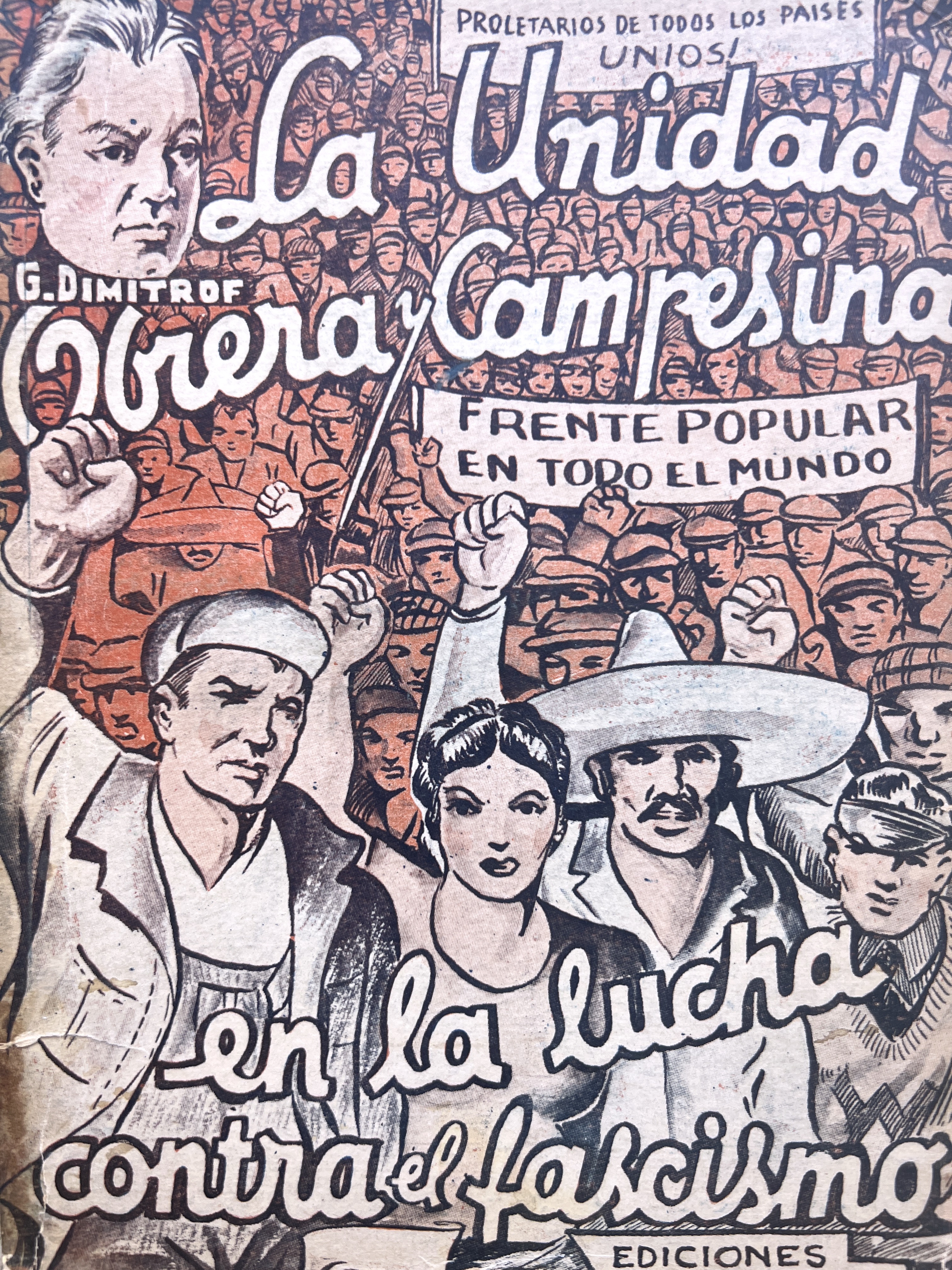
[Dimitrov, Georgi] [1935]
(Communist Publishers) Mexican edition of Dimitrov's speeches from the 1935 Comintern, with 3 publicity slips for the communist publisher EFC.
(Communist Publishers) Mexican edition of Dimitrov's speeches from the 1935 Comintern, with 3 publicity slips for the communist publisher EFC.
Frente Popular en todo el mundo [...]
Dimitrof, G. [Dimitrov, Georgi]. Frente Popular en todo el mundo: La unidad obrera campesina en la lucha contra el fascismo. Mexico: Ediciones Frente Cultural, nd. [1935]. 19 cm, 111 pp.; color pictorial wrappers with losses, esp. to blank rear edges. A few chips in toned textblock. One signature, pp. 81-96, bound upside down.
The only Mexican edition of Georgi Dimitrov’s Stalinist speeches promoting the Popular Front at the Comintern Congress, 1935. Dimitrov was a Bulgarian communist and General Secretary of the Comintern from 1935-1943. With three loose illustrated advertisements for other communist publications by Ediciones Frente Cultural (EFC), and a booksellers ticket on rear wrap from Libreria Navarro (EFC having been founded by Navarro owner, Enrique Navarro Orejel).
One copy? of this edition located by WorldCat, at UT-A. Cataloged page numbers differ vastly (47pp according to UTA). Later Spanish editions published in Europe include Dimitrov’s speeches from Comintern congresses in 1936 and 1937.
$225
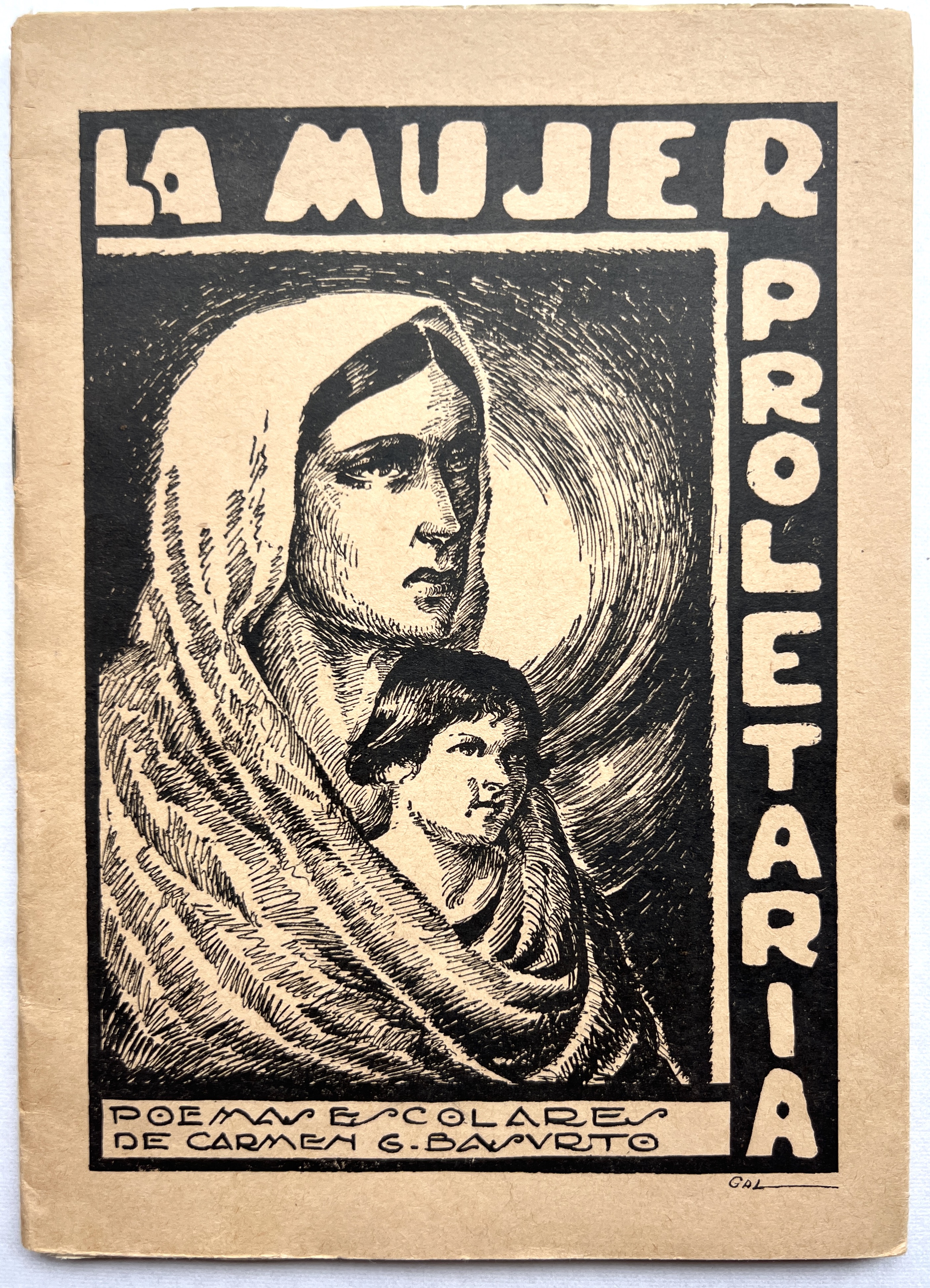
Carmen Basurto 1935
(Women’s Work) Presentation copy signed by the Mexican poet to feminist Leonor Llach.
(Women’s Work) Presentation copy signed by the Mexican poet to feminist Leonor Llach.
La Mujer Proletaria: Poemas Escolares
Basurto, Carmen. La Mujer Proletaria: Poemas Escolares. [Mexico, D.F.] Mixcoac: np, 1935. 19 cm, 21, (3), pp.; poems, index, and advertisement for Basurto’s previous booklet “Alborada”, two sheets laid-in, printed recto only, each with a poem: “La Mujer Proletaria” (not otherwise printed in the booklet), and an homage to Palma Guillen, Mexico’s first female ambassador, appointed in 1935; in stapled pictorial wrapper, very small stain at foredge, illustrated by Enrique Galindo, with printed flaps. Signed by the author in ink with dedication to the feminist Leonor Llach on the “dedicatoria” page.
Basurto was a teacher and poet. She wrote a number of books and plays for children and was an advocate for the education of women and girls. The present work reflects the hope of many feminists following the election of President Lazaro Cardenas and his promises of labor reform and women’s civil rights. The title poem voices the suffering and danger of uneducated women, and of women in the workplace, exposed to the “malintentions” of their male bosses.
From the library of Leonor Llach, a writer who published on labor and women’s rights, including suffrage, education, domestic subordination, occupational segregation, and the yoke of traditional femininity. She was involved in the women’s organization of the PRI and was director of the library at the Ministry of Public Education (SEP).
Three copies described in OCLC: BNM, UCLA, and Univ. of Ill. None mention the additional sheets.
SOLD
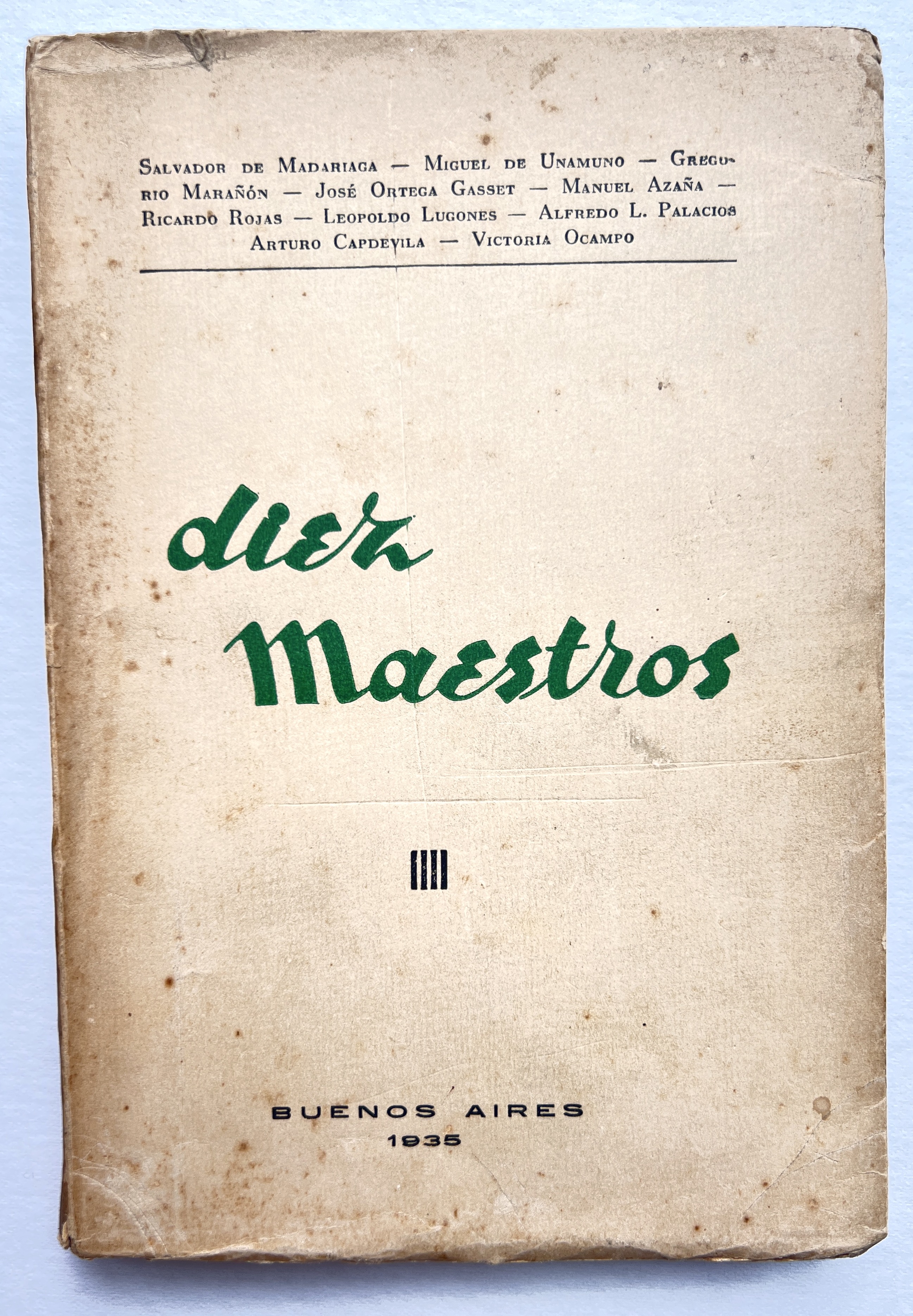
1935
(Ocampo, Victoria) (Feminism) Radio conference proceedings with the first published instance of Ocampo's manifesto "La mujer y su expresión."
(Ocampo, Victoria) (Feminism) Radio conference proceedings with the first published instance of Ocampo's manifesto "La mujer y su expresión."
Diez Maestros
Diez Maestros. Buenos Aires: Plan Cultural de la Manufactura de Tabacos “Particular”, 1935. 18.5 cm, 185 pp.; fore-edges foxed, interior clean; wrapper foxed and stained, edges bumped, spine chipping.
Proceedings of a radio conference held simultaneously in Madrid and Buenos Aires. Commercially sponsored by a tobacco company, the list of participants included José Ortega y Gasset, Victoria Ocampo, Leopoldo Lugones, and Manuel Azaña among others. The volume contains the first published iteration of Ocampo’s dogmatic feminist literary manifesto: La mujer y su expresión. An important item for Ocampo bibliographies and a curious artifact of an industrial manufacturer’s “cultural plan” that brought together “illustrious” hispanic authors, political philosophers, scientists, and poets (many with socialist beliefs).
OCLC lists 2 copies in North America: BYU and Univ. of Victoria.
$125
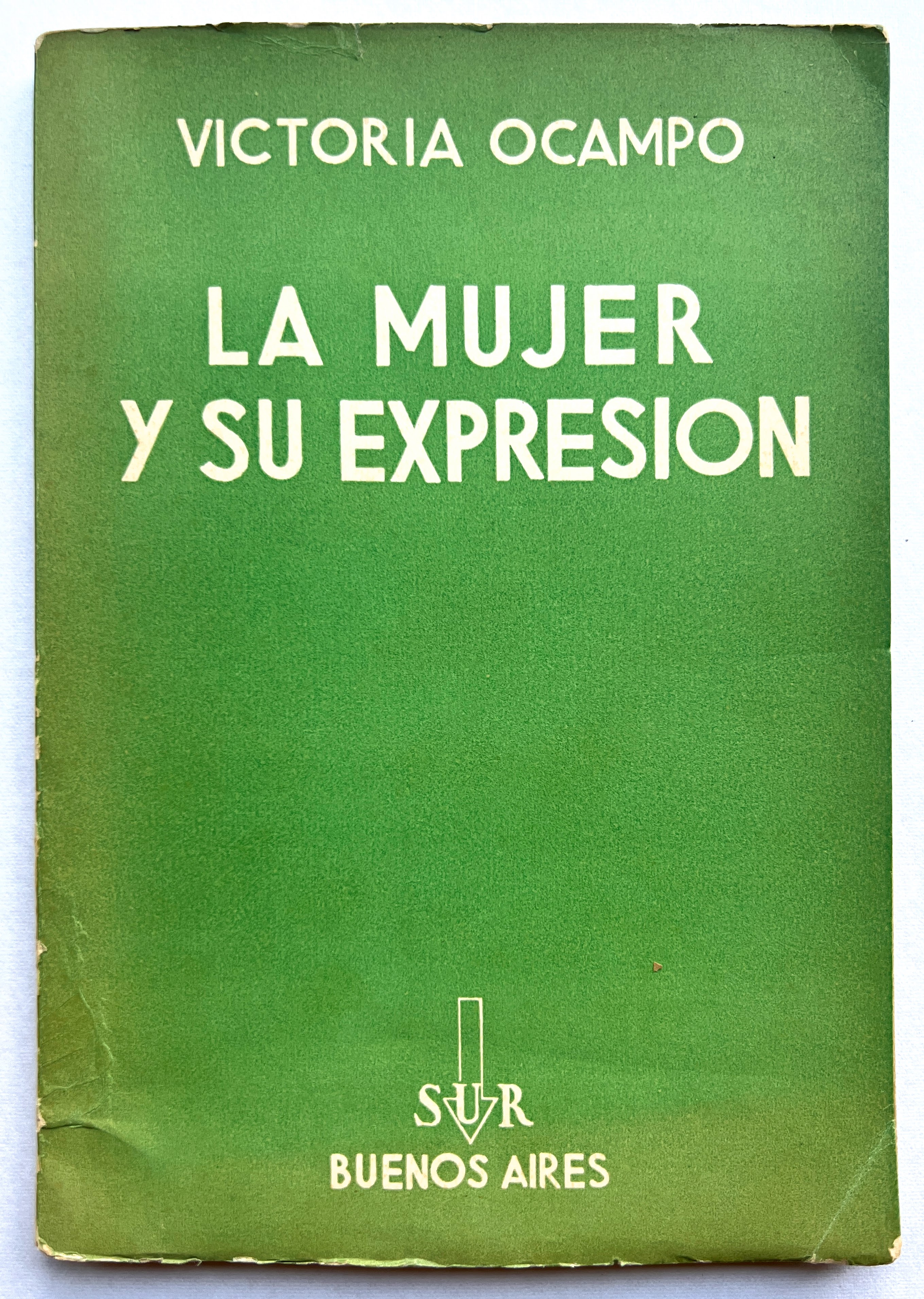
Victoria Ocampo 1936
Signed first edition of Ocampo's first collection of feminist essays, with dedication to Alberto Gerchunoff.
Signed first edition of Ocampo's first collection of feminist essays, with dedication to Alberto Gerchunoff.
La Mujer y su Expresión
Ocampo, Victoria. La Mujer y su Expresión. Buenos Aires: Sur, 1936. First edition. 21.5 cm, 67 pp.; small dampstain at upper fore edge, pages largely unopened; signed and dated by the author in ink to author Alberto Gerchunoff on ffep, with shelf stamp (bookseller’s?) on same page; in orig. green paper wrappers, worn, corners bumped, rear wrapper with small repair and a closed tear at rear hinge.
Signed first edition of a volume containing three of Victoria Ocampo’s first openly feminist essays. Ocampo was one of 20th-century Latin America’s most famous authors and intellectuals. In addition to her own writing, she was the founder and editor of Sur, the avantgarde literary magazine closely associated with Borges and his circle.
The present book Includes the ground-breaking title essay, originally given during a radio broadcast conference in Argentina and Spain, which seeks an autonomous feminine expression or language. Anticipating so many later philosophers, including Cixous, Ocampo described the constraints of “masculine” forms and styles and the futility of trying to write within them. She wrote: “El monólogo del hombre no me alivia ni de mis sufrimientos, ni de mis pensamientos. ¿Por qué he de resignarme a repetirlo? Tengo otra cosa que expresar. Otros sentimientos, otros dolores han destrozado mi vida, otras alegrías la han iluminado desde hace siglos.”
The final essay, “La mujer, sus derechos y sus responsabilidades,” directly addresses the evolving fight for women’s civil rights in Argentina and abroad.
$550
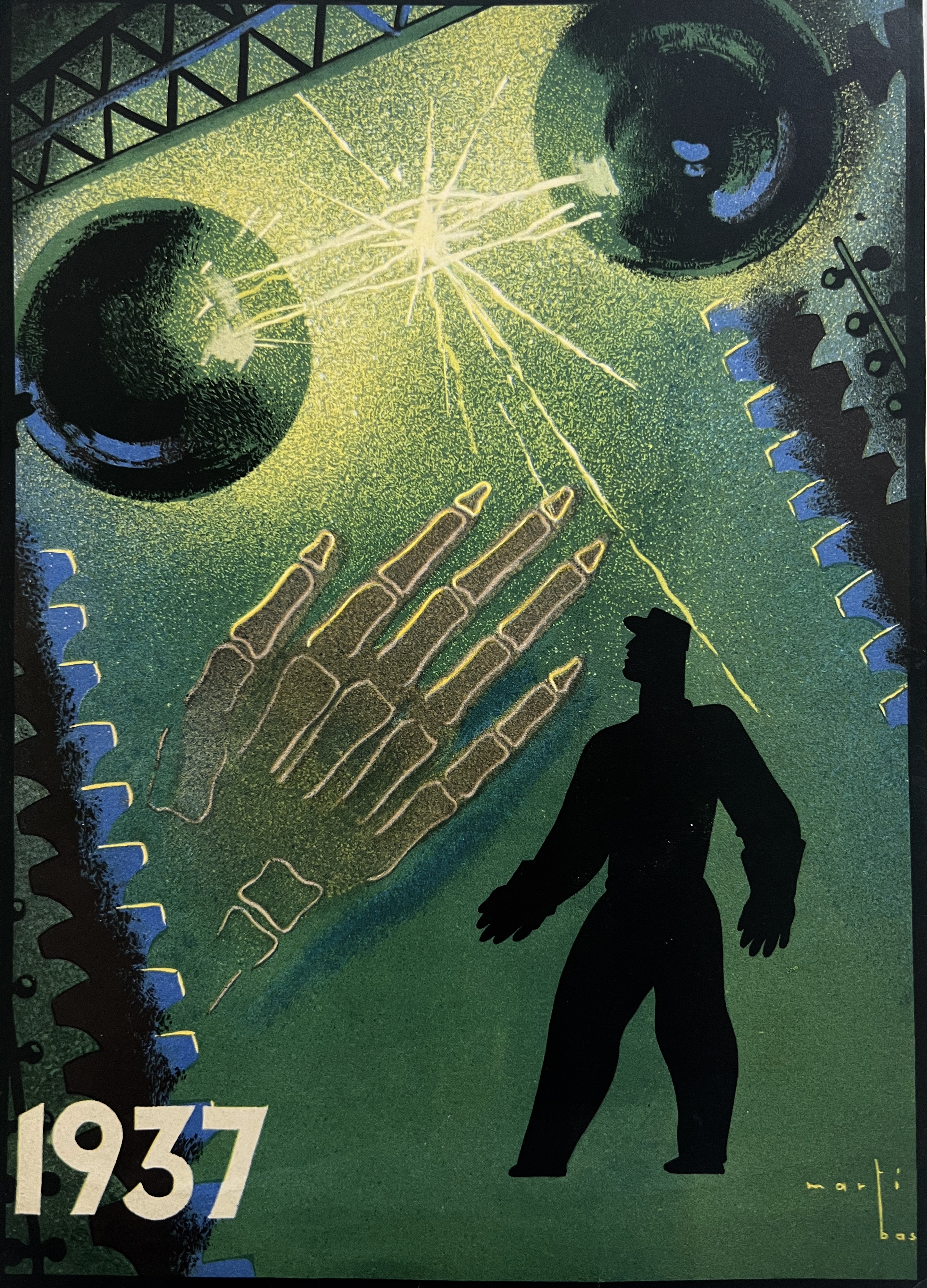
1937
Two illustrated calendars commemorating an exhibition of international worker safety posters.
Two illustrated calendars commemorating an exhibition of international worker safety posters.
1a Exposició de Cartells [...] Internacionals en Previsió dels Accidents de Treball
(Graphic Design) (Worker Safety) (Expositions) Generalitat de Catalunya, Conselleria de Treball; and Marti Bas, Illus. Calendar commemorating the 1a Exposició de Cartells Nacionals i Internacionals en Previsió dels Accidents de Treball. Barcelona: 1937. 23.5 x 16.6 cm; 52 weekly calendar sheets printed recto, each sheet illustrating a different international worker safety poster with explanations of the dangers represented in each, in Catalan. Sheets loose, neatly removed from their original perforated(?) binding, the final week mounted to a heavier card stock, weeks 43 and 46 with small losses to blind top edge where removed from binding. Orig. color cover present, illus. by Marti Bas, lightly foxed on blank verso, not affecting recto. Together with a second calendar: Generalitat de Catalunya, Conselleria de Treball. [Croada de La Previsio 1937]: [Commemoració de la 1a Exposició de Cartells Nacionals i Internacionals en Previsió dels Accidents de Treball…]. Barcelona: 1937. [Fotolitografia Barguño]. 11.4 x 7.7 cm. [8] pp., single sheet, tri-fold monthly calendar with 14 illus. Both VG+.
Appealing, otherwise unrecorded, artifacts of a graphic design exhibition organized during the Spanish Civil War by the Catalonian Ministry of Labor, probably in conjunction with the UGT (General Workers Union). The weekly calendar surveys 52 dramatic, often frightening, international accident prevention posters (incl. the workplace dangers of alcohol, electrical shocks; eye safety; braking; cranes, ladders, fire, slips and falls, heavy lifting, cables, scaffoldings, scalding, sharp tools, sewing machines, etc.). Examples drawn from safety campaigns in Finland, France, Germany, Hungary, Italy, Japan, The Netherlands, Norway, Poland, and the U.K. (Strange bedfellows given the political realities of many of these countries in January 1937!)
The safety posters themselves were probably the product of union efforts in individual countries, not necessarily by governmental organizations or propaganda offices. They underscore the dangerous and inhumane conditions that many laborers faced twenty years after the creation of the ILO in the Treaty of Versailles (1919). Occupational health and safety policy would not be nationally regulated in most of these countries for another thirty to forty years.
Cover illustration by artist Marti Bas, known for his work on other civil war-era posters and propaganda programs.
We are unable to find records of another copy of the weekly calendar in OCLC or market records, such as they are. The smaller, monthly calendar is known from other examples, but is also not listed in OCLC holdings.
Reserved
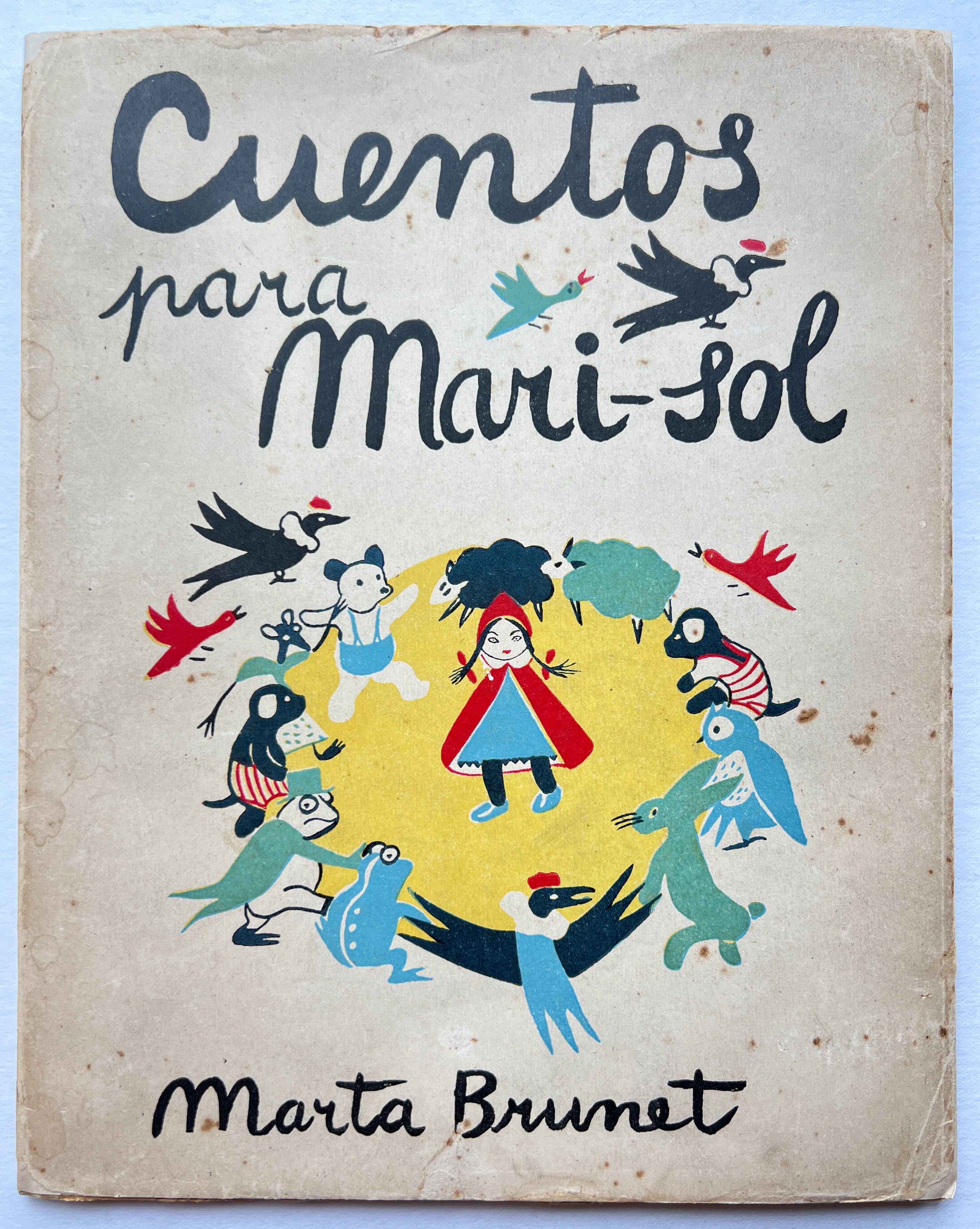
Marta Brunet and Maria Valencia, Illus. 1938?
Elusive first ed. of the beloved children's book by Chilean suffragist Marta Brunet; the only edition illus. by artist Maria Valencia.
Elusive first ed. of the beloved children's book by Chilean suffragist Marta Brunet; the only edition illus. by artist Maria Valencia.
Cuentos para Mari-Sol
Brunet, Marta. Maria Valencia, Illus. Cuentos para Mari-Sol. Santiago de Chile: Zig Zag, nd. (1938?). First edition. 25.2 cm, 49, [1], pp.; letterpress? with four-color halftone title page and five four-color halftone plates, additional in-text color halftone illus. throughout; each of the seven stories beginning with a historiated initial “R” (“Resulta que…”); the page numbers with changing ornamental surrounds corresponding to the different stories. Text block clean and uniformly toned, colors bright with some ghosting/bleedthrough from the inking of the color illustrations. Orig. stapled card stock boards, rebacked, with orig. color illustrated wrapper, stained and reinforced at edges and spine where there were small losses, Brunet/Valencia “ex-libris” design on the rear wrapper.
First edition of the beloved mid-century Chilean children’s book, Cuentos para Mari-Sol. Authored by the award-winning novelist Marta Brunet (1897-1967) and the only edition with exuberant color illustrations by Maria Valencia, one of four participants in the groundbreaking neocubist Exposición de Diciembre (often described as the first abstract art exhibition in Chile). Known from a single other copy, at the Biblioteca Nacional de Chile (BNC), the first edition seems to have been rarely consulted by most Brunet bibliographers, who do not fully differentiate it from all subsequent editions. One of the seven stories appearing in the first edition is missing from all others, and the second edition, published approximately 25-30 years later, was much enlarged, including an additional thirteen stories (Los Cuentos de Mama Tolita) written many years after the original Cuentos para Mari-Sol.
Brunet was a feminist novelist, one of the earliest Latin American women writers who were not “simply displaying the ways in which women have been subordinated and excluded from the conventional social contract” but actually imagining “alternative social arrangements not based on fixed gender identities or conventional gender roles.” She was deeply involved in the Chilean suffrage movement, and her writing “violated in particular the limits of a rigidly class-based society, attacking ‘good customs’ (...) The demand for boldness in the behavior of women linked to the rise of the suffrage movement included above all the use of language.”
Both Brunet and Valencia had traveled to Europe in the 1910s and 1920s and were known for their participation in avant-garde intellectual circles there and in Chile, Argentina, and Venezuela. In addition to their involvement in the suffrage movement, they were also involved in Chilenidad and Americanismo, which prioritized local and indigenous references and expressions. Gabriela Mistral wrote of Brunet: “se ha amamantado de chilenidad. Chilenidad de paisaje, de acento, de costumbre, de carácter.” Cuentos de Mari-Sol is an example of Brunet’s early, rural chilenidad: familiar tropes of children’s folktales placed in a Chilean context (e.g. a protagonist condor; and the landscapes of Chile, rather than Europe). After Mistral, Brunet was the second woman to receive the National Prize for Literature, in 1961.
We offer the approximate date of 1938 for this edition because Valencia’s distinctive cover image is visible in a famous photograph taken of Brunet in that year (photograph in the collection of the BNC). Various bibliographies offer different dates, ranging from 1934 in Marting’s Spanish American Women Writers: A Bio-Bibliographic Source Book, to 1941 by the BNC.
SOLD
Works cited:
Mistral, Gabriela. “Sobre Marta Brunet.” El Mercurio. July 8, 1929.
Oyarzún, Kemy. “Género y canon: la escritura de Marta Brunet.” Revista de la facultad de filosofía y humanidades, Universidad de Chile. No. 14. 2000.
Pignatello Regenstreif, Ellen G. Power, sexuality and the new social contract: Five twentieth century Latin American novels. Diss., Stanford University, 1994.
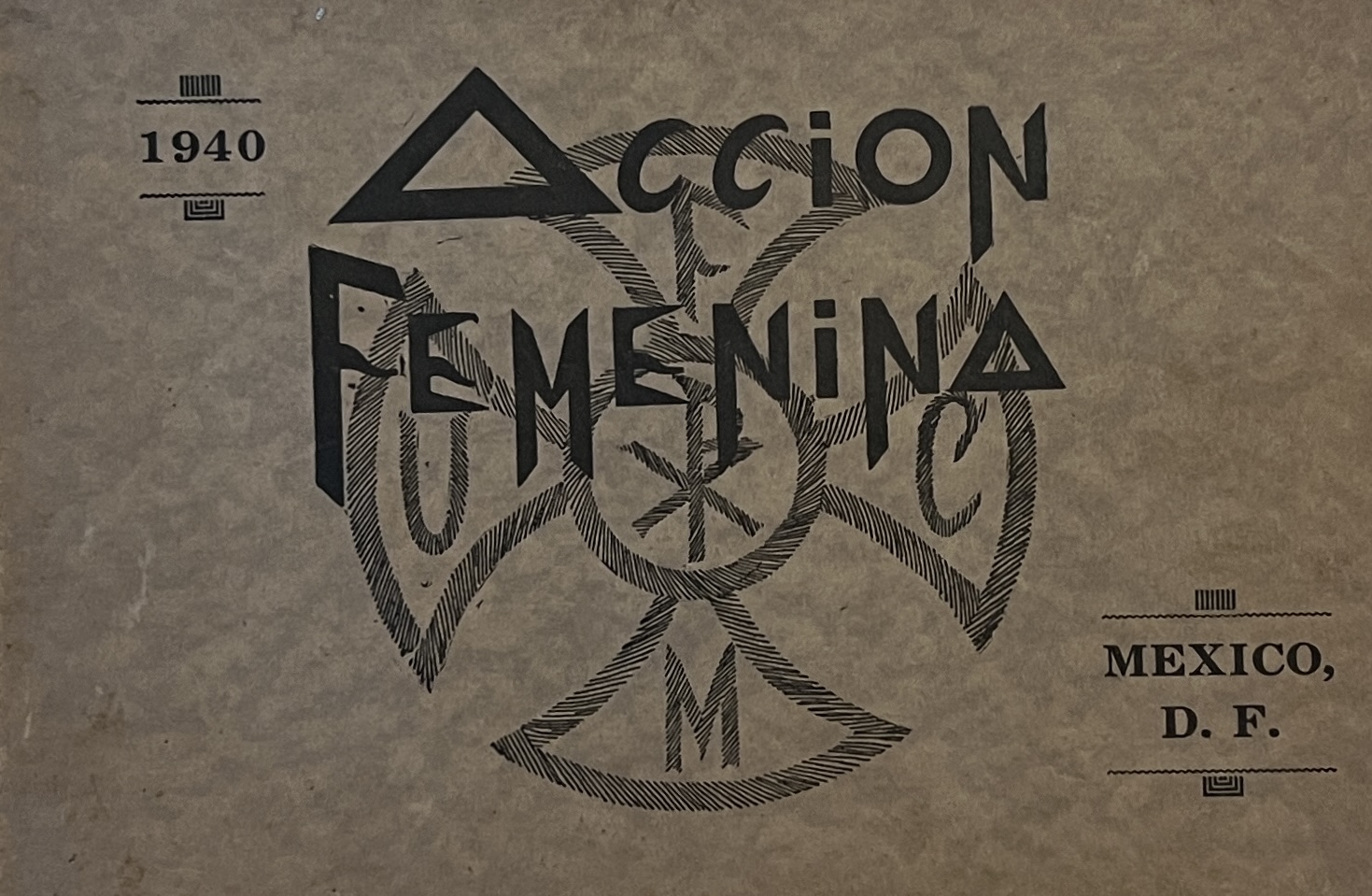
[Unión Femenina Católica Mexicana] 1940
(Antifeminism) (Counter-Revolution) (Women - Religious Organizations)
(Antifeminism) (Counter-Revolution) (Women - Religious Organizations)
Acción Femenina [title from cover]: V Asamblea
[Unión Femenina Católica Mexicana]. Acción Femenina [title from cover]: V Asamblea. Mexico, D.F.: Imp. Claret, 1940. Oblong 29.5 cm, 110, [1], pp.; 5 b/w plates from photographs, 1 pl. of O.L of Guadalupe; in stapled paper wrapper, separating from textblock at inside front hinge.
Conference publication documenting the 5th annual assembly of the women’s branch of Mexican Catholic Action, a proclerical lay community action group made up of many of the smaller organizations, including the women’s brigades, that played an important part in the Cristeros armed conflict. That conflict ended in 1929 with a series of compromises between the church and state and the women’s orgs were newly centralized under the national group, supervised by the diocese. This conference index and speeches illustrate continued Catholic resistance against secular education and other socialist post-revolutionary government policies, including divorce (no) women’s emancipation (no) and civil marriage (no).
OCLC finds no physical holdings in US libraries.
SOLD
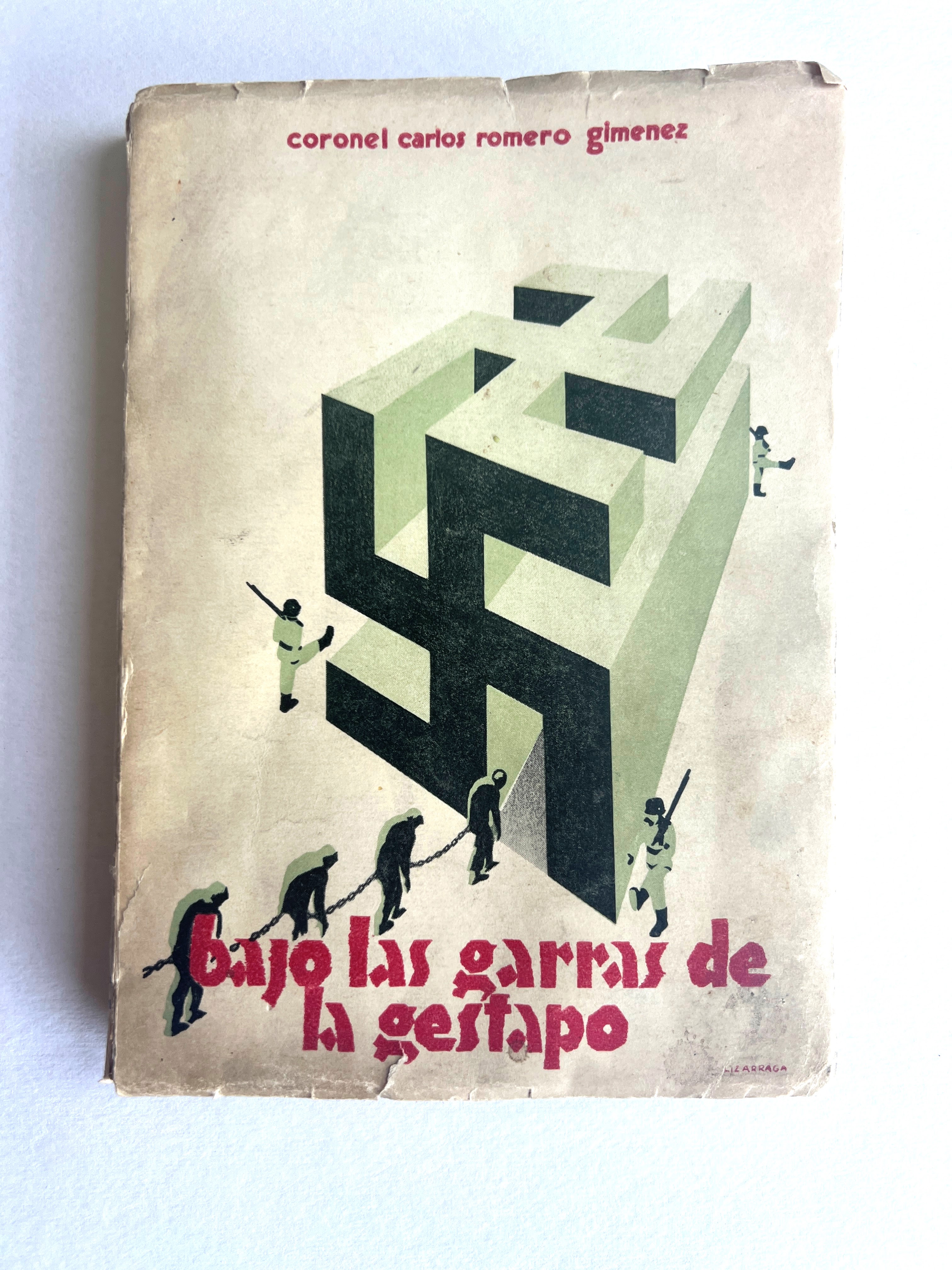
Romero Giménez, Carlos. 1943
(Exile) (French Resistance) (Gestapo) Memoir of exiled Spanish Republican's capture, torture, escape, and recapture by the Nazis.
(Exile) (French Resistance) (Gestapo) Memoir of exiled Spanish Republican's capture, torture, escape, and recapture by the Nazis.
Bajo las garras de la gestapo: 36 días en capilla
Romero Giménez, Carlos. Lizarraga Istúriz, Gerardo, Illus. Bajo las garras de la gestapo: 36 días en capilla. México, D.F.: Sociedad Mexicana de Publicaciones, 1943. 20 cm, 247, [6], pp.; text block toned, in orig. Illus. color wrappers by Lizarraga, frayed and discolored.
Romero Giménez was a leader of the Spanish Republican army during the Civil War, and a hero of the Defense of Madrid. At the end of the war he fled and was tried in absentia by Franco’s new government and twice sentenced to death. He first went to France where he played a leading role in the French Resistance; after his arrest and torture by the Germans he narrowly escaped the eastern death camps by the intervention of a Mexican diplomat who rescued him and his family from the Gurs concentration camp.
From 1942 until his death, he lived as an exile in Mexico, where he founded the publishing house that produced this memoir of his time in Bordeaux, his torture in the Gestapo prison at “Fort du Ha”, his escape, his recapture, and his journey from Gurs to Casablanca and finally, Mexico.
Illustrated by another Republican in exile, the antifascist organizer Gerardo Lizarraga, Remedios Varo’s ex-husband.
OCLC finds two US holdings: Harvard and LOC.
SOLD
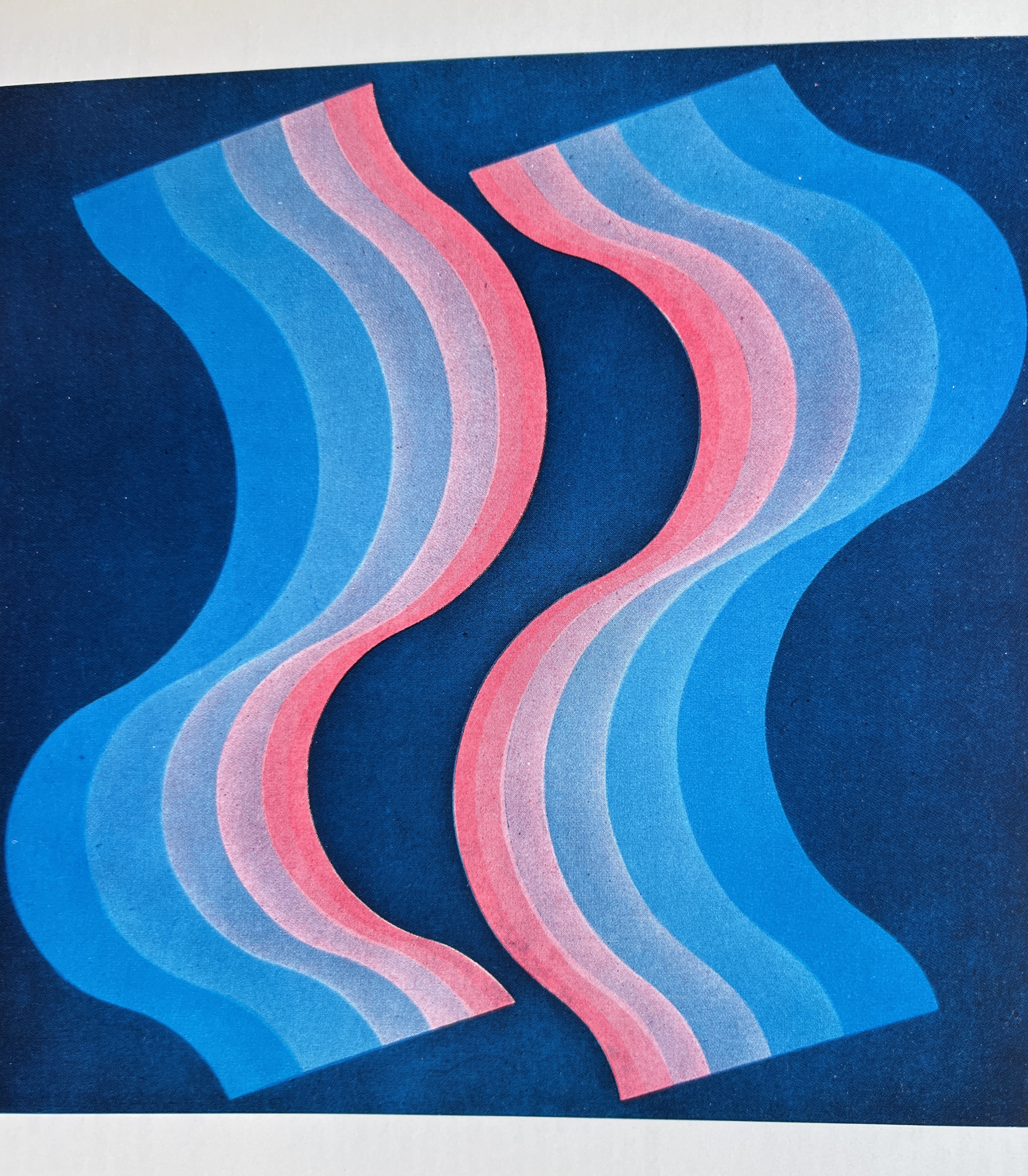
1946-2008
Substantial collection of illustrated ephemera documenting women artist exhibitions in Argentina.
Substantial collection of illustrated ephemera documenting women artist exhibitions in Argentina.
Collection of 140 Argentinian Women Artists’ Exhibition Announcements and Catalogs
Collection of 140 Argentinian Women Artists’ Exhibition Announcements and Catalogs, 1946-2008.
Substantial collection of illustrated ephemera documenting women artist exhibitions in Argentina (artists primarily identifying as Argentinian, with a few expatriates or Central and South American artists showing in Argentina). Spanning a period of more than 50 years and various stylistic movements, the bulk of the exhibitions date from 1965-1985, an era of increasing participation by women artists in the Buenos Aires art world.
The collection includes numerous examples from vanguard Argentinian gallery programs, including Arthea, Peuser, Rubbers, and Witcomb. With a few notable exceptions (e.g. Julia Codesido, Diana Dowek, Ana Eckell, Magda Frank, Raquel Forner, María Martorell, etc.) the majority of the 100+ artists are relatively unknown to North American collections and institutions; most of the catalogues are seemingly unrecorded in relevant databases. Almost all of the items provide biographical detail with a list of works, many have essays by well-known critics and historians. Taken together they offer a wealth of new information about women artists in Argentina: their art education (often listed as autodidacta); their careers; their artistic processes.
Short-title list provided on request.
SOLD
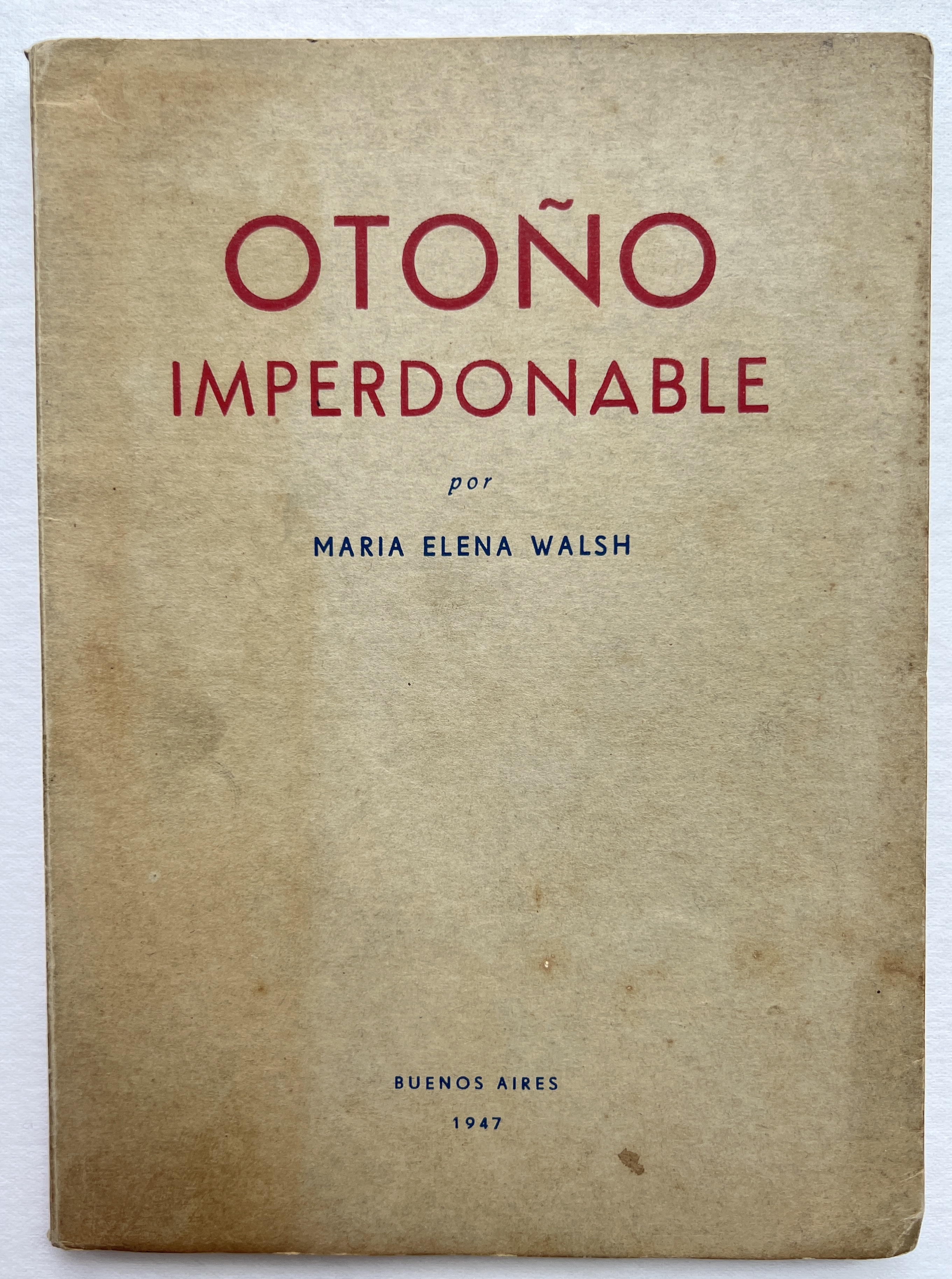
María Elena Walsh 1947
Signed presentation copy of Walsh's first book, published when she was just 17.
Signed presentation copy of Walsh's first book, published when she was just 17.
Otoño Imperdonable
Walsh, María Elena. Otoño Imperdonable. Buenos Aires: [Imp. Ferrari], 1947. First edition. 20.5 cm, 78 pp.; interior evenly toned, wrapper bumped and a bit faded, separating at internal hinge. Signed dedication from the author to the poet and tango critic/historian León Benarós, dated 31-7-1947.
María Elena Walsh (1930-2011) was a nationally beloved Argentinian poet, singer, and composer. Walsh published her first book of poetry at the age of 17. These adolescent verses, reissued numerous times over the next 30 years, were praised by a remarkable list of literary greats including Pablo Neruda, Juana de Ibarbourou, and Juan Ramón Jimenez. Following a trip in 1948 to Paris, she began her musical career, forming the group “Leda & María” with her romantic partner Leda Valladares. The two women toured extensively in Europe before Walsh returned to live in Argentina in 1956.
Much of her later poetry and music was written for children, including a number of anti-dictatorship and anti-censorship songs. She lived openly with her partner, the photographer Sara Facio, from 1978 until her death in 2011.
OCLC records 3 holdings in North America.
$750
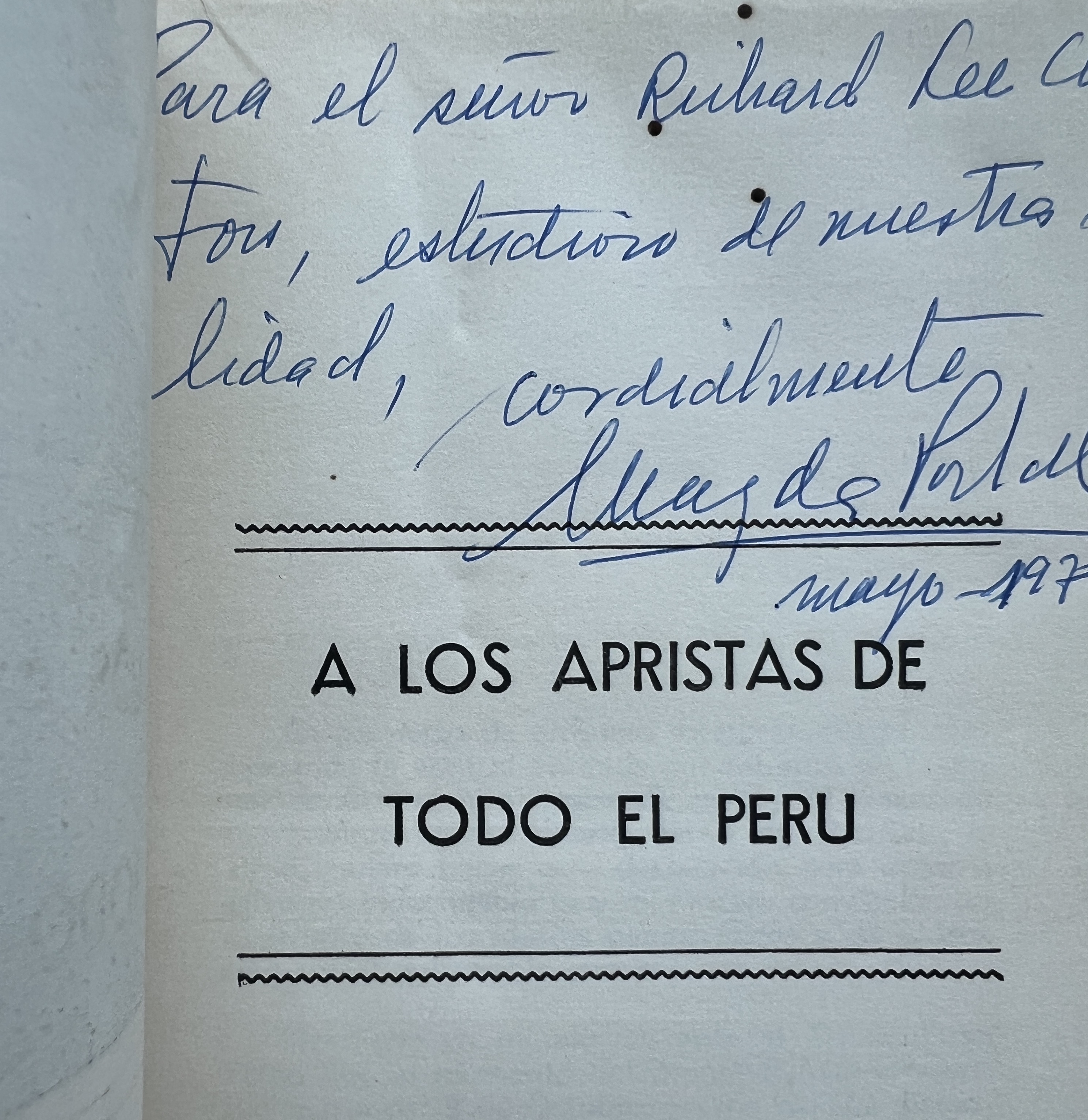
Magda Portal 1950
Signed first edition of Portal's Aprista manifesto.
Signed first edition of Portal's Aprista manifesto.
Quienes traicionaron al pueblo
Portal, Magda. Quienes traicionaron al pueblo? Lima: Salas é Hijos, 1950. 17 cm, 30 pp.; frontispiece portrait, some underlining, in stapled wrappers, toned and sunned, three pin holes near top of wrapper extend through publication. Black strikethrough over orig. price on rear wrap. Signed in ink by the author with dedication to Richard Lee Chin.
Revolutionary feminist Magda Portal’s Aprista manifesto written after her trial by a military tribunal, describing her opposition to the leaders of the failed Peruvian Aprista uprising in 1948. Rear wrap references her famous “Flora Tristan” essay?
$75
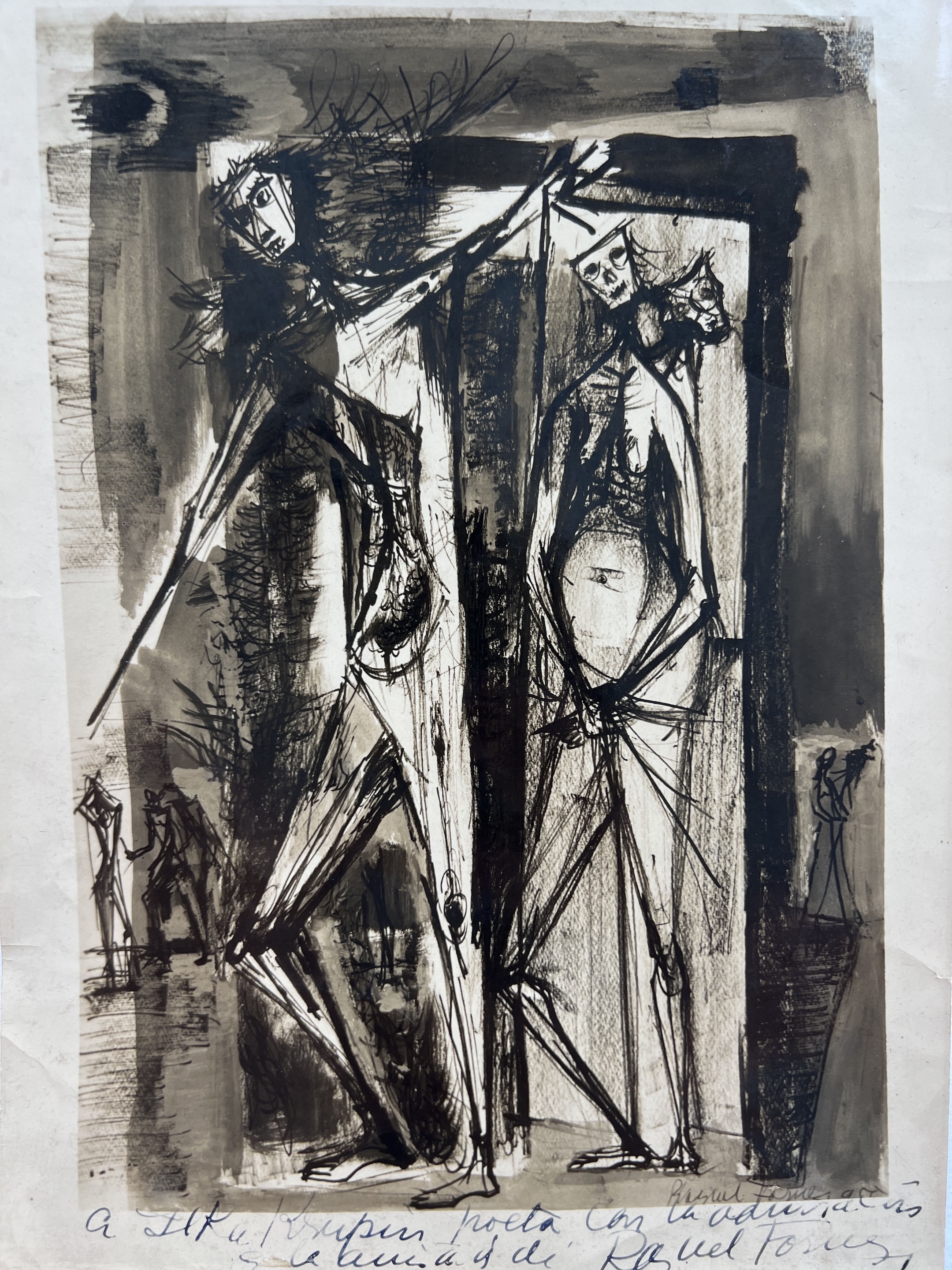
[Raquel Forner] 1955
Signed photograph by the artist, dedicated to the poet Ilka Krupkin.
Signed photograph by the artist, dedicated to the poet Ilka Krupkin.
Estudio a Trista
(Forner, Raquel) “Estudio a Trista …”. Gelatin silver print. 1955. 24 x 28 cm. Toned with signs of handling. Signed in ink recto with dedication to the poet Ilka Krupkin(?), manuscript title on verso (artist’s handwriting) with date.
$75
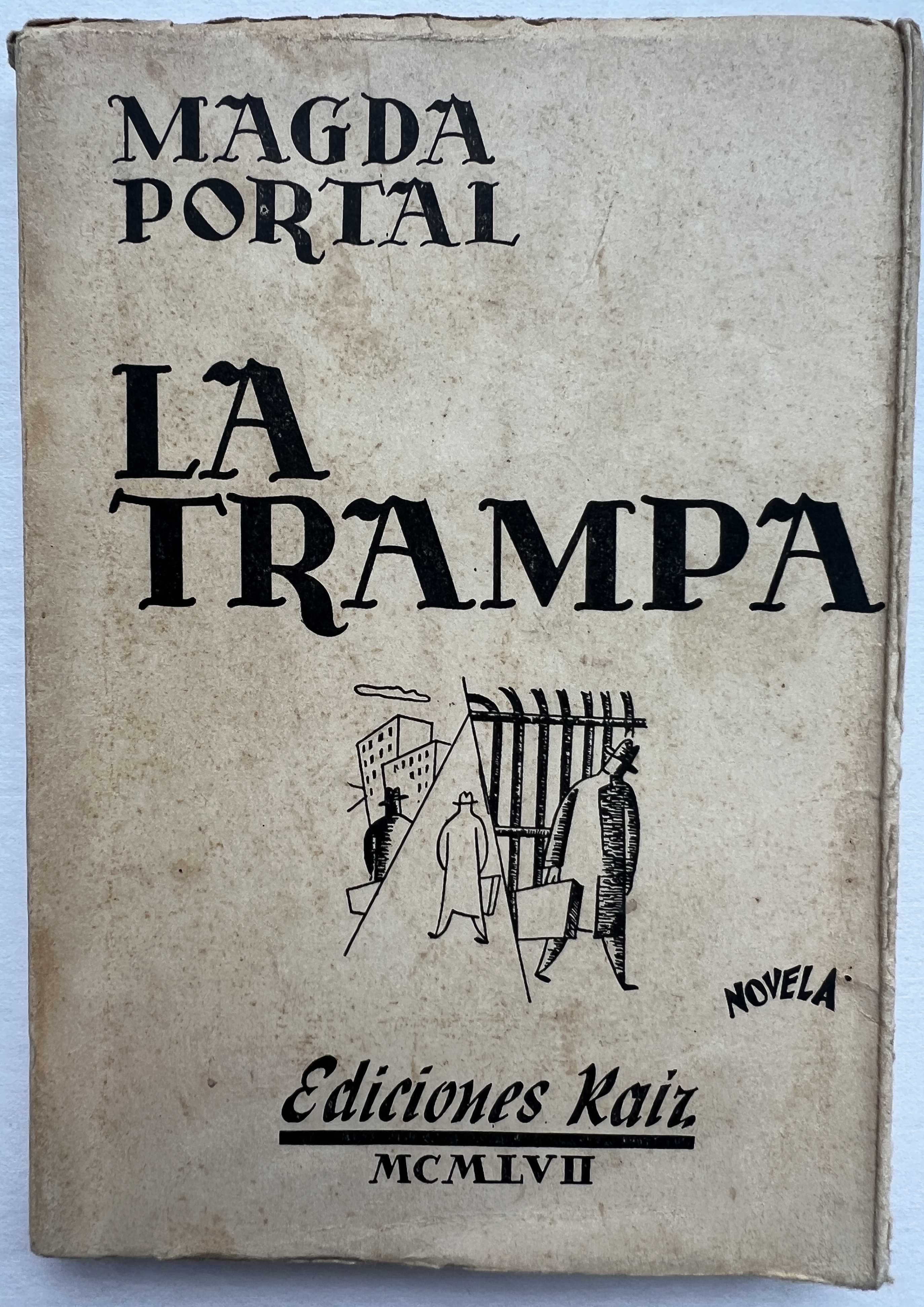
Magda Portal 1956 [1957]
Semi-autobiographical novel by the revolutionary Peruvian feminist.
Semi-autobiographical novel by the revolutionary Peruvian feminist.
La Trampa
Portal, Magda. La Trampa. Lima: Ediciones Raiz, 1956 [1957]. First edition. 17.5 cm, 138, (2), pp.; textblock toned with some foxing, illustrated wrapper bumped and foxed, flaps with author portrait, bio, and blurbs.
La Trampa is the only novel written by one of Peru’s most important writers, the revolutionary feminist Magda Portal (1900-1989). The semi-autobiographical story is a political murder mystery; she wrote it to sway public opinion on the imprisonment of Carlos Steer Lafón, responsible for the double assassination of a newspaper magnate and his wife in 1935. The character María de la Luz is based on Portal’s own experiences as a poet, activist, leader of an Aprista party, and a political prisoner.
Scarce in commerce.
$100
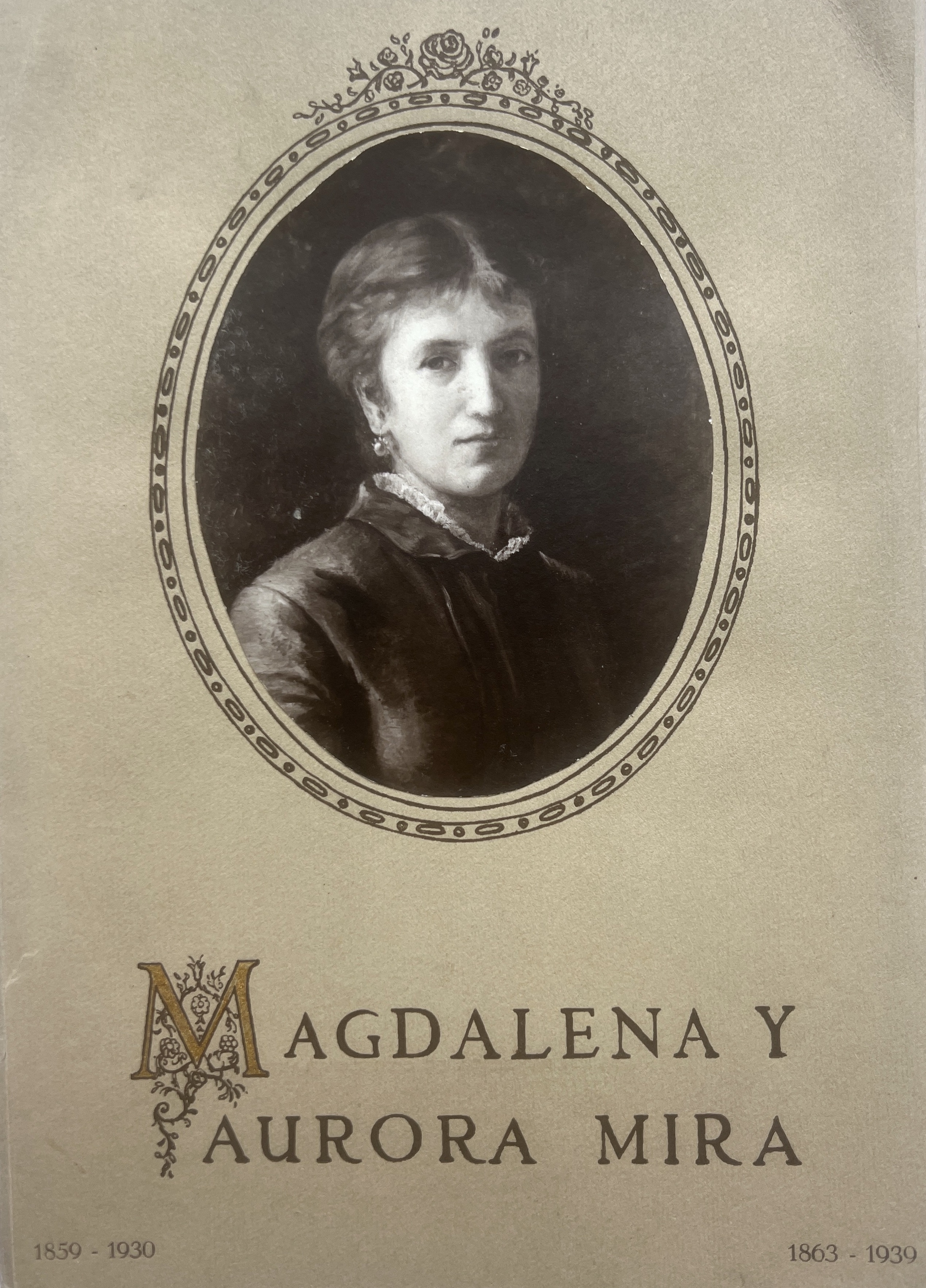
Victor Herrera Carvacho 1953
The earliest monographic study of the Chilean painters Magdalena (1859-1930) and Aurora (1863-1939) Mira. Extra-illustrated?
The earliest monographic study of the Chilean painters Magdalena (1859-1930) and Aurora (1863-1939) Mira. Extra-illustrated?
Magdalena y Aurora Mira
Carvacho Herrera, Victor. Magdalena y Aurora Mira. Santiago de Chile: np, 1953. 26.5 cm, 22, [1], pp.; booklet toned, followed by 14 b/w plates from photographs by Rene Combeau mounted to card with captions identifying the location of the work, in addition to the normal data; plates loose, in orig. paper wrapper with portrait tipped-in, wrapper worn and splitting, old repair on verso not visible recto. Edition limited to 100 copies, this copy no. 95. Extra-illustrated?
The earliest monographic study of the Chilean painters Magdalena (1859-1930) and Aurora (1863-1939) Mira, published to coincide with a privately organized exhibition of their work in their family house in Santiago.
The sisters were from a socially prominent family; their father was an artist who helped them gain admittance to the Chilean Painting Academy. Magdalena and Aurora were two of the first women to study painting in Chile at the national academy, and their skill was recognized during their lifetimes with a number of medals at national salons in the 1880s and 1890s. Despite these early successes, both women ultimately prioritized domestic lives and rarely exhibited after 1895. Their story is emblematic of the changing opportunities and limits faced by upper class Chilean women in the late 19th century.
This midcentury study is an important object of the history of their reception in Chile. Now celebrated in Chile as “pioneering” women artists, the next major monograph of their work, Magdalena y Aurora Mira: Pioneras del Arte Femenino, was not published until 2013.
OCLC finds two copies of the portfolio, at UConn and Biblioteca Nacional de Chile, both local catalogs reference 10 plates. The present copy has 14.
$550
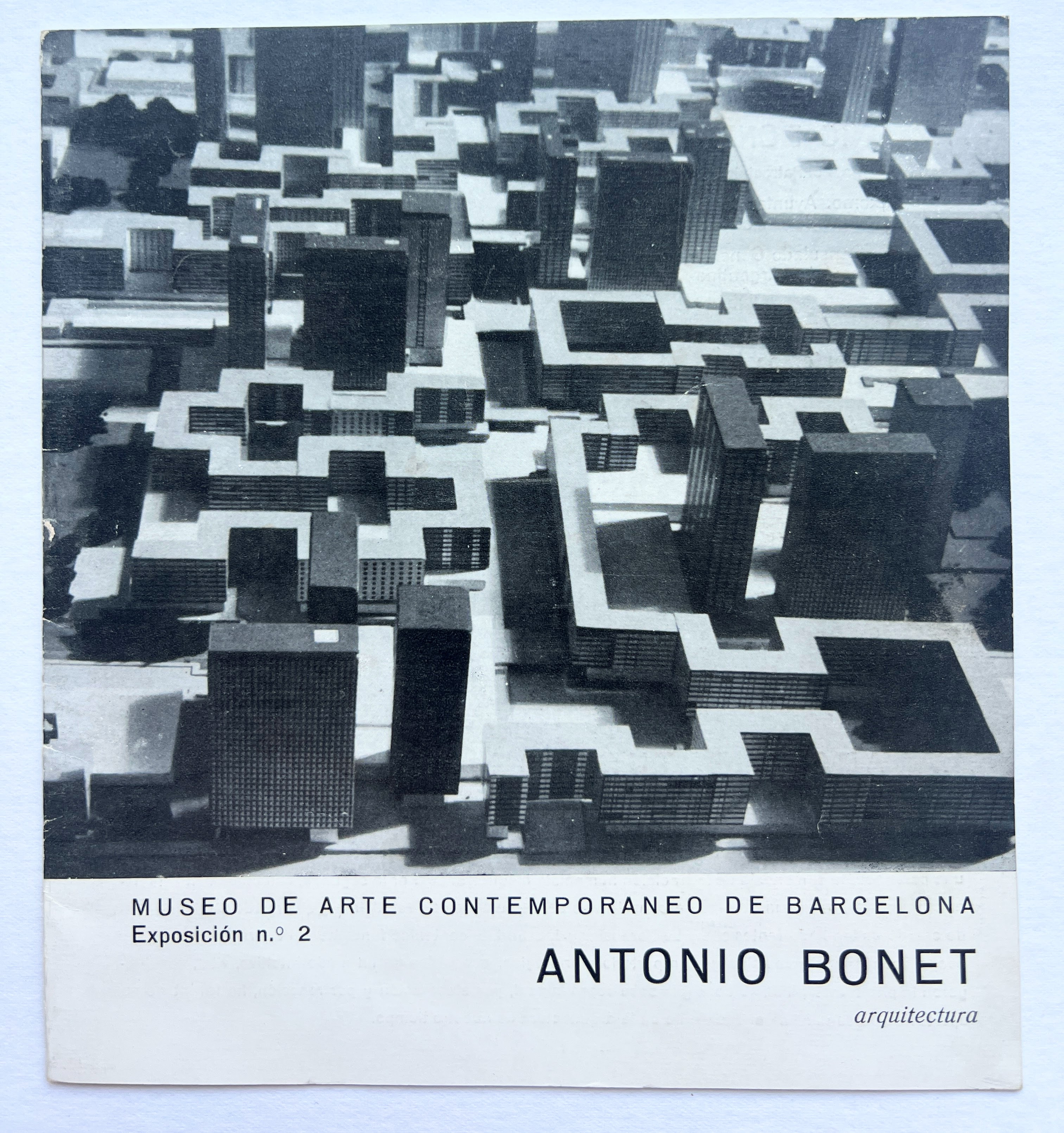
Museo de Arte Contemporáneo de Barcelona 1960
(Architecture - Latin America) (Museology)
(Architecture - Latin America) (Museology)
Exposición no. 2. Antonio Bonet: Arquitectura
Exposición no. 2. Antonio Bonet: Arquitectura. Exh cat. Museo de Arte Contemporáneo de Barcelona. Barcelona: 1960. Oblong, 18.5 cm, [12] pp.; b/w illus. throughout the architect’s projects in Latin America (primarily Argentina and Uruguay); stapled self-wrapper, lightly worn.
Catalogue of the second exhibit at the newly organized Museo de Arte Contemporáneo de Barcelona (MACBA). Curated by art critic and co-founder of MACBA, Alexandre Cirici Pellicer, it features photo-illustrations of architect Antonio Bonet’s work in Latin America, and an essay, “La Nueva Ciudad Latina de Antonio Bonet” by Oriol Bohigas. Bonet (1913-1989) cofounded the architectural and design collective Grupo Astral in Buenos Aires (inspired by the GATEPAC, in Catalunya).
The catalogue itself is a scarce artifact of the short lived original MACBA program. The museum existed from 1960-1963 when it closed for political reasons during the Franco regime. A museum of contemporary art was proposed by provincial authorities again in 1985, the new MACBA opened to the public in 1995.
We are able to locate only one other copy in museum and library collections, at the Museu Nacional d’art de Catalunya.
$175
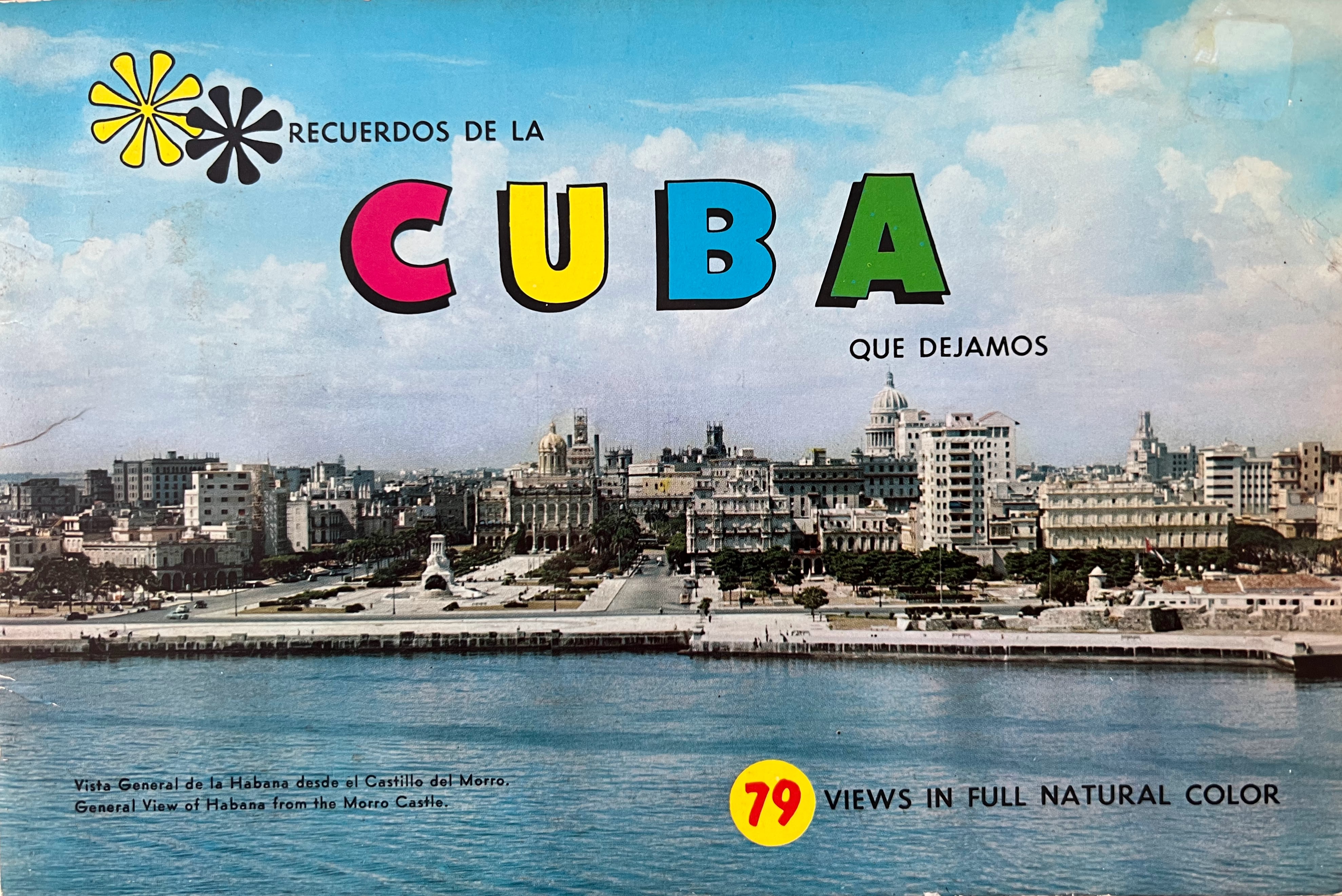
1963?
Nostalgic, anticommunist Cuban photo booklet.
Nostalgic, anticommunist Cuban photo booklet.
Recuerdos de la Cuba que Dejamos
(Cuba) (Exile) Recuerdos de la Cuba que Dejamos [cover title]. Forest Hills, N.Y. : AZEFA Trading. Co., n.d. [1963? 1966?]. Oblong 23 cm, [24] pp.; bilingual color photobook, reproducing 79 images “in full natural color.” Stapled color wrappers, a bit worn, rubbed at spine.
Book memorializing midcentury Cuba before the Revolution. Spanish and English introductions are not the same, but both invoke a beloved “free” Cuba, the patriotism of Cubans living in exile in the US, and propose a “second liberation” that is close at hand.
Images focus on architectural and urban features with an emphasis on modern development before 1959. Possibly issued twice, or simultaneously, in Miami and New York.
Six OCLC holdings.
$125
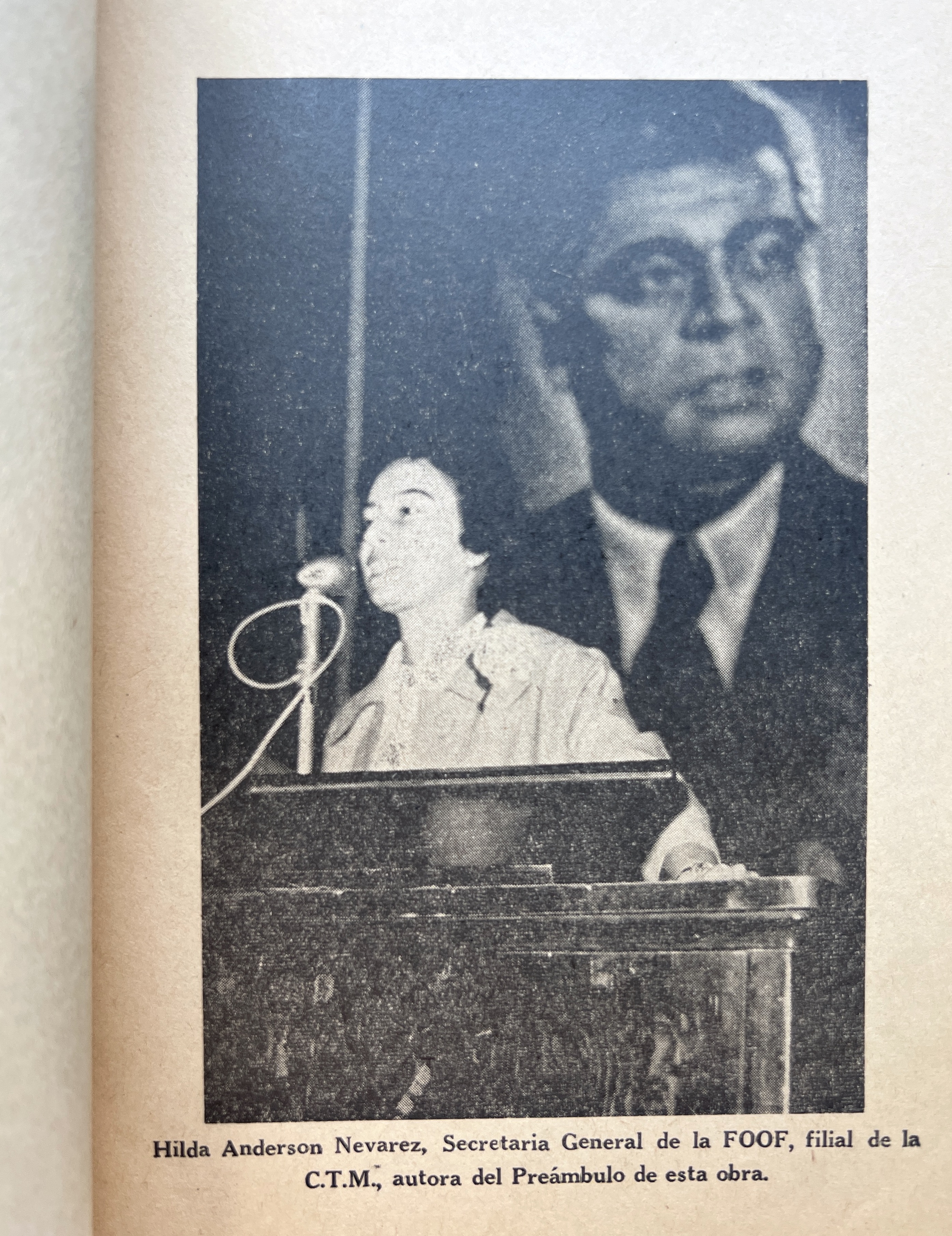
Graciana Becerril de Beltran 1961
Unrecorded? booklet on the history of Mexican women's labor.
Unrecorded? booklet on the history of Mexican women's labor.
Semblanza de la mujer mexicana y su participación en el movimiento obrero [...]
Becerril de Beltran, Graciana. Semblanza de la mujer mexicana y su participación en el movimiento obrero: Conferencia sustentada en el primer seminario interamericano de capacitación para la mujer trabajadora …. Mexico, D.F.: np, 961. 23 cm. 33 pp.; 4 b/w pls. from photographs, paper toned, small ink notations on p. 13, in stapled wrappers, a bit dogeared and chipped, with small loss at upper corner of front wrap.
Booklet reproduces a lecture on the history of Mexican women’s labor given by Graciana Becerril de Beltran, the secretary of labor relations at the Federacion Obrera de Organizaciones Femeniles de La República de Mexico (FOOF) at a training seminar for working women. Becerril de Beltran begins with a few names from precolonial history (Xochitl etc.), and continues through the colonial period, independence, the revolution, and into the present. She stresses the importance of the worker’s movement and union organizing to the recently successful suffrage movement and female education.
The four introductory plates reproduce photographs of Eva Sámano de López Mateo (first lady of Mexico); Fidel Velázquez (Secretary General of the Confederación de Trabajadores de Mexico); the author, and Hilda Anderson Nevarez (Secretary General of FOOF). Includes an introduction by Anderson Nevarez.
As far as we can determine, otherwise unrecorded.
$125
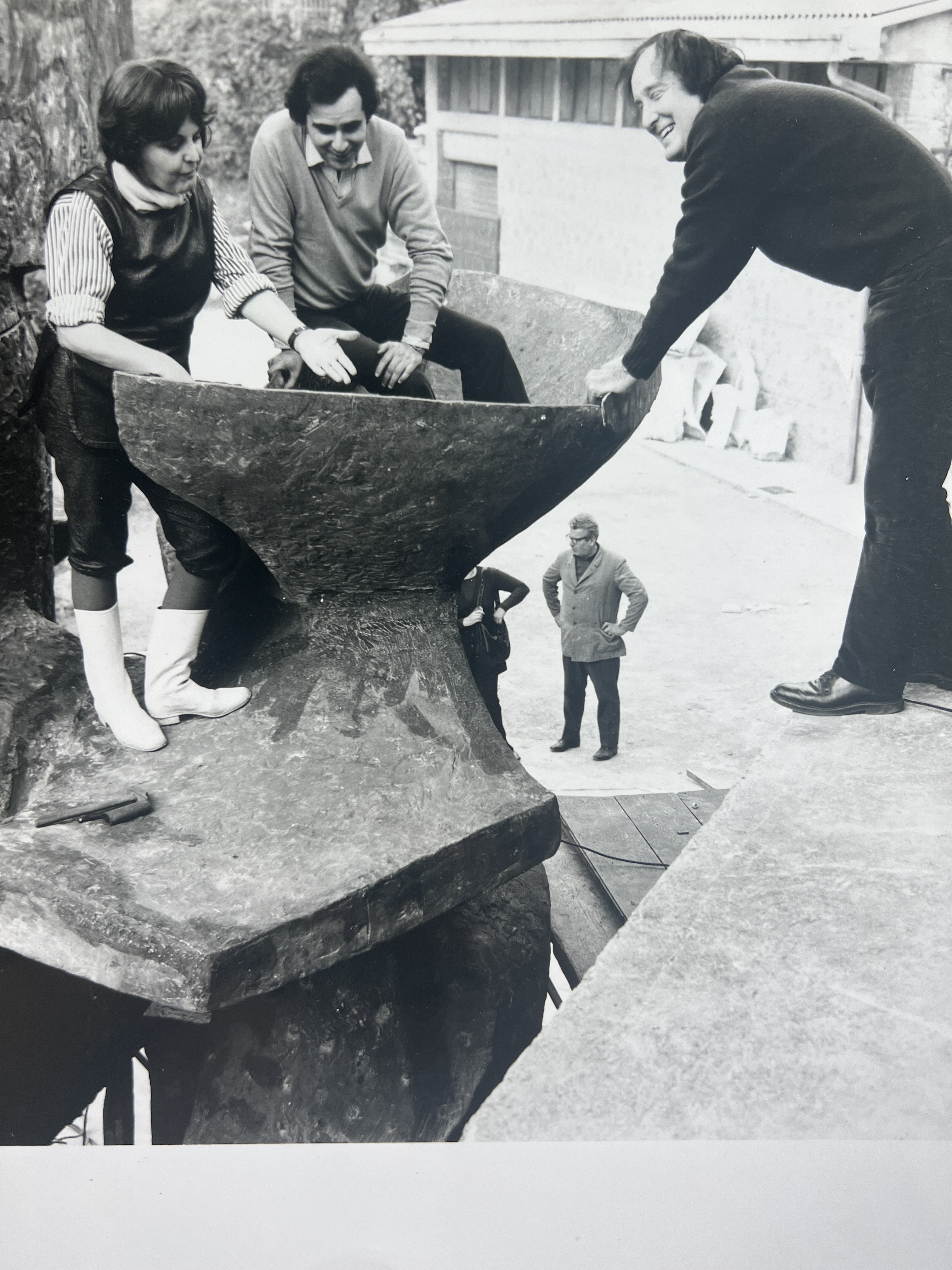
ca. 1965-1970
Press photo of the Argentinian sculptor at work.
Press photo of the Argentinian sculptor at work.
Untitled Photograph of Alicia Penalba
Untitled. Vintage gelatin silver print, np, nd. (ca. 1965-1970). Sheet: 29 x 20.5 cm, image: 23 x 21 cm. VG.
Press photo? of Argentinian sculptor Alicia Penalba (1913-1982) at work with assistants. Penalba ran away from her childhood home to escape her domineering father and studied art in Buenos Aires and eventually in Paris, choosing to use her mother’s name professionally rather than her patronym (Pérez).
She found great success in Europe and the US, with monumental public commissions alongside smaller works, jewelry, and decorative objects. She won the Grand Prize at the São Paulo Biennial in 1961, and participated in Documenta II and III. Her 1968 retrospective exposition Totems et tabous. Lam, Matta, Penalba, at Musée d´Art Moderne de la Ville de Paris solidified her status alongside two other recognized masters of Latin American modernism.
$125
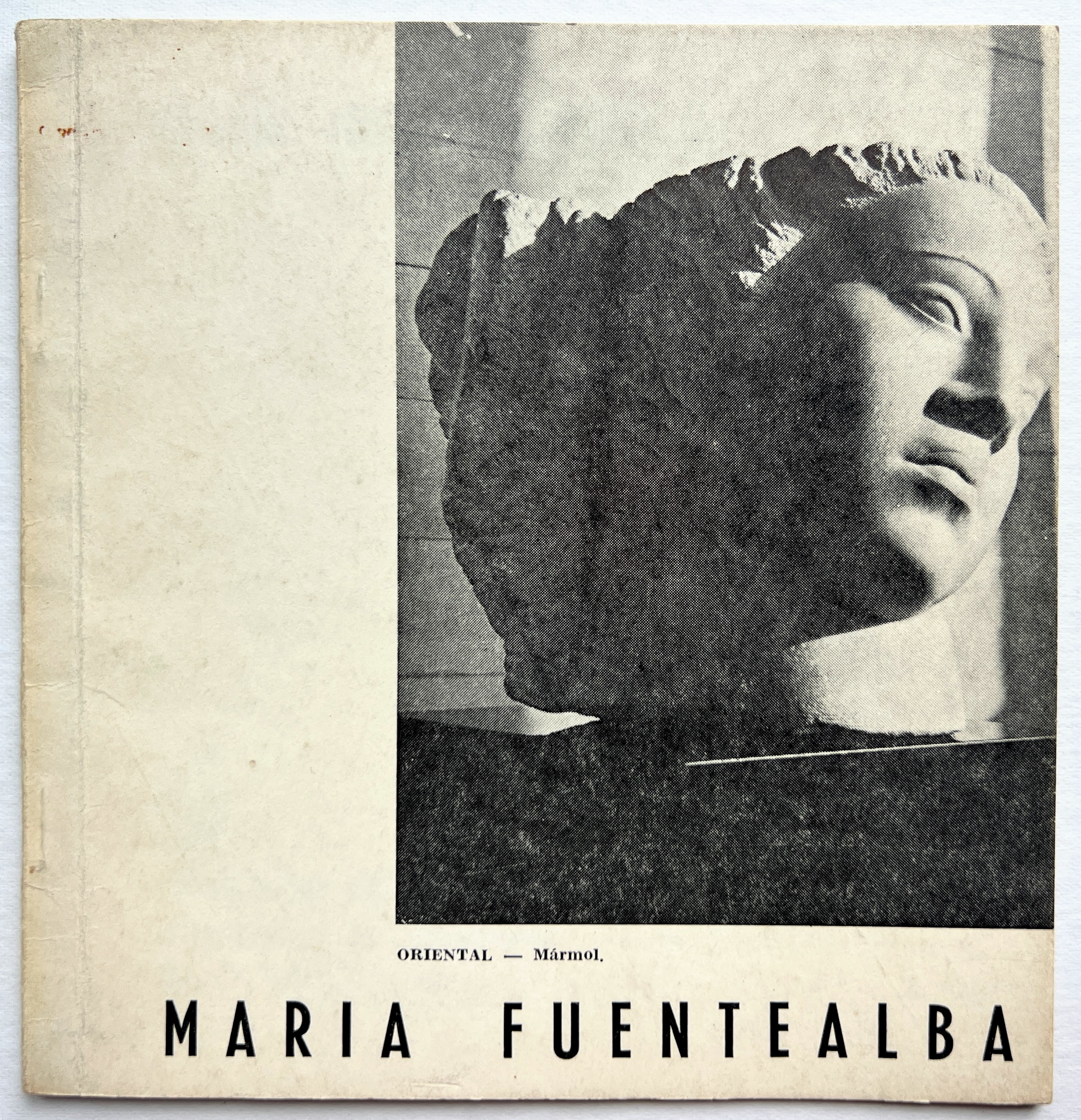
1964
(Exhibition Catalogs - Sculpture)
(Exhibition Catalogs - Sculpture)
Maria Fuentealba
Montecino, Sergio, Intro. Maria Fuentealba. Exh. cat., Instituto de Extensión De Artes Plásticas de la Universidad de Chile. Santiago de Chile: Imprenta Londres, nd. [1964]. Square 16 cm, [10] pp. followed by [7] b/w plates; stapled wrappers with reproduction of sculpture verso, wrapper a bit rubbed with light wear, interior VG+. Photos by Luis Ladrón de Guevara (1926-2015)?
The only? exhibition catalogue documenting the work of mid-century Chilean sculptor Maria Fuentealaba (1914-1963). Fuentealba was a professor of sculpture with a promising career when she died in 1963 at the age of 49. She exhibited and won prizes at annual national salons, and at the first Bienal do Museu de Arte Moderna, in São Paulo, in 1951. Her work is in the Collection of the Museo Nacional de Bellas Artes, Santiago. The booklet is a posthumous celebration of her work with an essay by artist and critic Sergio Montecino.
OCLC records one copy at the Biblioteca Nacional de Chile (listed twice), none in North America.
$100
ca. 1970-1980
Nota Roja: 27 Vintage Photos of Crimes and Accidents
Nota Roja: 27 Vintage Photos of Crimes and Accidents. [Yucatán, Mexico]: n.d., ca. 1970-1980. Vintage prints, sizes vary slightly, most approx. 13 x 9 cm. Slight curling, a few faded, overall VG+.
This collection presents 27 characteristic examples of Mexico’s nota roja photojournalism in Yucatán, possibly Merída. Nota roja is a genre of sensationalist, violent crime journalism central to Mexico’s tabloid press since the 1950s.
The group documents car crashes, murders, arrests, fires, crime scenes, bodies in the streets with curious crowds, and the death of a woman carrying a Confederación Nacional Campesina flag, presumably attacked during a demonstration.
The ubiquitous public display and consumption of such graphic imagery is often explained in relation to an emerging modern Mexican popular culture and national identity in the early- to mid-twentieth century. Some scholars have resisted the characterization of the nota roja as dehumanizing, writing instead about its reparative force: a public forum against political and institutional corruption. But the escalation of drug trafficking violence in Mexico, and the popularity of cultural forms which celebrate or romanticize this violence (tv shows; corridos; etc.), over the last twenty years has brought renewed criticism of nota roja style and its role in normalizing violence and spreading fear and apathy.
Vintage examples of a controversial photographic genre whose history and cultural importance remain central to contemporary conversations about violence in Mexico and Mexican popular culture.
$350
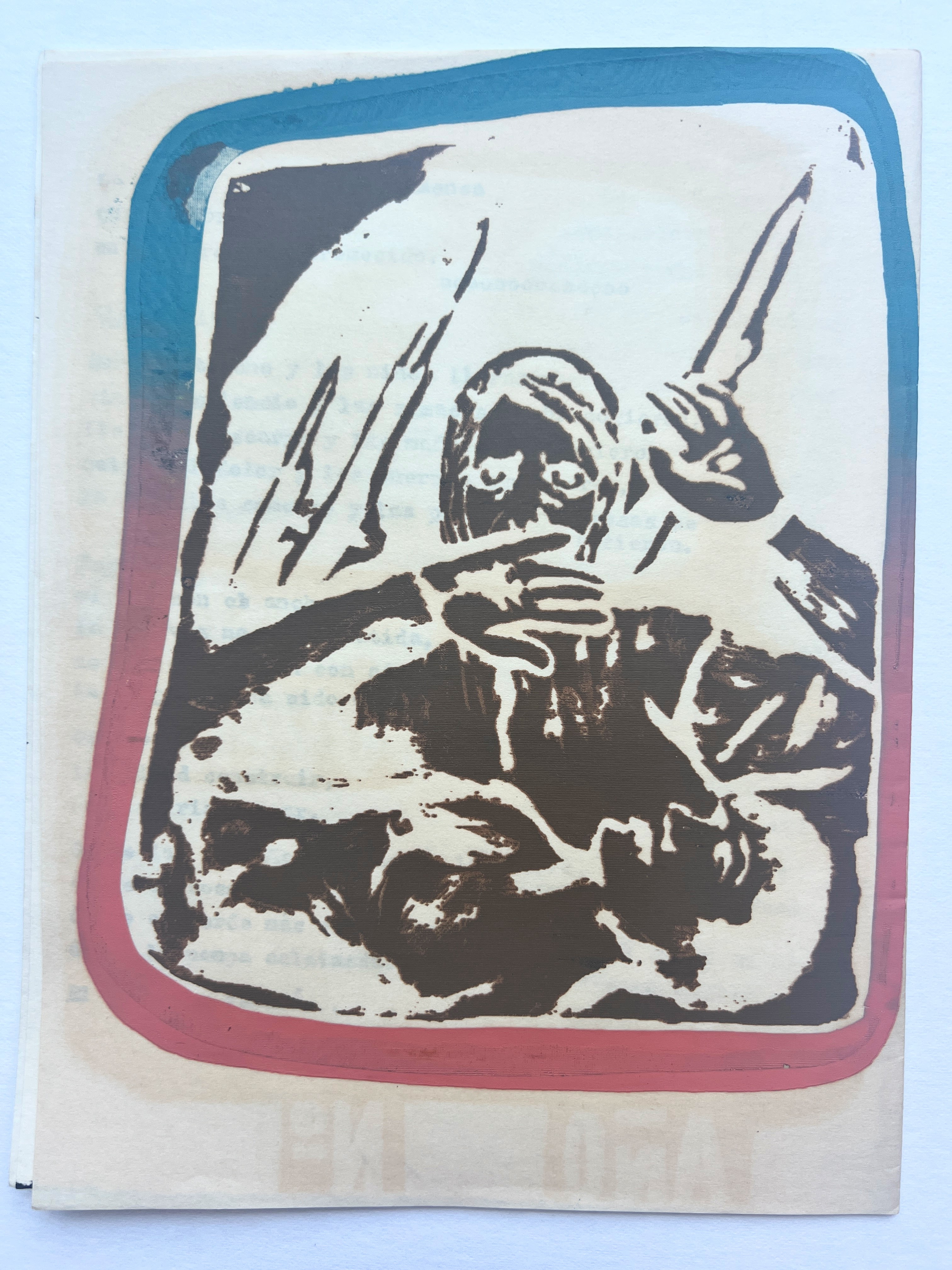
Juventudes Comunistas de Chile 1975
Unrecorded clandestine poetry serial published by the youth wing of Chile's Communist Party during the Pinochet dictatorship.
Unrecorded clandestine poetry serial published by the youth wing of Chile's Communist Party during the Pinochet dictatorship.
Cantar Juvenil. Año I, Núm. 2-3
Juventudes Comunistas de Chile. Cantar Juvenil. Año I, Núm. 2-3. Santiago de Chile: np, 1975. Approx. 22 cm, 4; 12 pp.; mimeographed poems on folded sheets, somewhat toned, in color silkscreen wrappers (year and number added by hand in ink), colors bright, num. 3 with ghost of recto on verso where they were presumably stacked after printing. Núm. 2 with two versions of the orig. 4 pp. folded sheet, changes have been made to the mimeo stencil. Together with a duplicate of num. 3, incomplete.
The Communist Party of Chile (PCCh) was outlawed in 1973, following the deposition of the Allende government in the coup d’etat by Augusto Pinochet. This clandestine poetry serial was published by the youth wing of the party: poems are signed with pseudonyms unless they are by recognized poets, i.e. Pablo Neruda (a PCCh member before his controversial death in 1973). The third issue with more ideological text (quotes from Hegel, Stendahl, and Deznos [sic], etc.).
Pagination and folding are irregular. The distinctive wrappers with artifacts of their handmade production (i.e. ink smears). Cover image of Victor Jara’s guitar?
Unlikely survivors. No records in OCLC.
SOLD
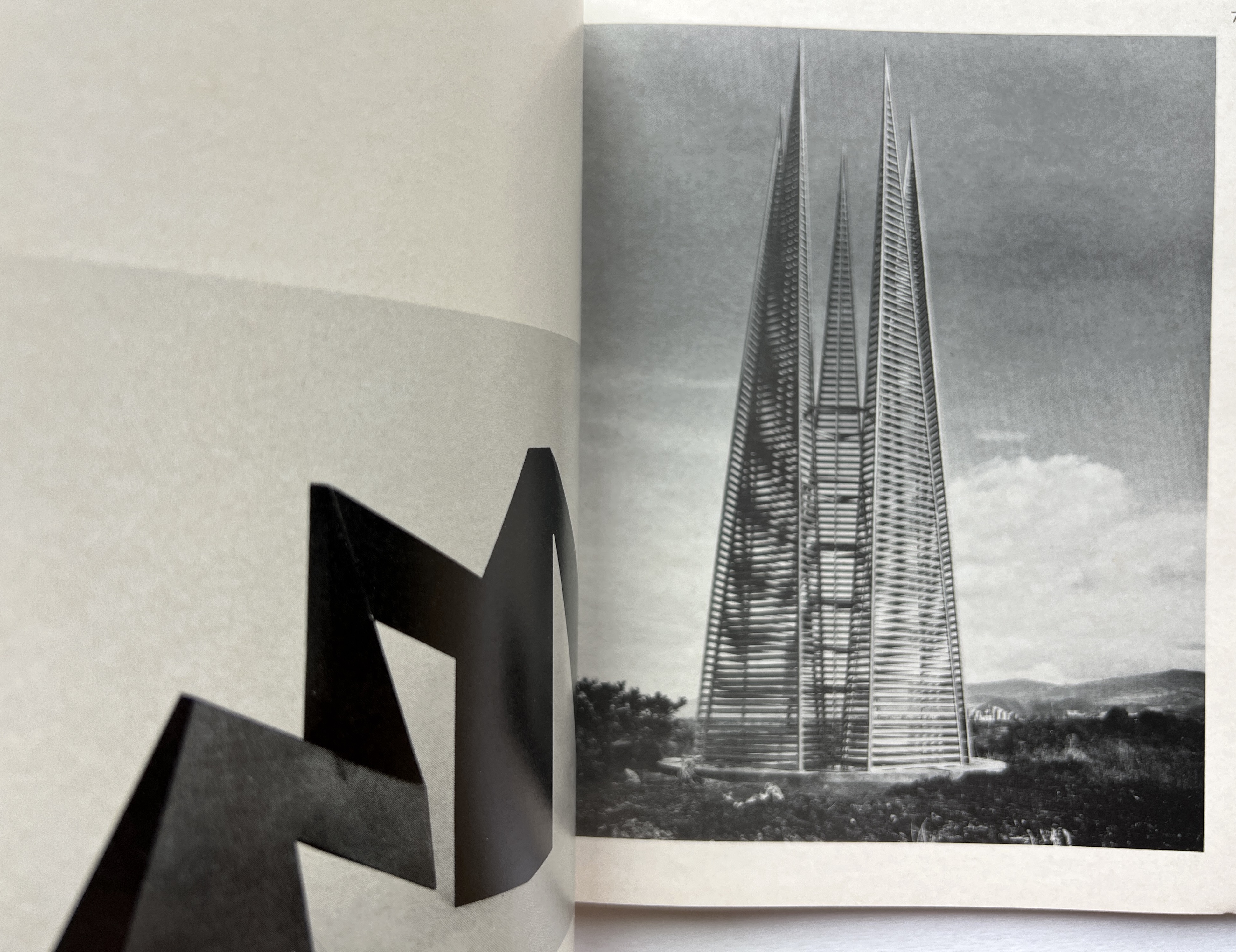
1980
Rare and only monograph documenting UNAM’s monumental sculpture park, a landmark of late 20th century Mexican sculpture and urban planning.
Rare and only monograph documenting UNAM’s monumental sculpture park, a landmark of late 20th century Mexican sculpture and urban planning.
El Espacio Escultórico
(Land Art) (Abstract art) (Mexico)
Centro de Investigación y Servicios Museológicos, Universidad Nacional Autonoma de Mexico. El Espacio Escultórico. Mexico, D.F.: UNAM, 1980. 21.7 cm, 119 pp.; trilingual catalogue, profusely illus. in b/w, thumbed, with crease at fore corner affecting early pages; in color wrappers worn with creases, starting to separate at foot of spine, small chip in rear wrap.
This volume was the first and only monographic publication to document UNAM’s instantly recognizable, massive sculpture park. The park was one of Mexico’s most important public art projects in the second half of the 20th century. Conceived of by artist Federico Silva, the monumental works by Silva, Helen Escobedo, Manuel Felguérez, Matías Goeritz, Hersúa, and Sebastián respond to the extraordinary volcanic landscape of the surrounding ecological reserve incorporating elements of Land Art, pre-Hispanic imagery, and immersive geometric abstraction. The volume documents its planning, construction, and completion, including images of the architectural, archeological, and geological context of the site, the inauguration of the space, and the sculptures; together with artist biographies, artistic statements, and other short essays, followed by translations to English and French.
The colophon claims an edition of 3000. OCLC records fewer than 10 in public US collections, almost all museum libraries.
$400
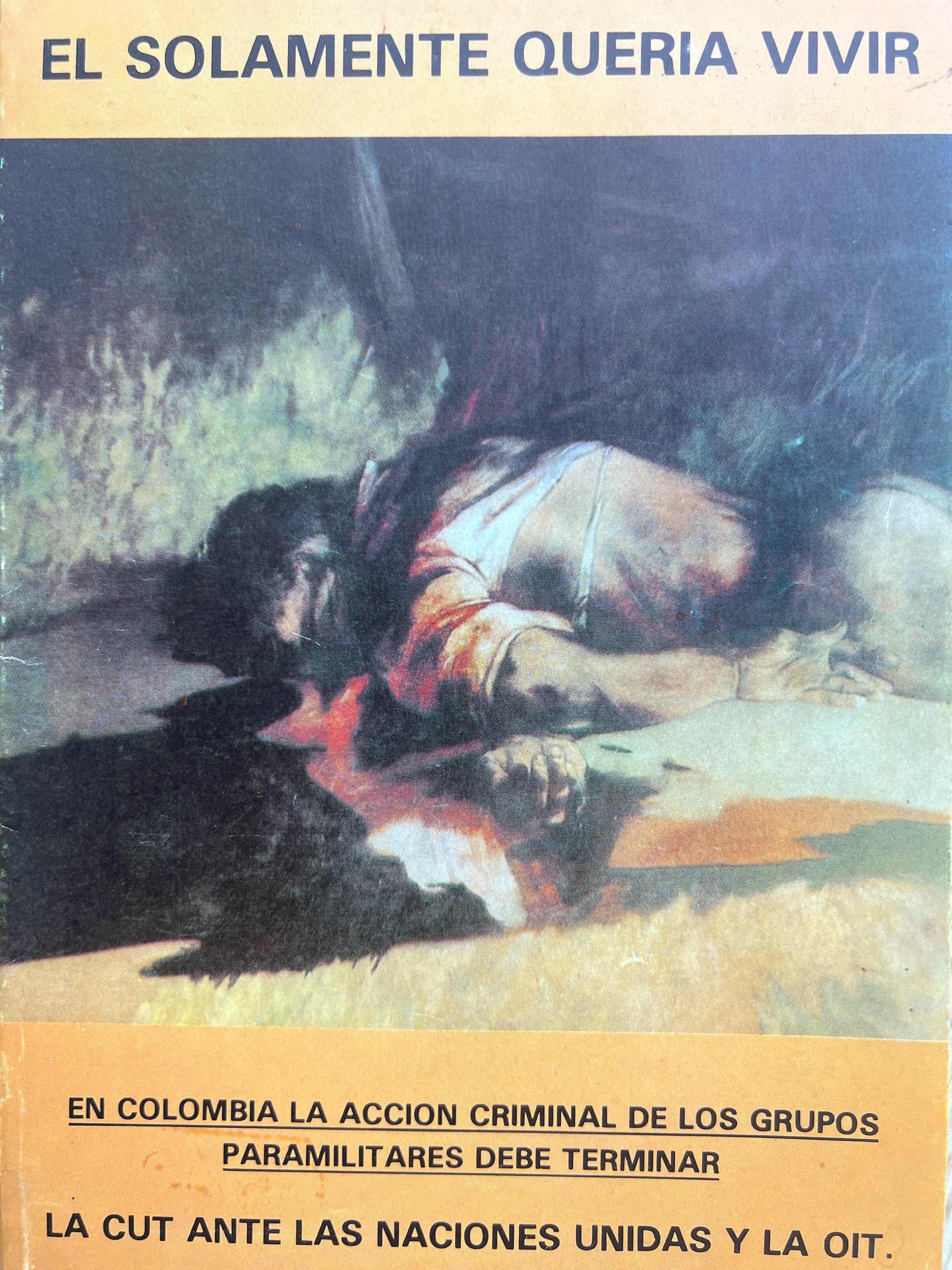
Central Unitaria de Trabajadores de Colombia 1988
Labor unions against the paramilitary violence in Colombia, incl. portraits of assassinated organizers.
Labor unions against the paramilitary violence in Colombia, incl. portraits of assassinated organizers.
El solamente quería vivir: En Colombia la acción criminal de los grupos paramilitares [...]
Central Unitaria de Trabajadores de Colombia. El solamente quería vivir: En Colombia la acción criminal de los grupos paramilitares debe terminar: La CUT ante las naciones unidas y la OIT. Bogota: 1988. Second (expanded) edition. 23 cm, 119 pp.; a number of b/w portraits, photo reproductions, of assassinated politicians, NGO members, etc, in illus. color wrappers, rear wrap with crease starting to tear (closed). Illus. by Luis Caballero.
Gathering a number of important manifestos, speeches, and texts primarily by the central national union, but including statements by other student groups and left-wing organizations against paramilitary groups in Colombia. Includes a multi-page blank template for reporting missing persons to the United Nations.
Edition history is a bit confusing, first edition recorded in OCLC as 1982 (one location in North America, UT-A), but the CUT didn’t exist until 1986 and many of the texts and documents in the second edition date to 1987 and 1988. 2nd e. held by Harvard, Princeton, and UT-A. First only at UT-A
$90
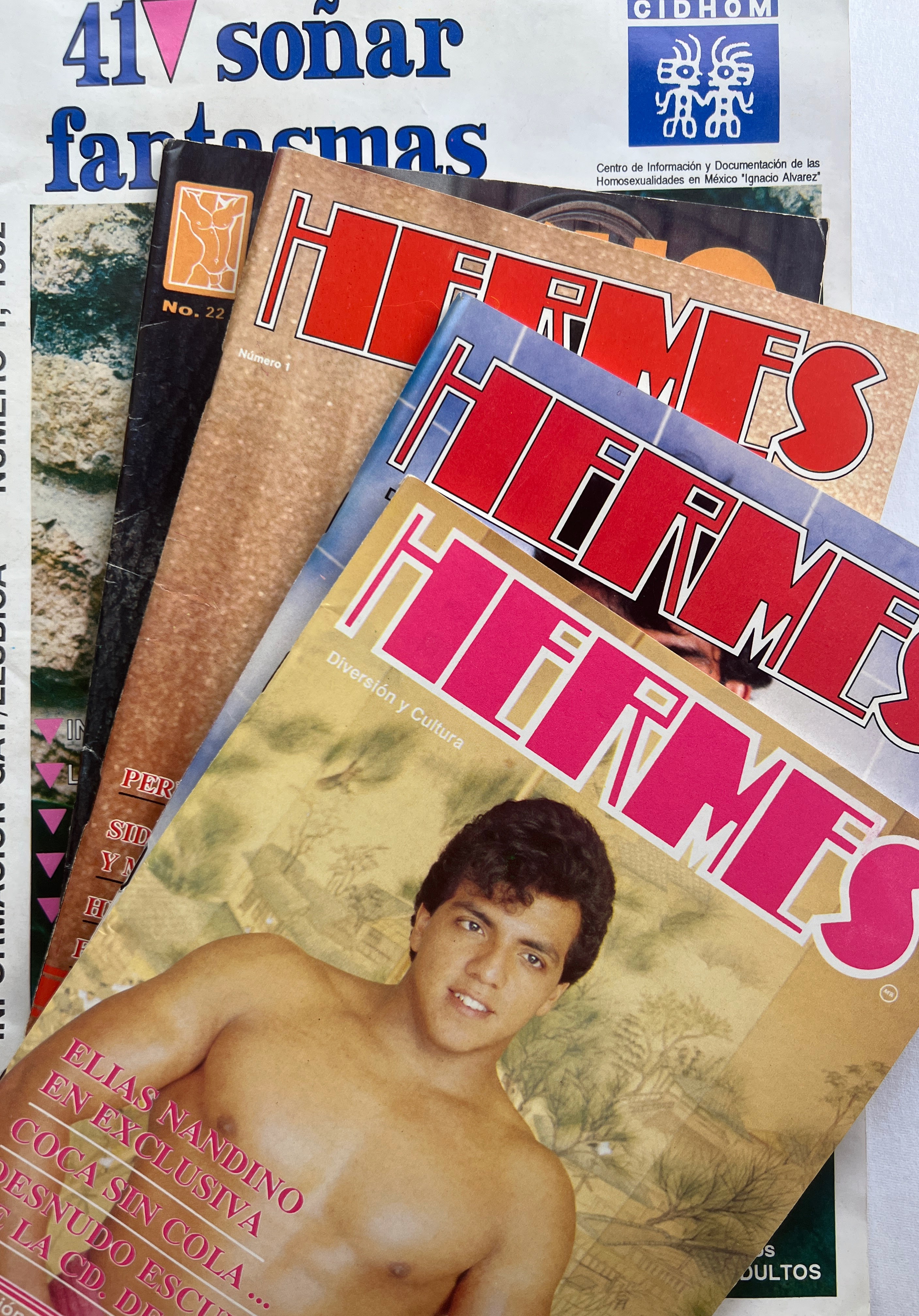
1989-1992
Five Mexican Gay Liberation Movement Magazines
Five Mexican Gay Liberation Movement Magazines, 1989-1992.
Examples celebrating LGBT+ culture in Mexico at the height of the AIDS (SIDA) crisis: a period in which persecution and violence against gay and lesbian people in Mexico was still common (especially the murder of transsexuals and transvestites).
Comprised of:
41 soñar fantasmas: Información Gay lésbica. Núm 1. Mexico, D.F.: Centro de Información y Documentación de las Homosexualidades en México “Ignacio Alvarez” (CIDHOM) del Colectivo Sol, A.C., 1992. Large format, 34 cm, 32 pp.; profusely illustrated; in stapled color wrappers, lightly worn. Includes articles on SIDA, safe sex, personal ads, and coverage of the 1992 CMDX Pride parade in a color centerfold.
Macho Tips. Numero 22. Mexico, D.F.: Macho International, 1989.
Hermes. Números. 1-3. Mexico, D.F.: Febo Editores, 1990-1991. 23 cm, each 76 pp.; profusely illustrated. Stapled color pictorial wrappers. Three runs listed in OCLC, Cornell, Texas A&M, and ONE/UCLA. ONE Archives records seem to indicate a second iteration under the same title, published between 1992-1994.
$300
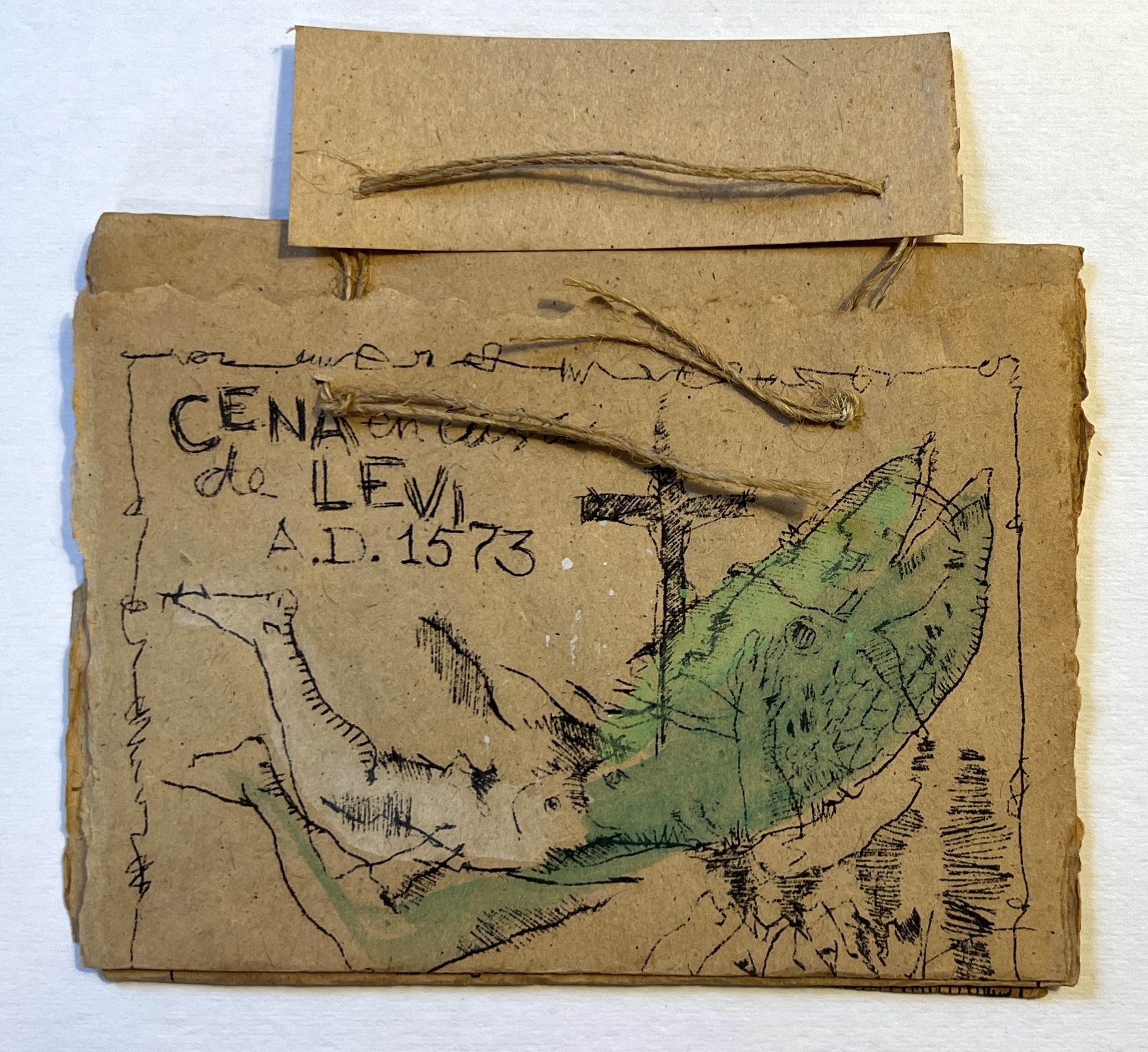
Ediciones Vigia 1990-1997
Four Artists’ Books
Four Artists’ Books by Ediciones Vigia, 1990-1997. Early and uncommon examples from the famed Cuban artists’ book collective, a collaboration between artist Rolando Estévez and poet Alftedo Zaldivar. Each book is assembled by hand and includes hand coloring, found and recycled materials, and collaged elements.
Composed of:
Burgos, Julieta and Camilo Venegas Yero, C, Illus. Los Reyes Illuminados. Matanzas, Cuba: Ediciones Vigía. 1990. 16 x 17.5 cm, 18 pp.; toned, profusely illus. with some hand coloring; tied with brown cord, collaged wrappers, wrappers with minor closed splitting on top edges. Signed by Burgos. No. 53.
2 OCLC holdings: Univ. Miami and Notre Dame, as of December 2022 no others on the market.
Venegas Yero, Camilo. La venta de miel. Matanzas, Cuba: Ediciones Vigía, 1997. 2-.5 x 16 cm, [18] pp.; mimeograph with handwritten titles, stamps, collage elements; tied with brown string, pictorial front wrapper with collage elements. No. 103 (out of 200?).
1 OCLC holding: Univ. of Miami. As of December 2022 no others on the market.
Mendez, Roberto. Cena en casa de Levi, A.D . 1573. Matanzas, Cuba: Ediciones Vigía, 1990. Poem printed on four brown paper sheets, glued vertically to form a continuous single sheet, folded seven times and tied with a paper handle at head. Front panel with hand coloring. No. 139/200. Illustration and design by Rolando Estévez.
2 OCLC holdings: Univ. of Miami, Univ. of Utah. As of December 2022 no others on the market.
[Alcaeus] Ferraté, Juan y María Eugenia Alegría. Untitled [Alceo]. Matanzas, Cuba: Ediciones Vigía, n.d. ca. 1990s. 19.5 x 15 cm, [10] pp.; reproducing 3 poems by Alcaeus in Spanish with original Greek on facing page, followed by bibliography. No. 47. Illustration and design by Rolando Estévez. There appear to be two editions with different pictorial wrappers. The other edition is titled “Hablar de poesia”.
3 OCLC holdings: Univ. of Miami, Notre Dame, UC-Berkeley..
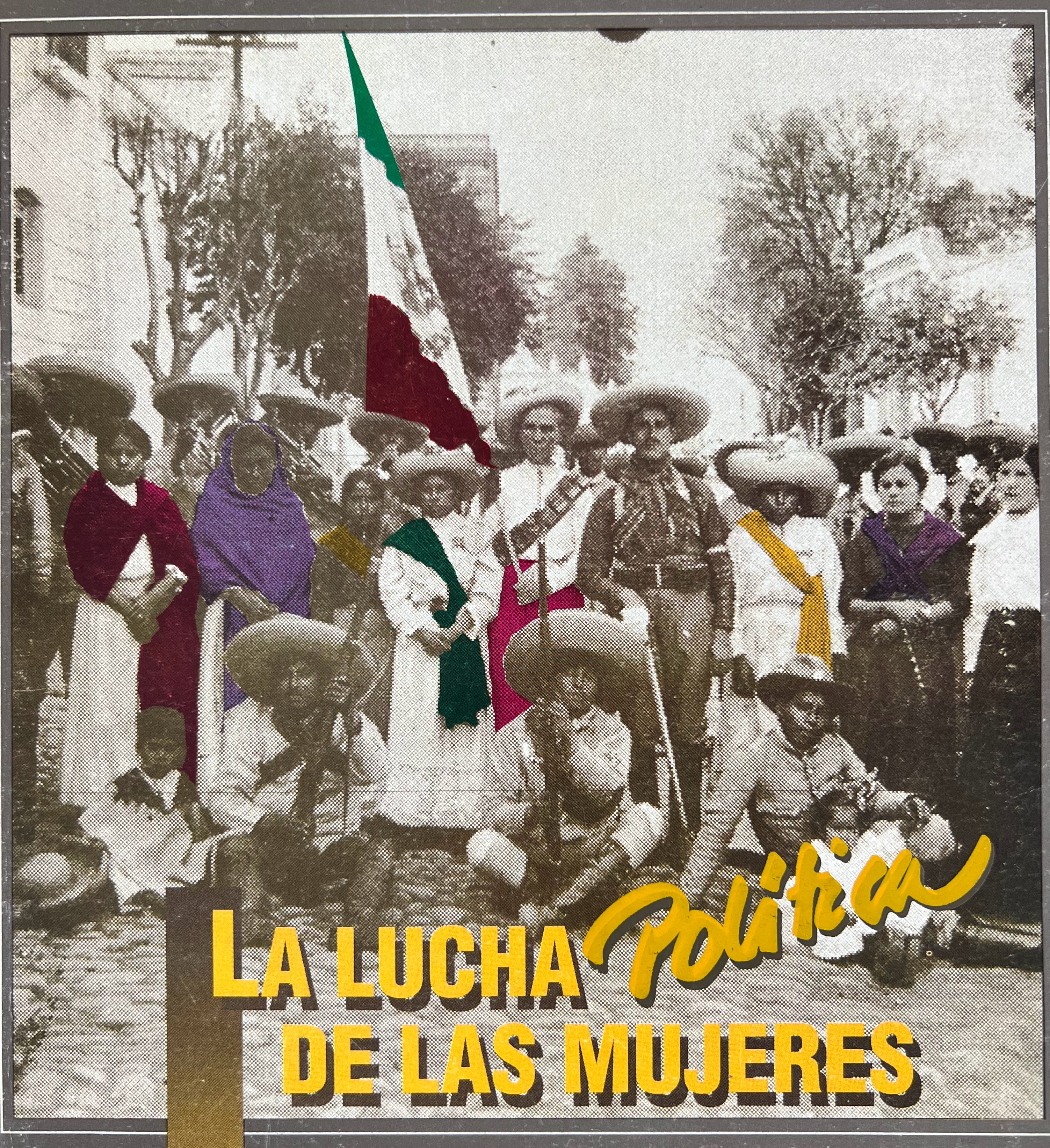
1990
Propagandistic account of the women's movement in Mexico.
Propagandistic account of the women's movement in Mexico.
La lucha política de las mujeres
Instituto de Estudios Políticos, Económicos y Sociales; Inter-American Commission of Women; Partido Revolucionario Institucional. La lucha política de las mujeres. México, D.F.: PRI, IEPES, 1990. 28 cm, 79 pp.; b/w illus. throughout, color pictorial wraps a bit rubbed with corner crease.
Highly politicized, propagandistic account of the women’s movement from the Revolution through suffrage (1952), emphasizing participation in the Revolution and achievements by individual women in government and agriculture (happy peasants!). Final brief section on post-1952 developments. No mention of the feminist struggles for additional civil and political liberties, voluntary motherhood, etc.
$90
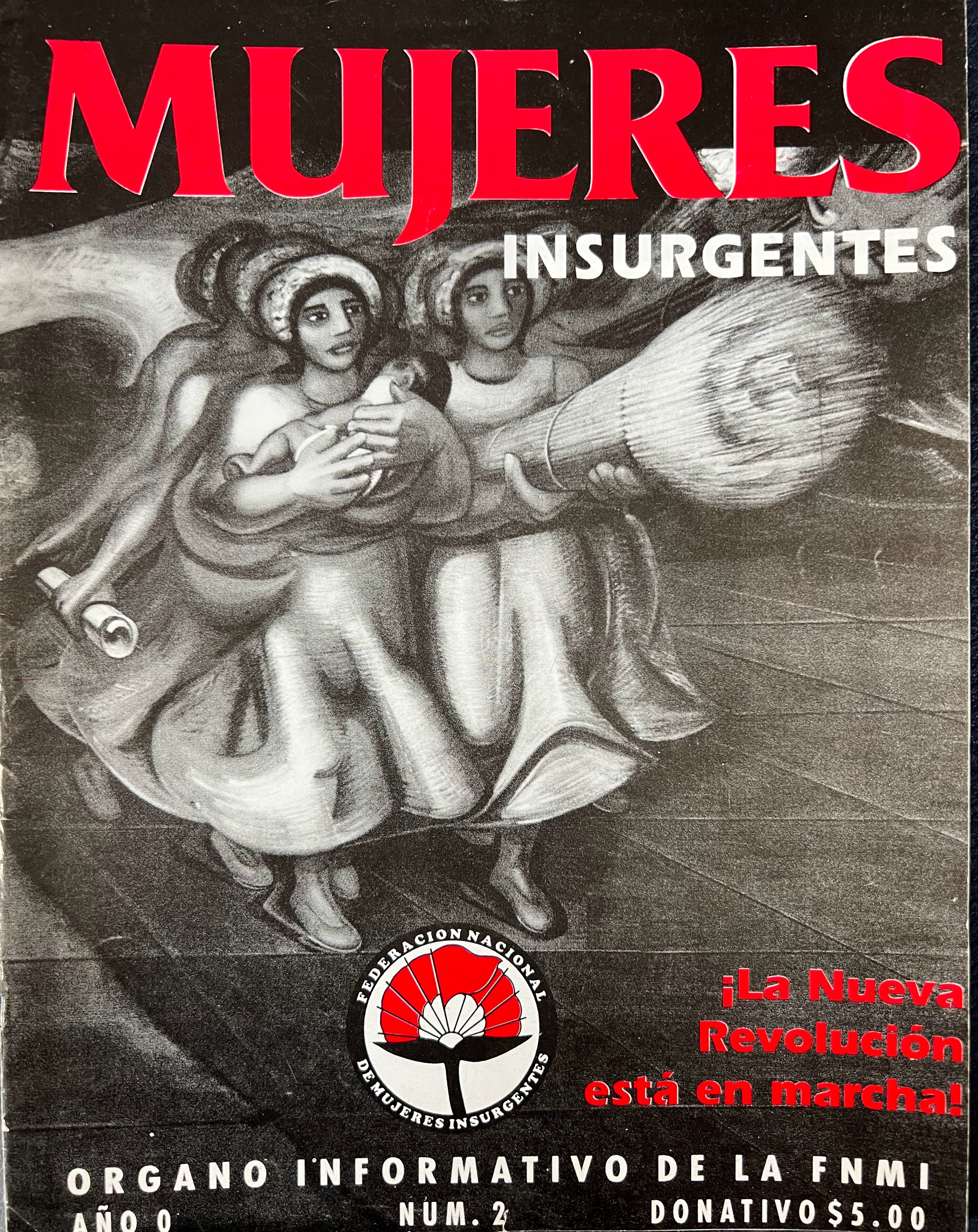
1996
(Feminism) (Mexico)
(Feminism) (Mexico)
Revista Mujeres Insurgentes
(Feminism) (Mexico) Pleites, Lidia, Ed. Revista Mujeres Insurgentes, No. 2. Mexico, D.F.: Federación Nacional de Mujeres Insurgentes, 1996. 28 cm, 15 pp.; color pictorial wraps. VG.
Curious feminist artifact of internecine Mexican political struggles in the 1990s, the short-lived magazine was allied with the controversial Partido Cardenista, which may have been a socalist-leaning front for the PRI in its electoral campaigns against the PRD.
Not recorded in OCLC.
$70
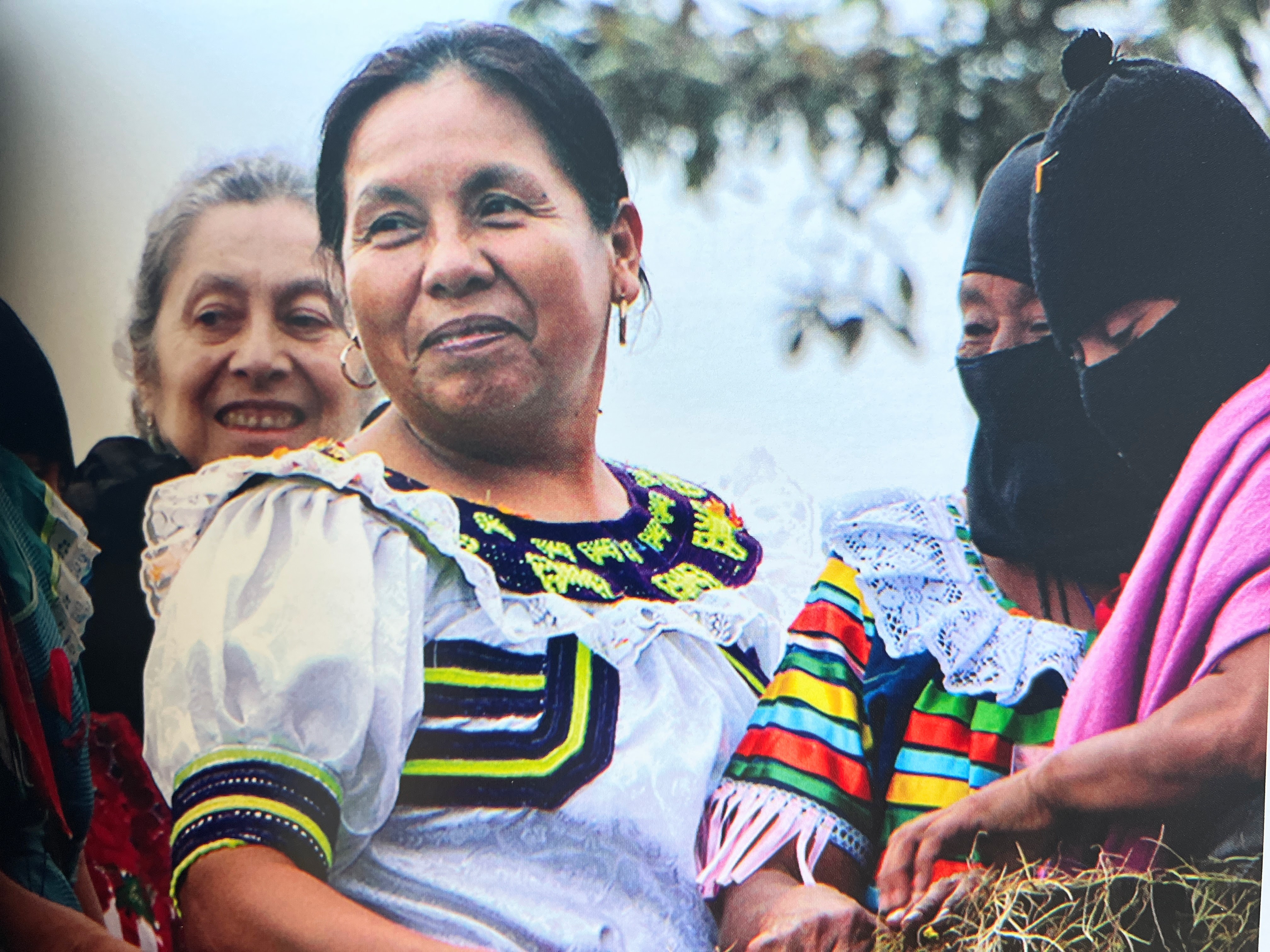
Gloria Muñoz Ramírez 2018
(Indigenous Women) (Indigenous Political Organizations) (Horizontalidad)
(Indigenous Women) (Indigenous Political Organizations) (Horizontalidad)
Flores en el desierto: Mujeres del Concejo Indígena de Gobierno
Muñoz Ramírez, Gloria. Flores en el desierto: Mujeres del Concejo Indígena de Gobierno. Mexico: Rosa-Luxemburg-Stiftung; Desinforémonos, 2018. Square, 22 cm, 175 pp.; profusely illustrated with color reproductions of photographs; color pictorial boards, extremities lightly rubbed, VG.
Interviews and photographs of ten women members of the Indigenous Government Council (Concejo Indígena de Gobierno [CIG]), a political body created in 2016 by the National Indigenous Congress (Council Congreso Nacional Indígena [CNI]) to be a collective indigenous voice united with the EZLN behind a single candidate for the Mexican presidency during the 2018 elections. The chosen candidate, María de Jesús Patricio Martínez, is a Nahua doctor, the CIG spokesperson, and the final interviewee in the present volume.
The book presents the striking stories of these women resistance leaders as they fight racism and the colonial legacy of dispossession to defend their history, language, natural resources, and sacred lands and ceremonies from “la hidra capitalista [que] avanza y avoraza todo lo que está a su alcance.”
The CIG/CNI’s governing principles are anticapitalist, autonomous, and horizontal: “Servir y no servirse, construir y no destruir, obedecer y no mandar, proponer y no imponer, convencer y no vencer, bajar y no subir, representar y no suplantar.”
A book produced intentionally in the public domain, unrecorded in OCLC either in physical or digital formats.
SOLD
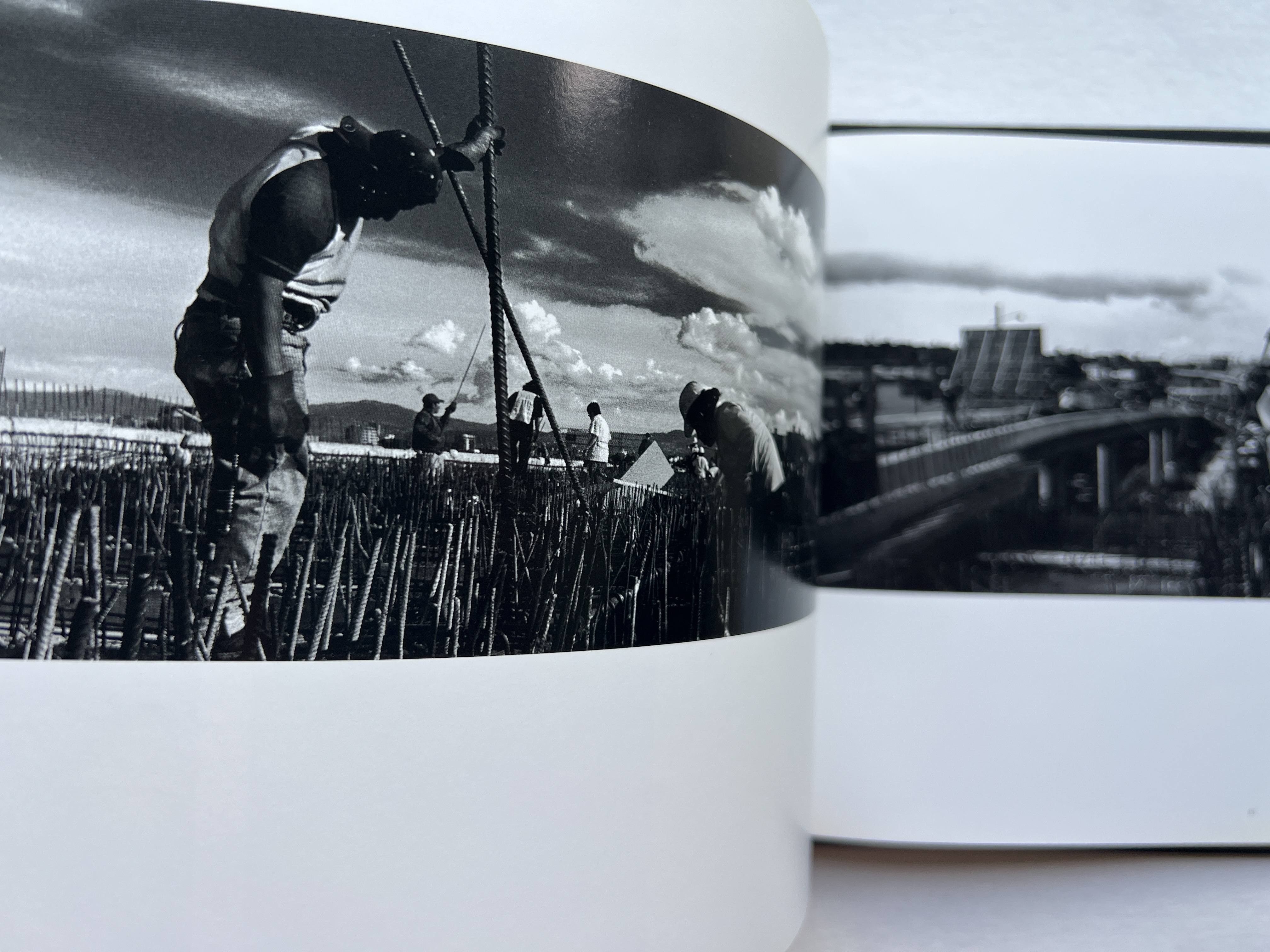
Ana Lorena Ochoa 2010
(Photobook) (Urban Planning)
(Photobook) (Urban Planning)
Ciudad Concreto
Lorena Ochoa, Ana and Elena Poniatowska, Intro. Ciudad Concreto. México, D.F.: Cresce Consultores, 2010. Oblong 28 cm, 135 pp.; 29 pp. bilingual front matter and introductory text, followed by 101 pp. reproducing Lorena Ochoa’s photographs (most sheets printed recto and verso); in blind stamped cloth, title to front board and spine, one photographic print trimmed and tipped-in to front cover, cloth a bit rubbed, v minor scratches to front photo visible in raking light. One of 330 copies with a signed photograph (digital print) in corner mounts inside the front board, numbered and signed verso. VG+
Lorena Ochoa’s photobook documents the mostly indigenous construction workers who built the “Segundo Piso” of the periférico, Mexico City’s massive new ring road. From 2004-2005 she photographed their dangerous labor on the road’s famous second level and the precarious living circumstances they inhabited nearby. Poniatowska describes her as the “first and perhaps the only woman … to climb up one of the gigantic towers.”
The photographs are intended to humanize a massive urban infrastructure project and understand its legacy in the lives of the people who built it. Following examples like Jorge Fon’s renowned film Los albañiles (1976), Lorena Ochoa unveils both invisible labor and invisible people while also providing a view on the changing landscape of the ever-expanding city and a perhaps unintentional consideration of masculinity.
No copies located in North American libraries.
(HOLD)
